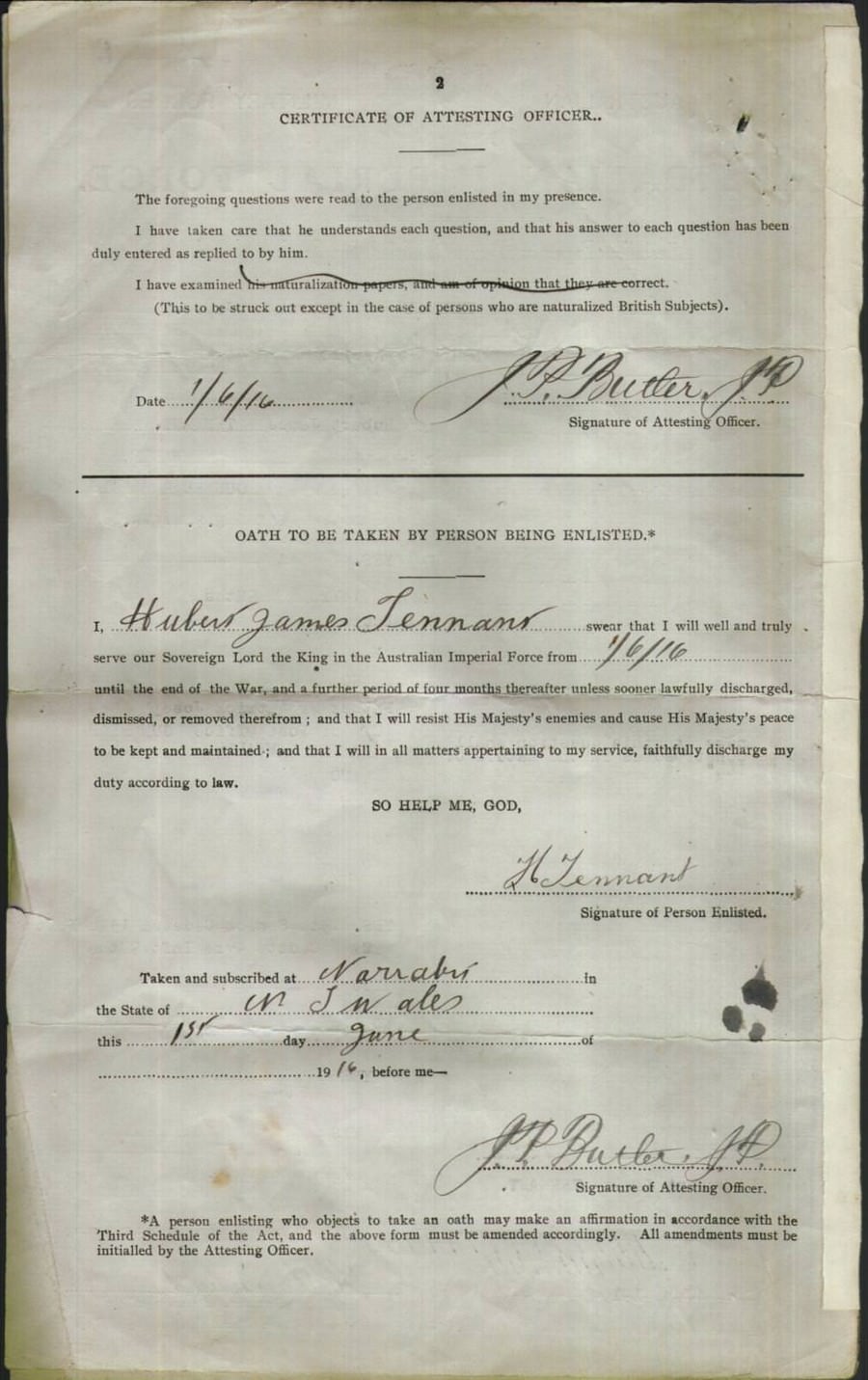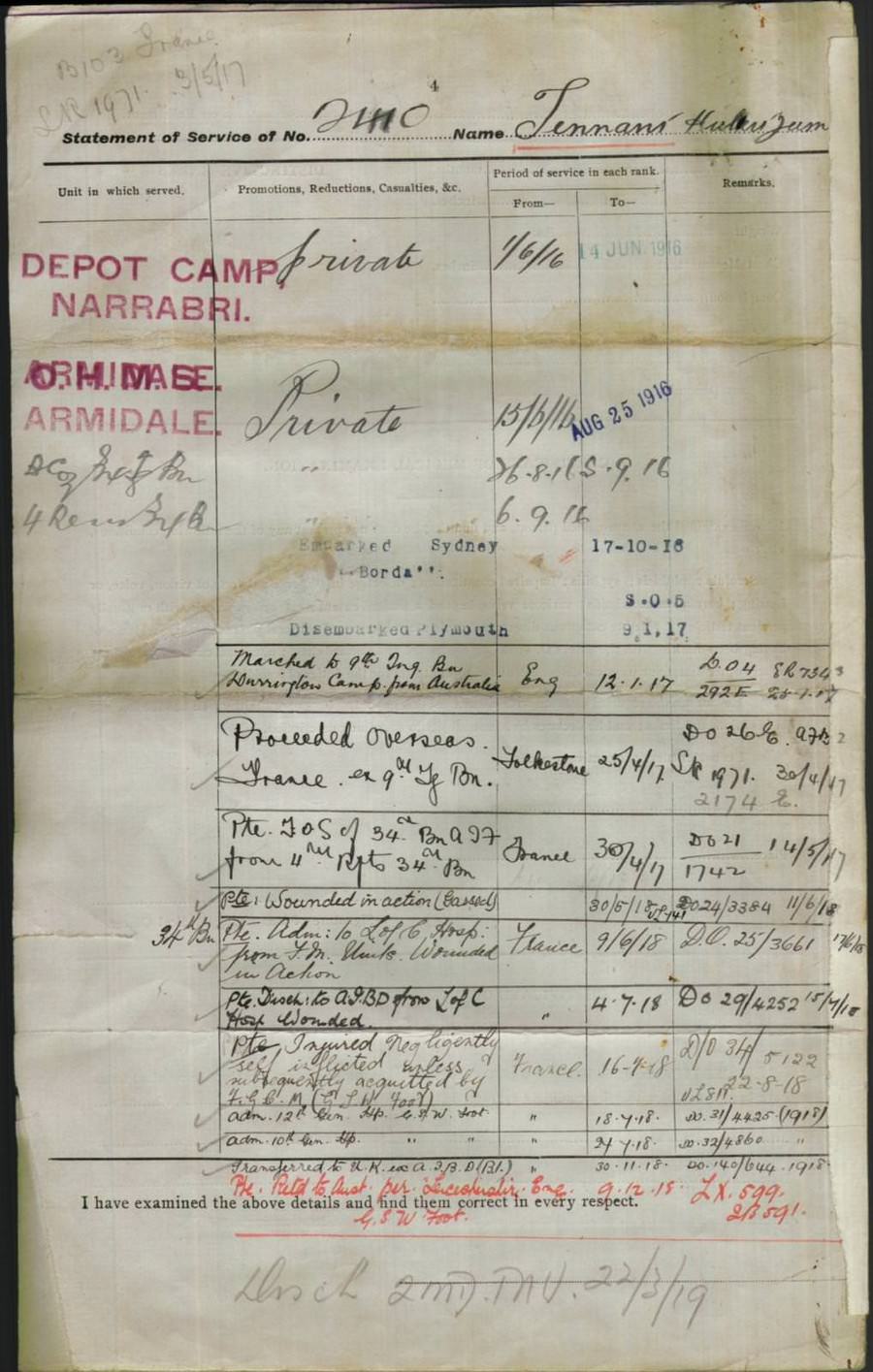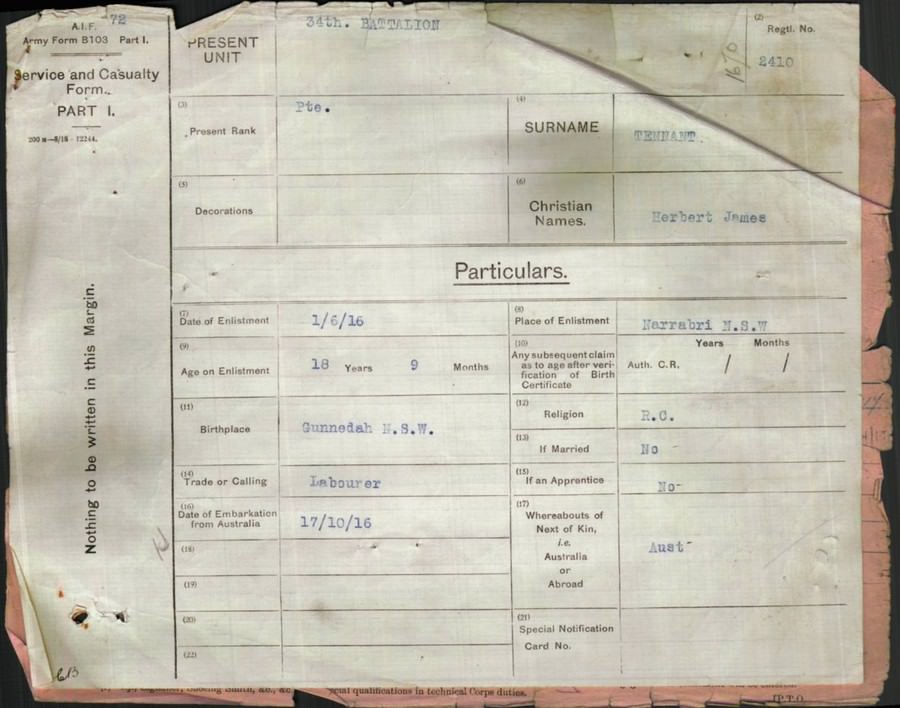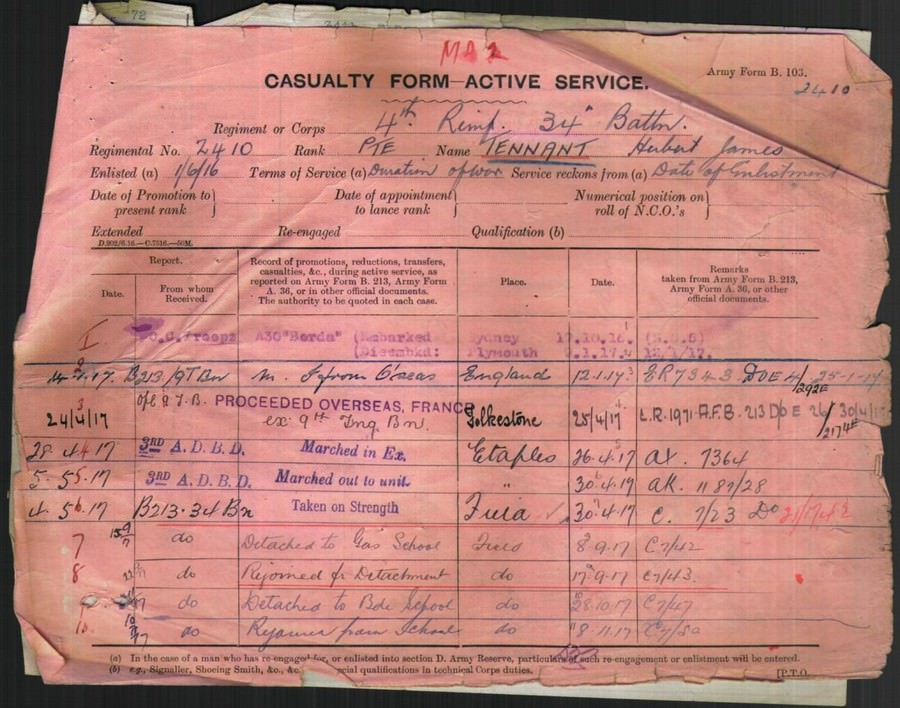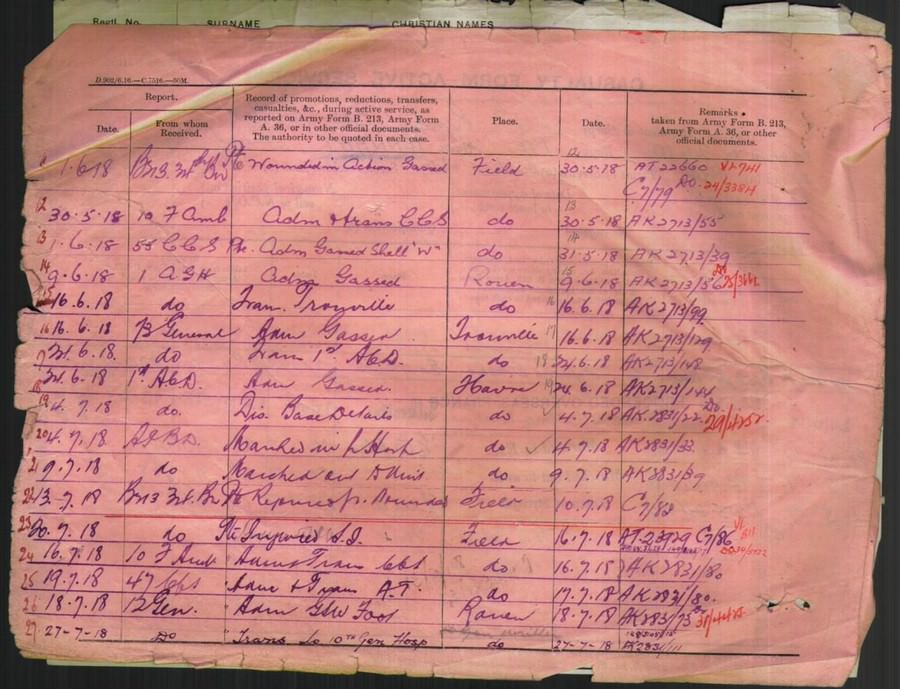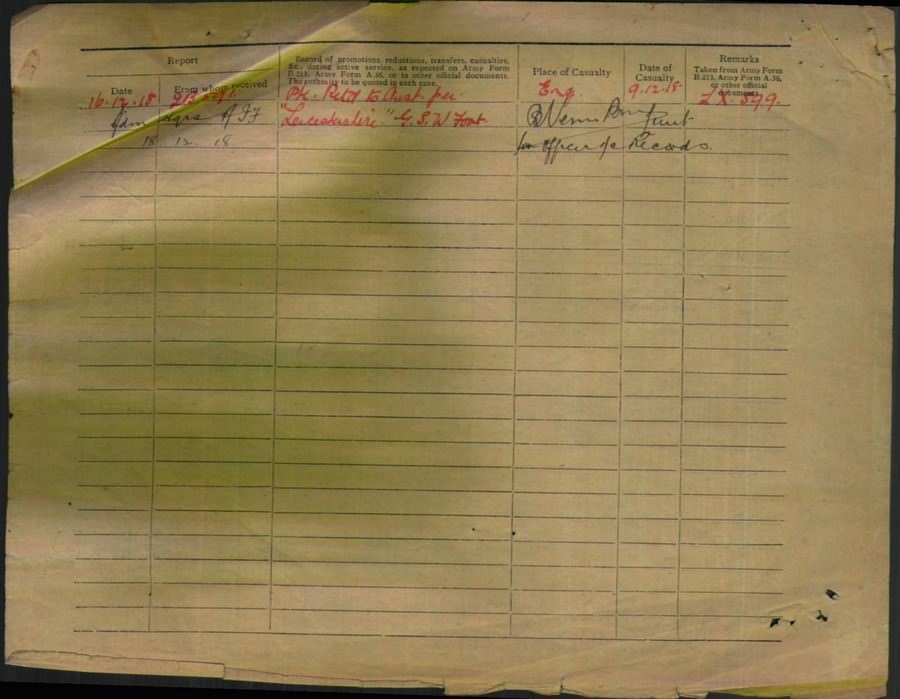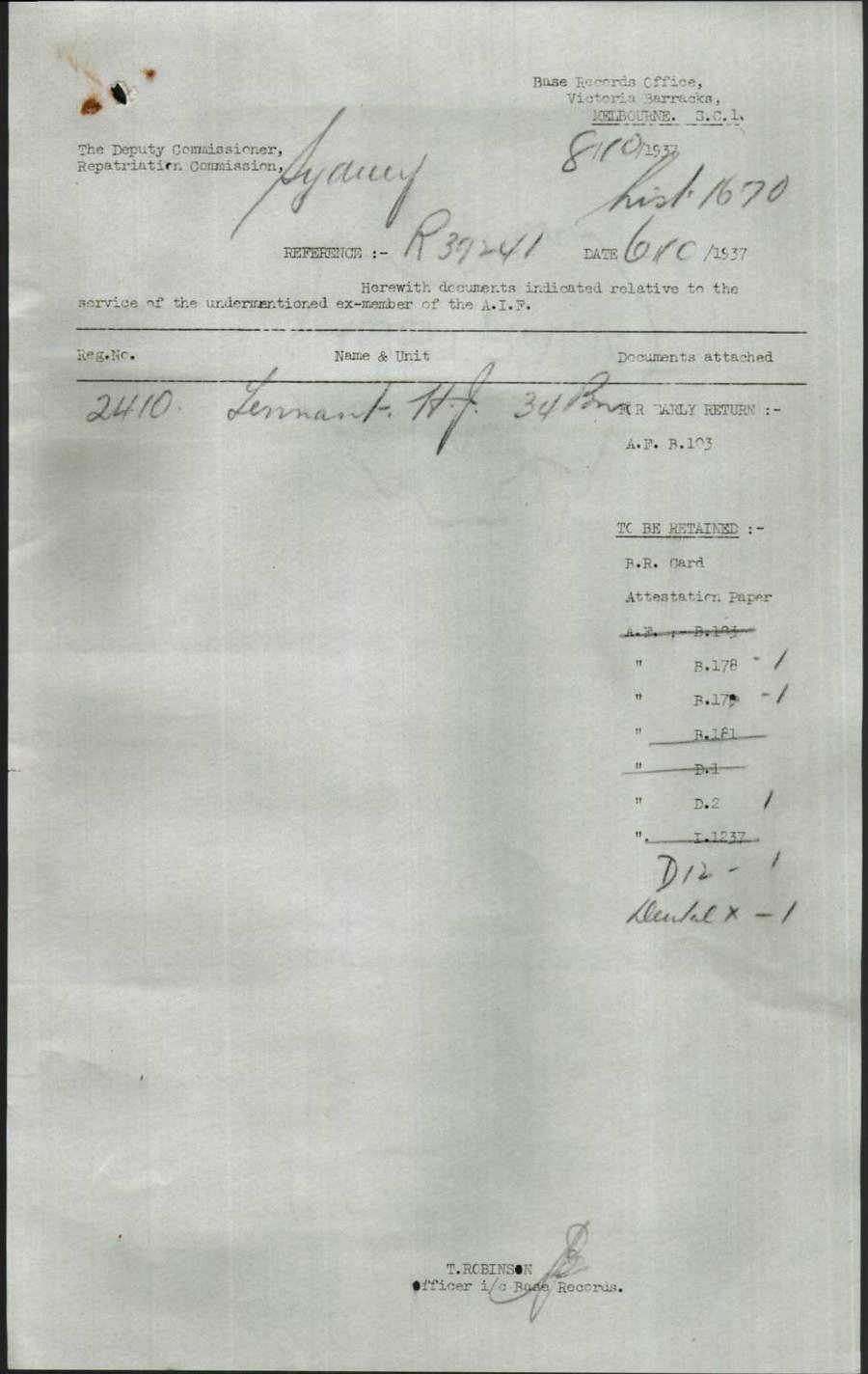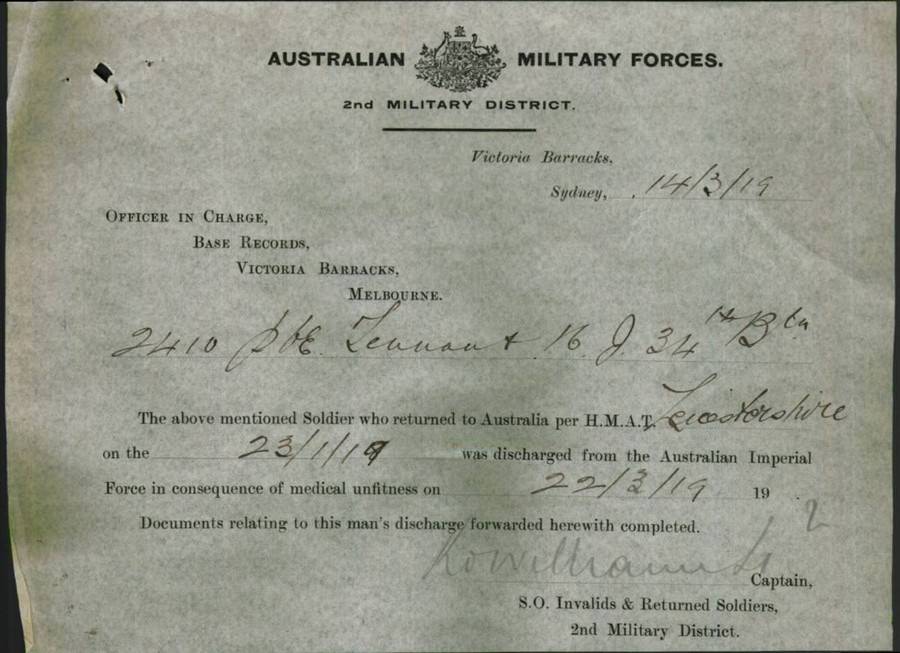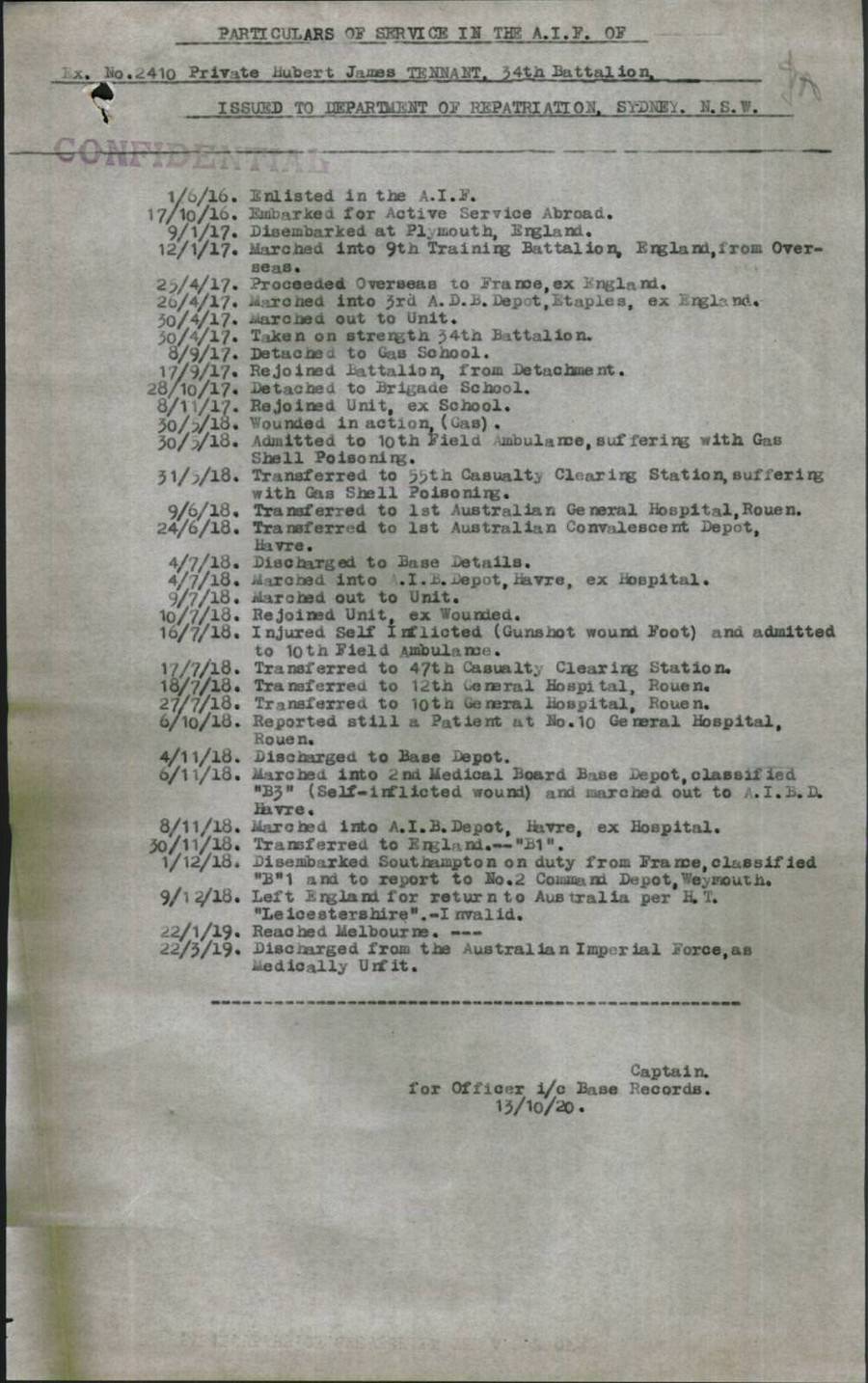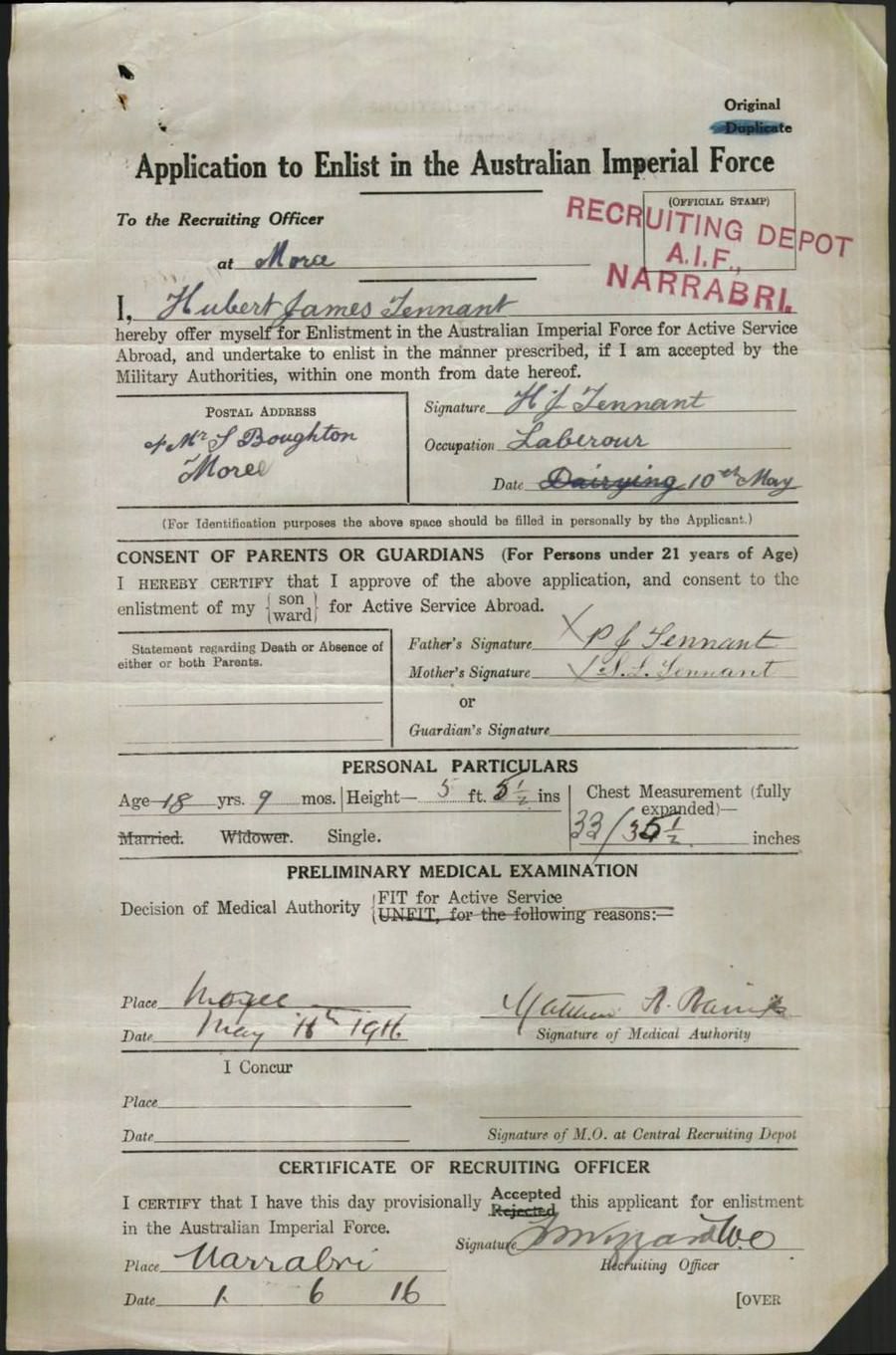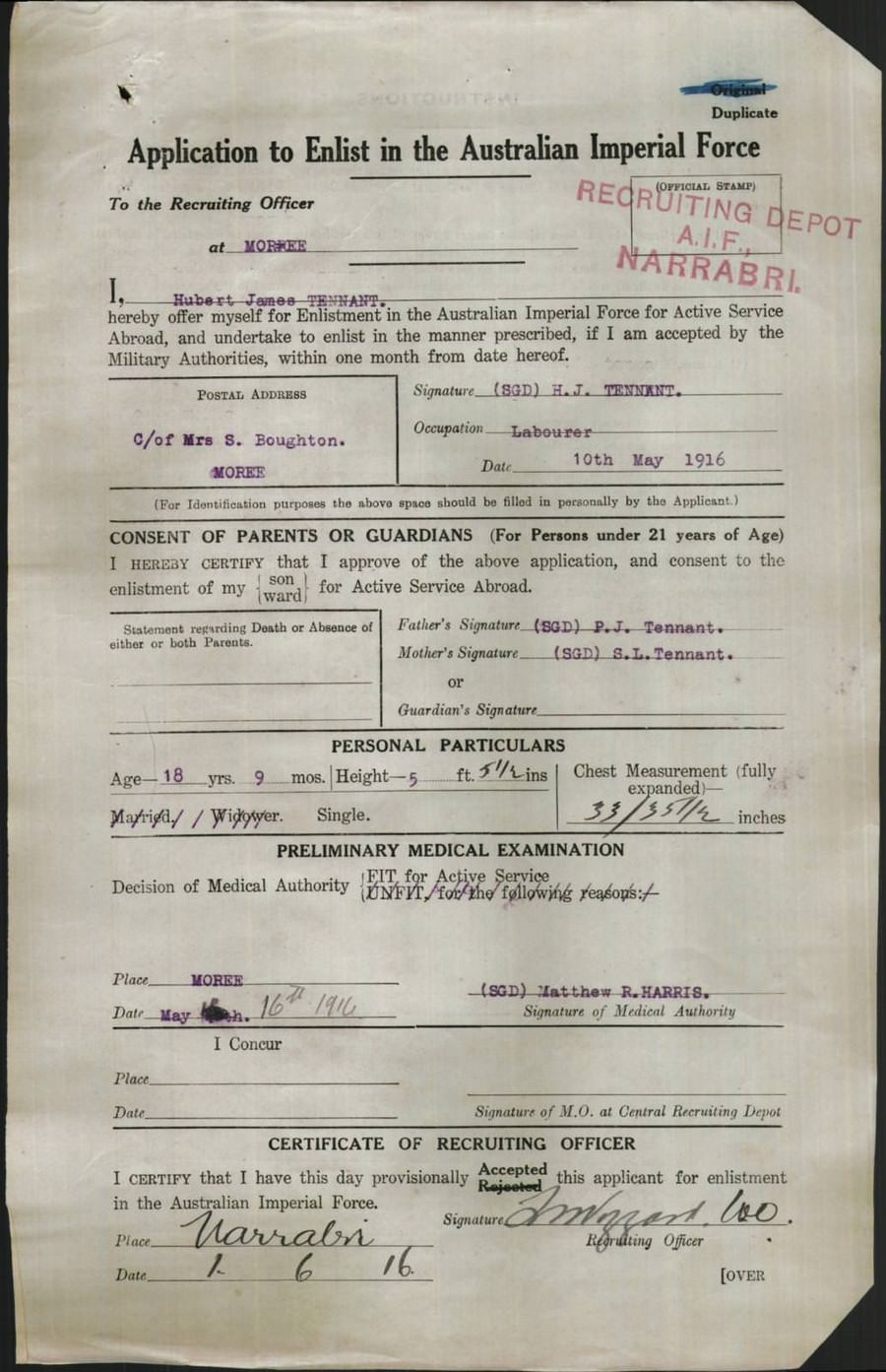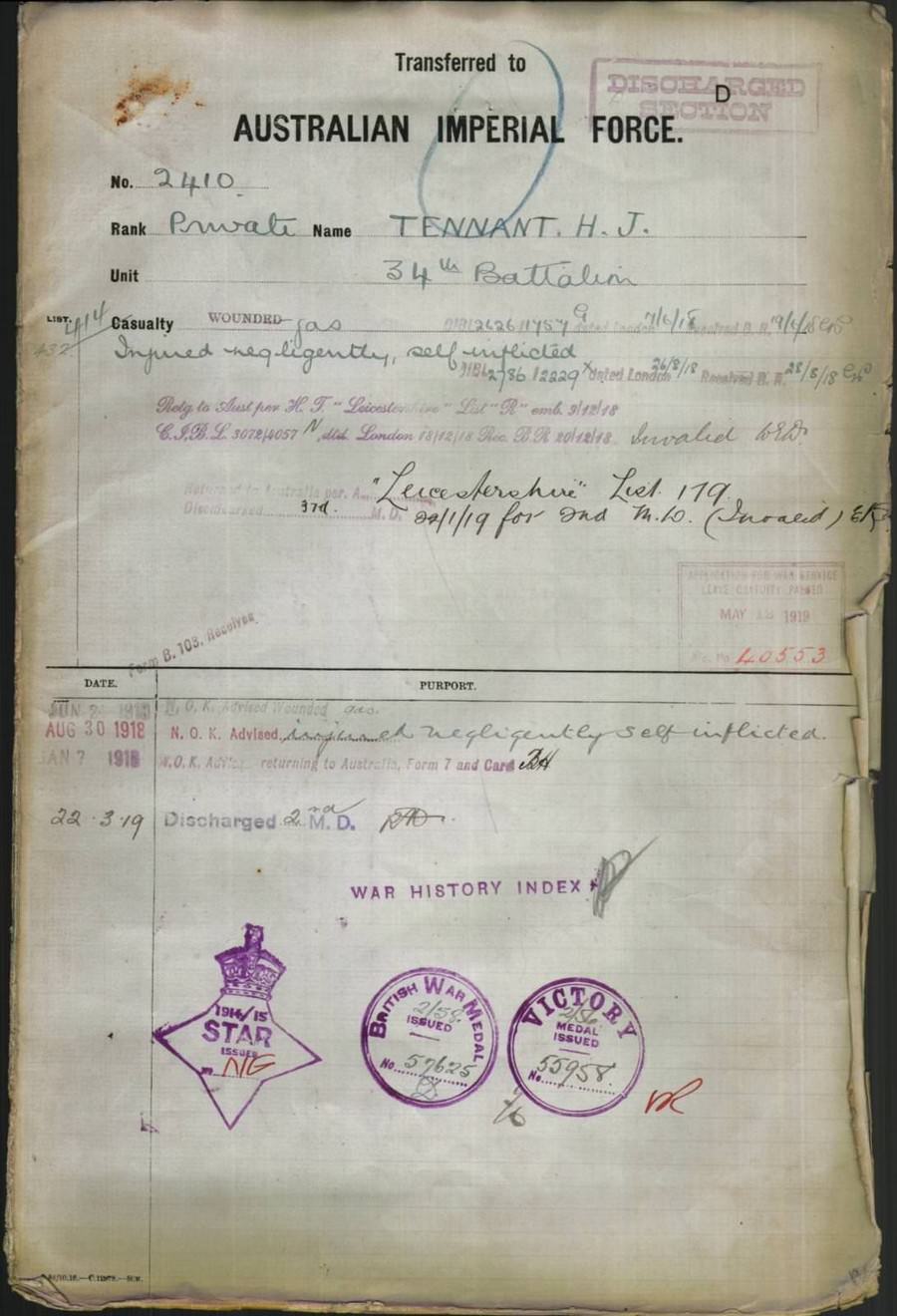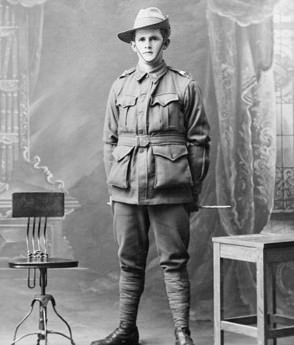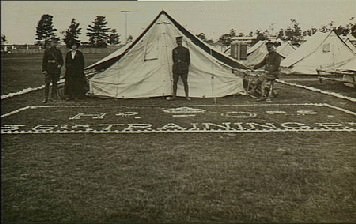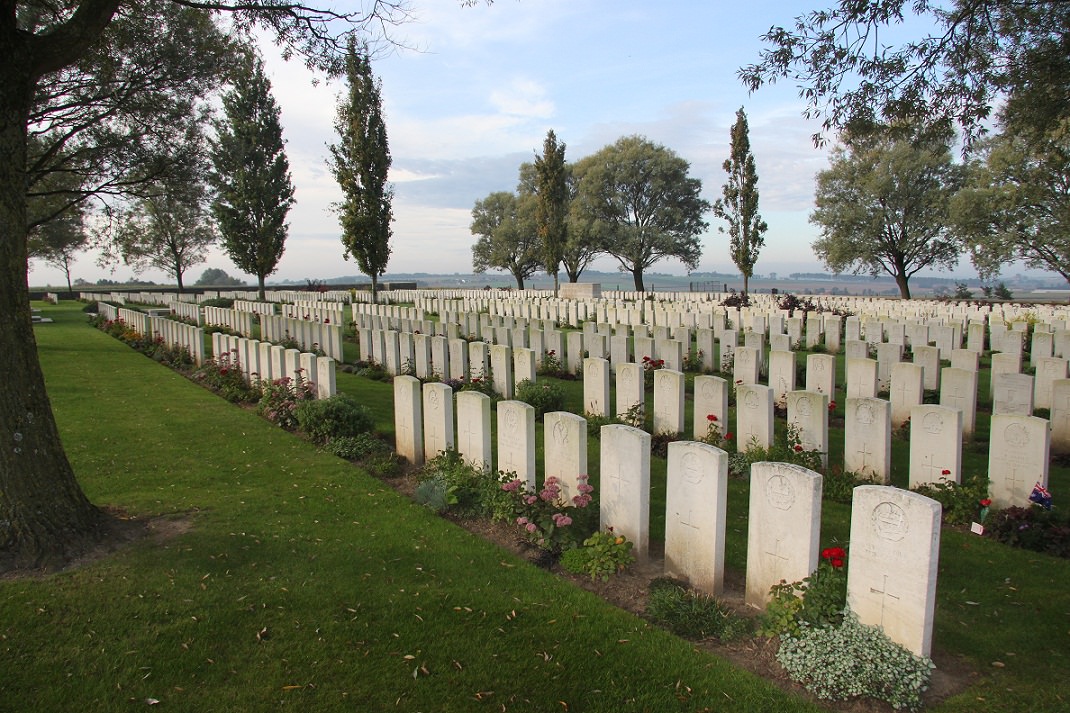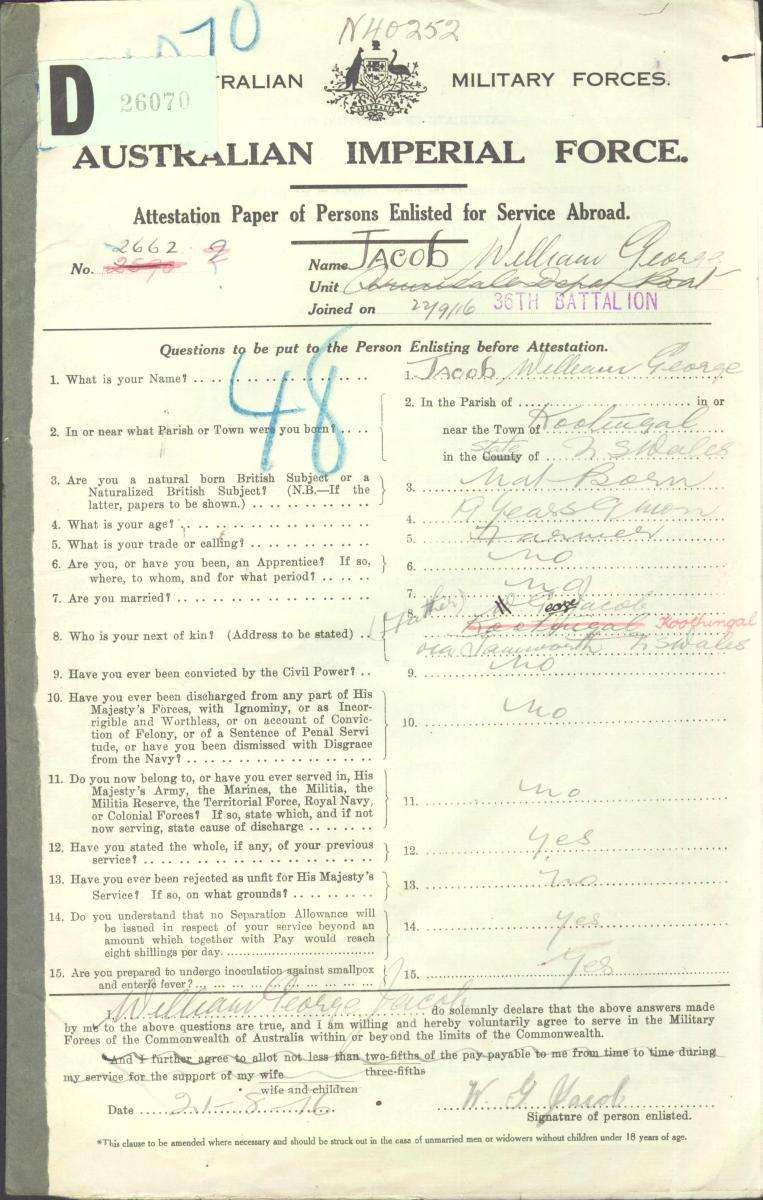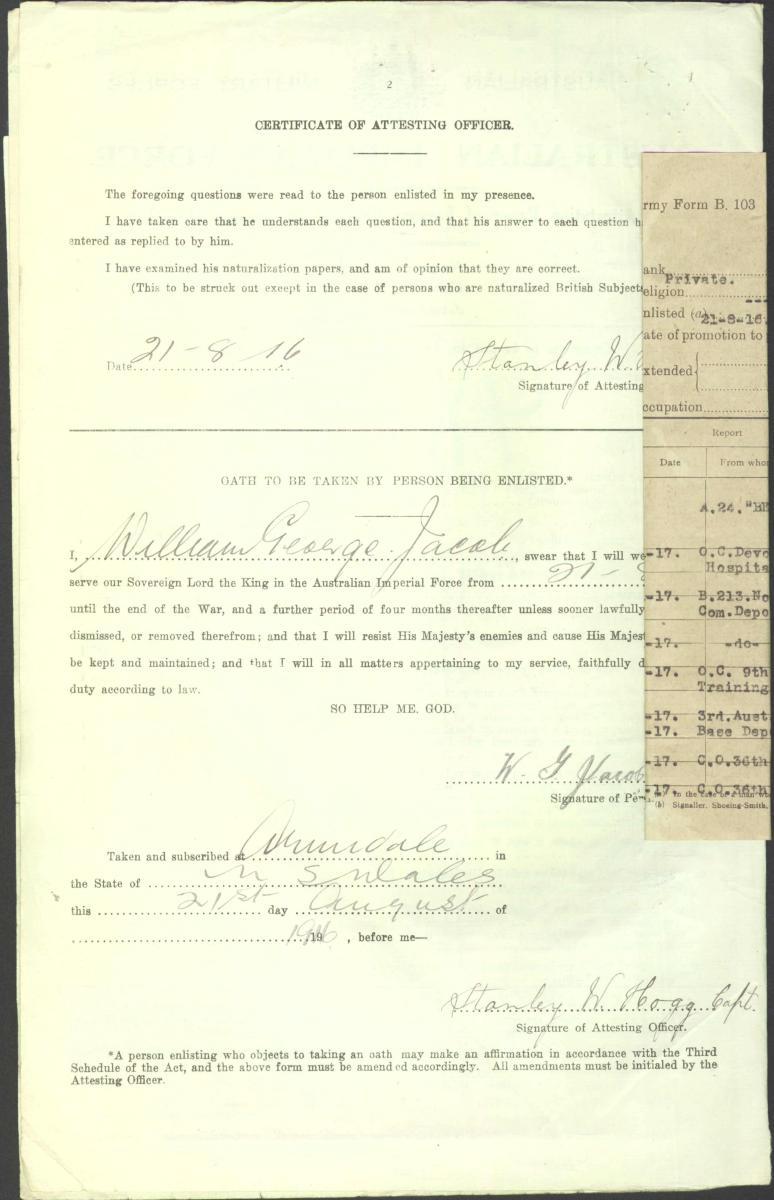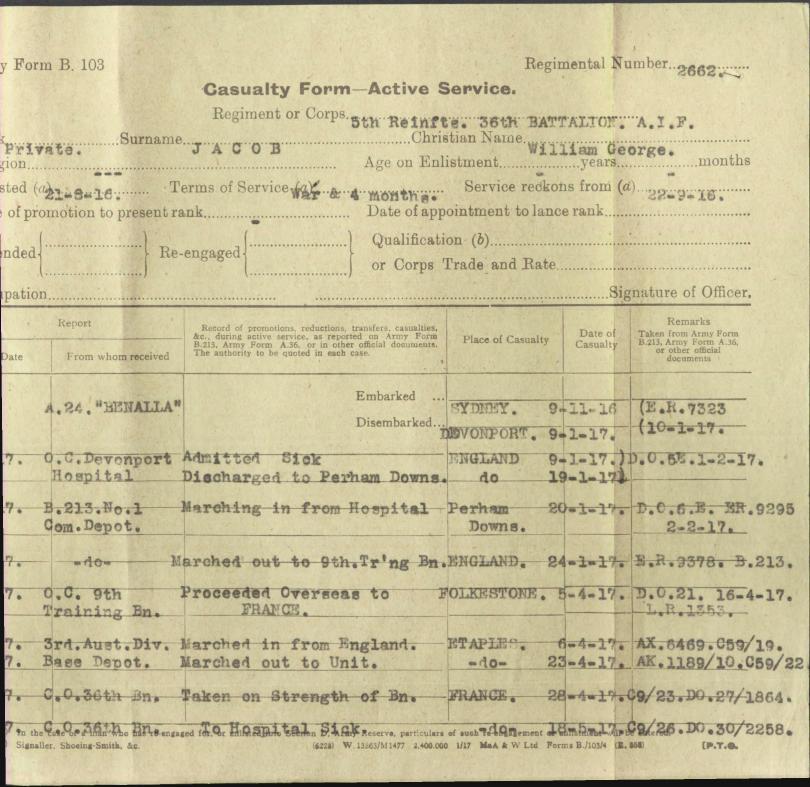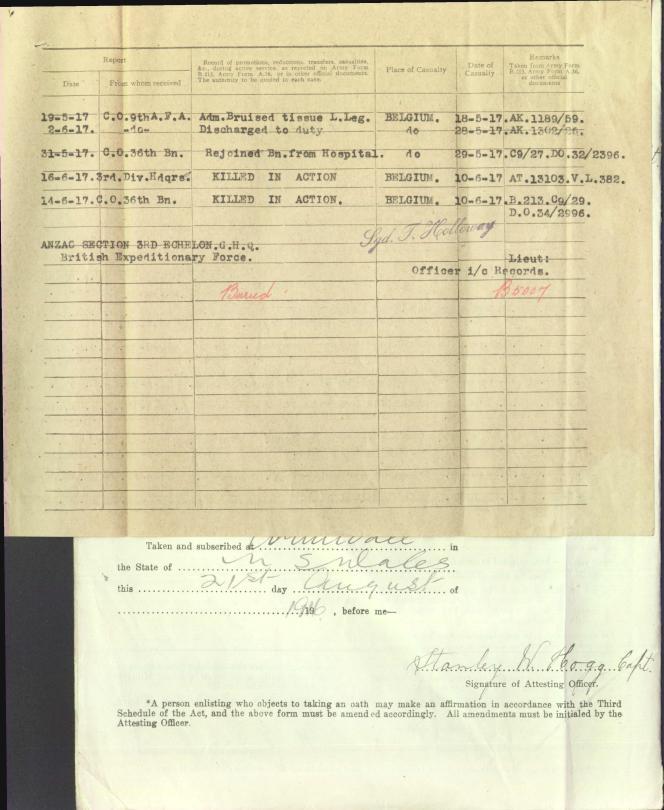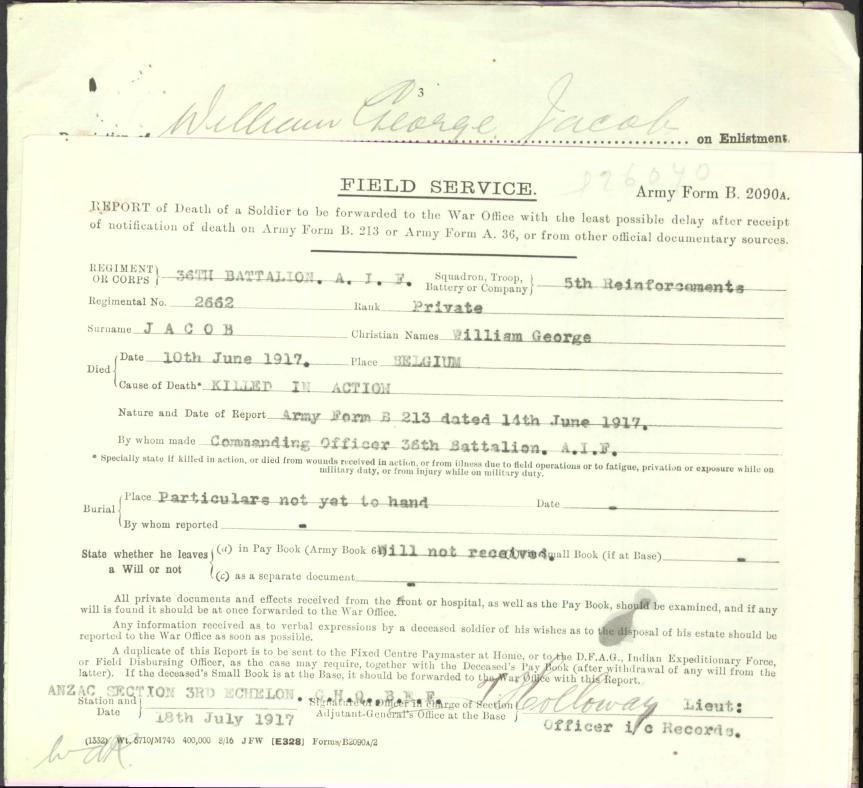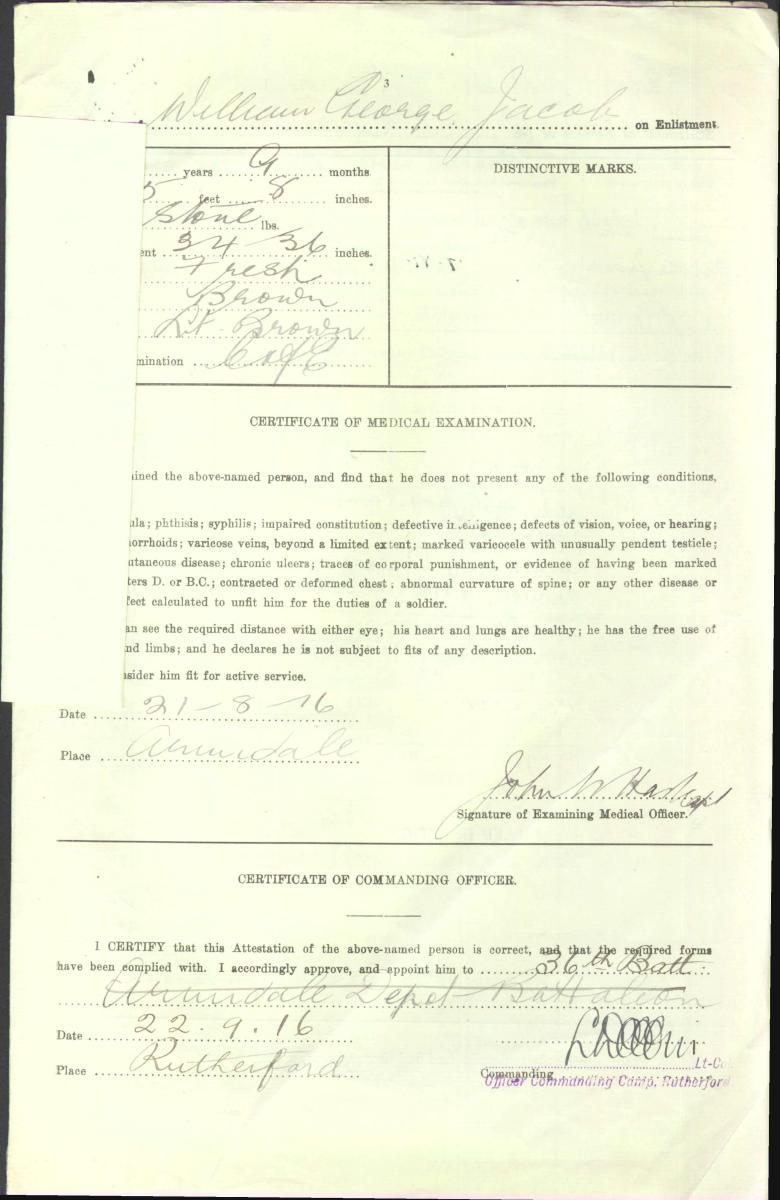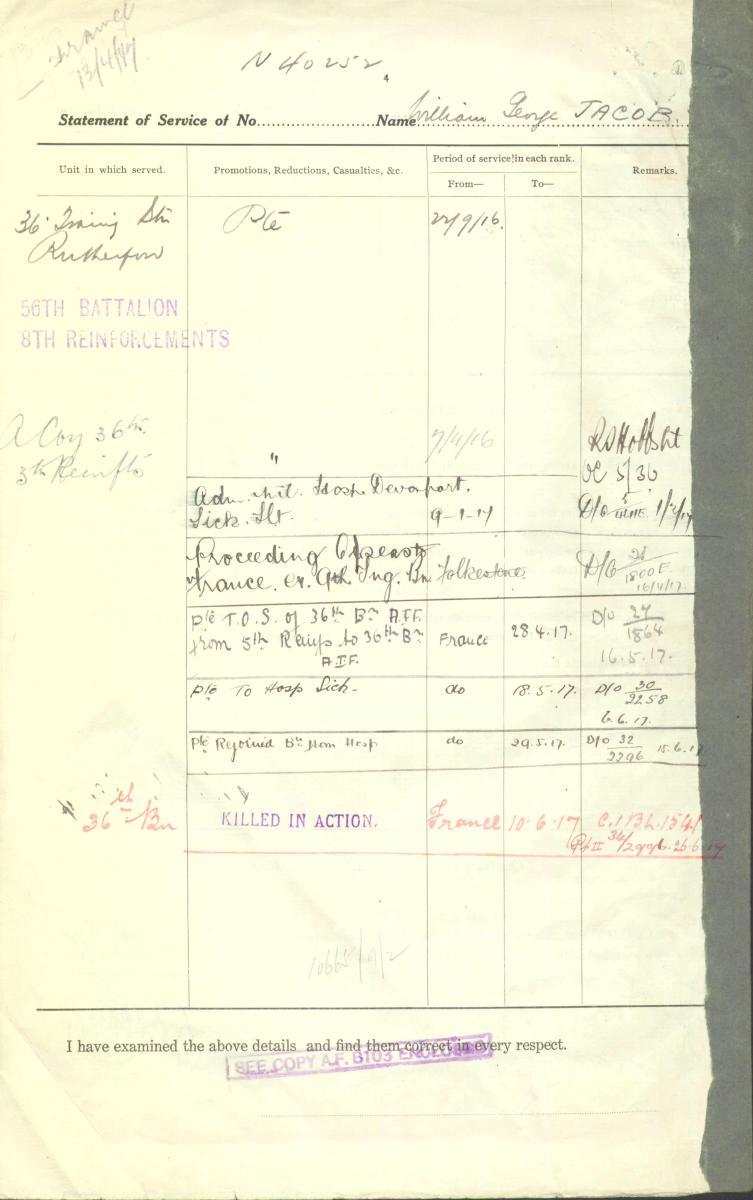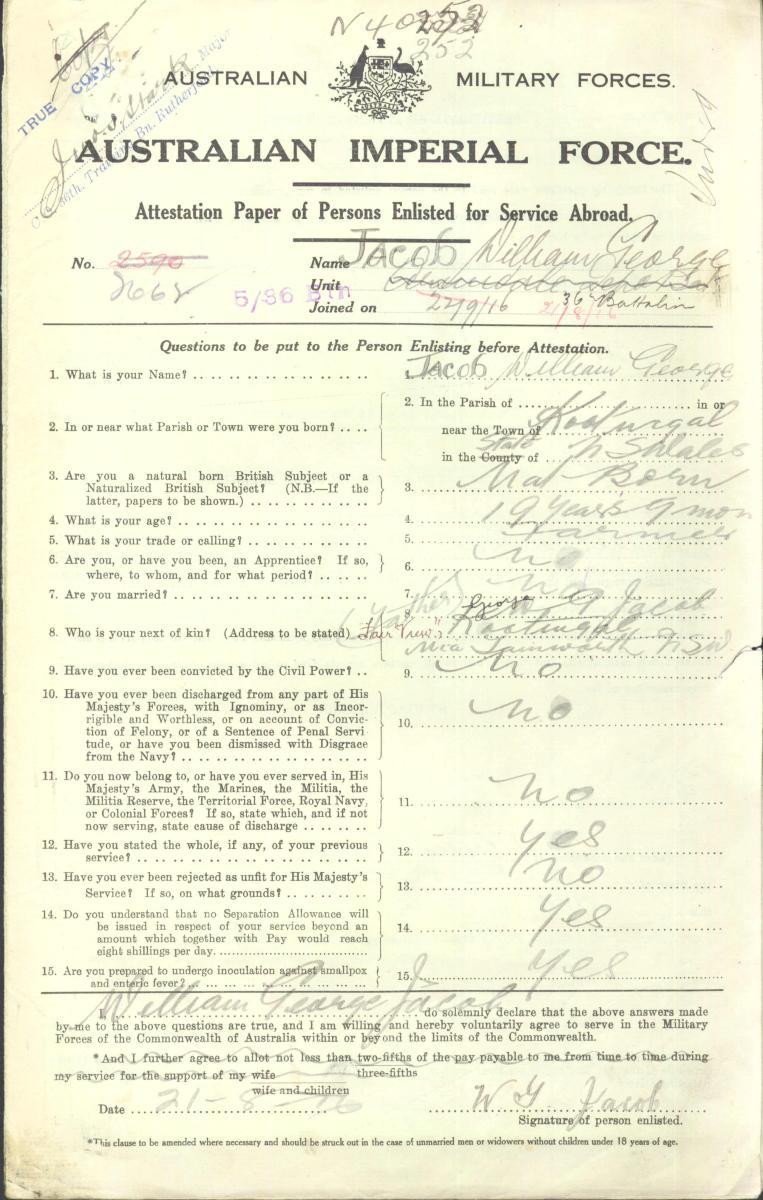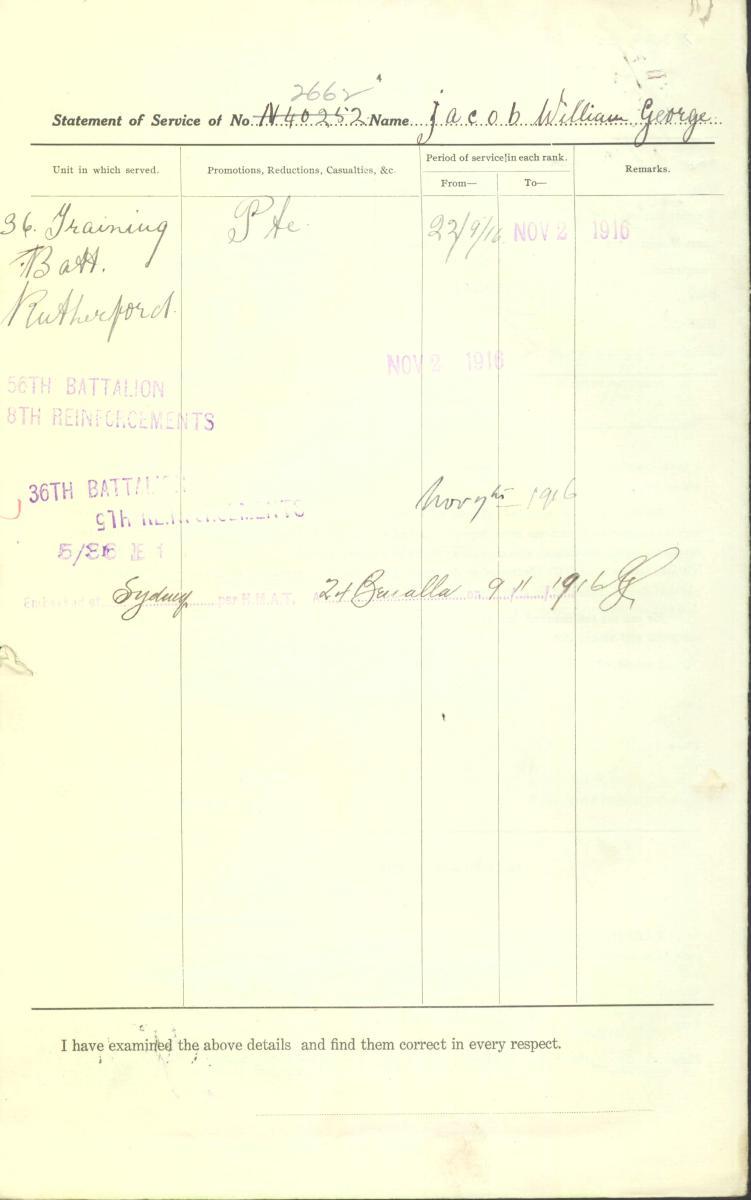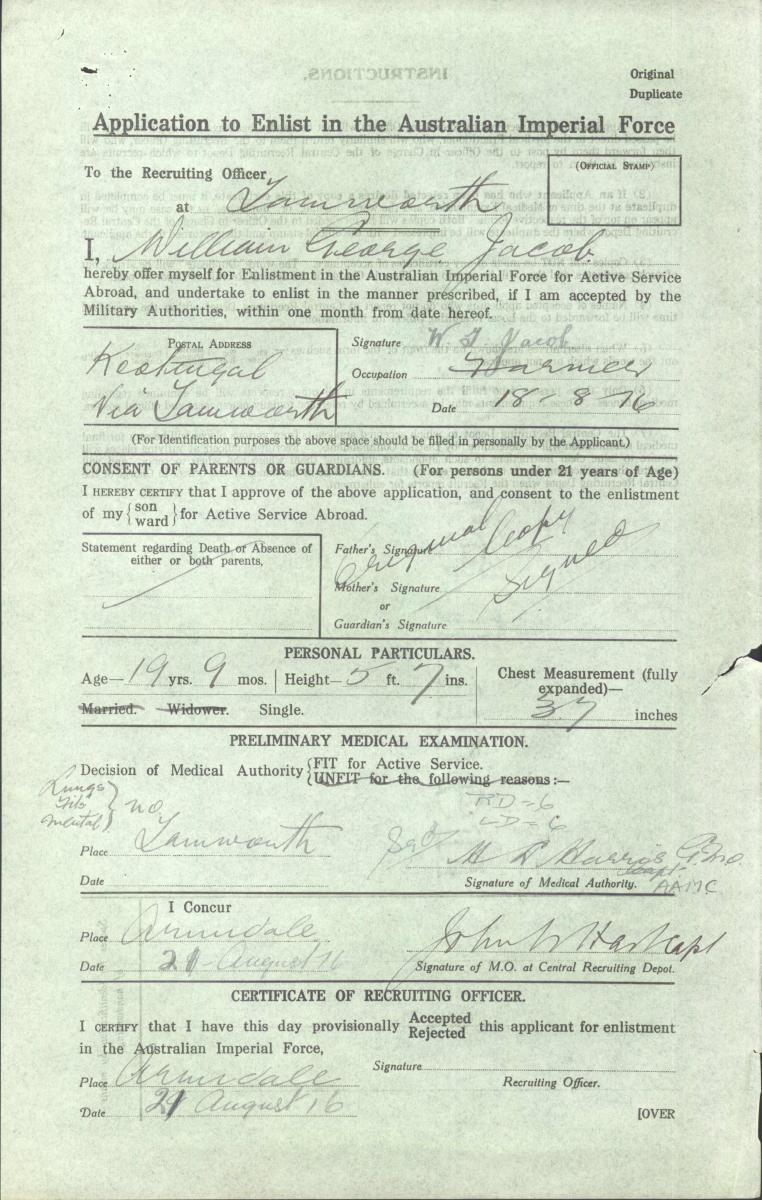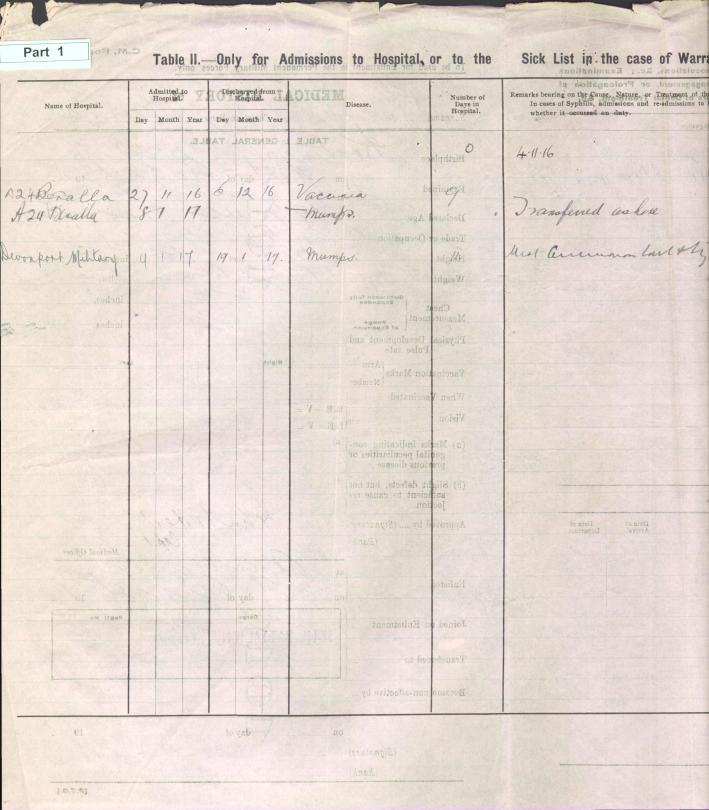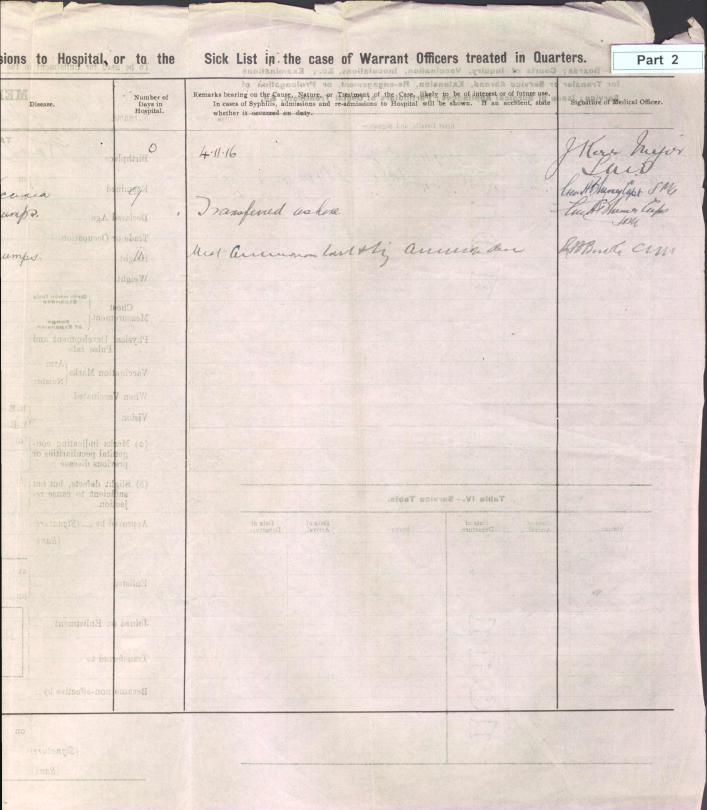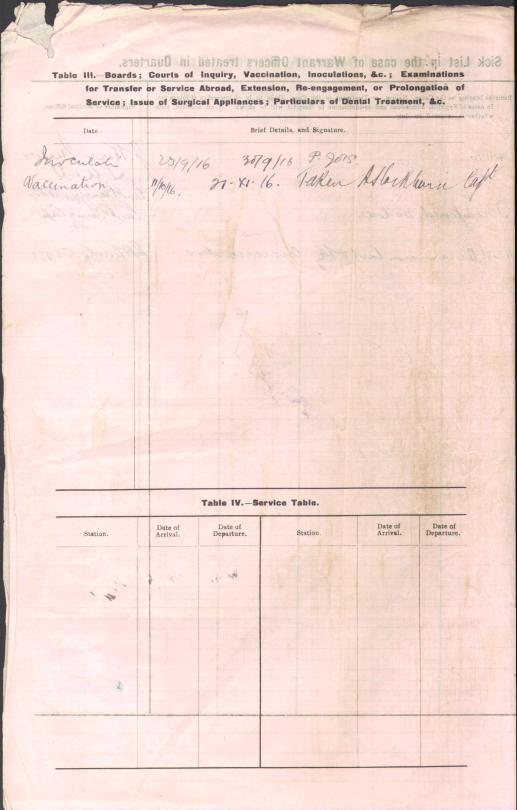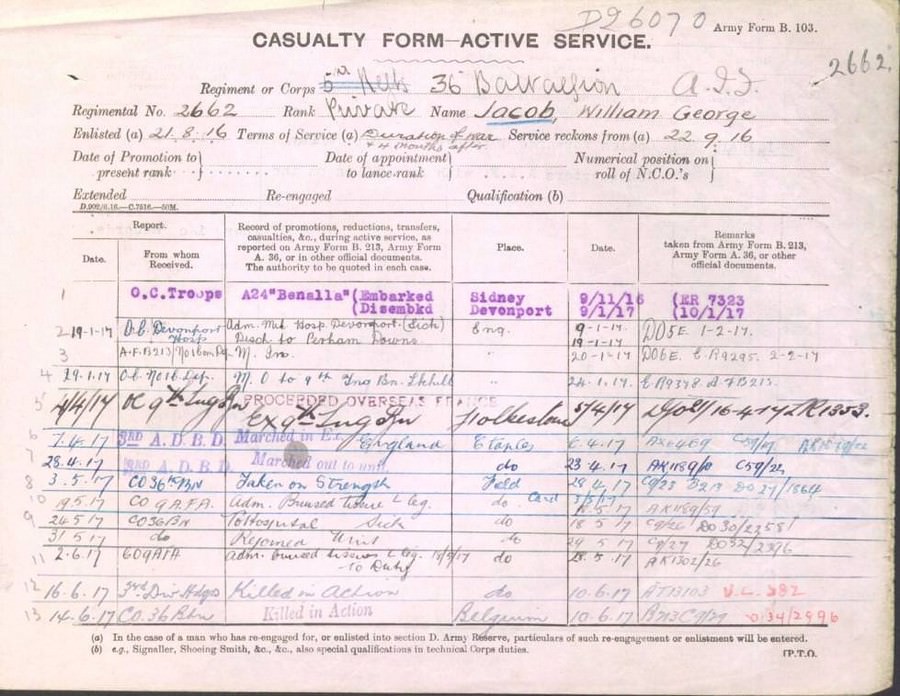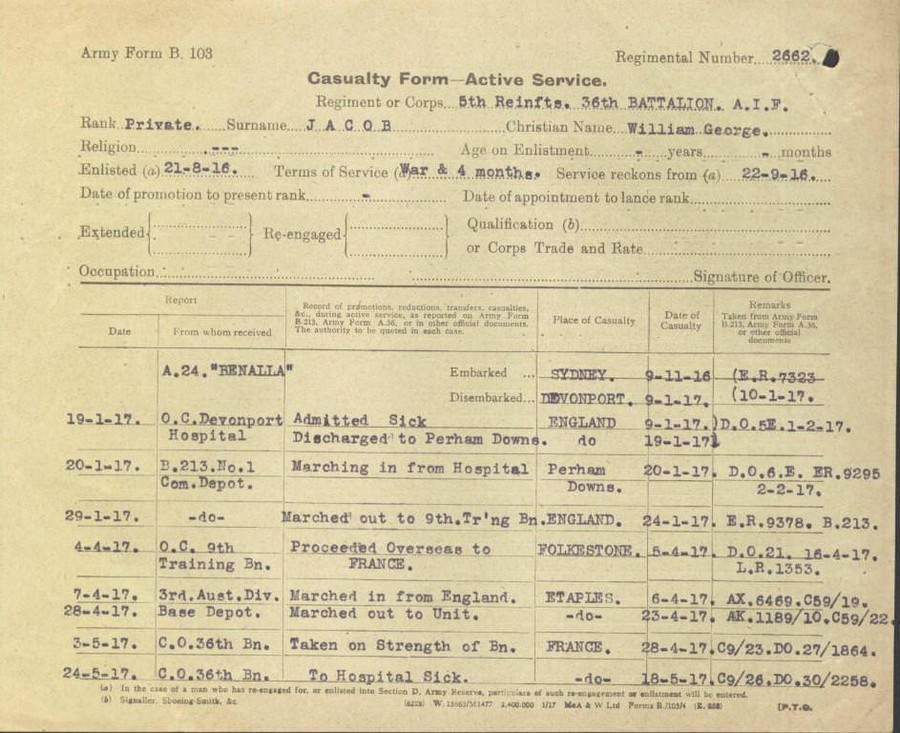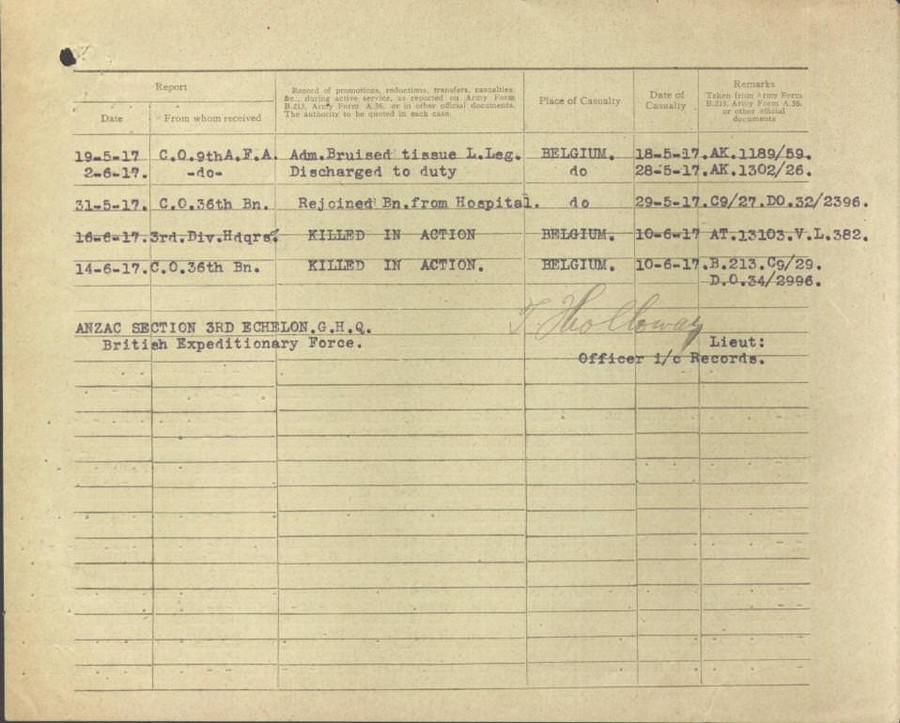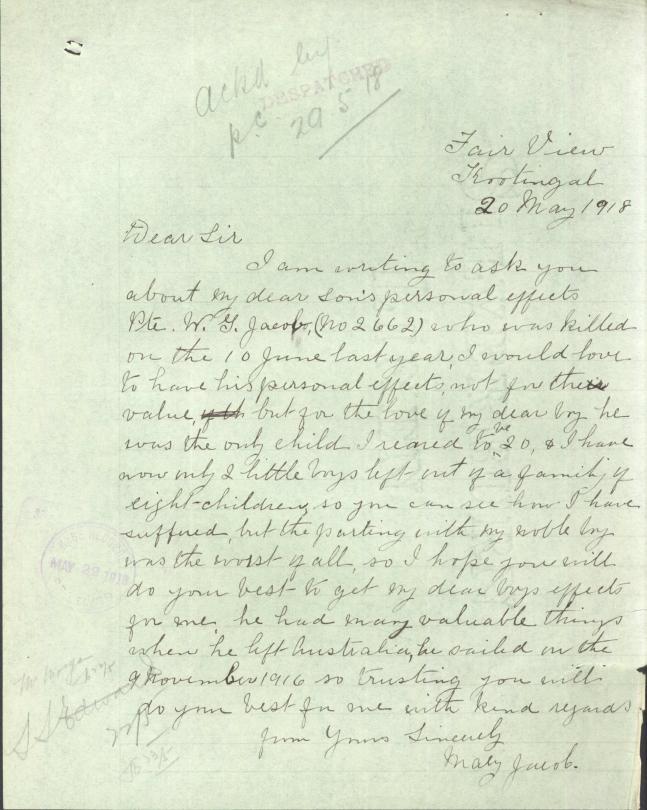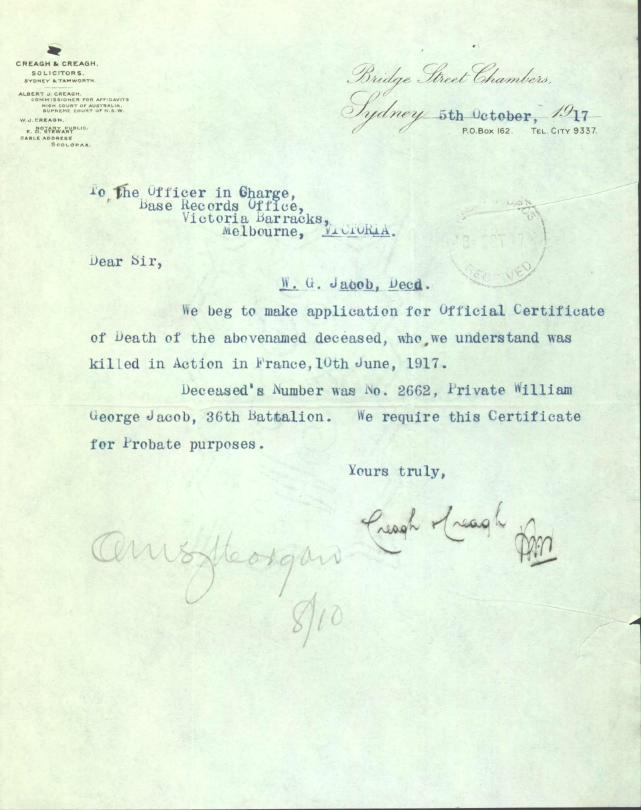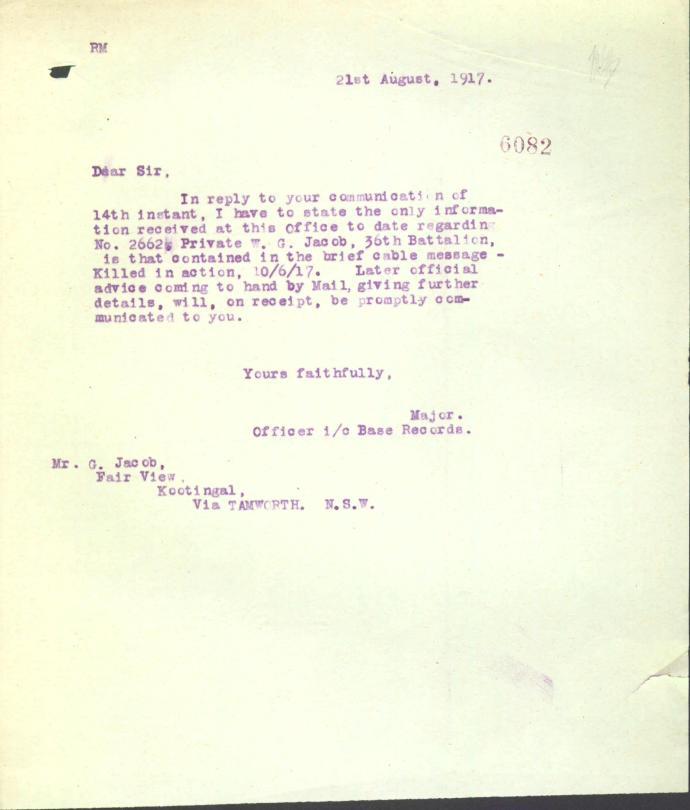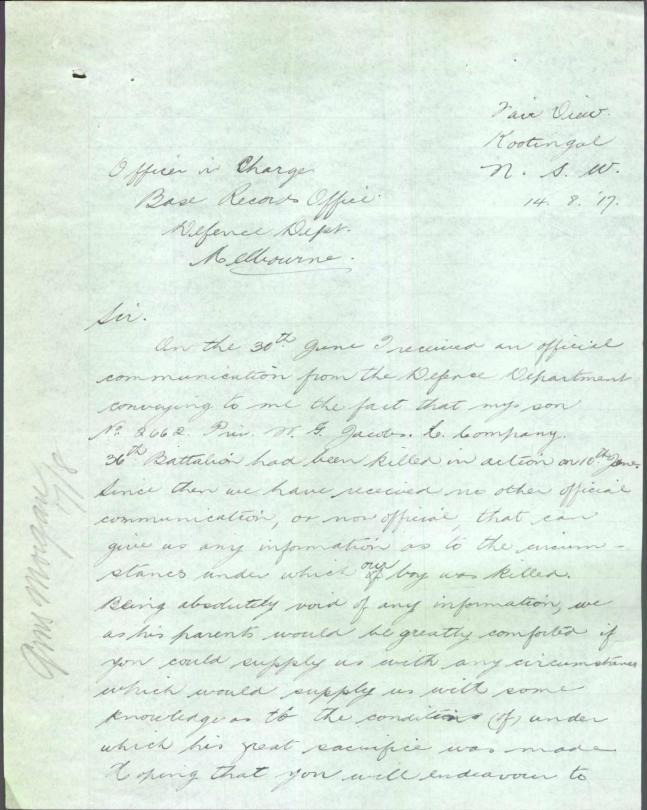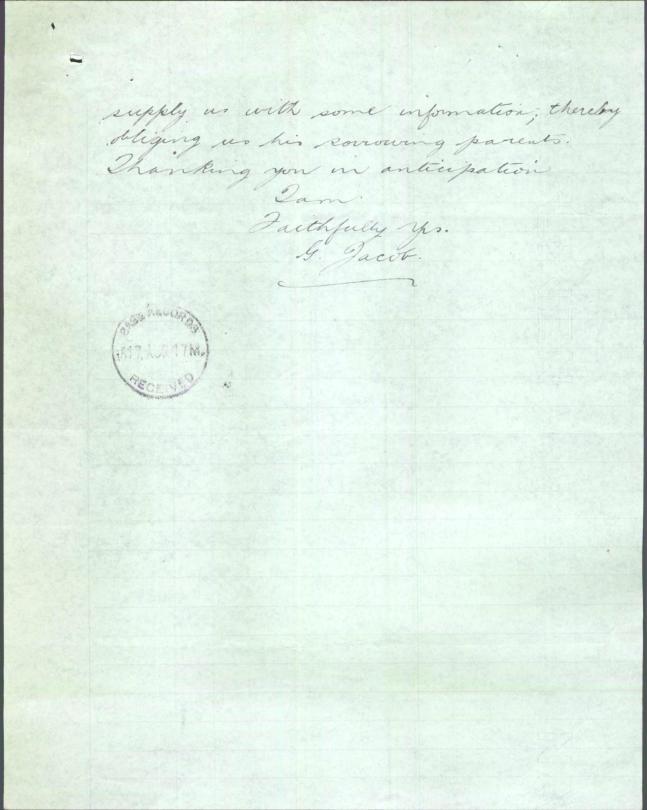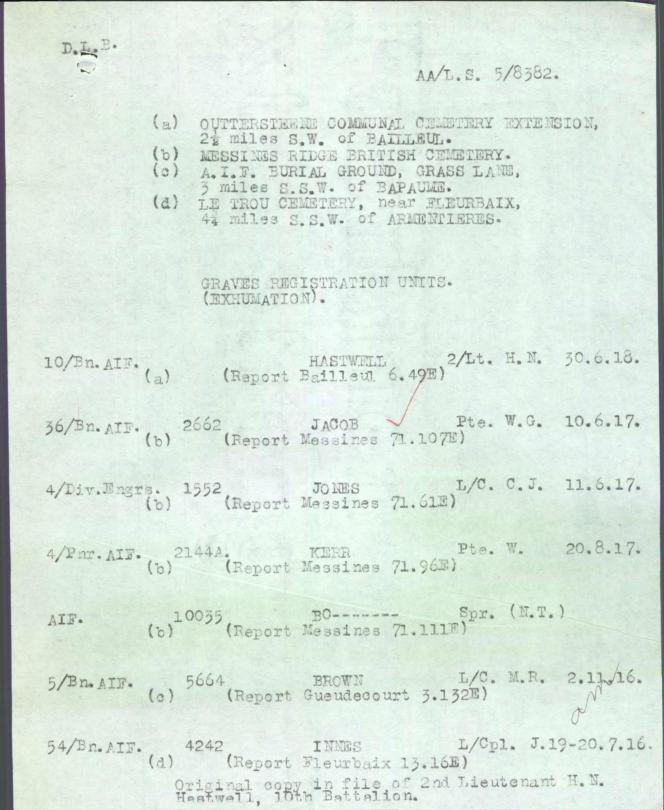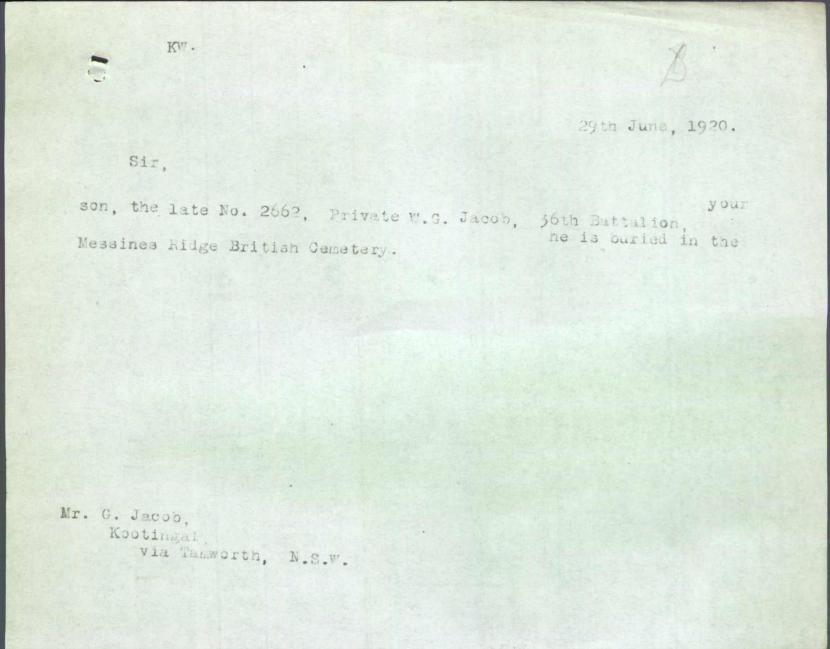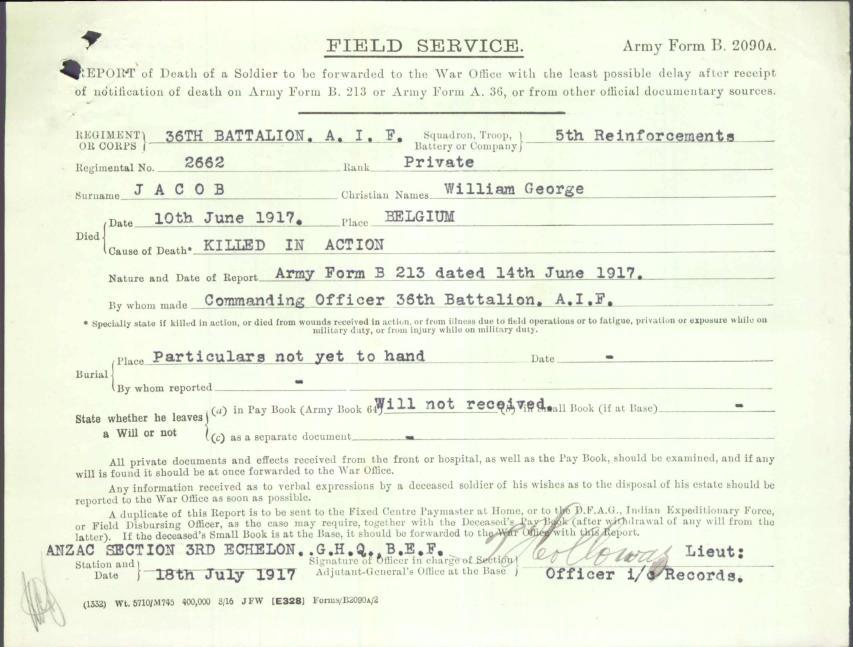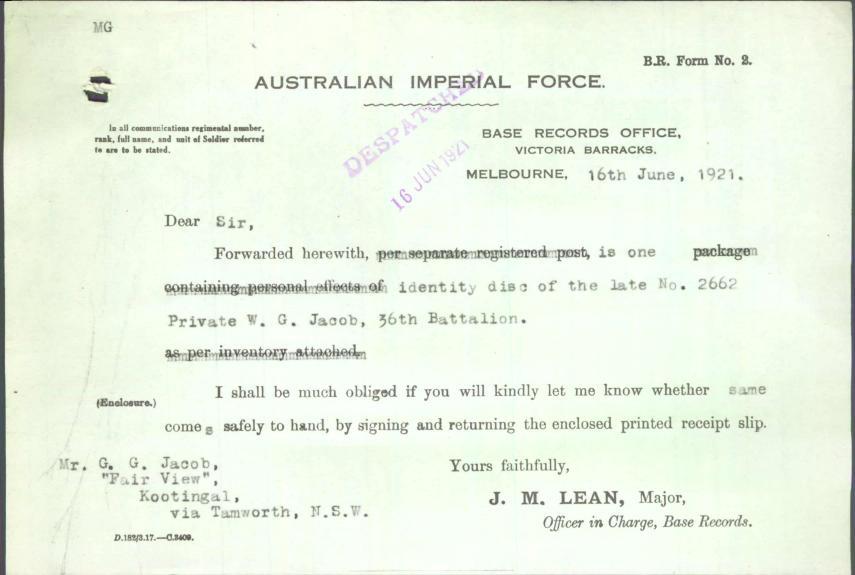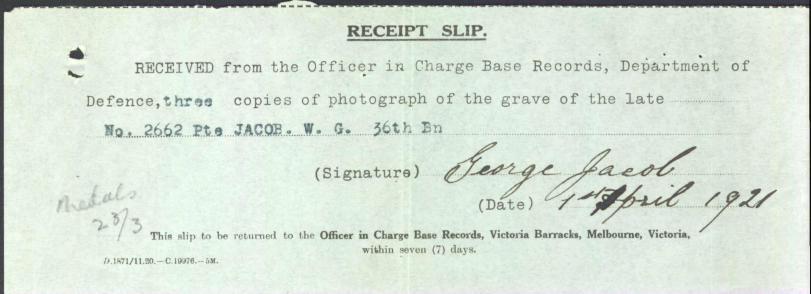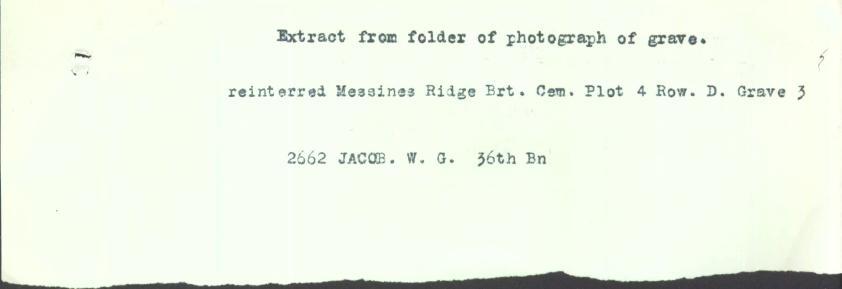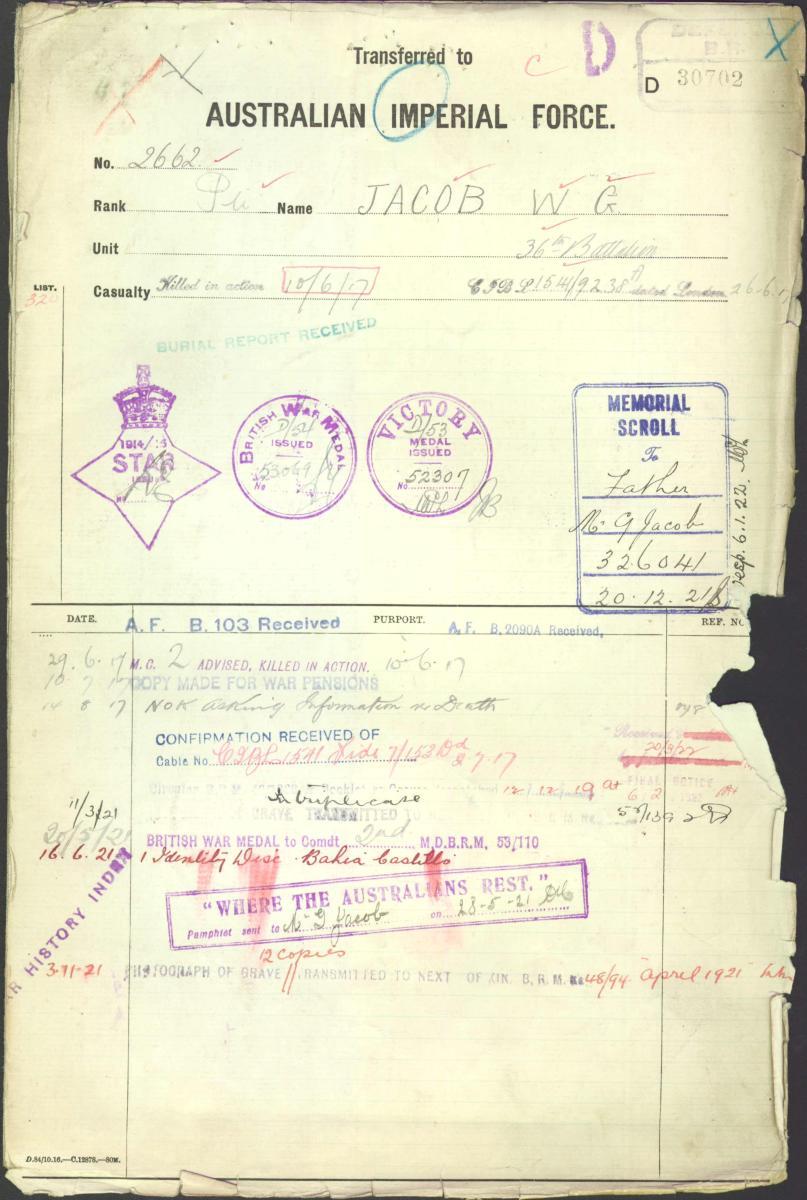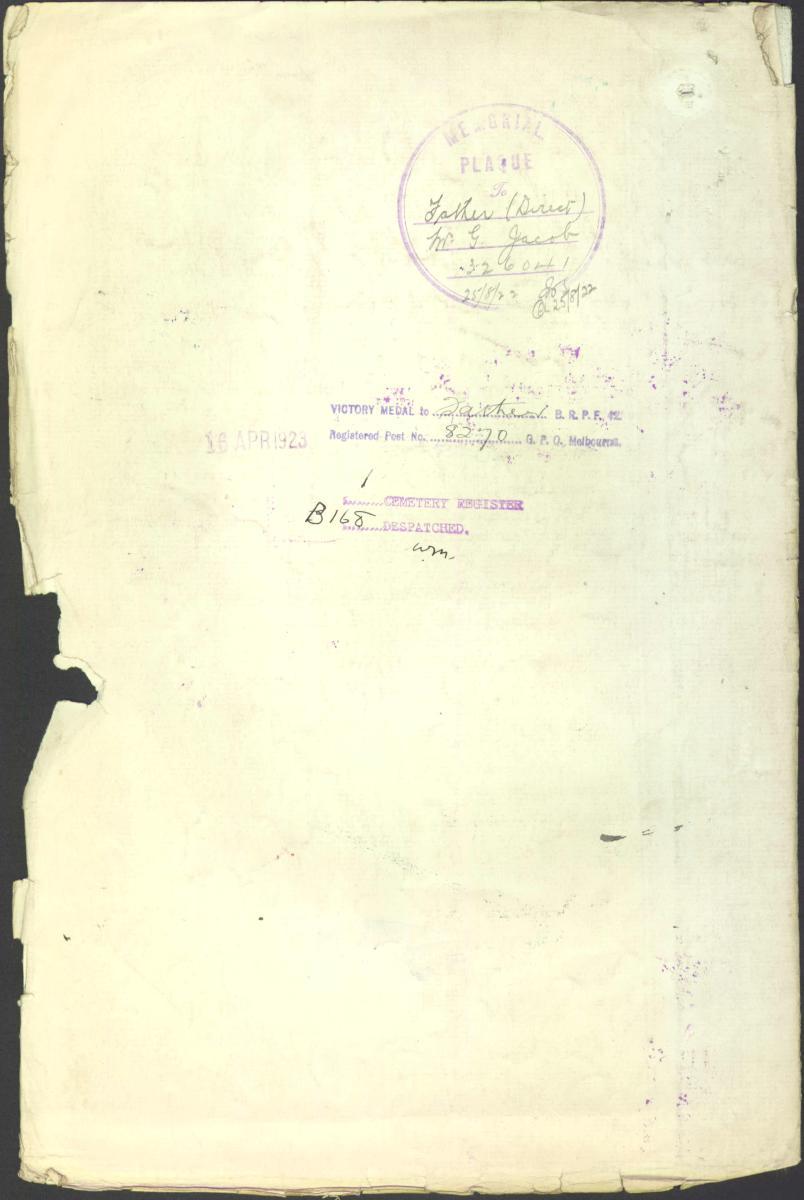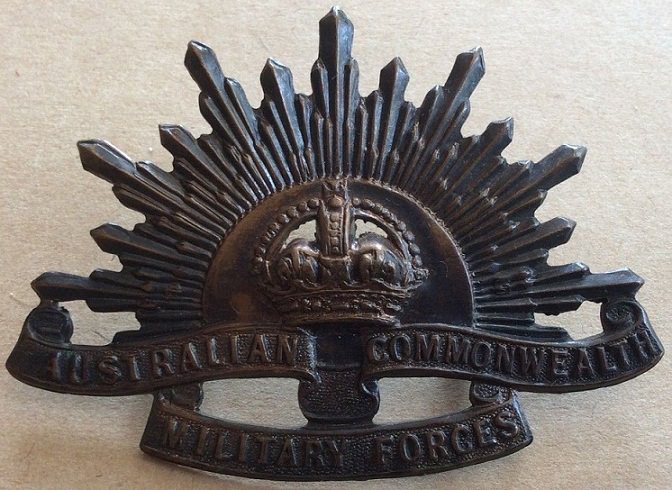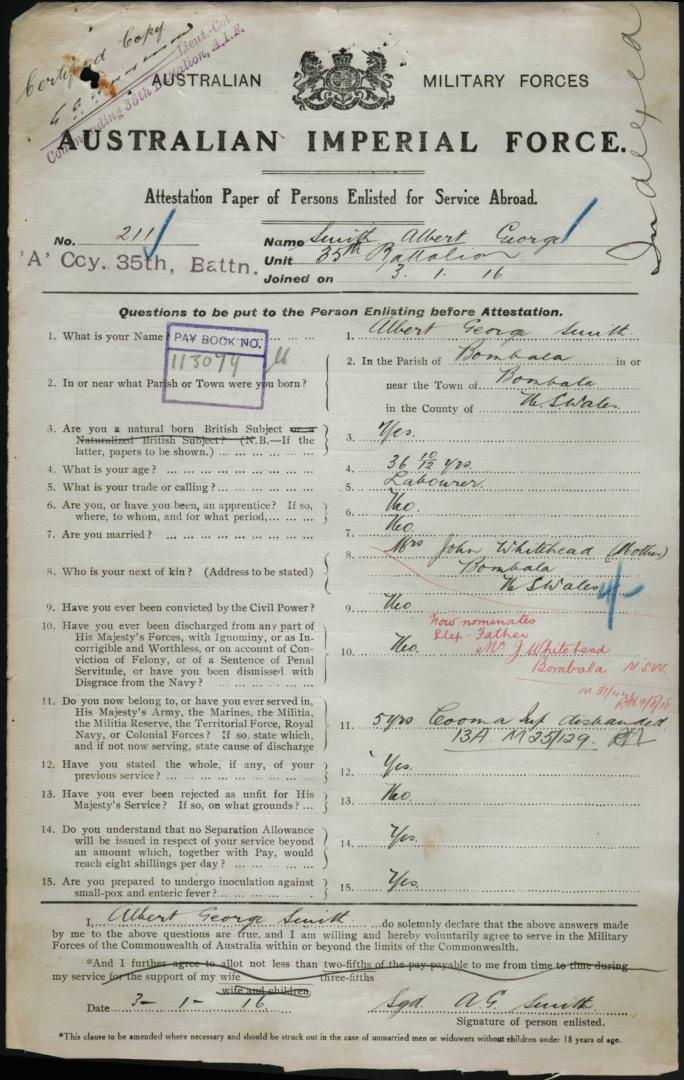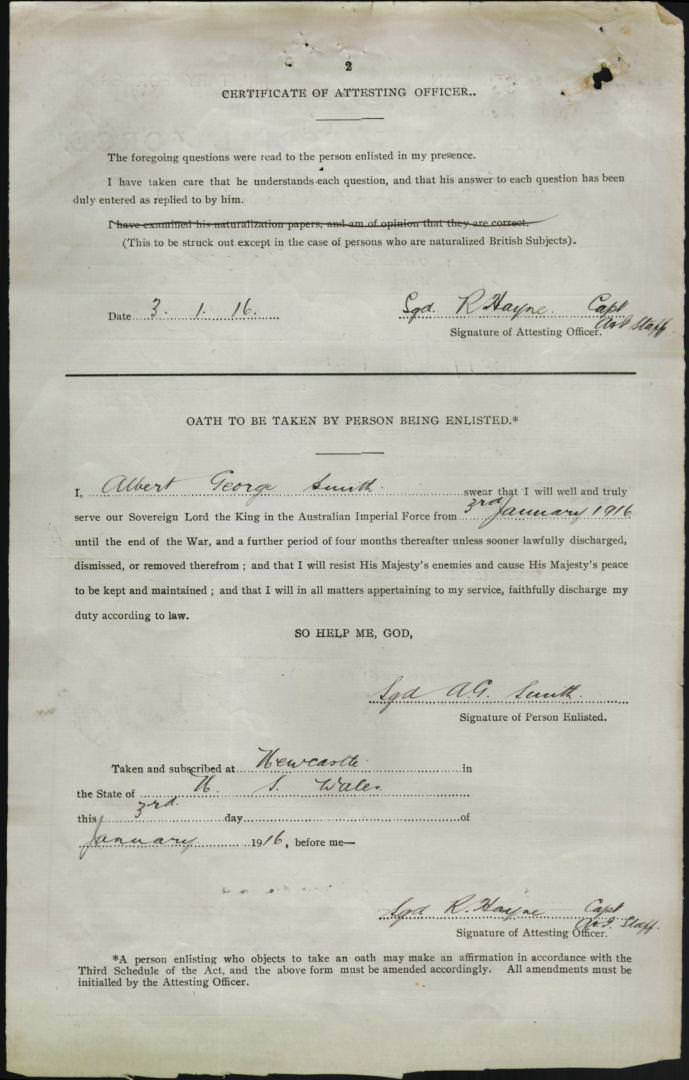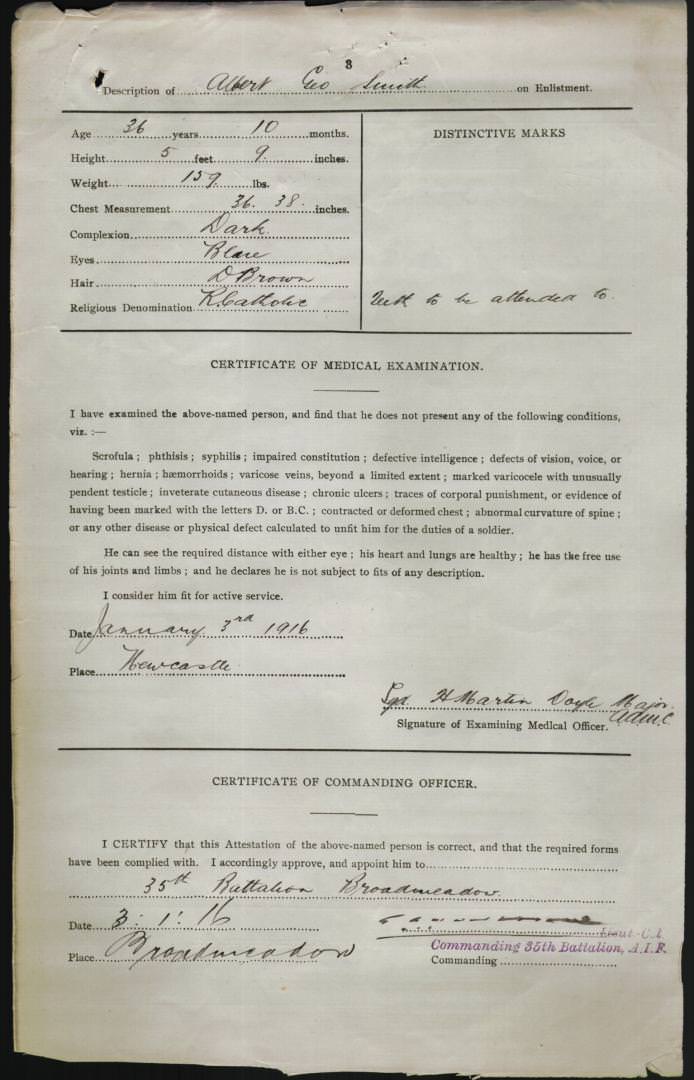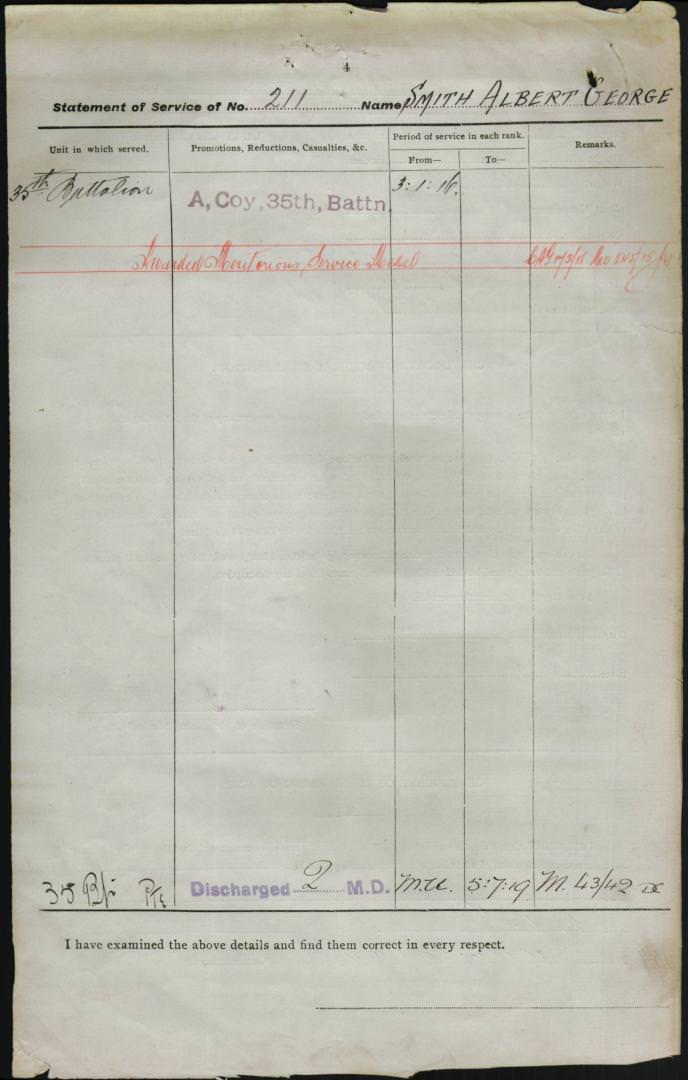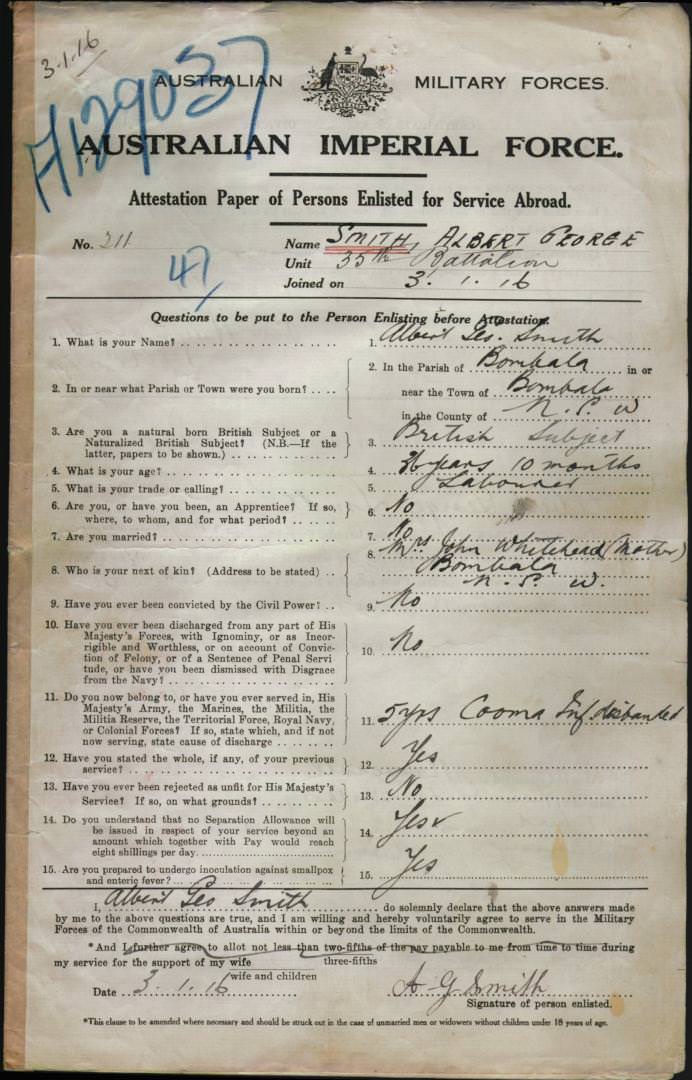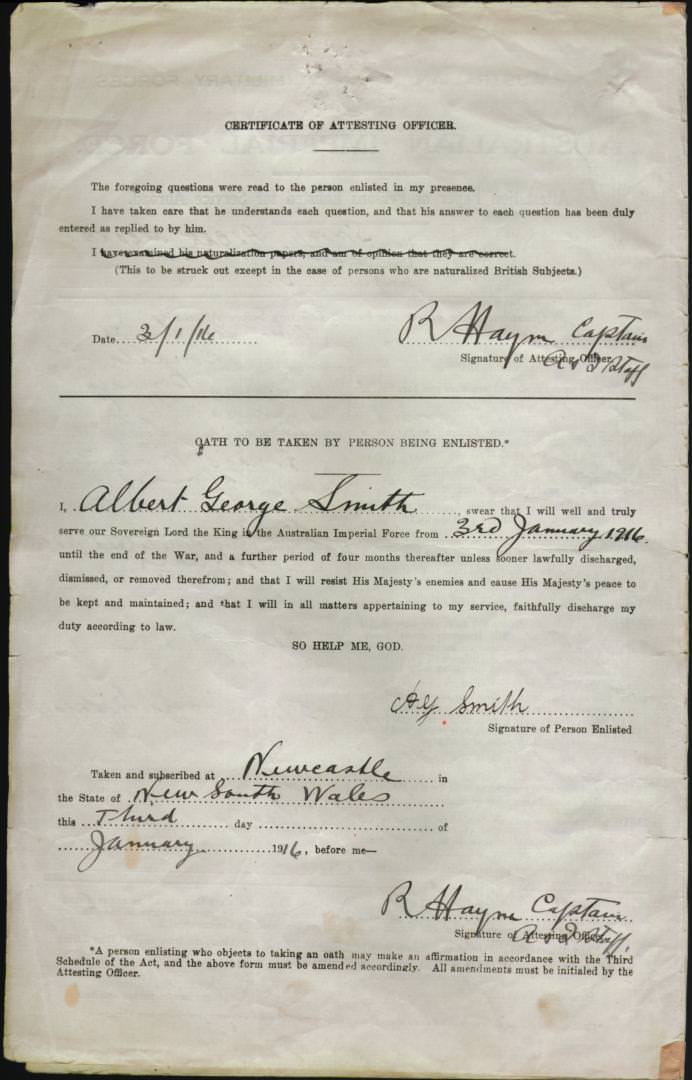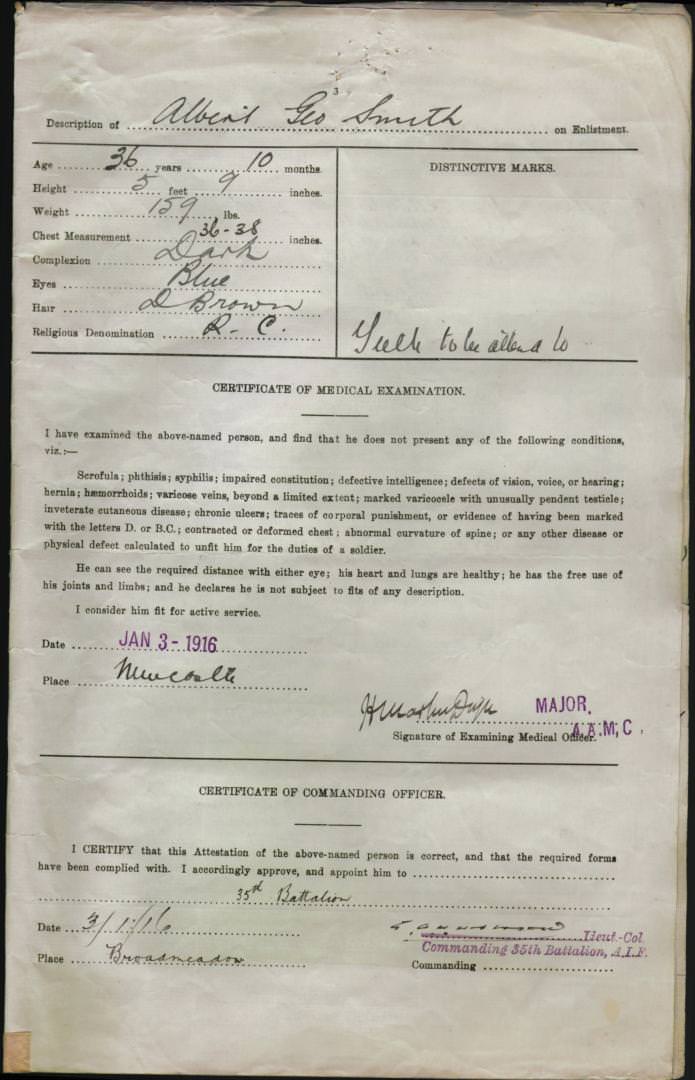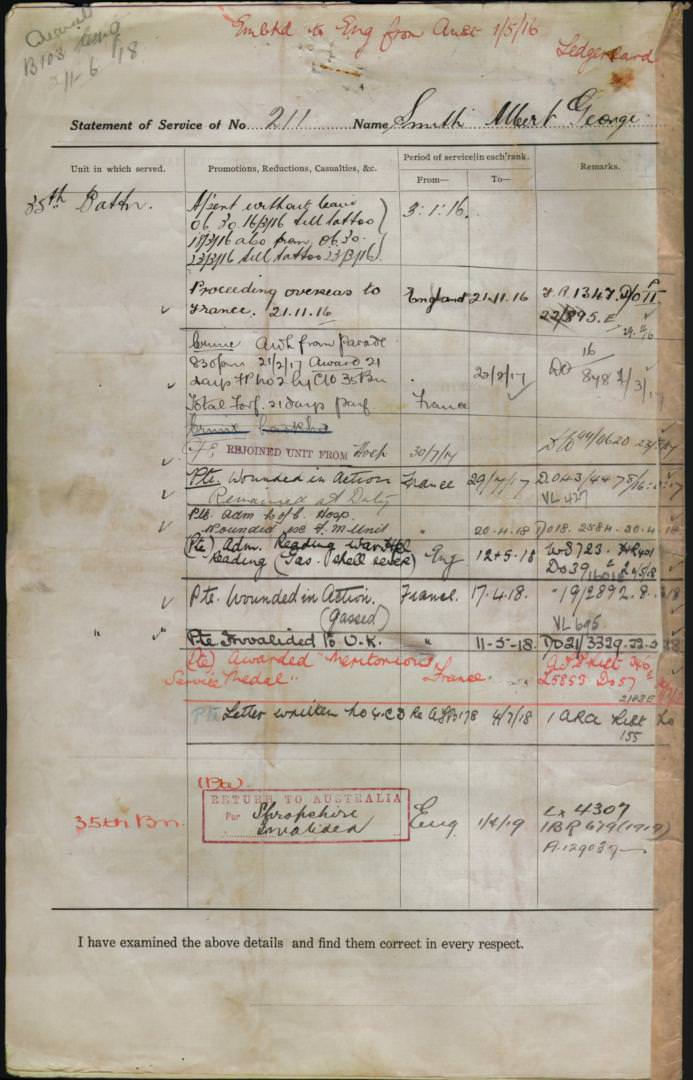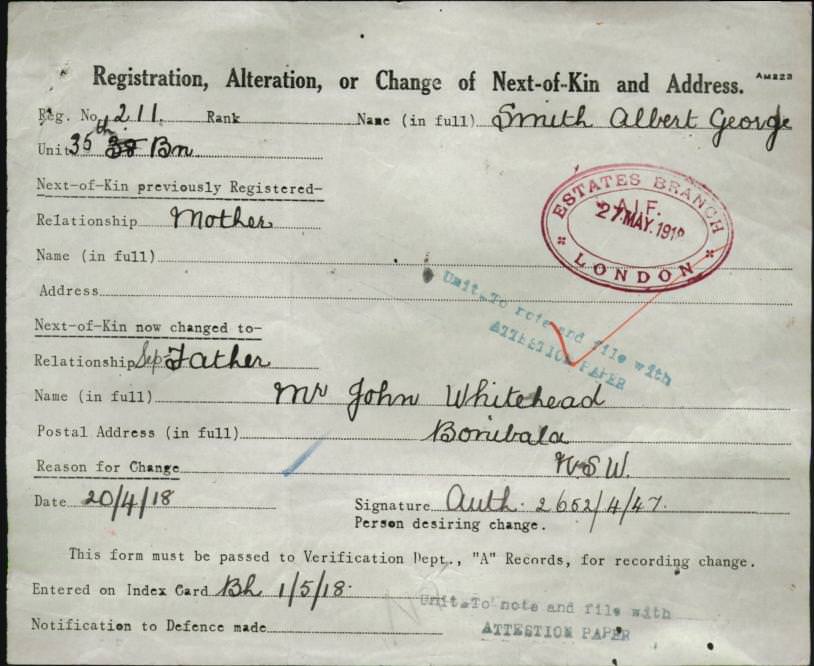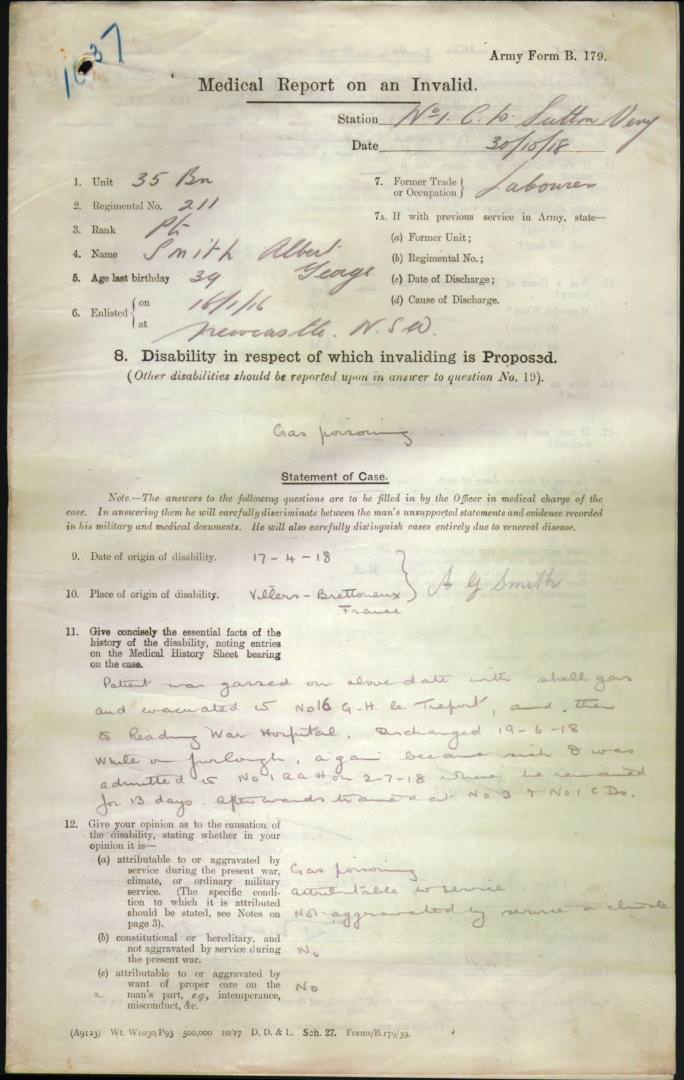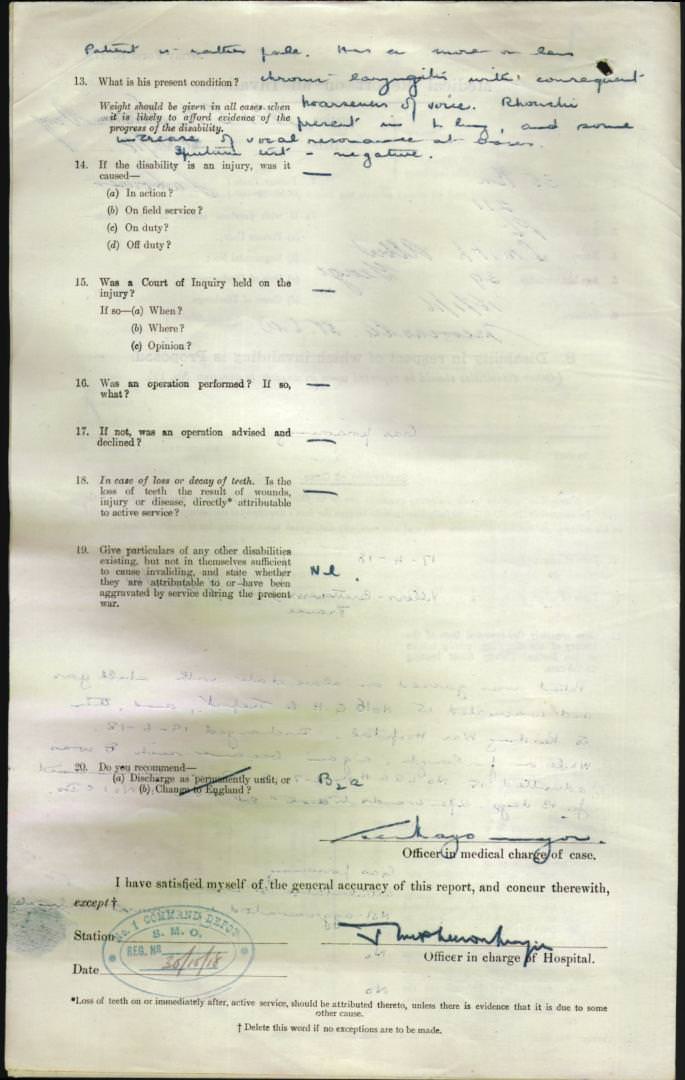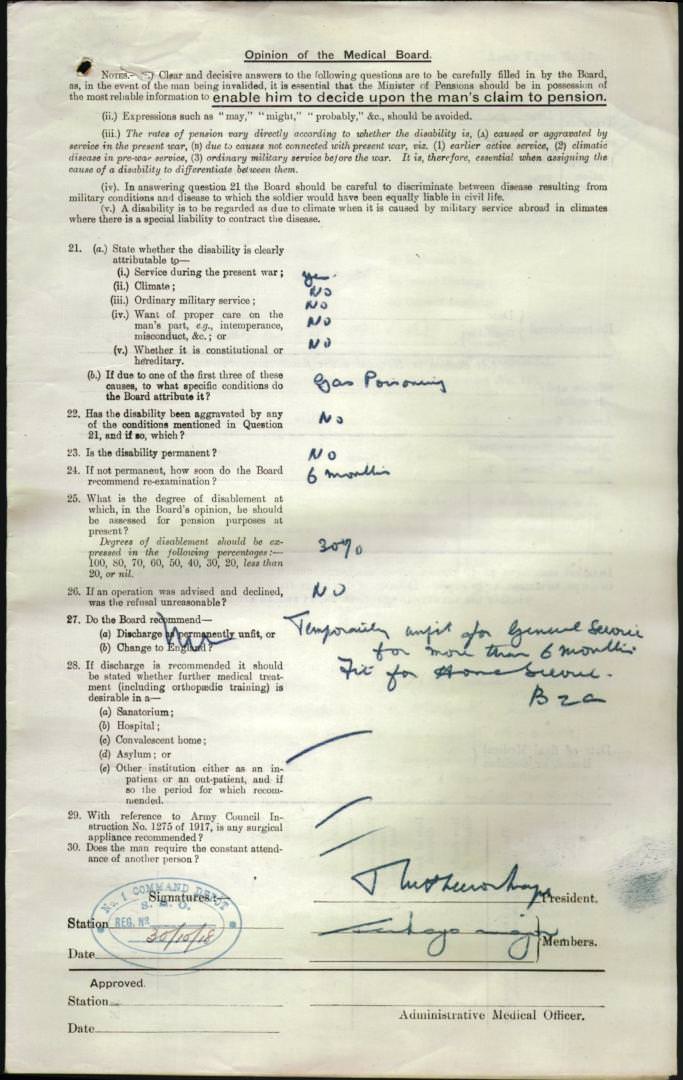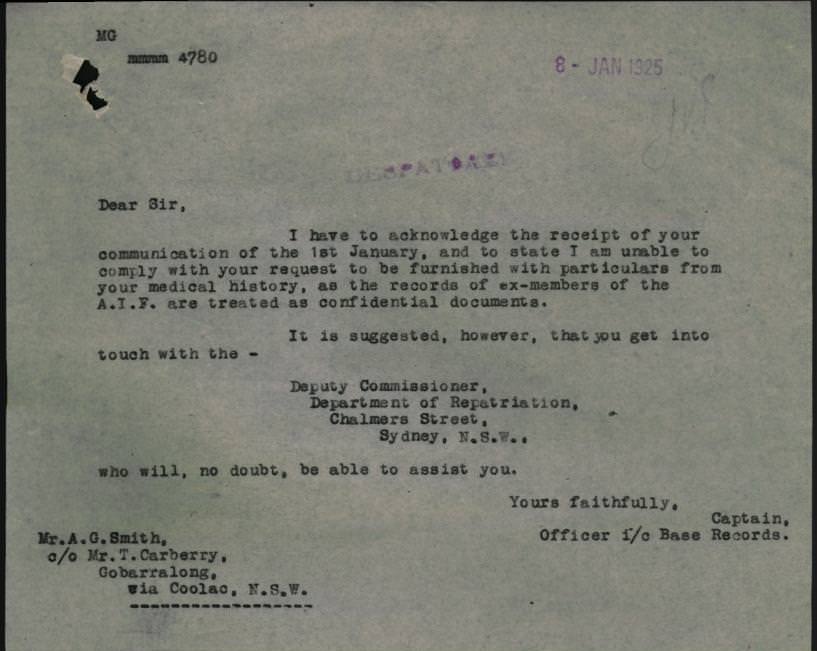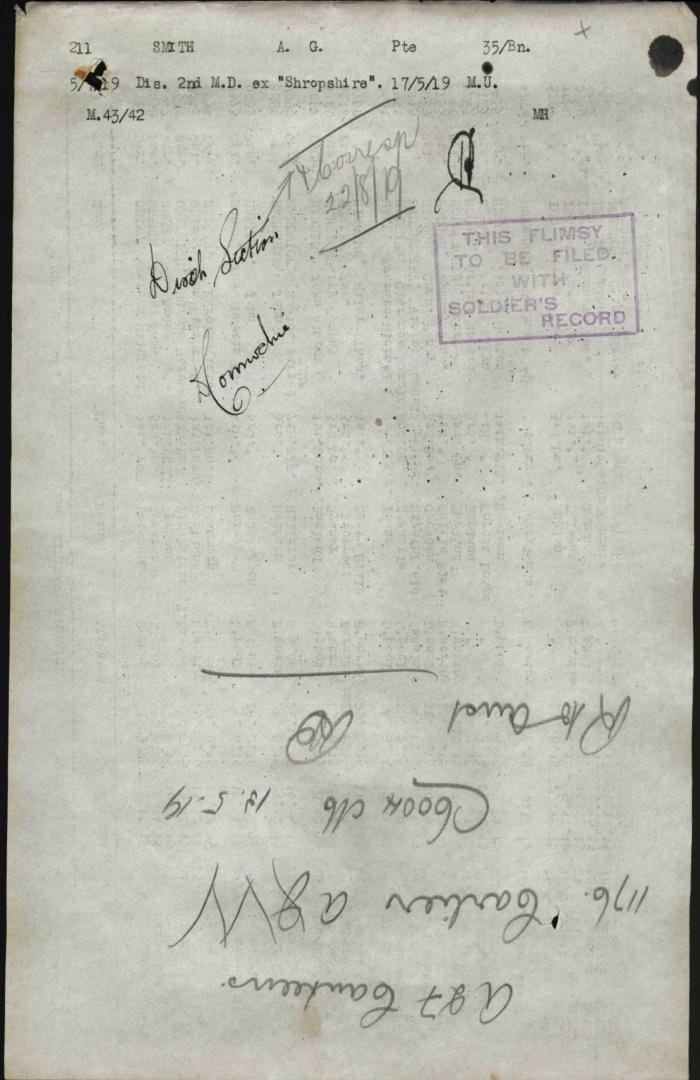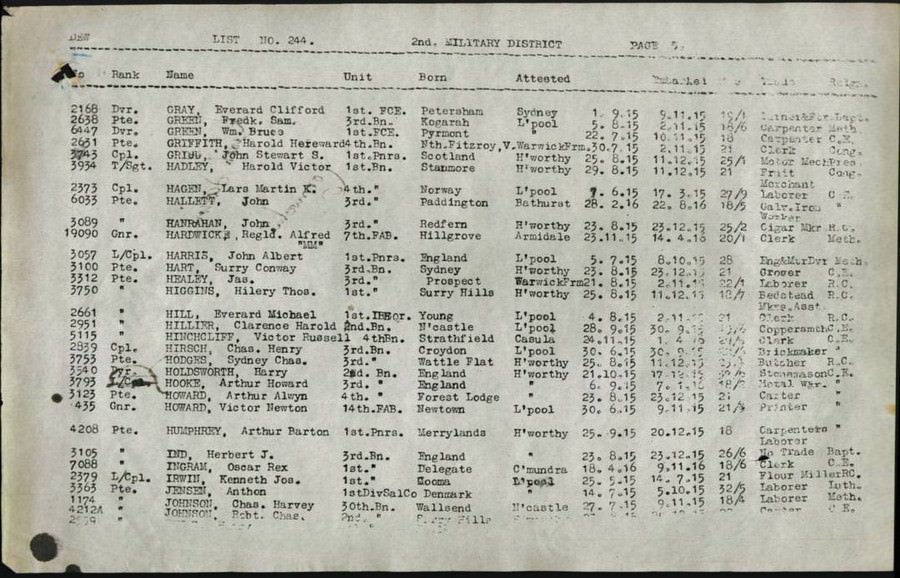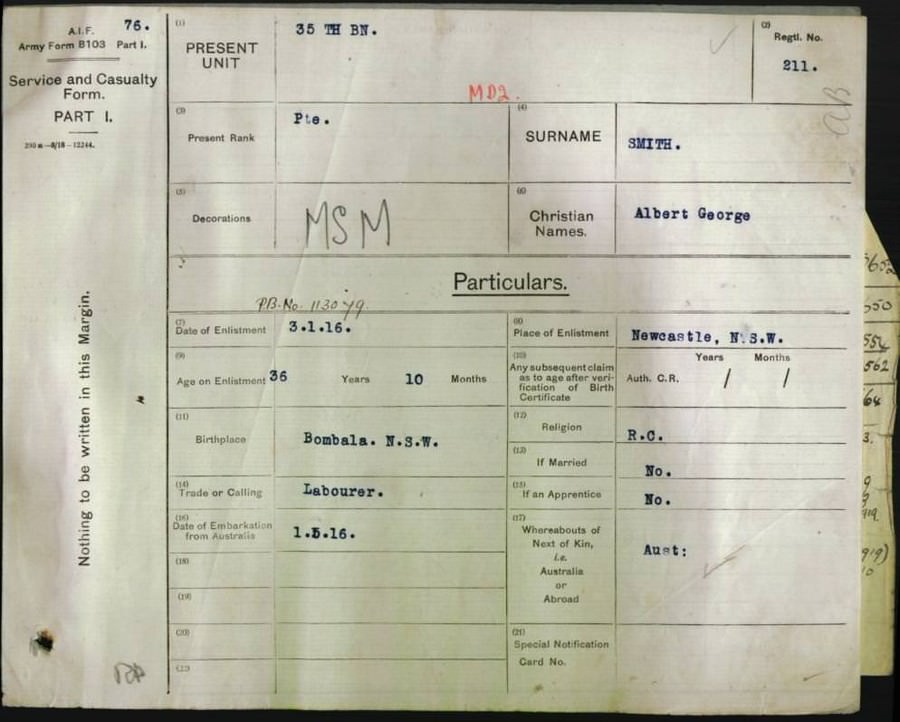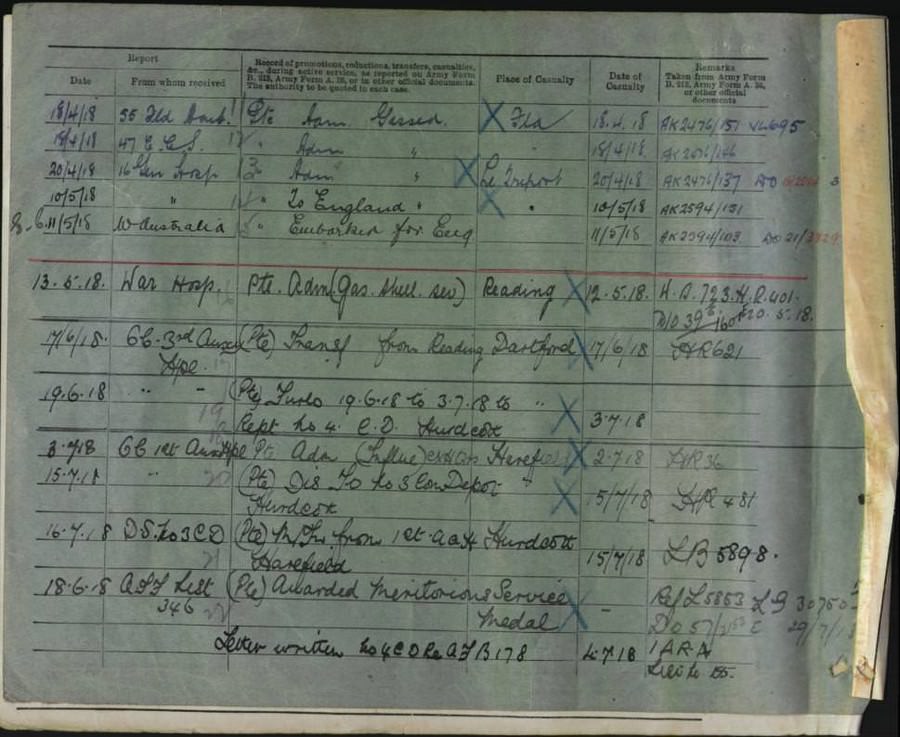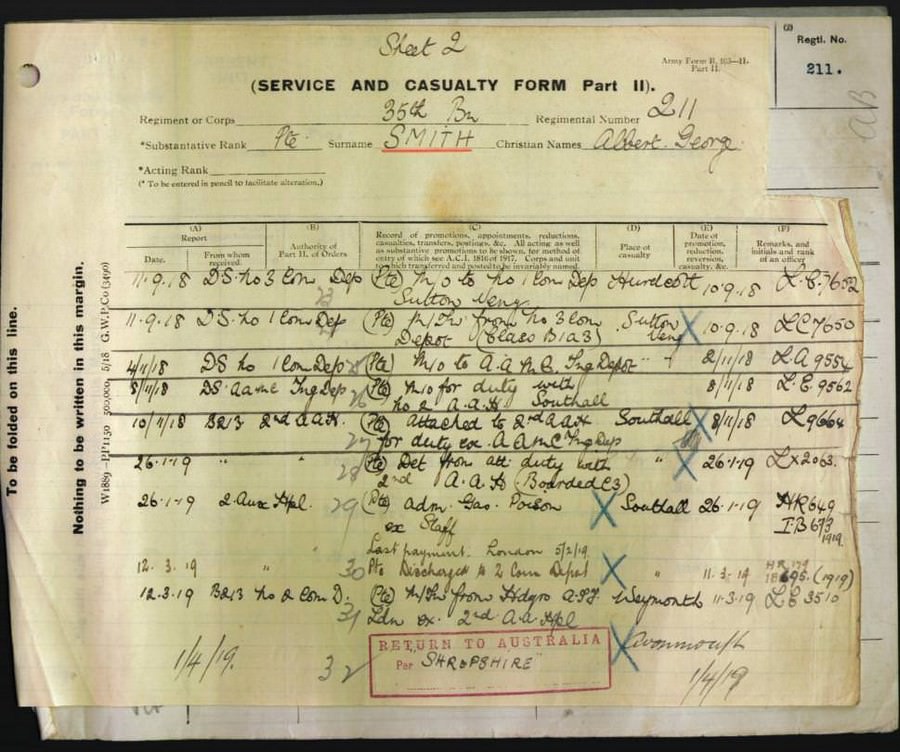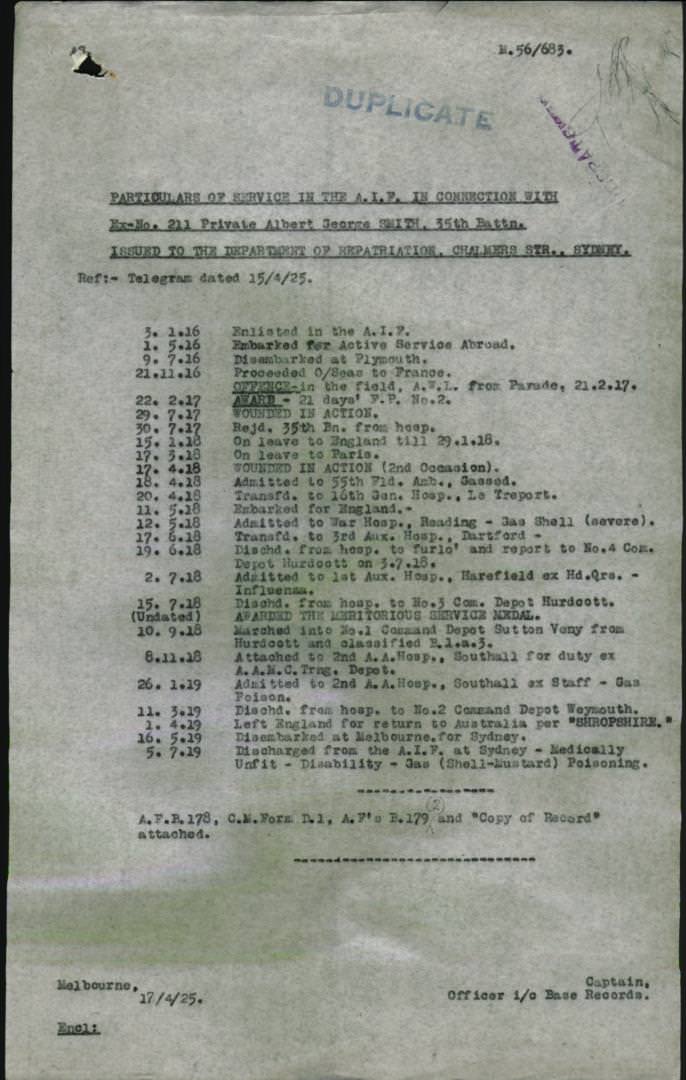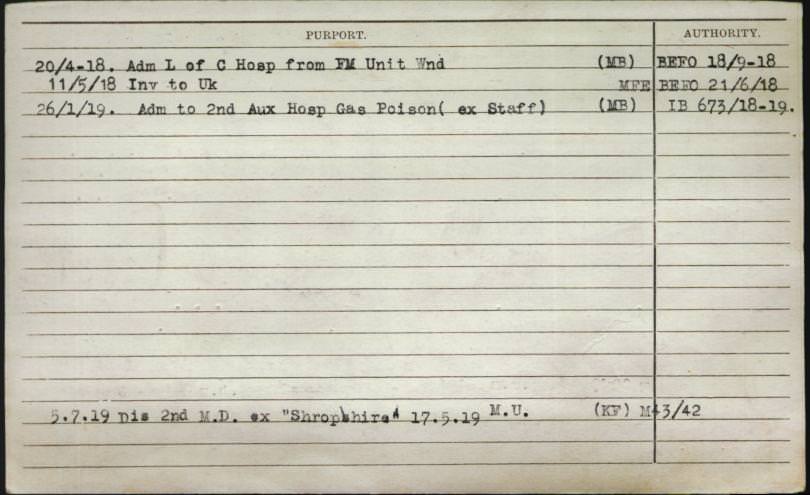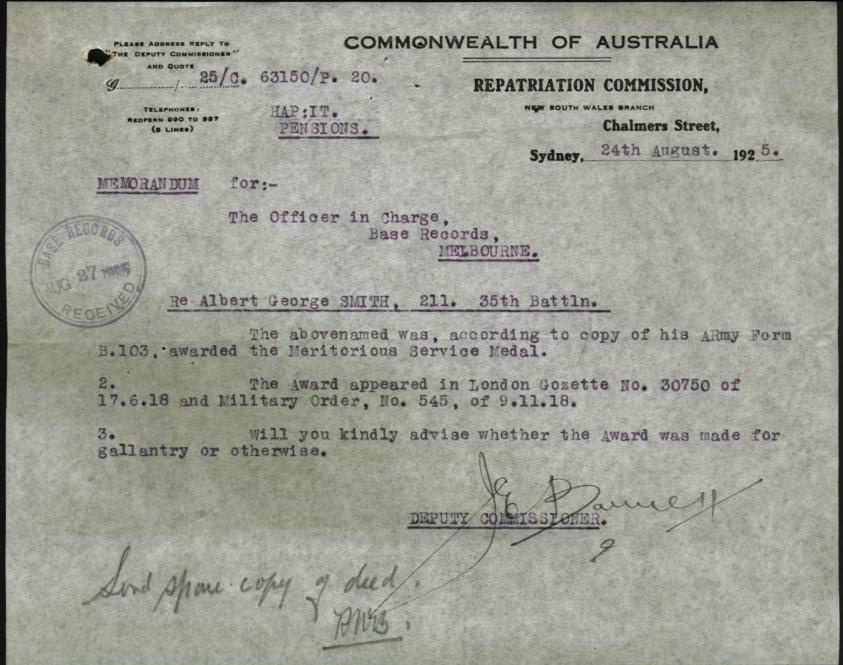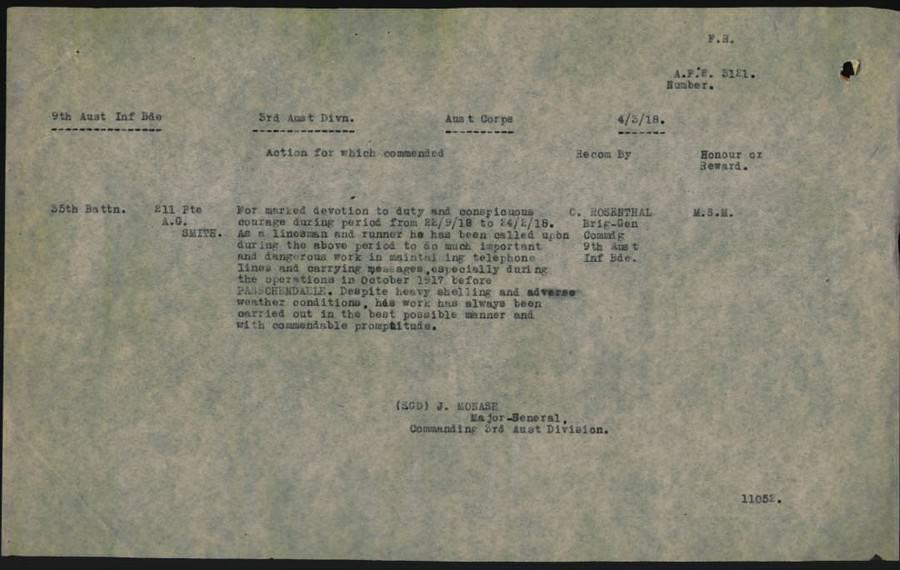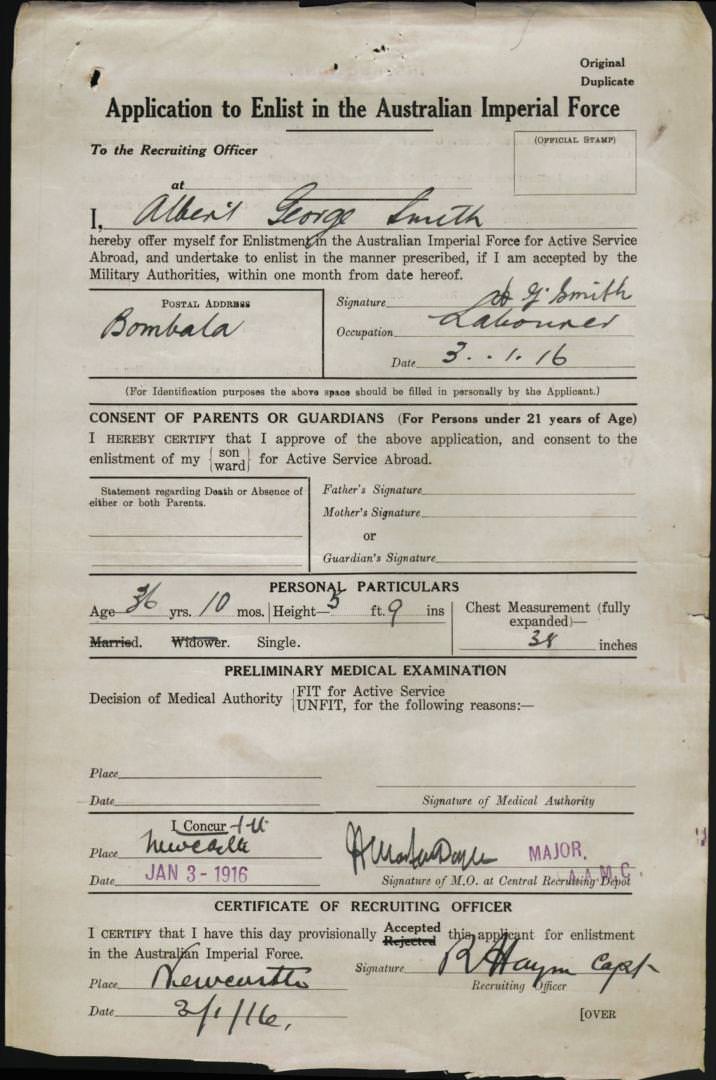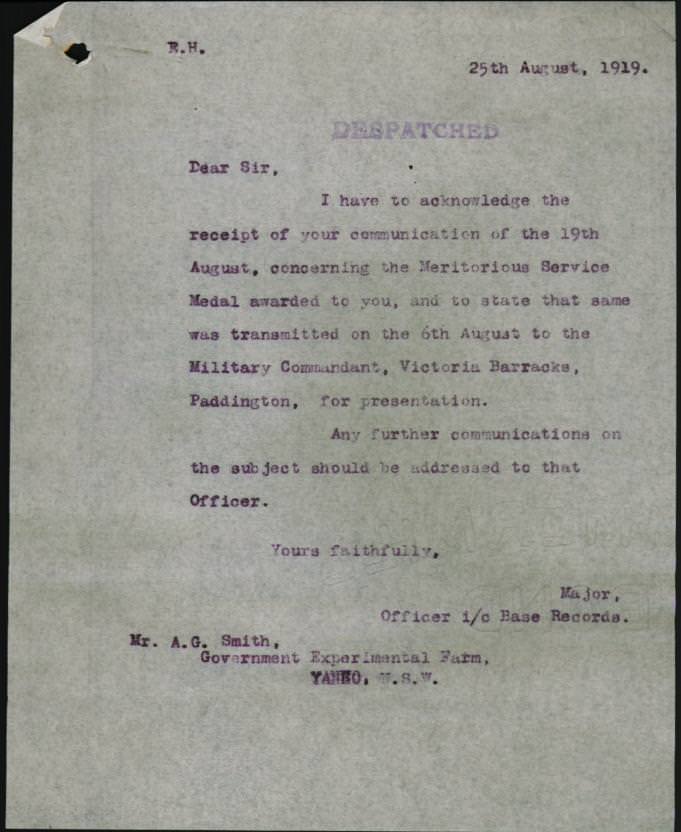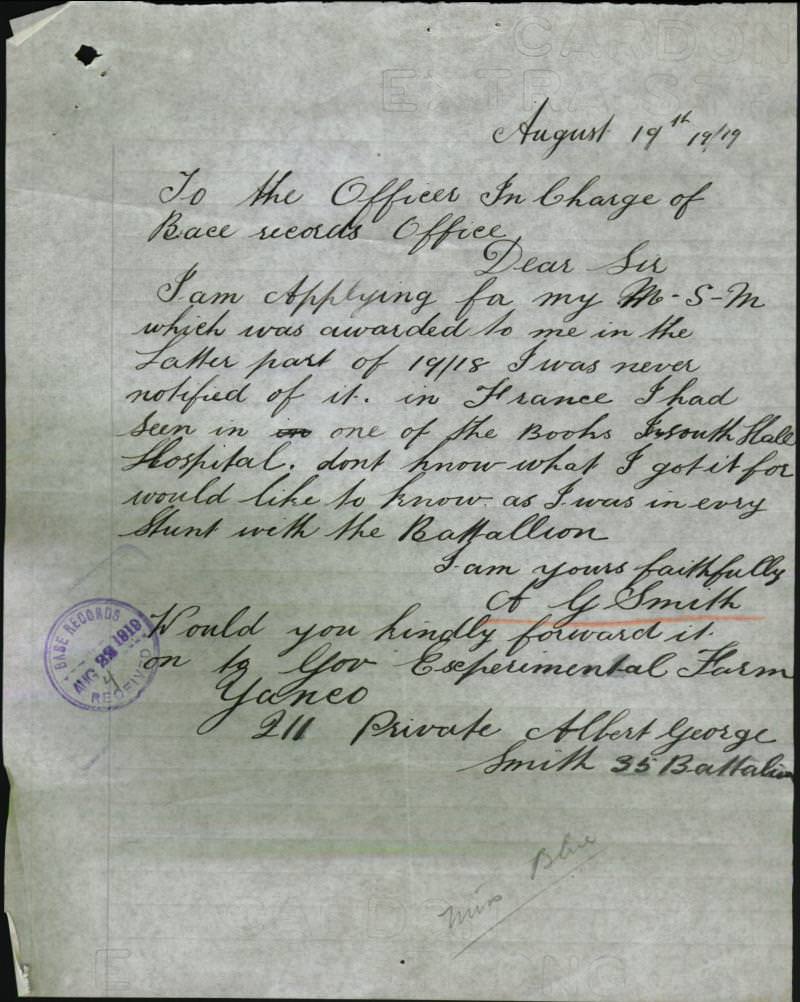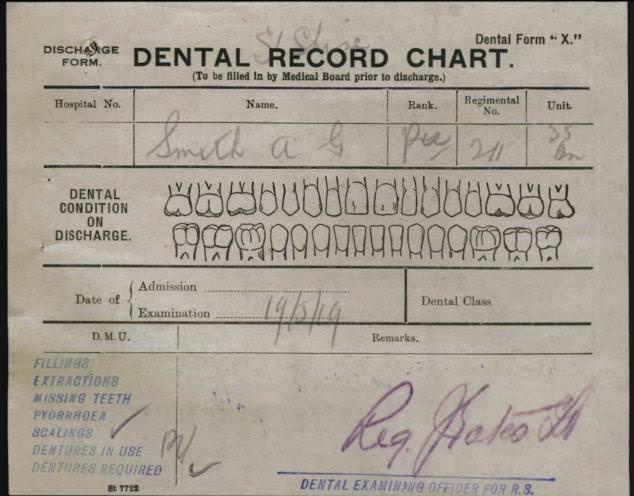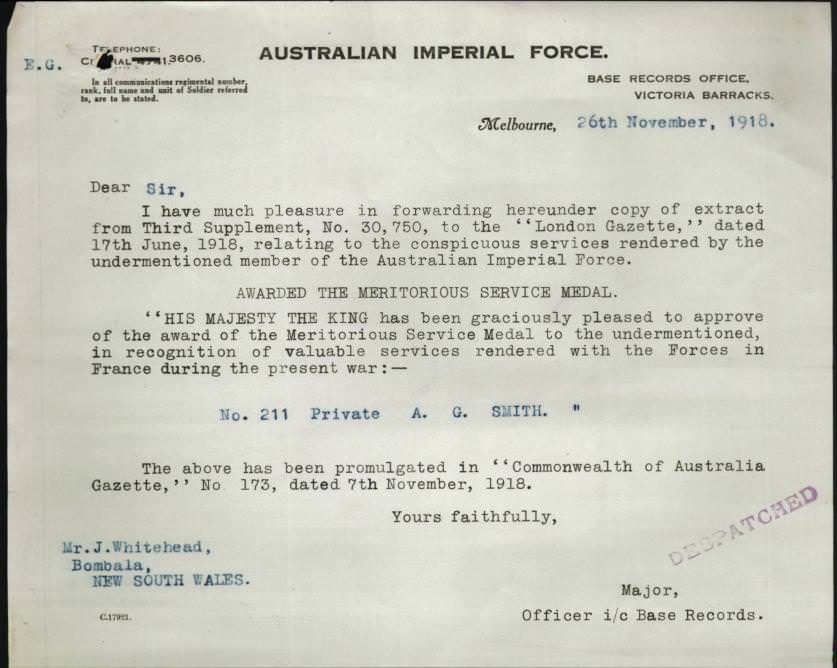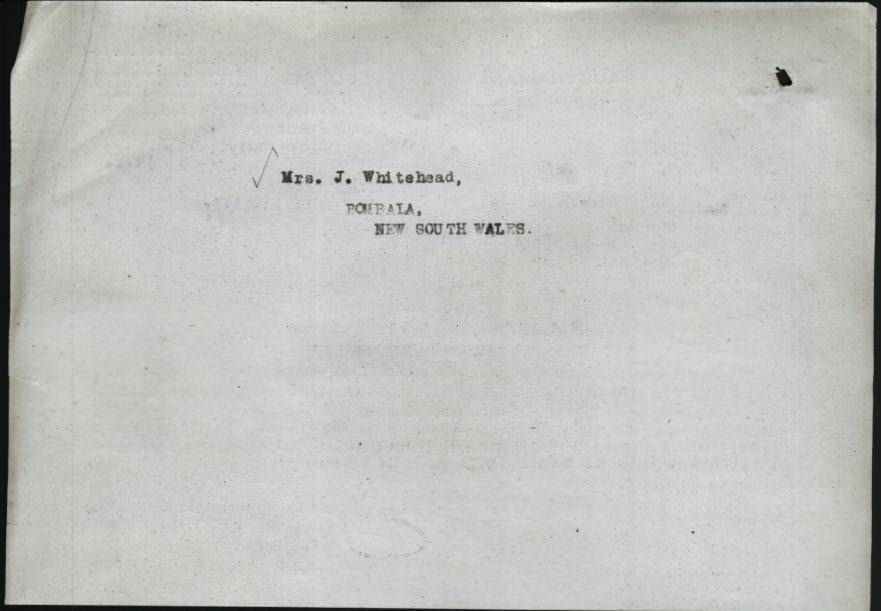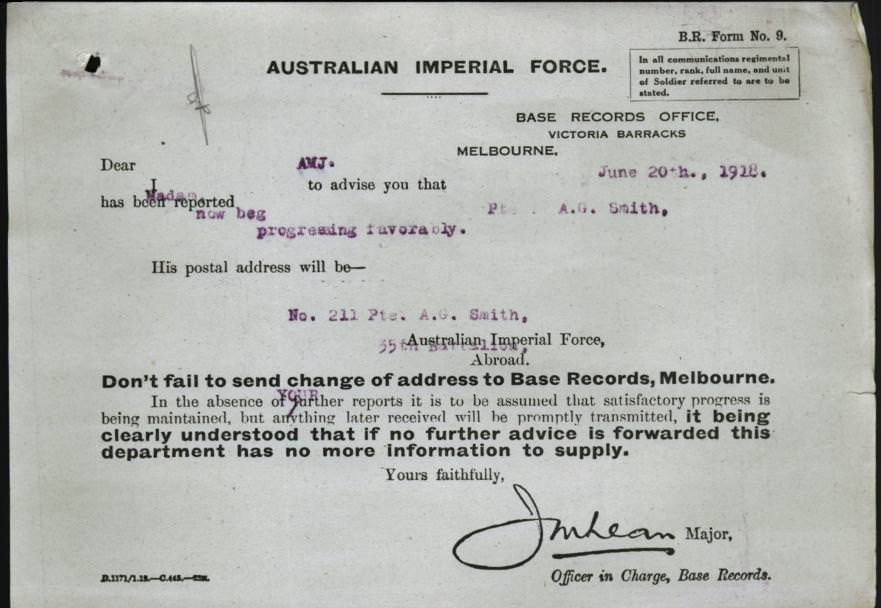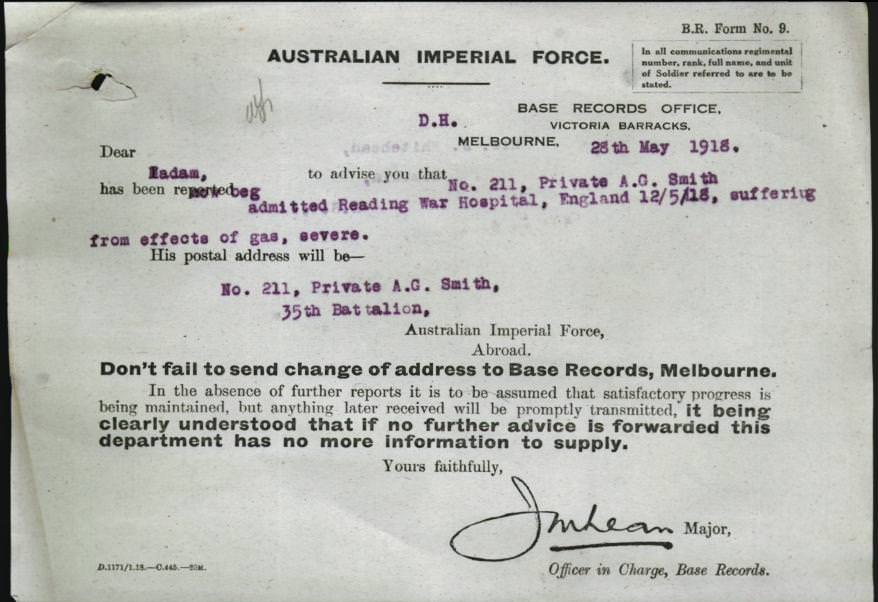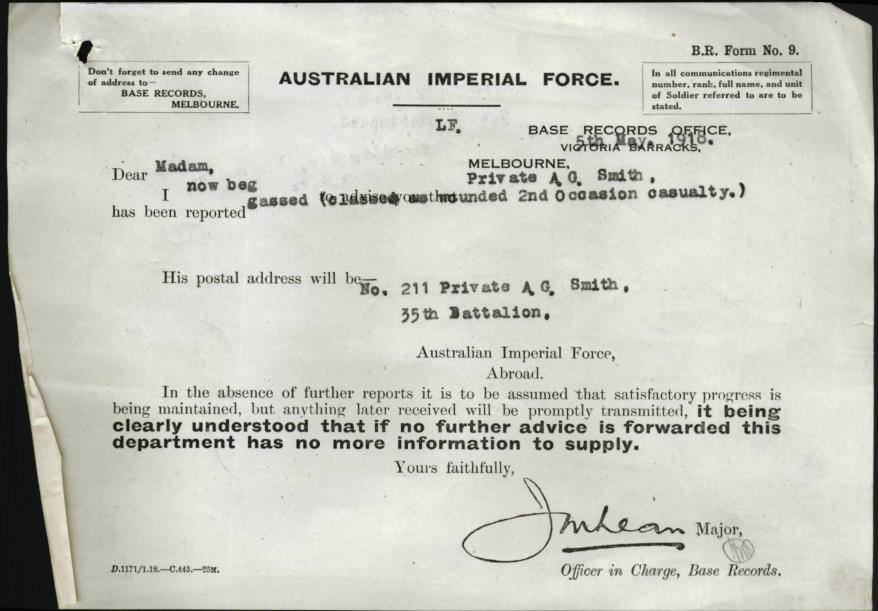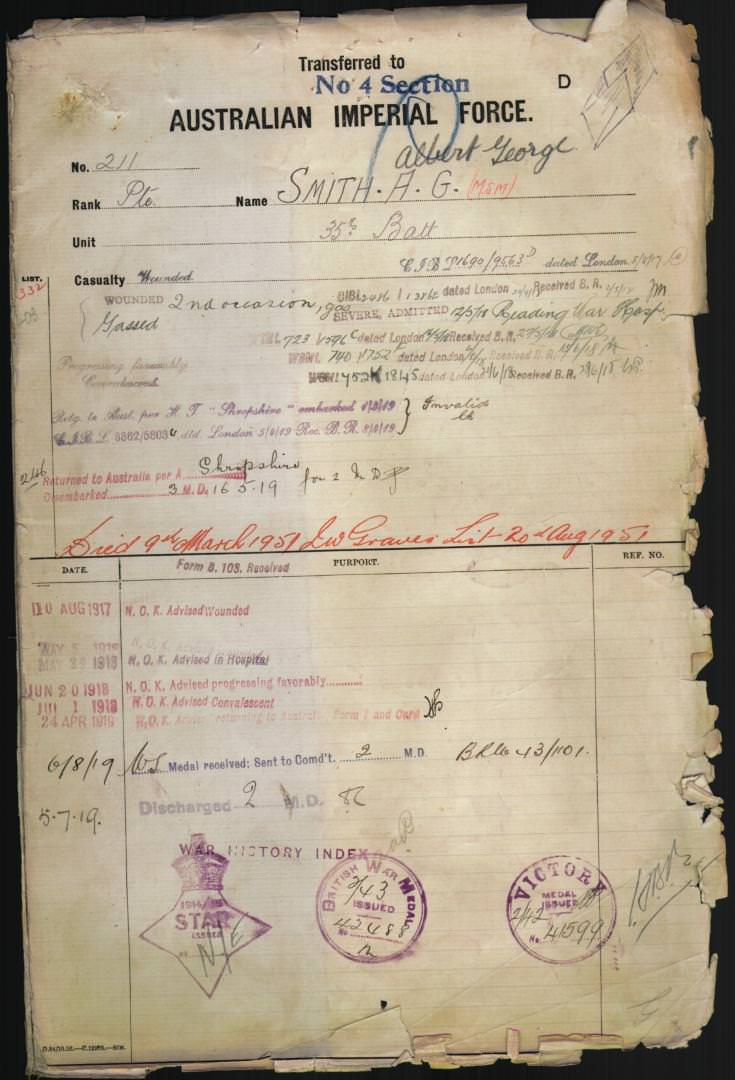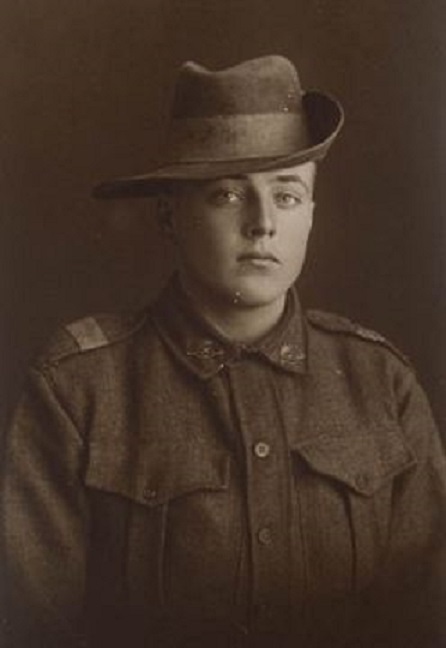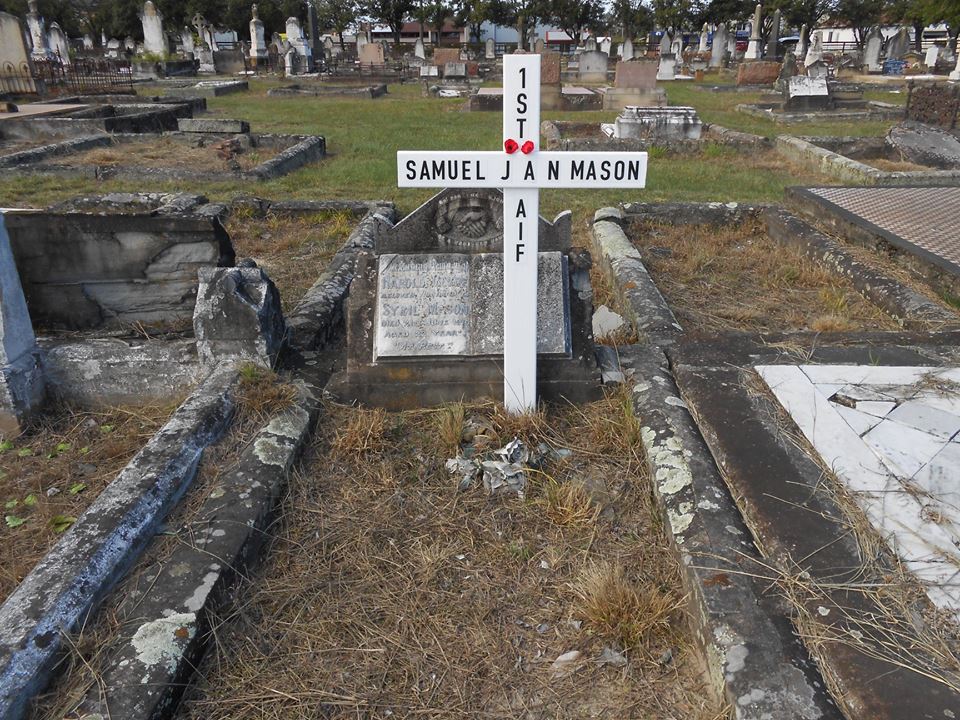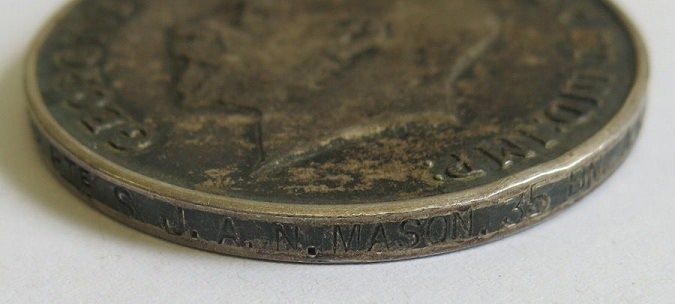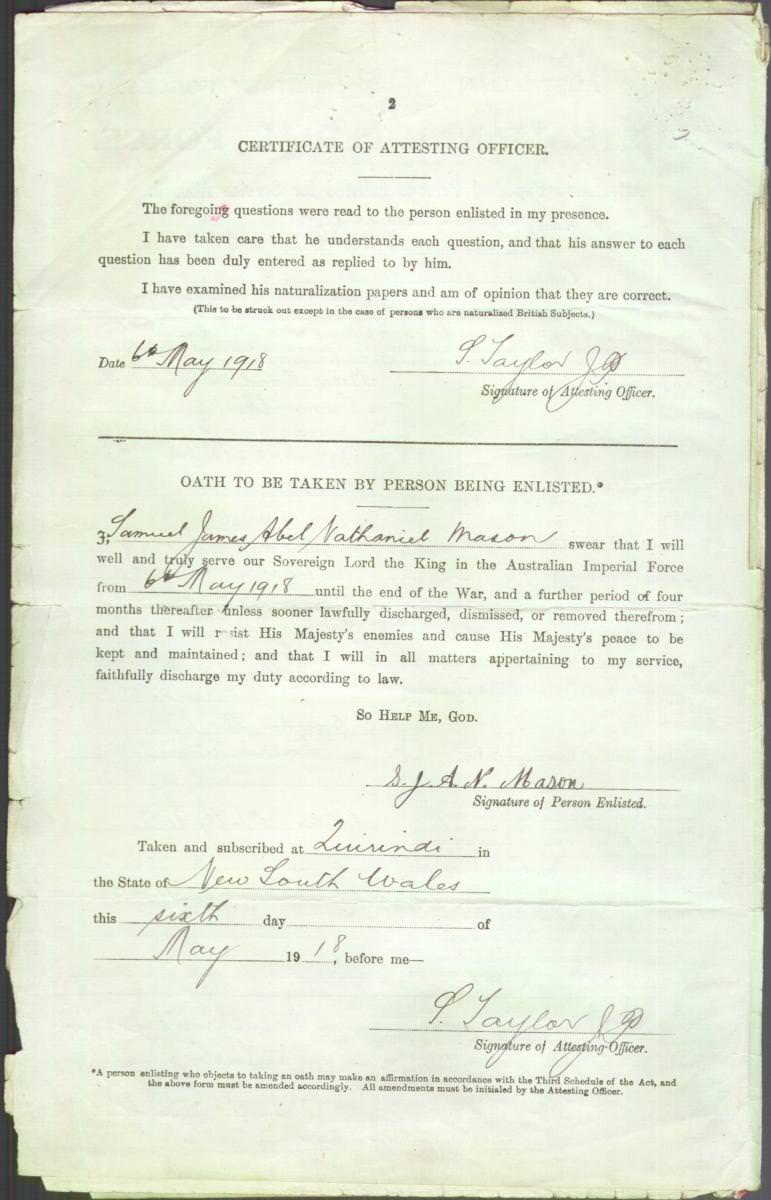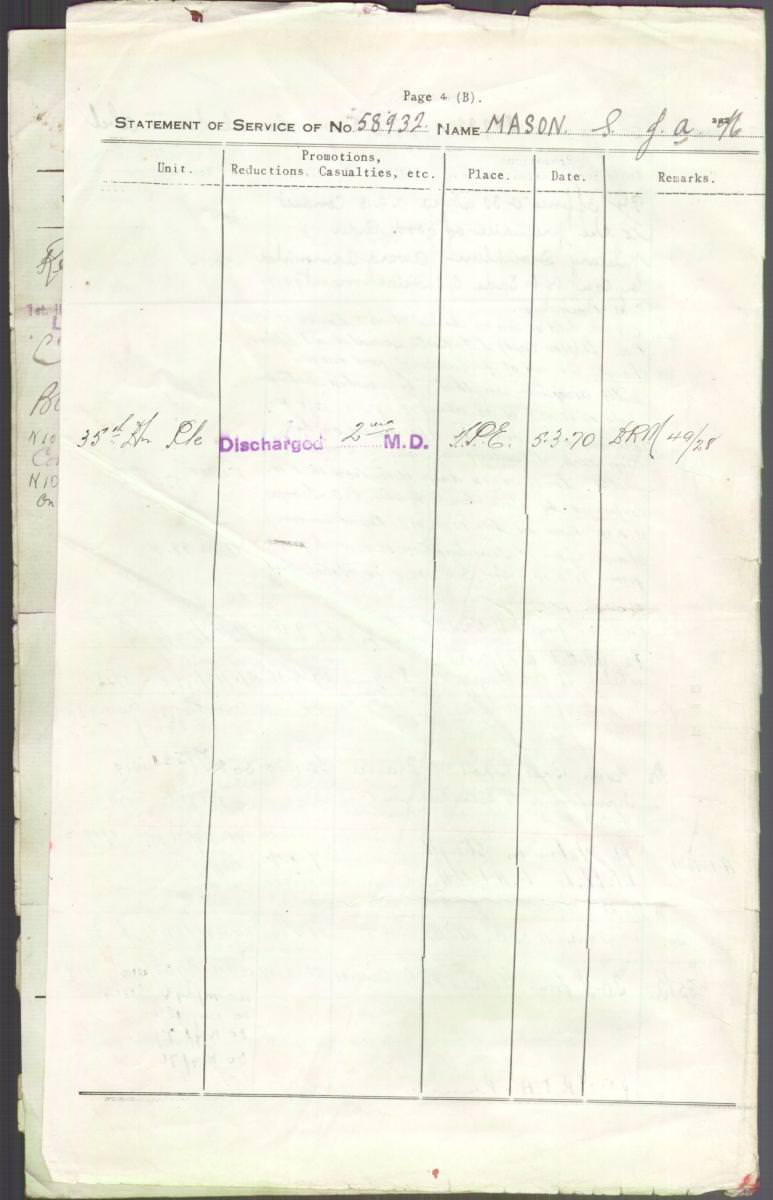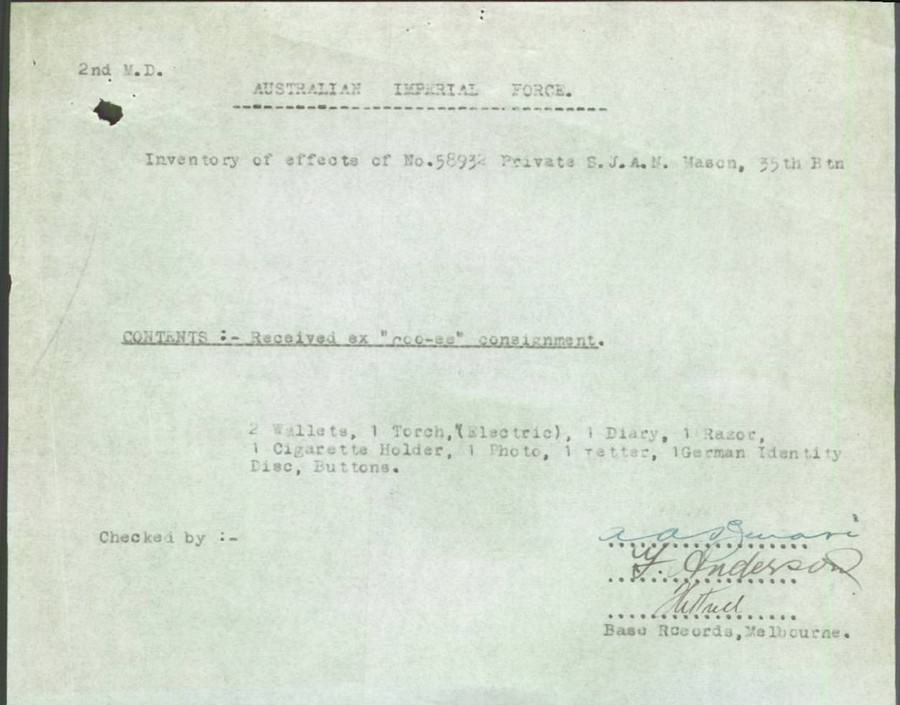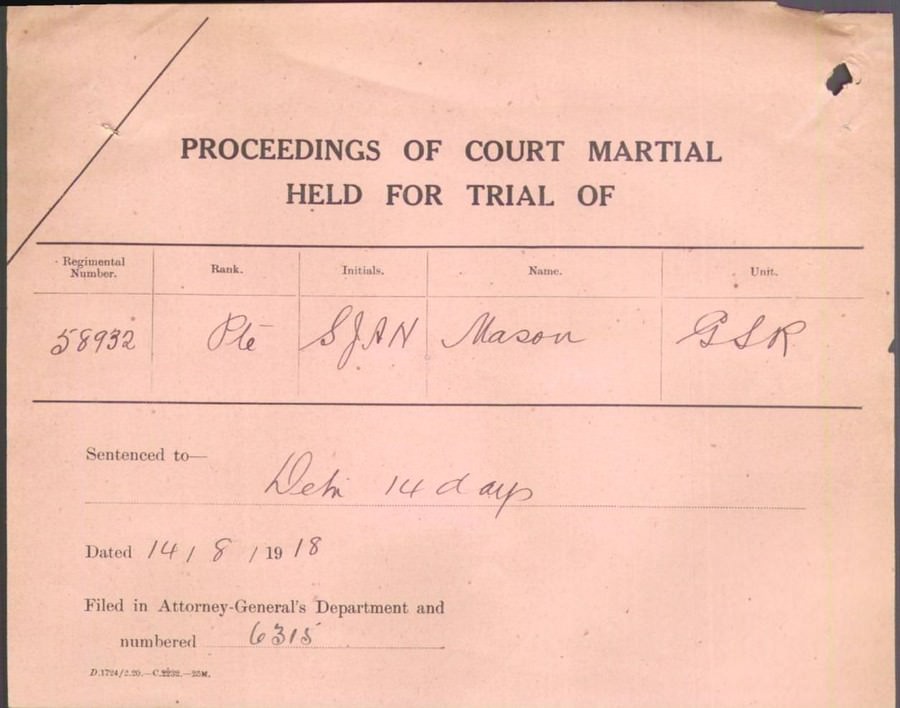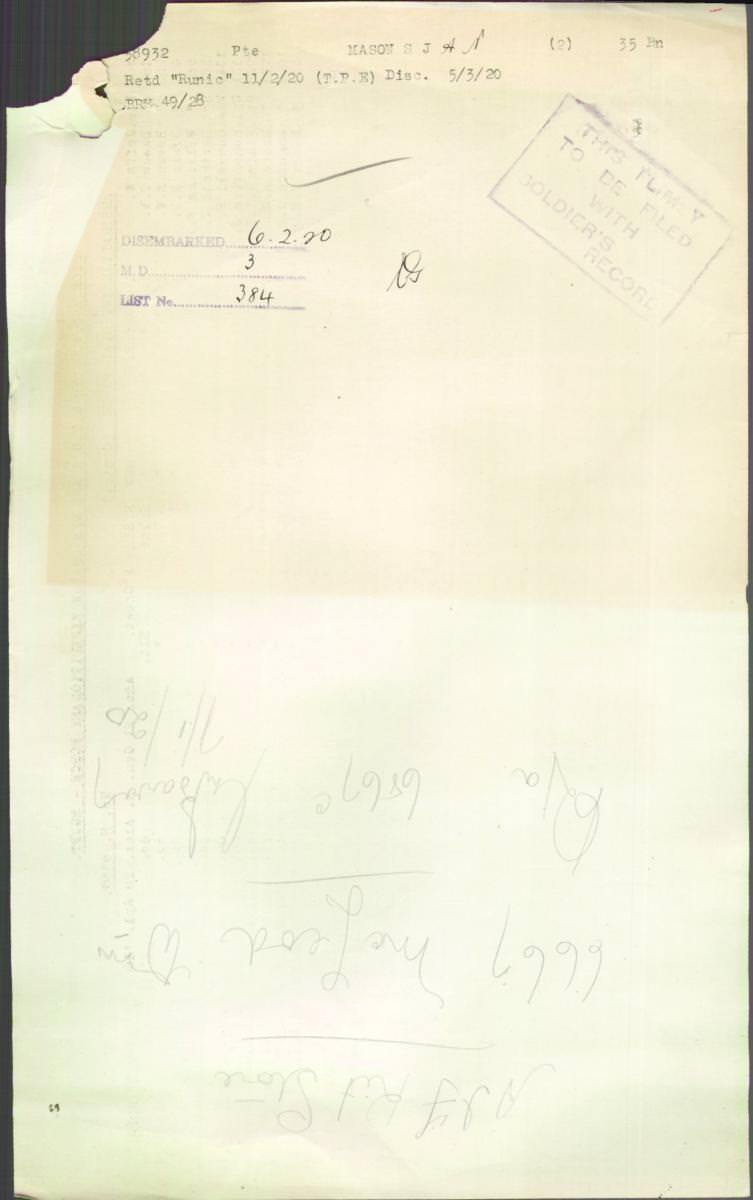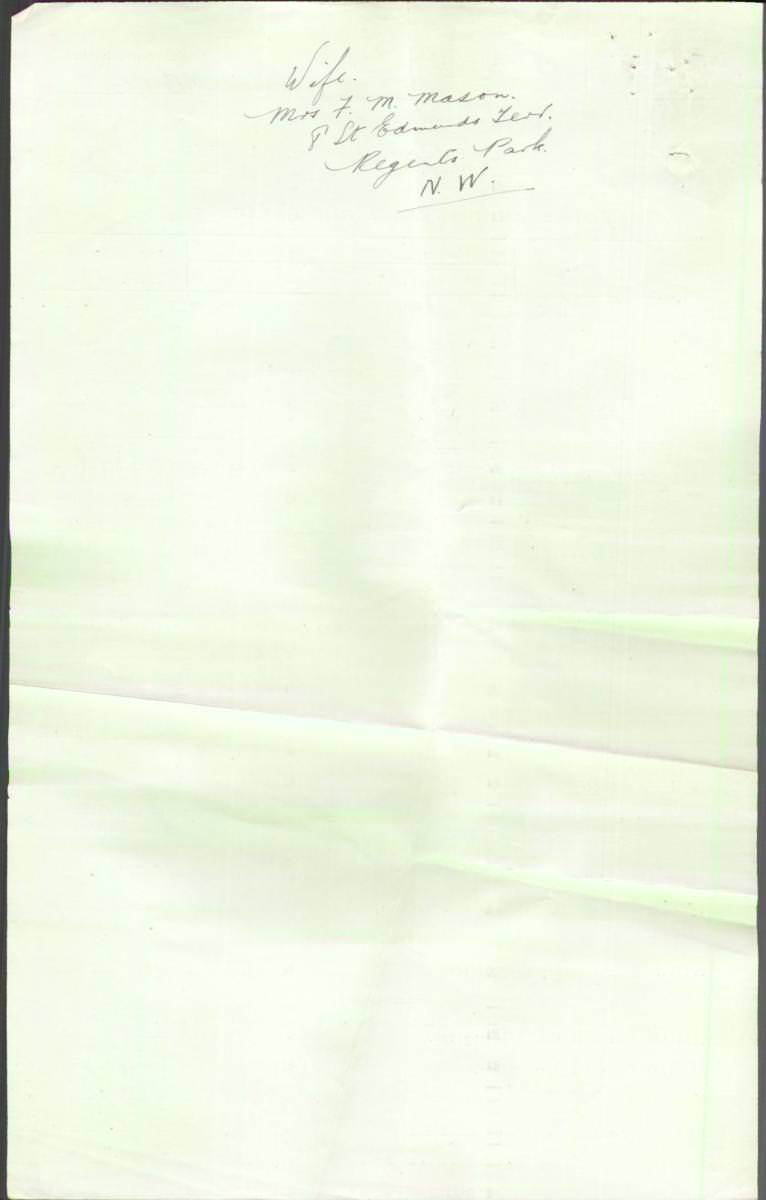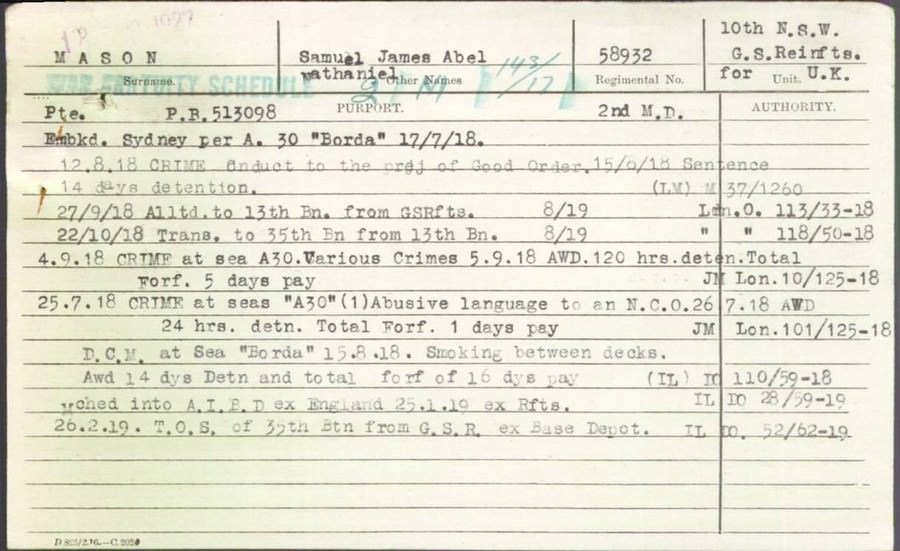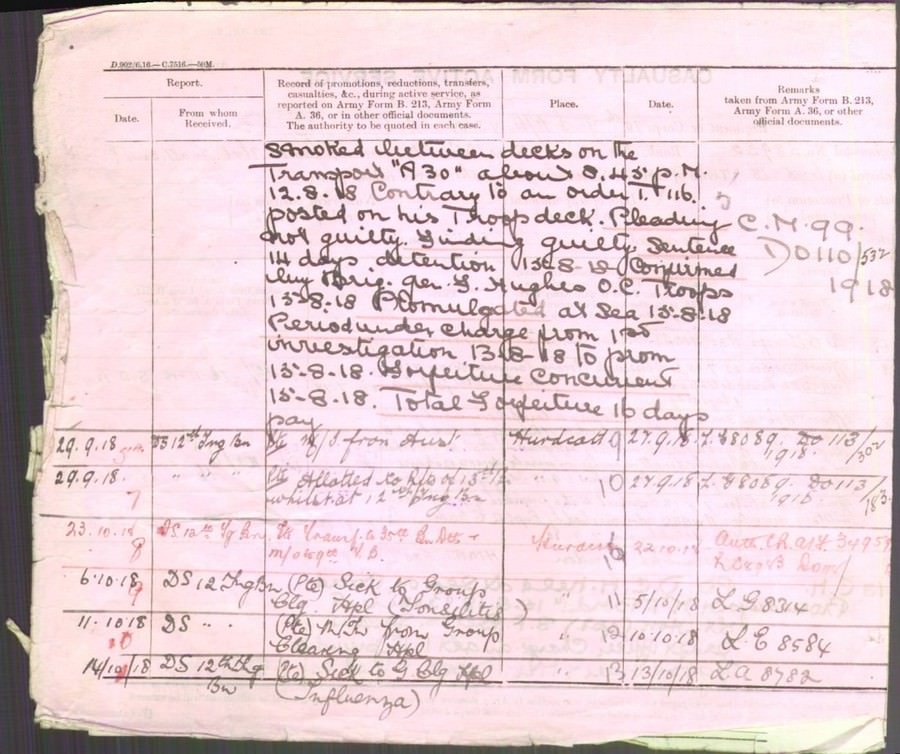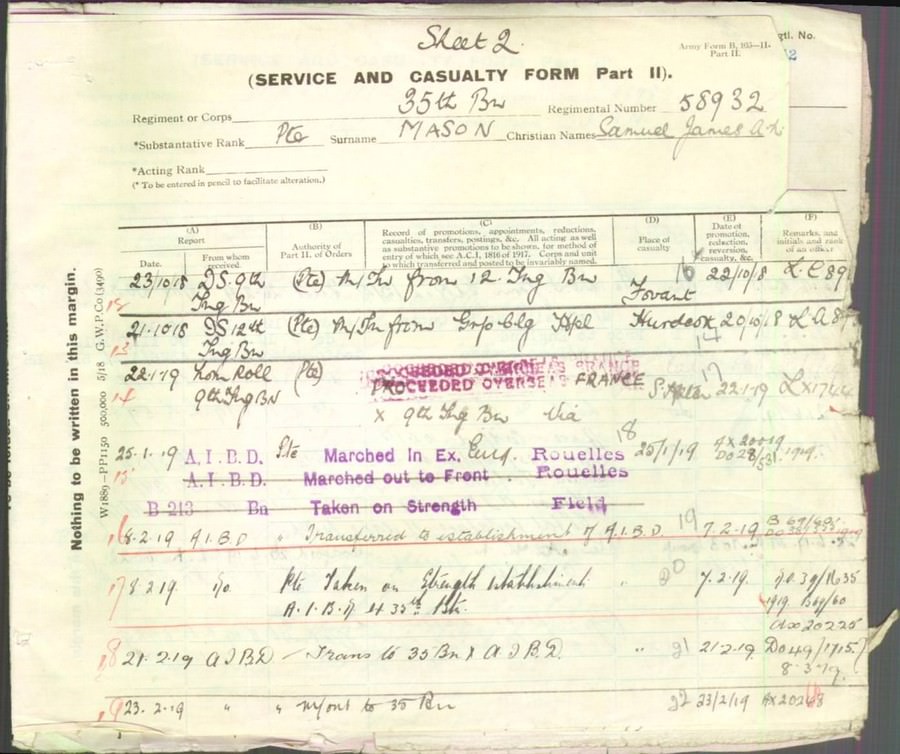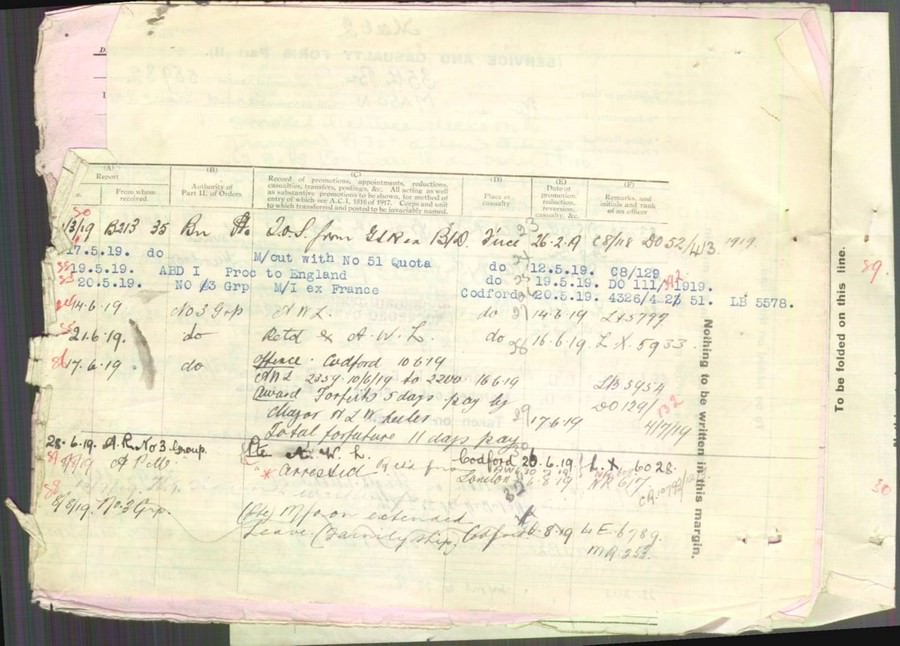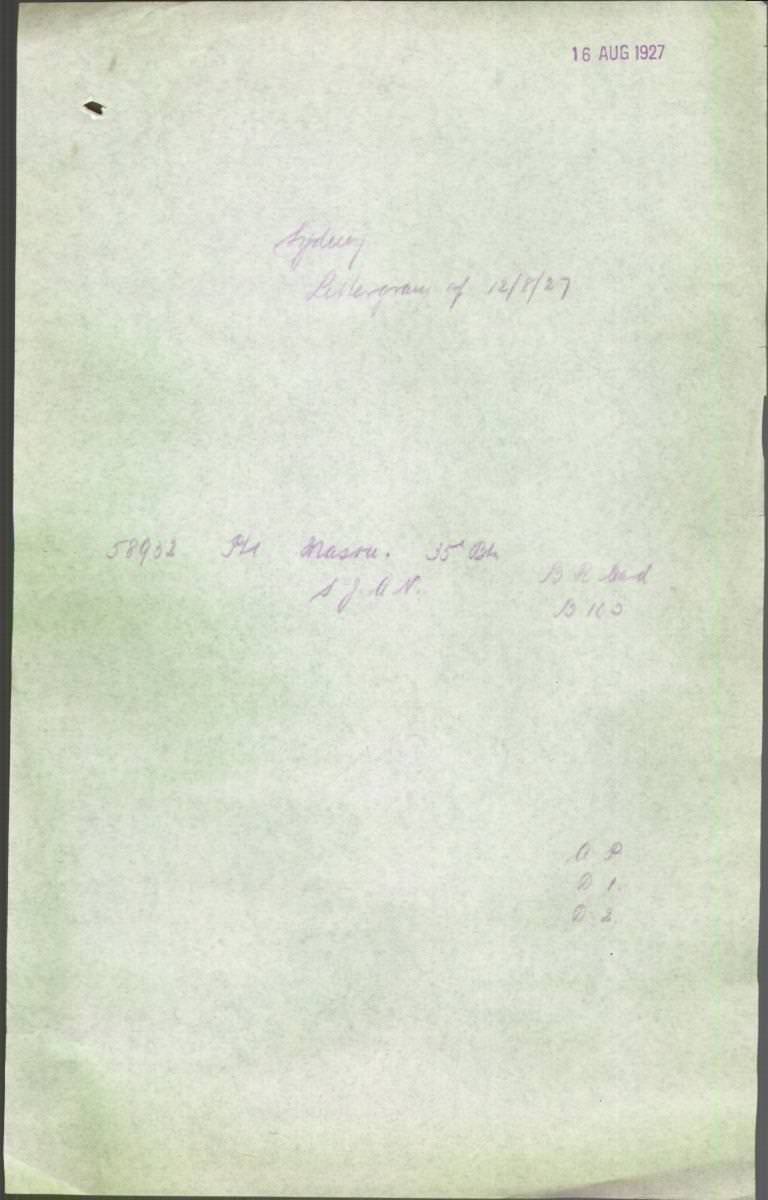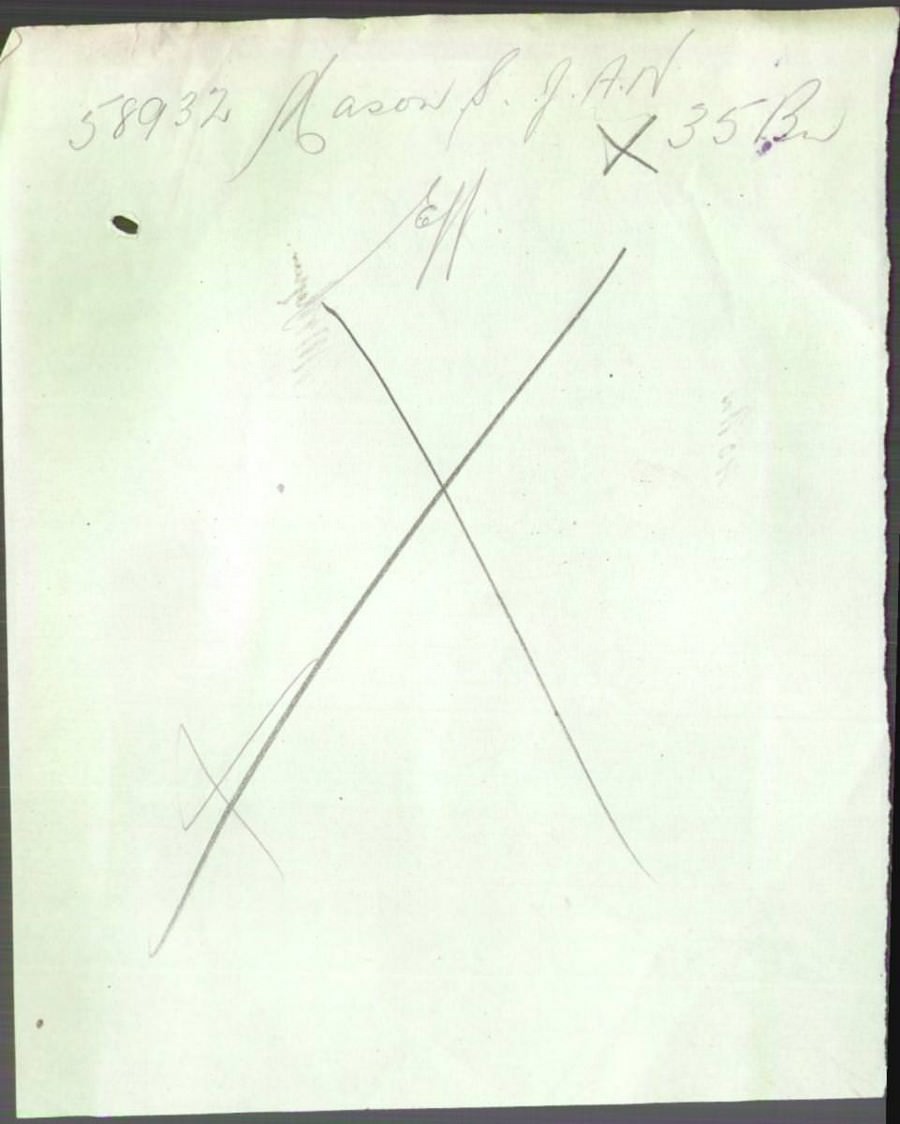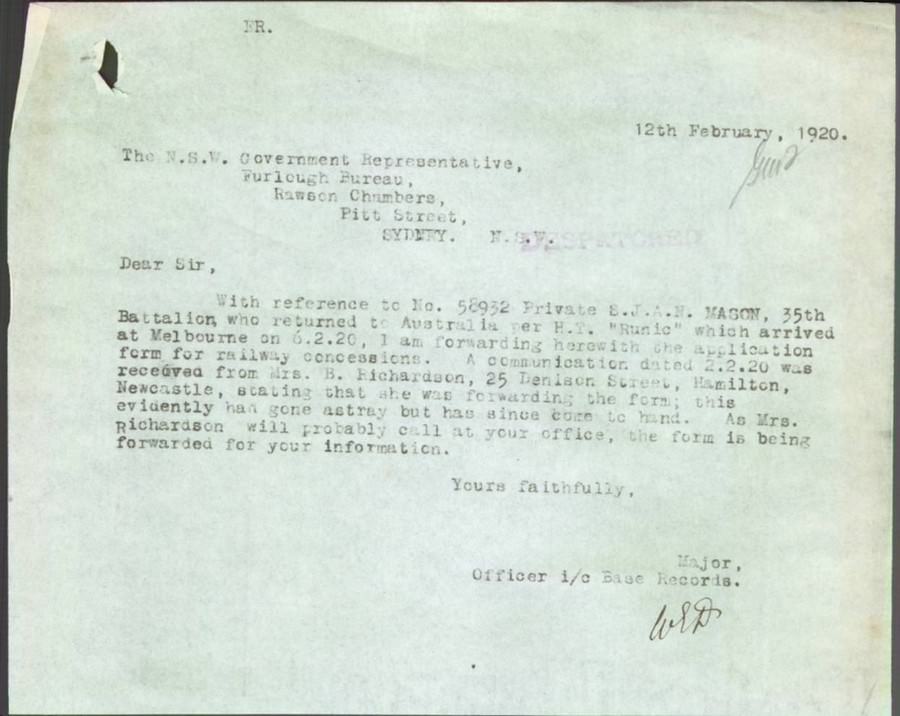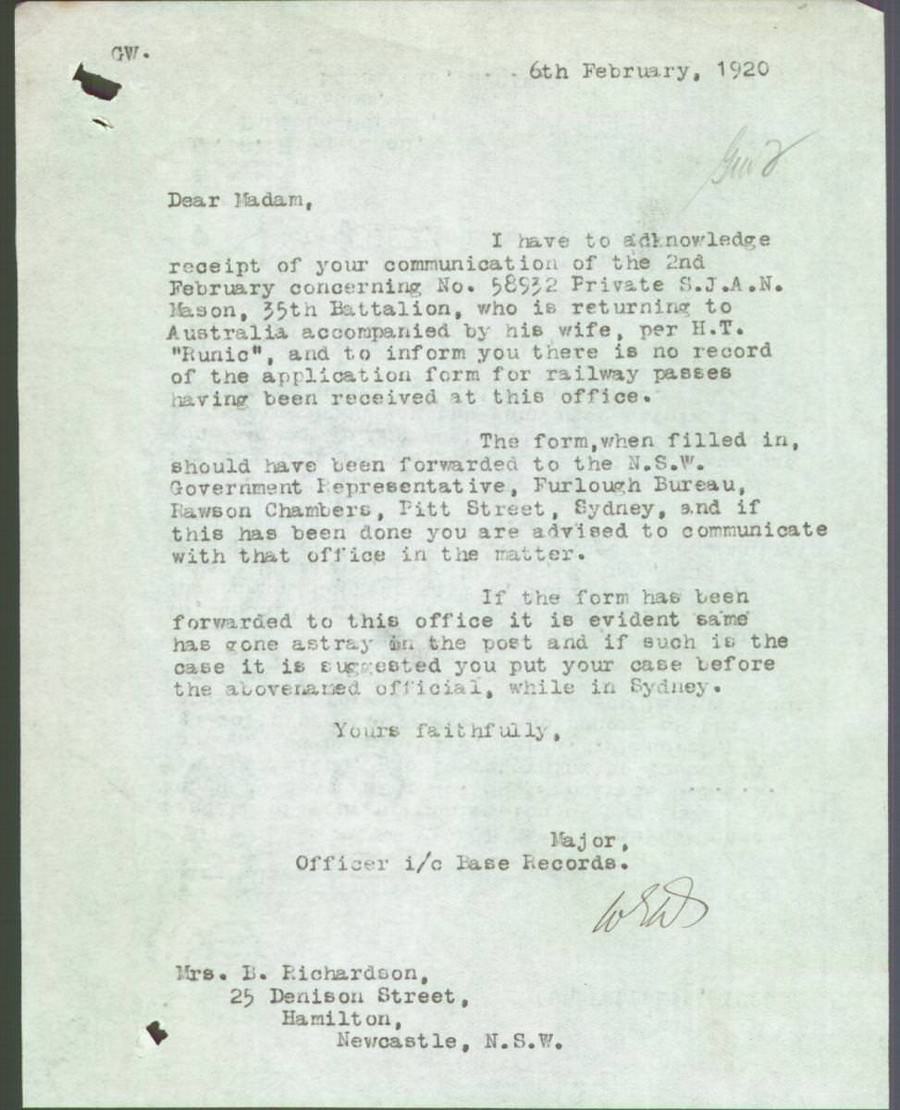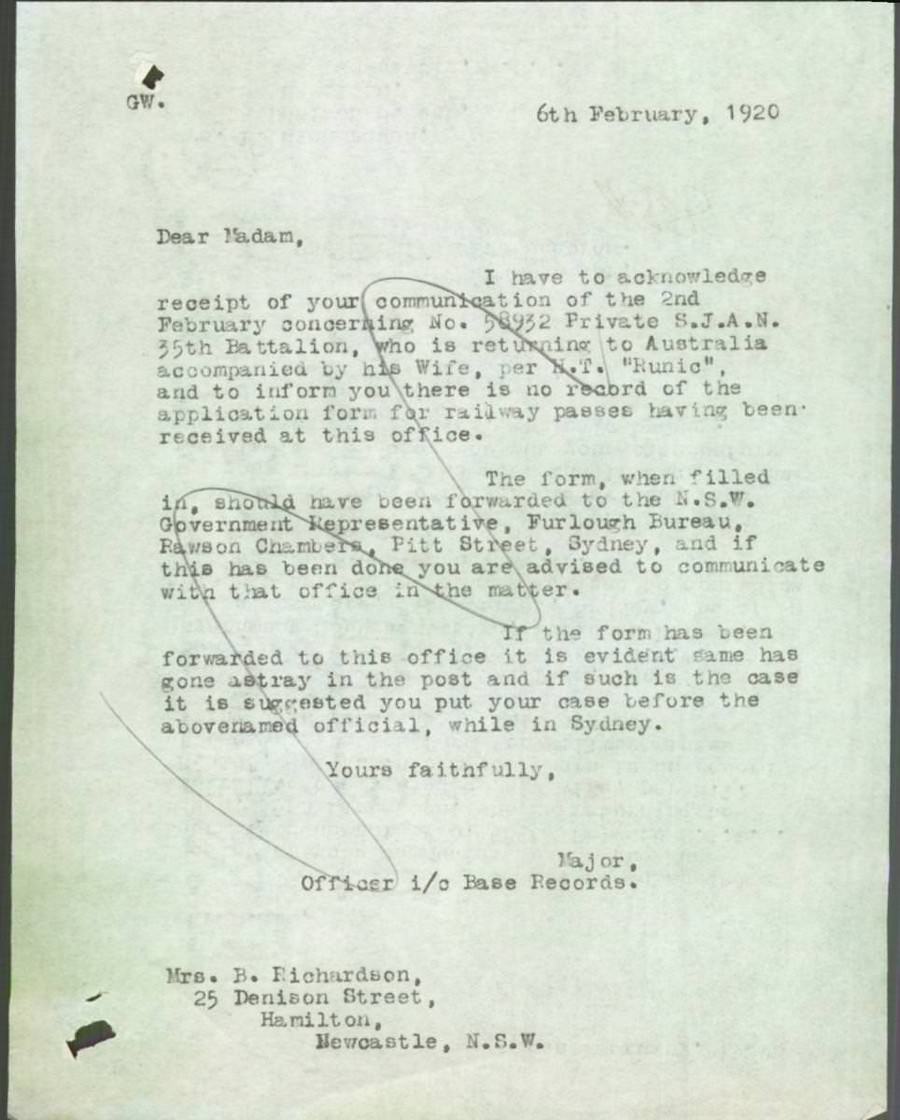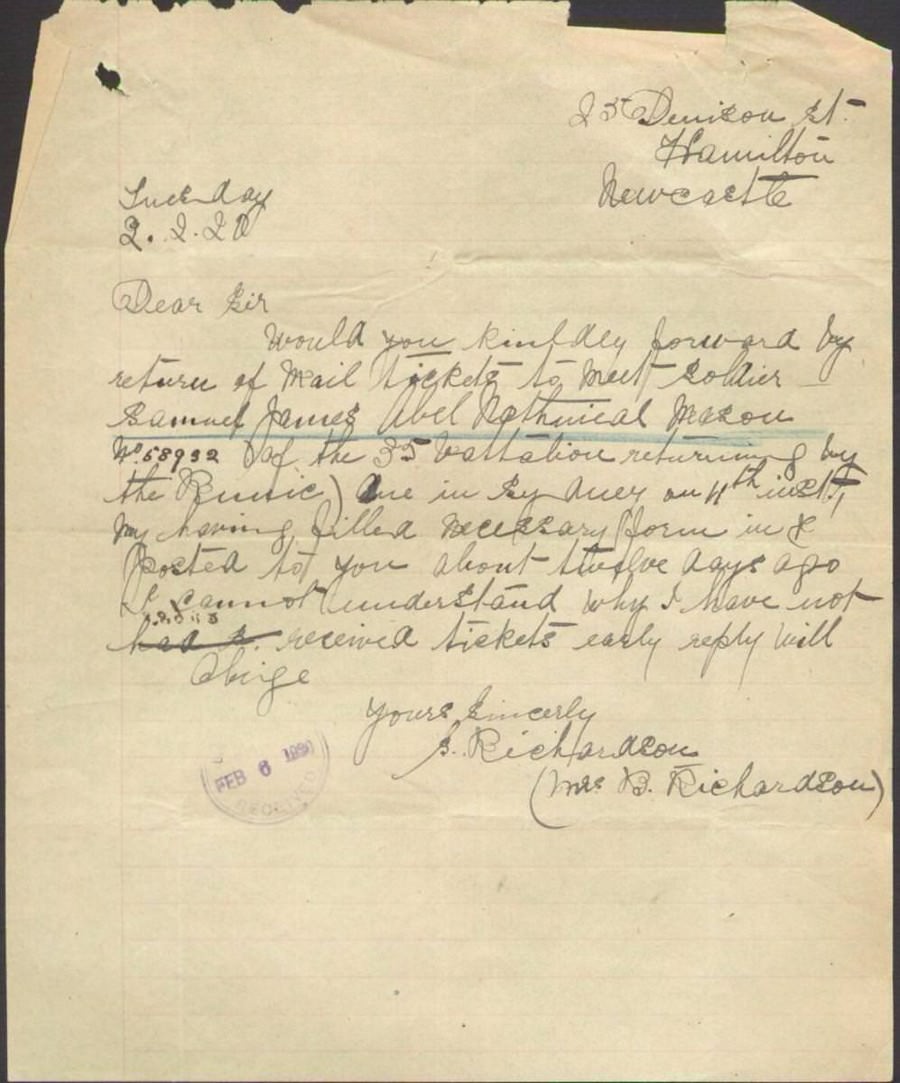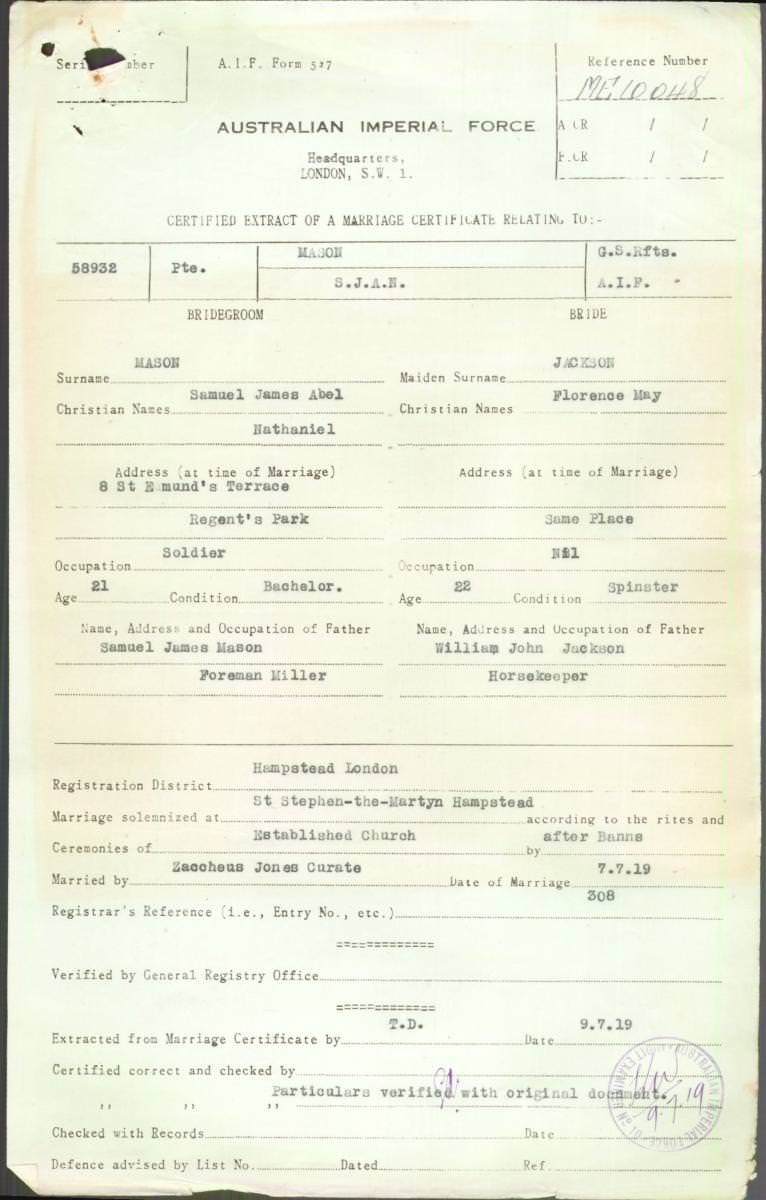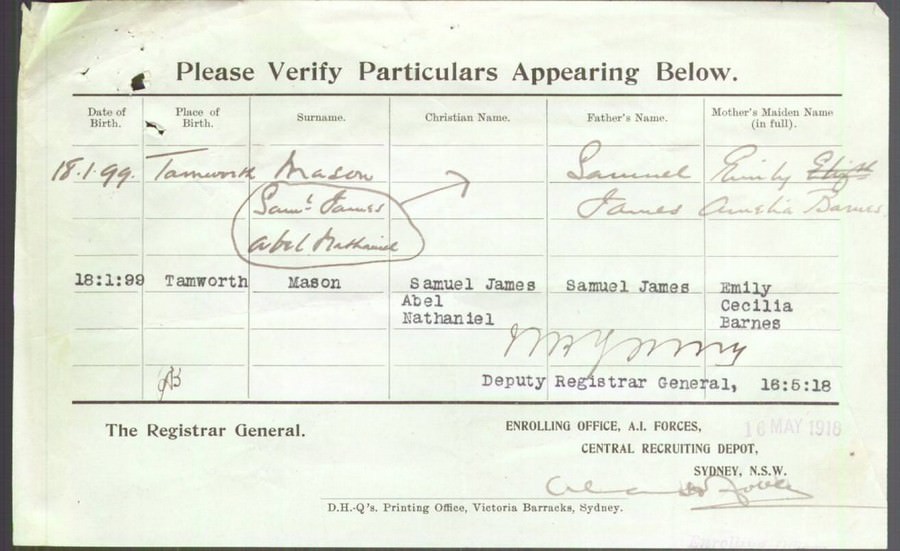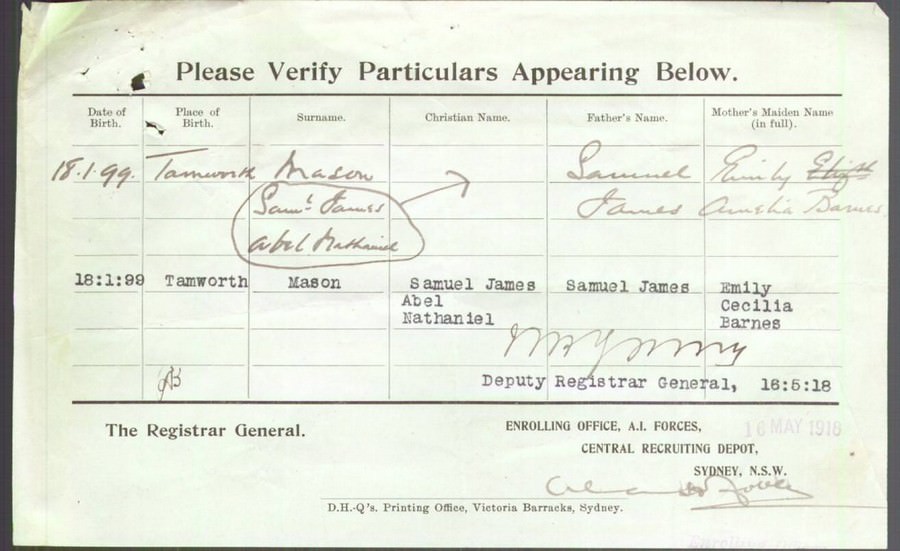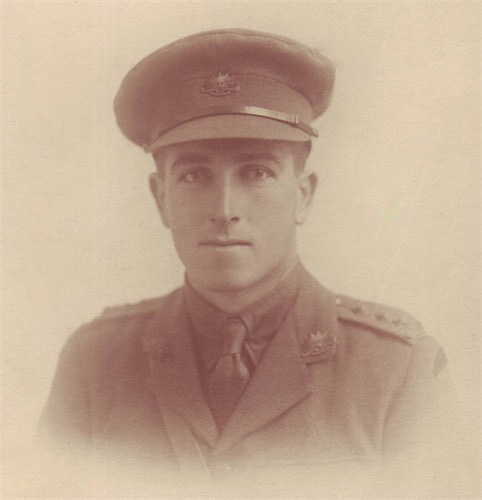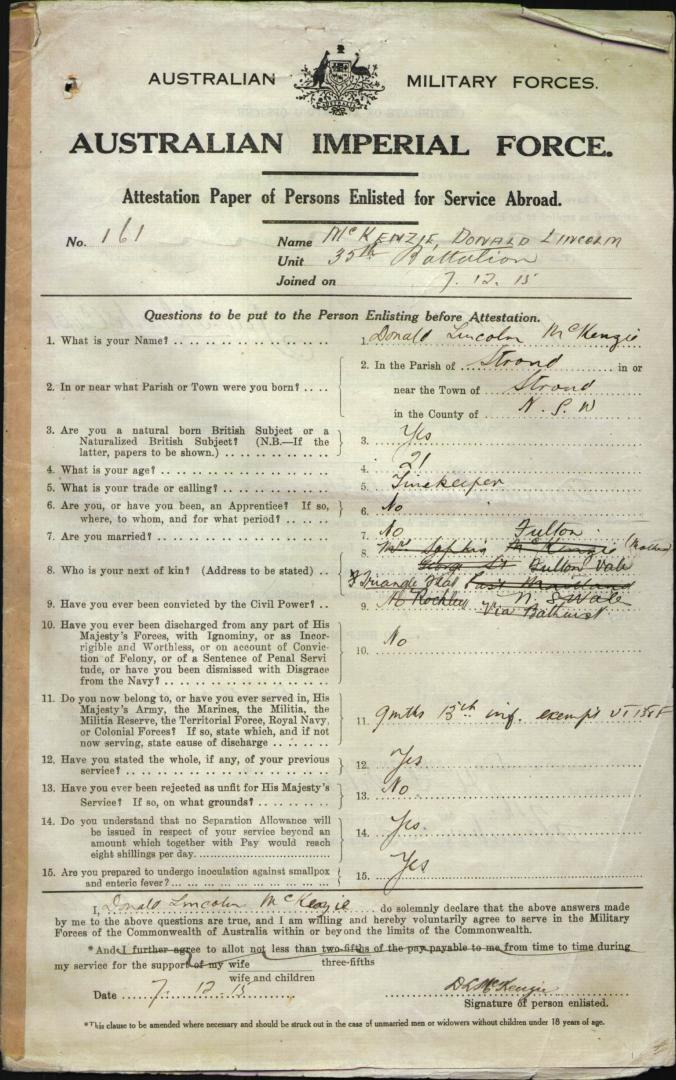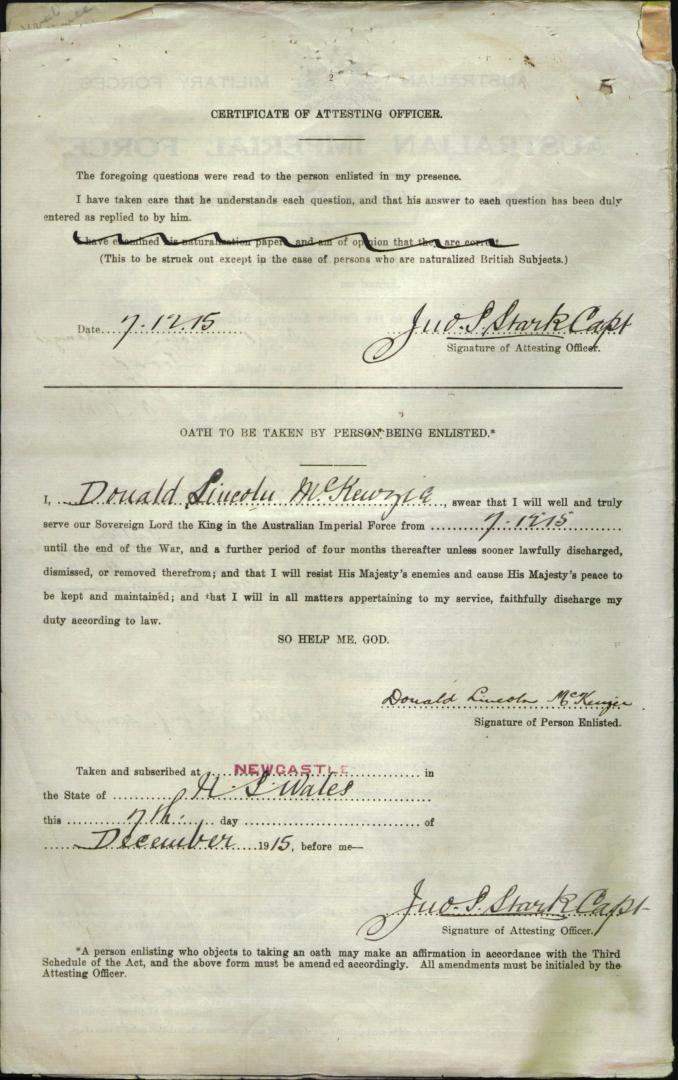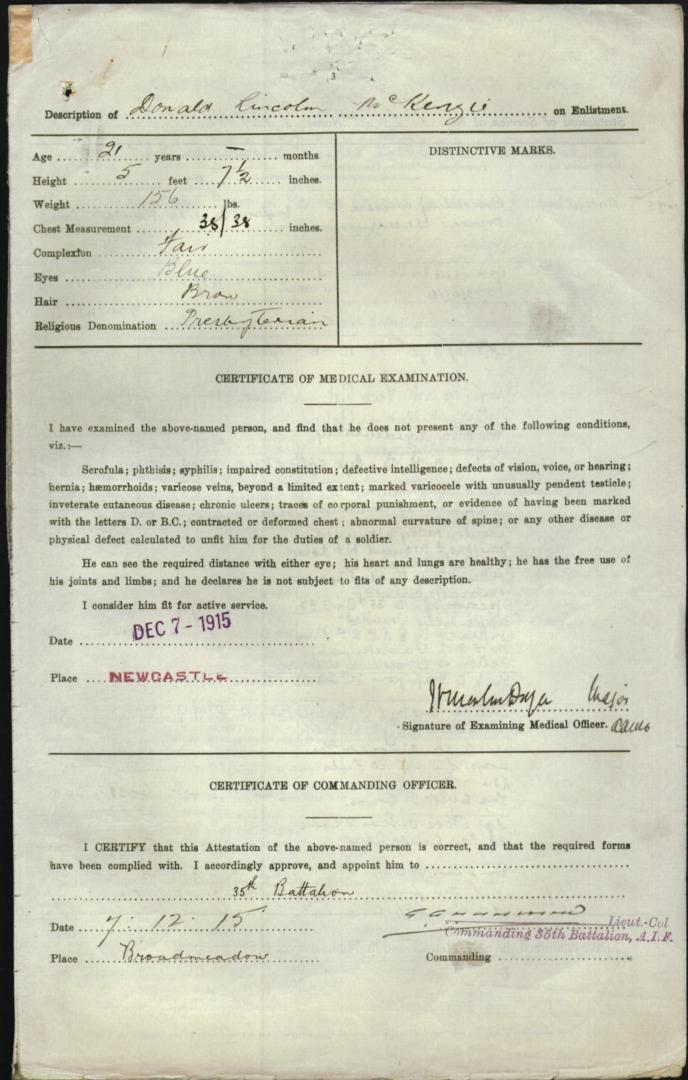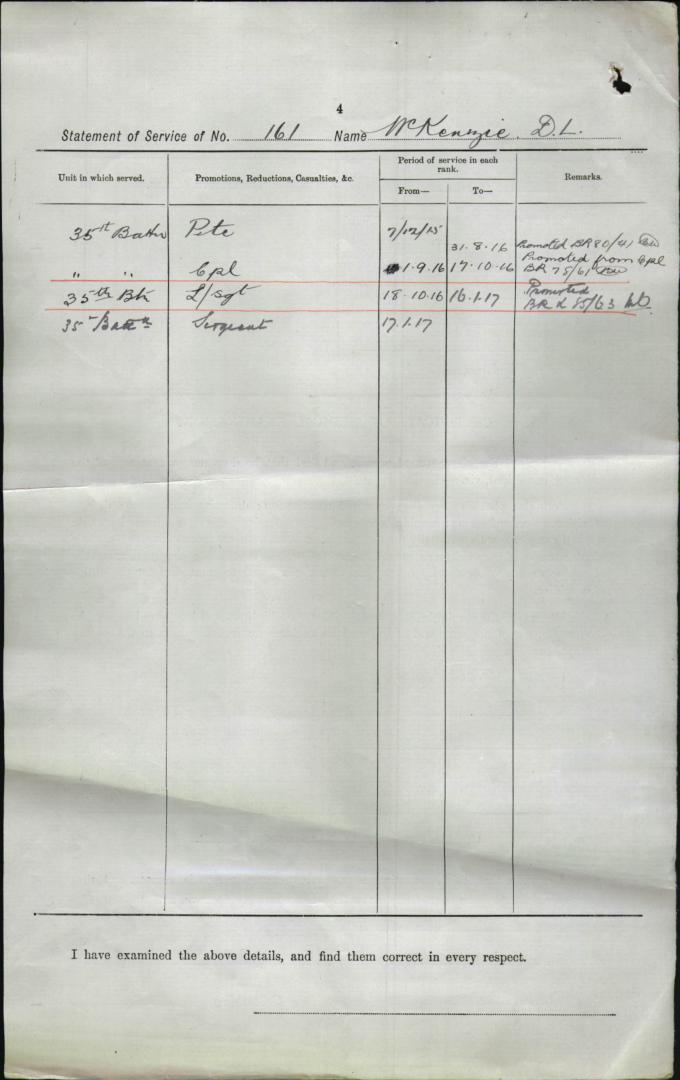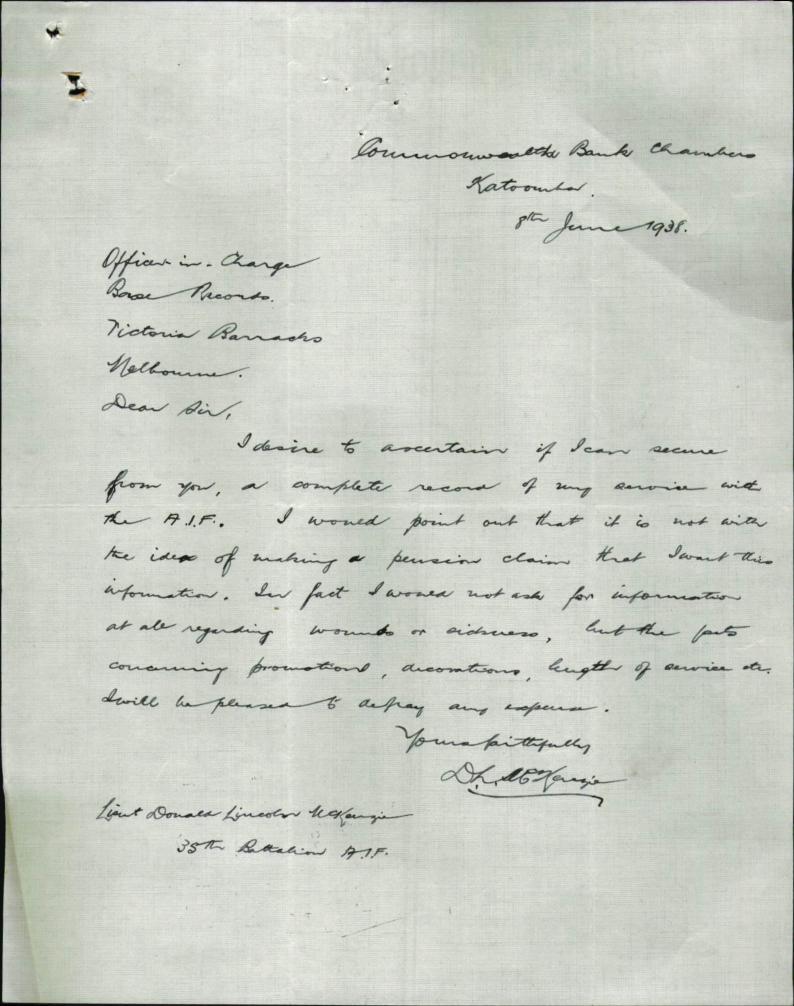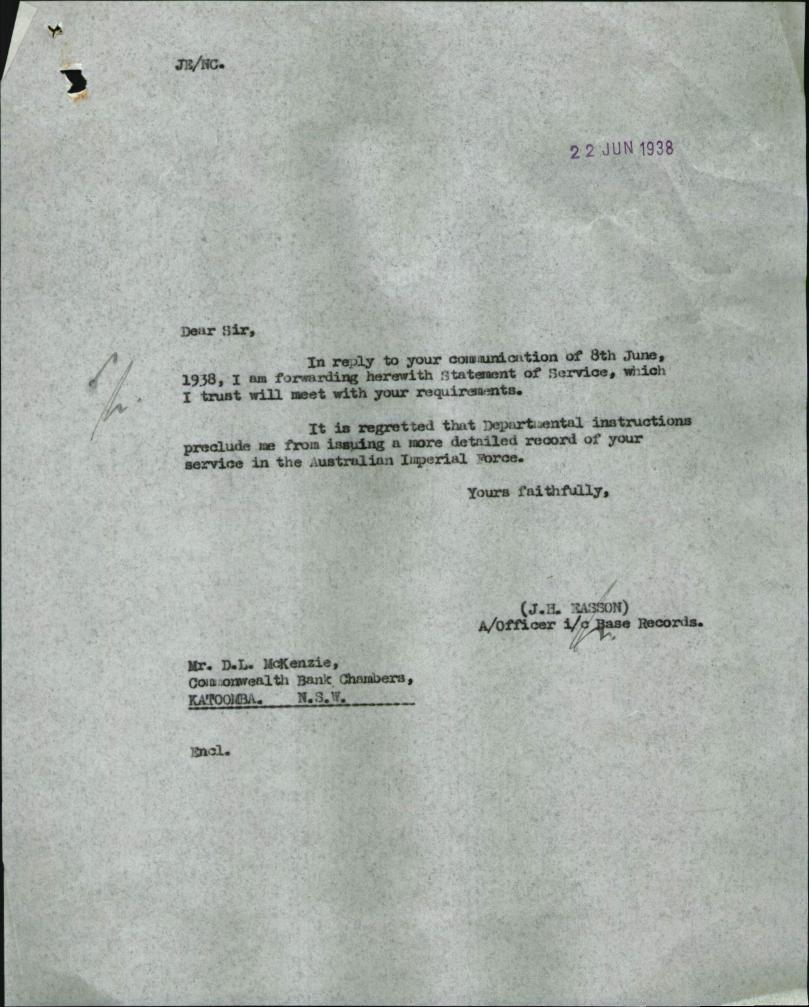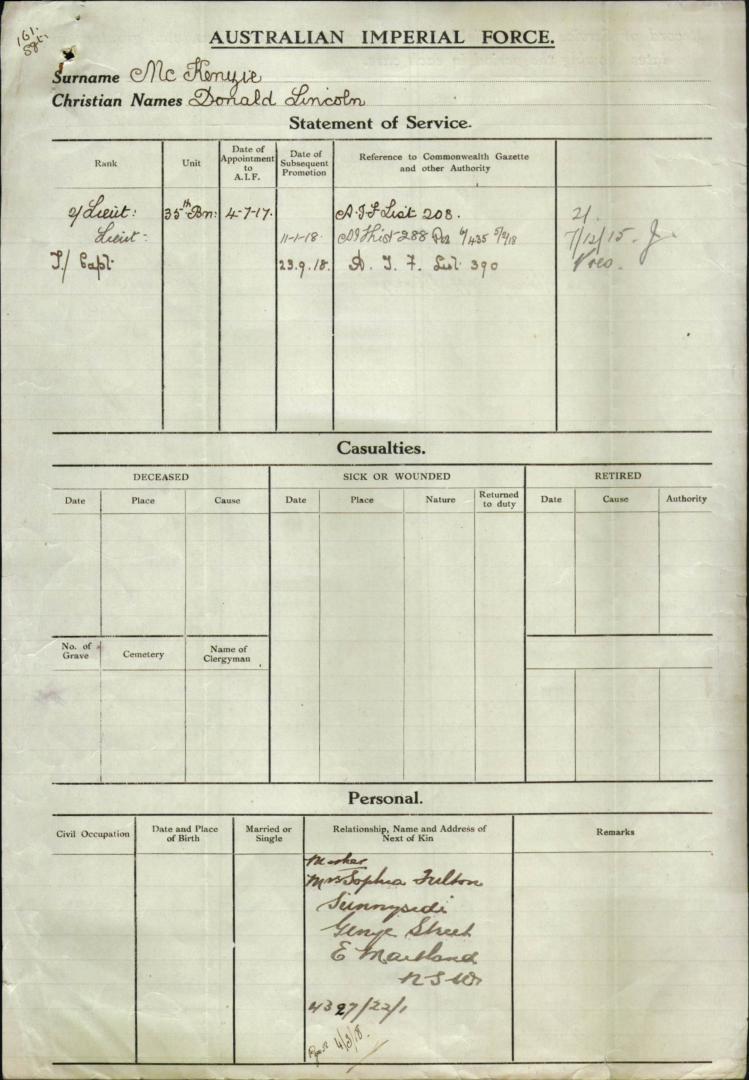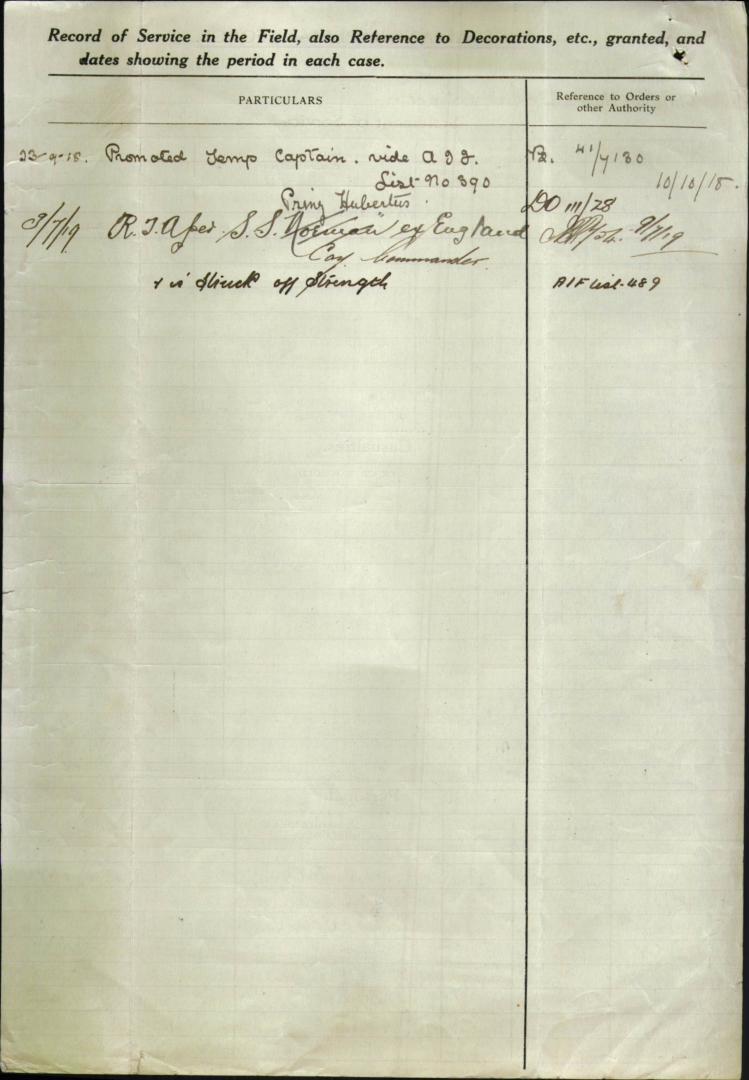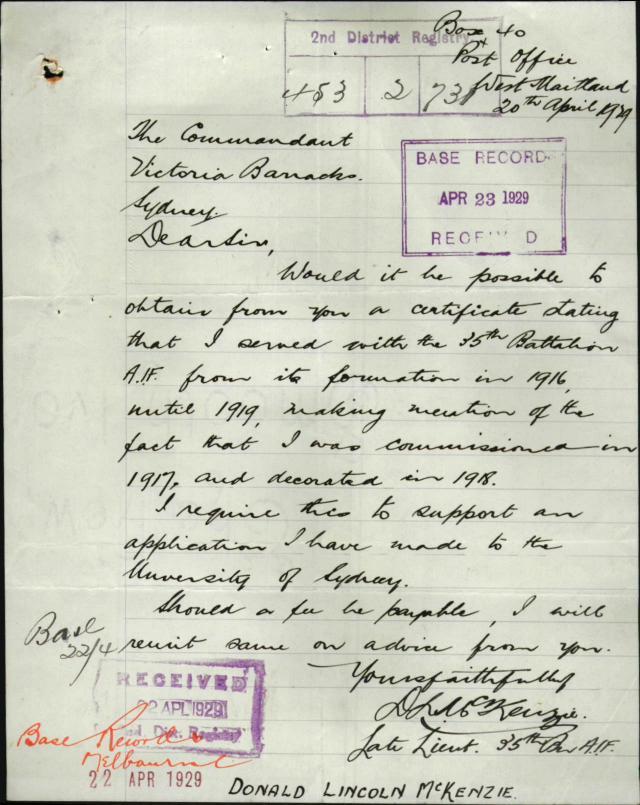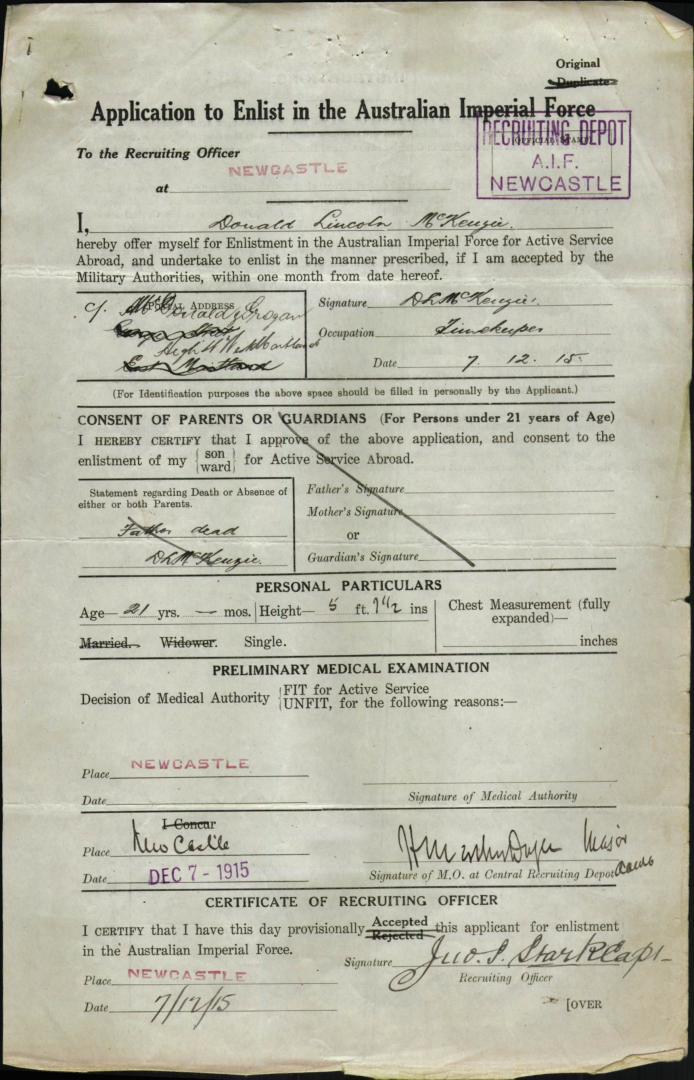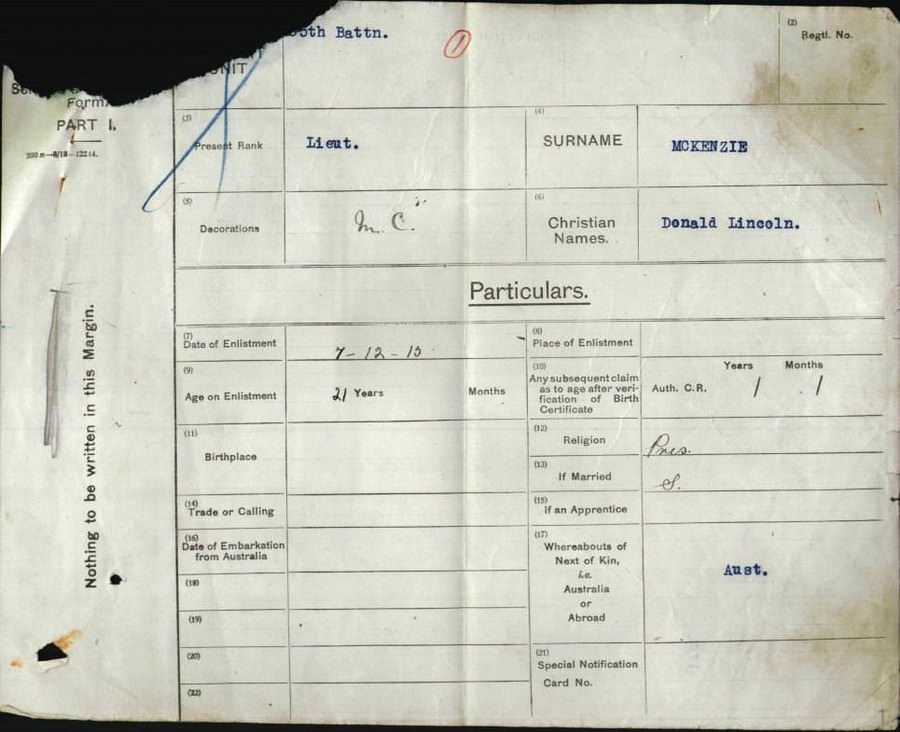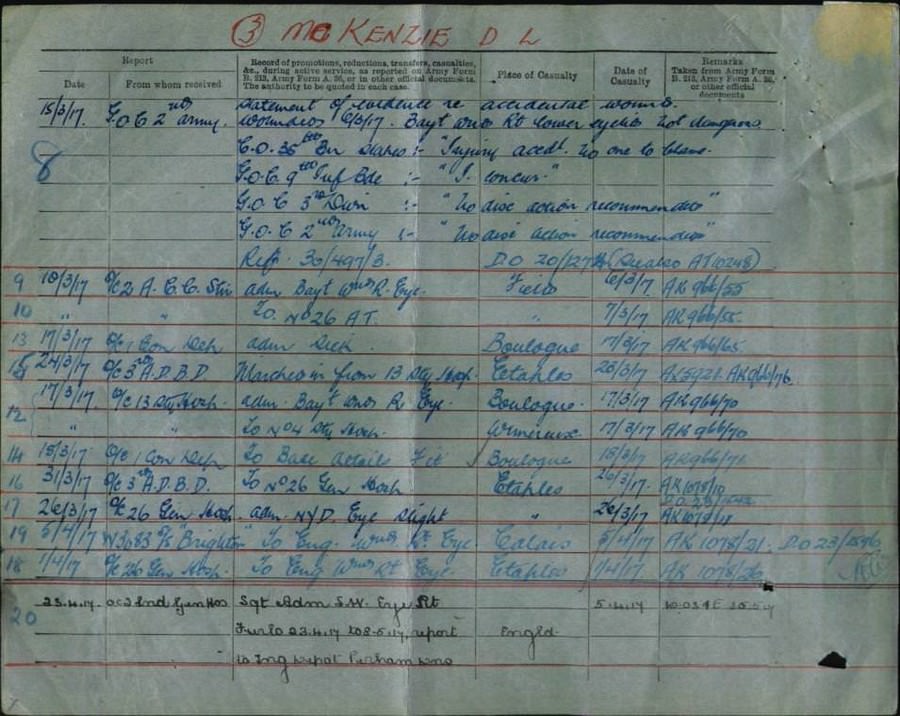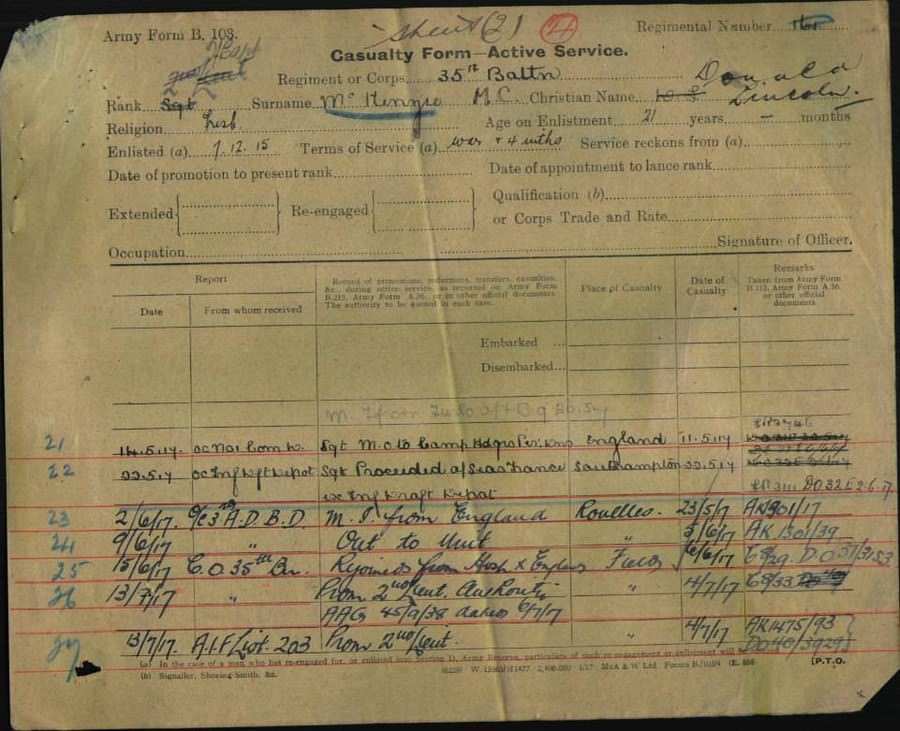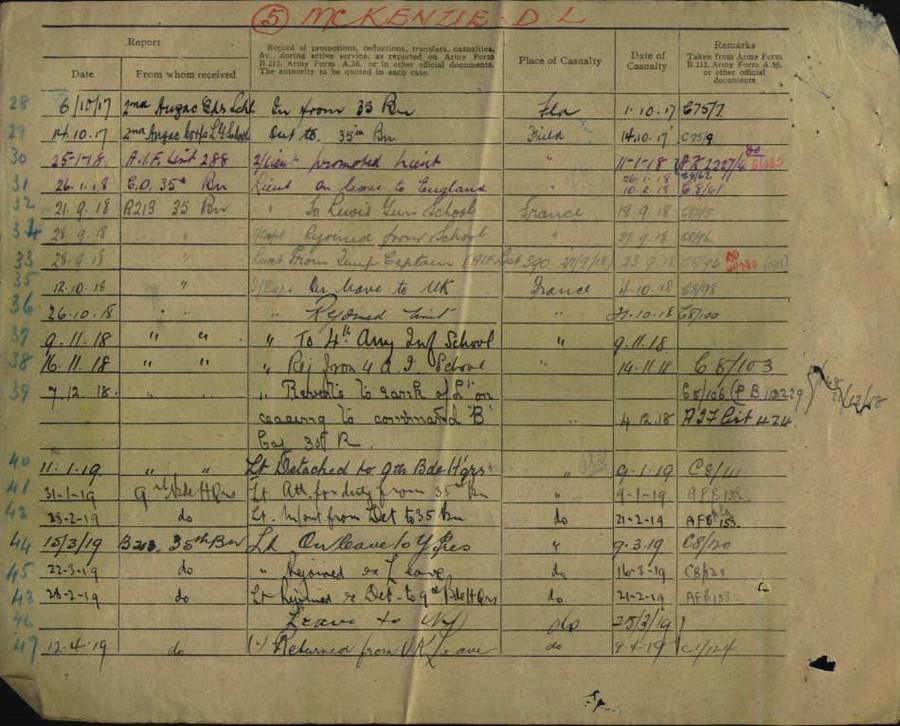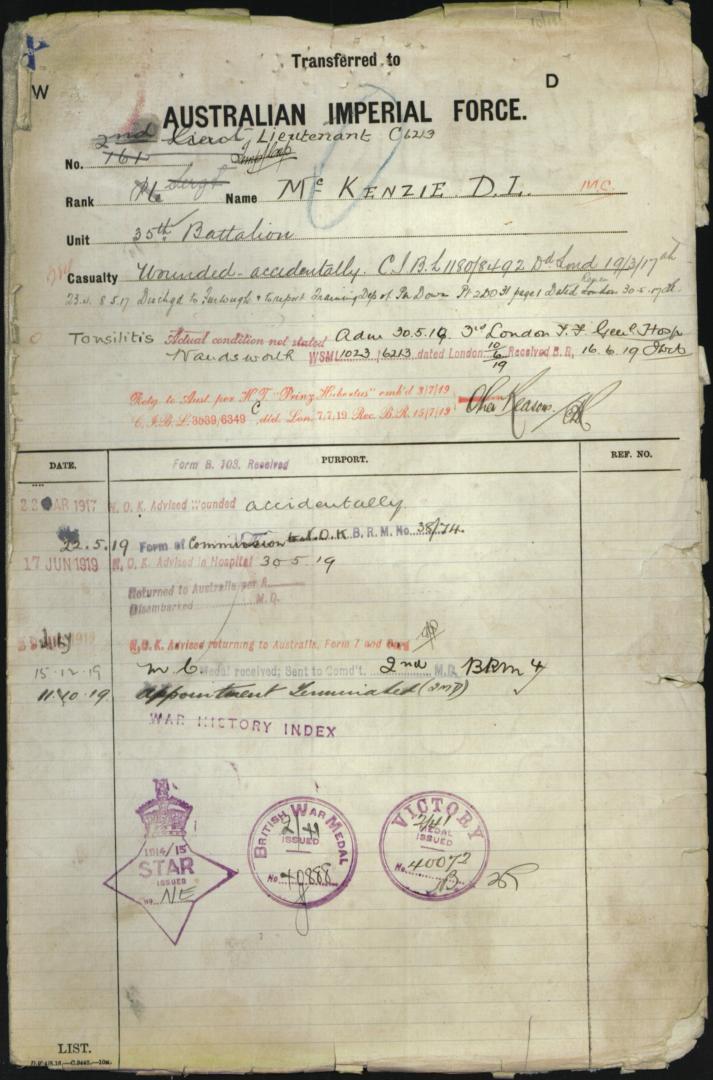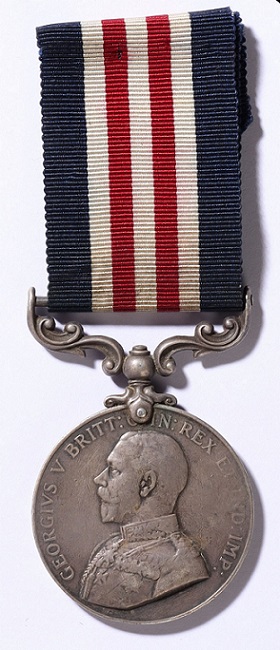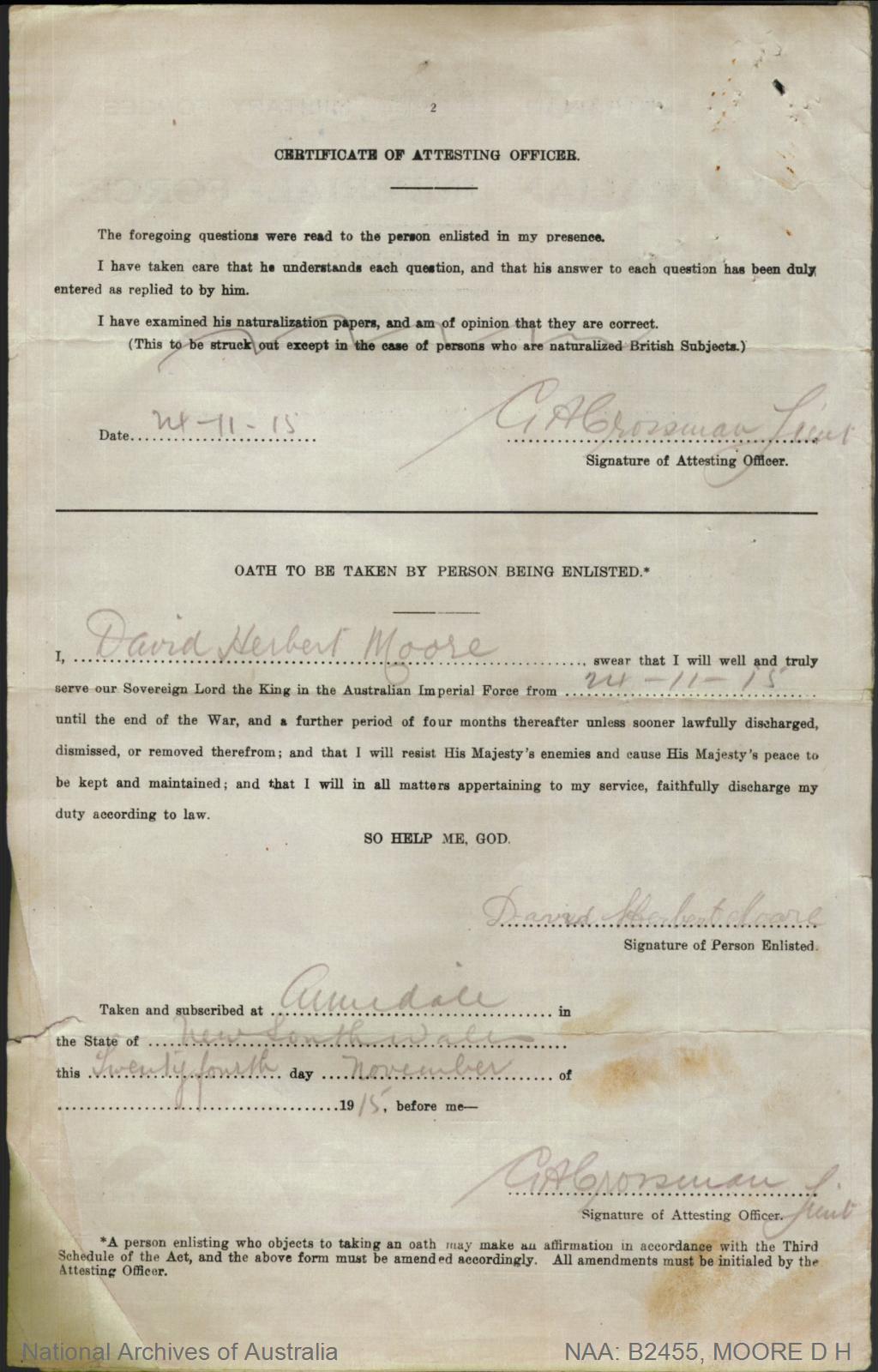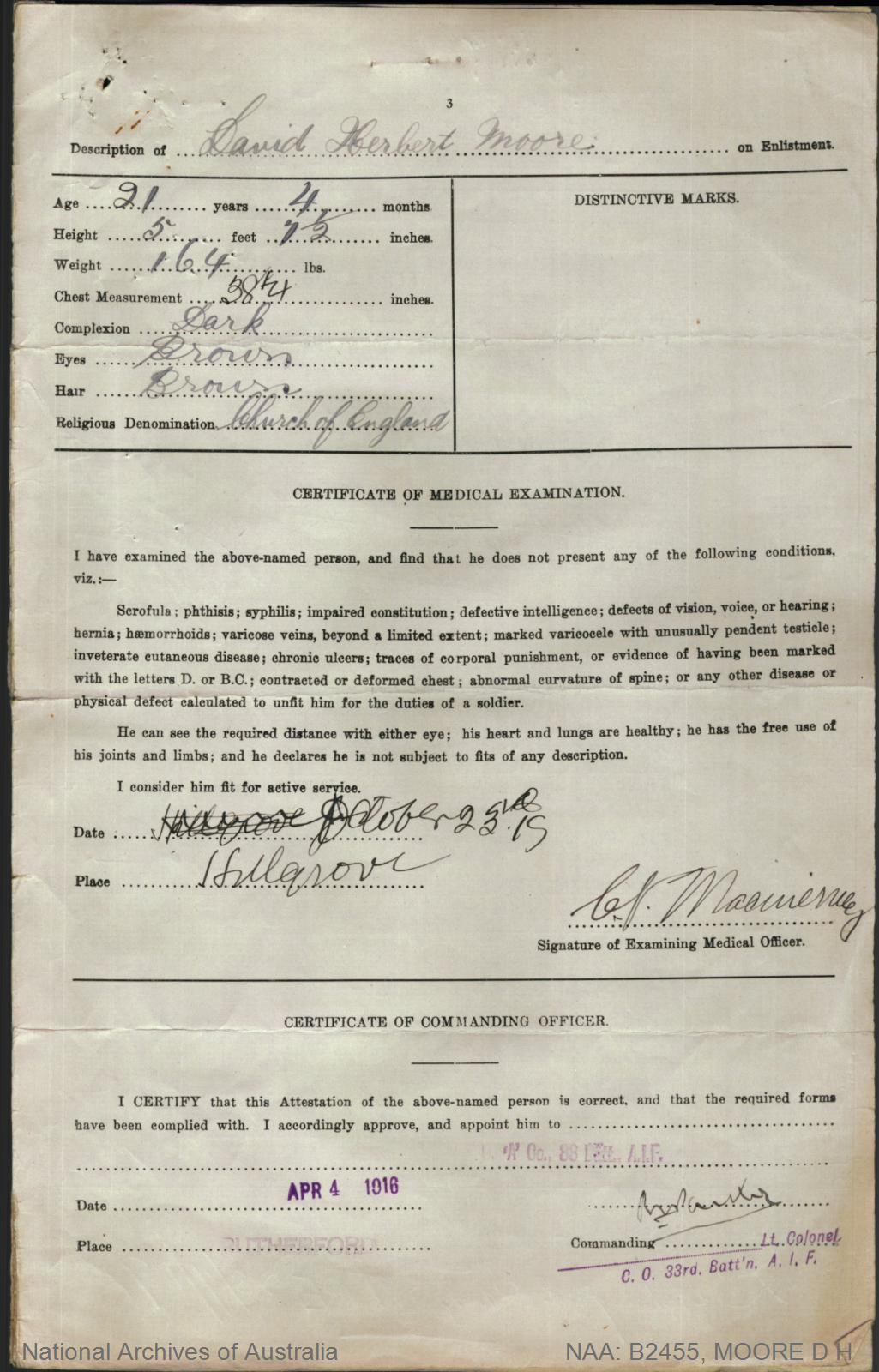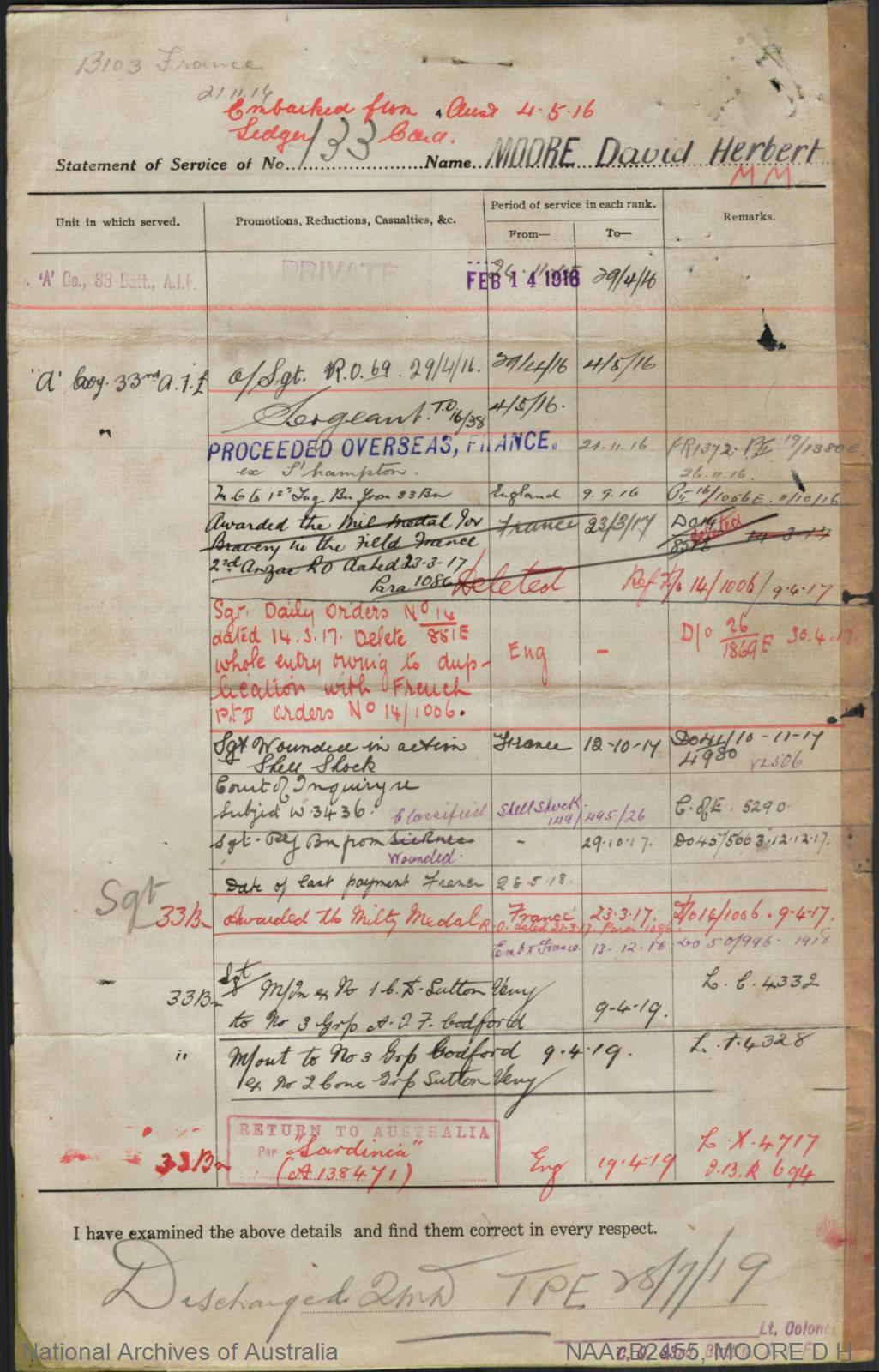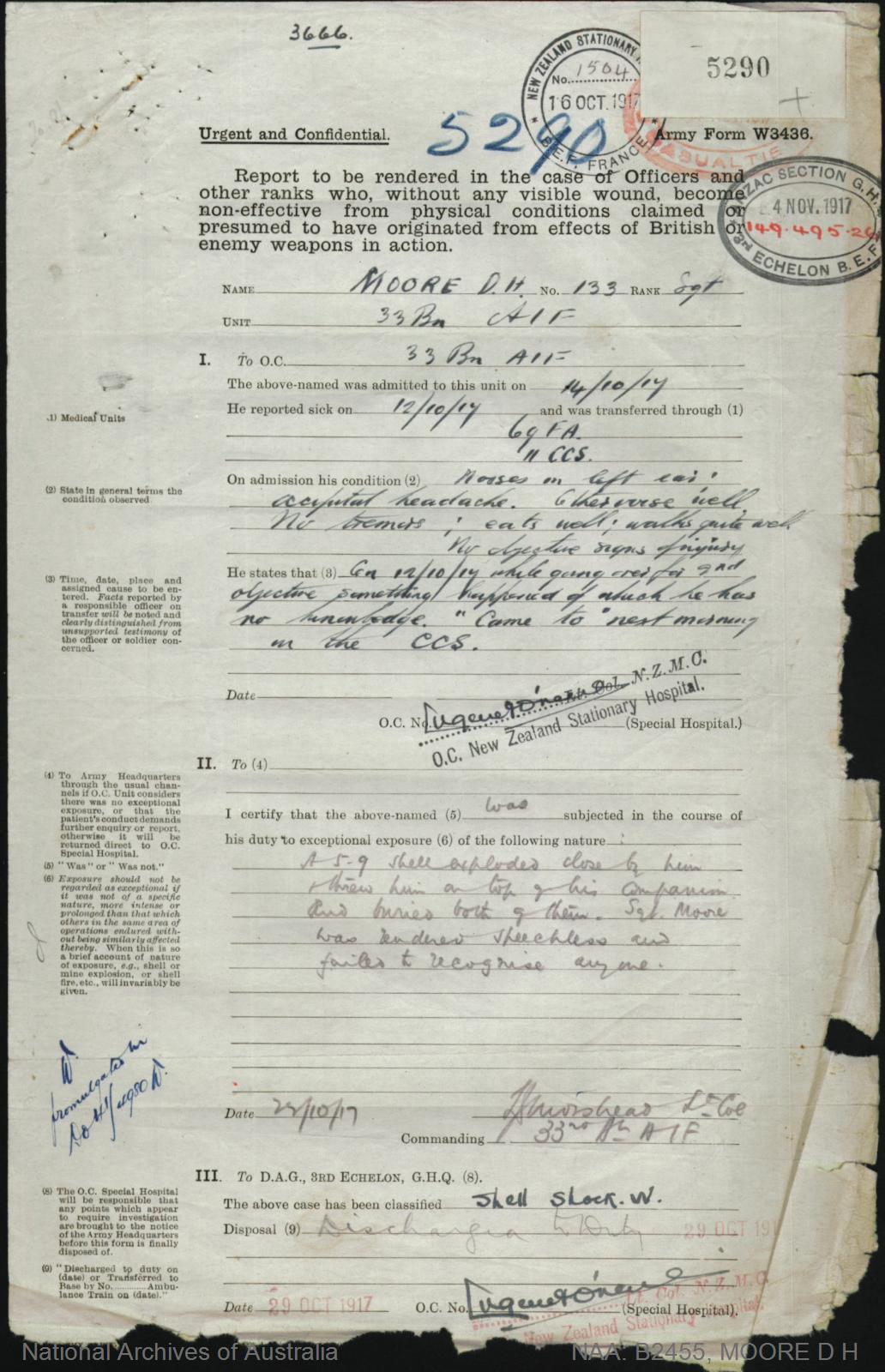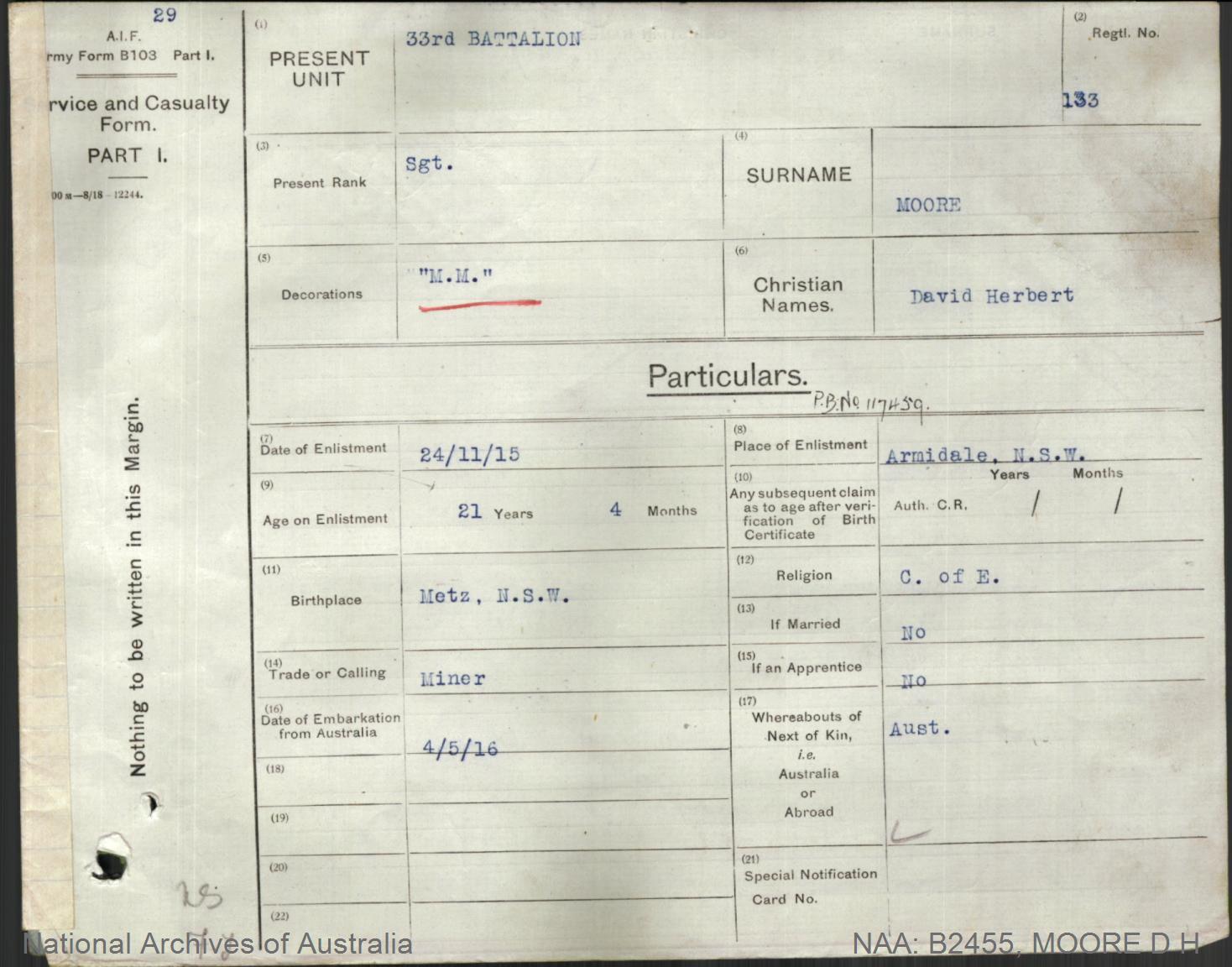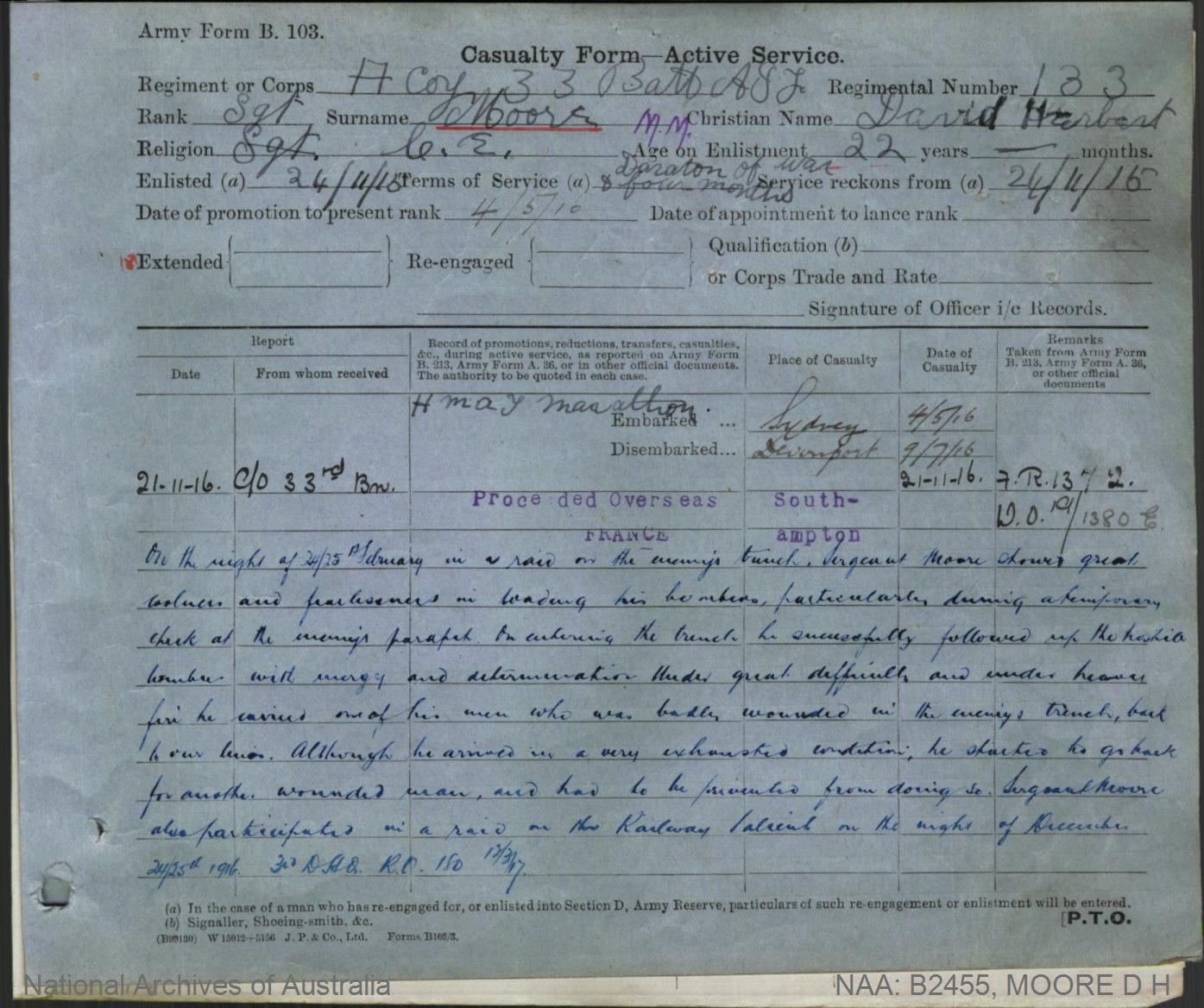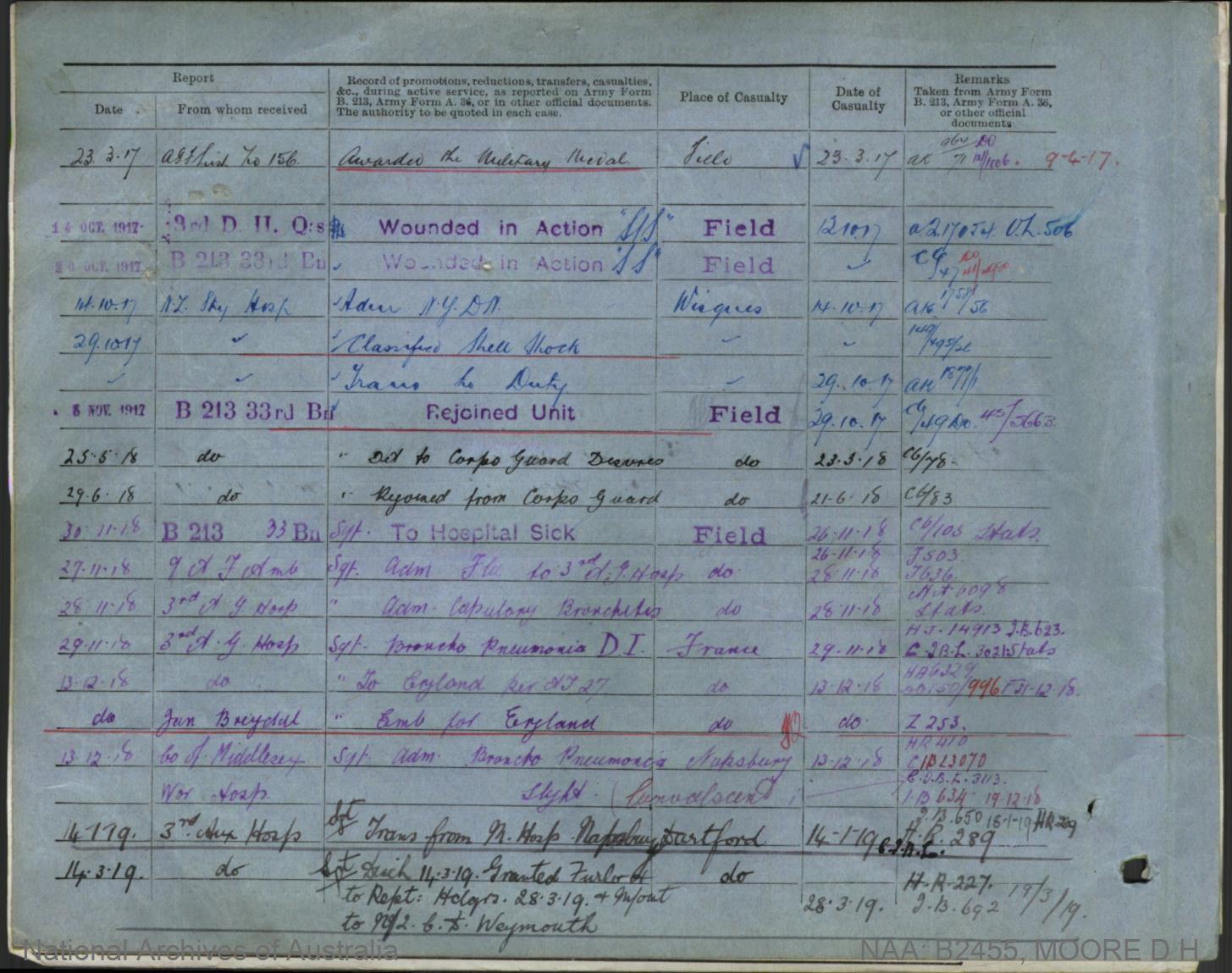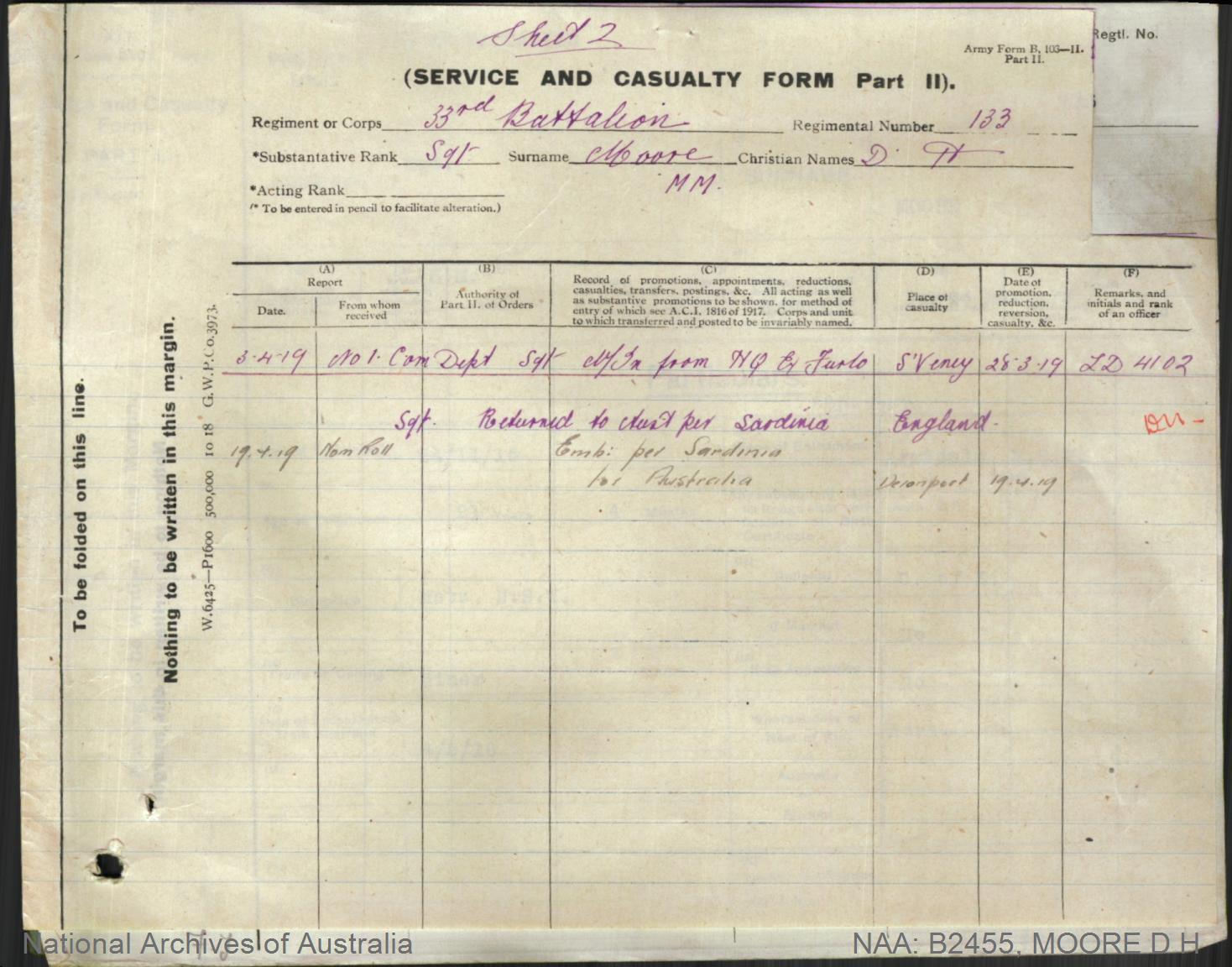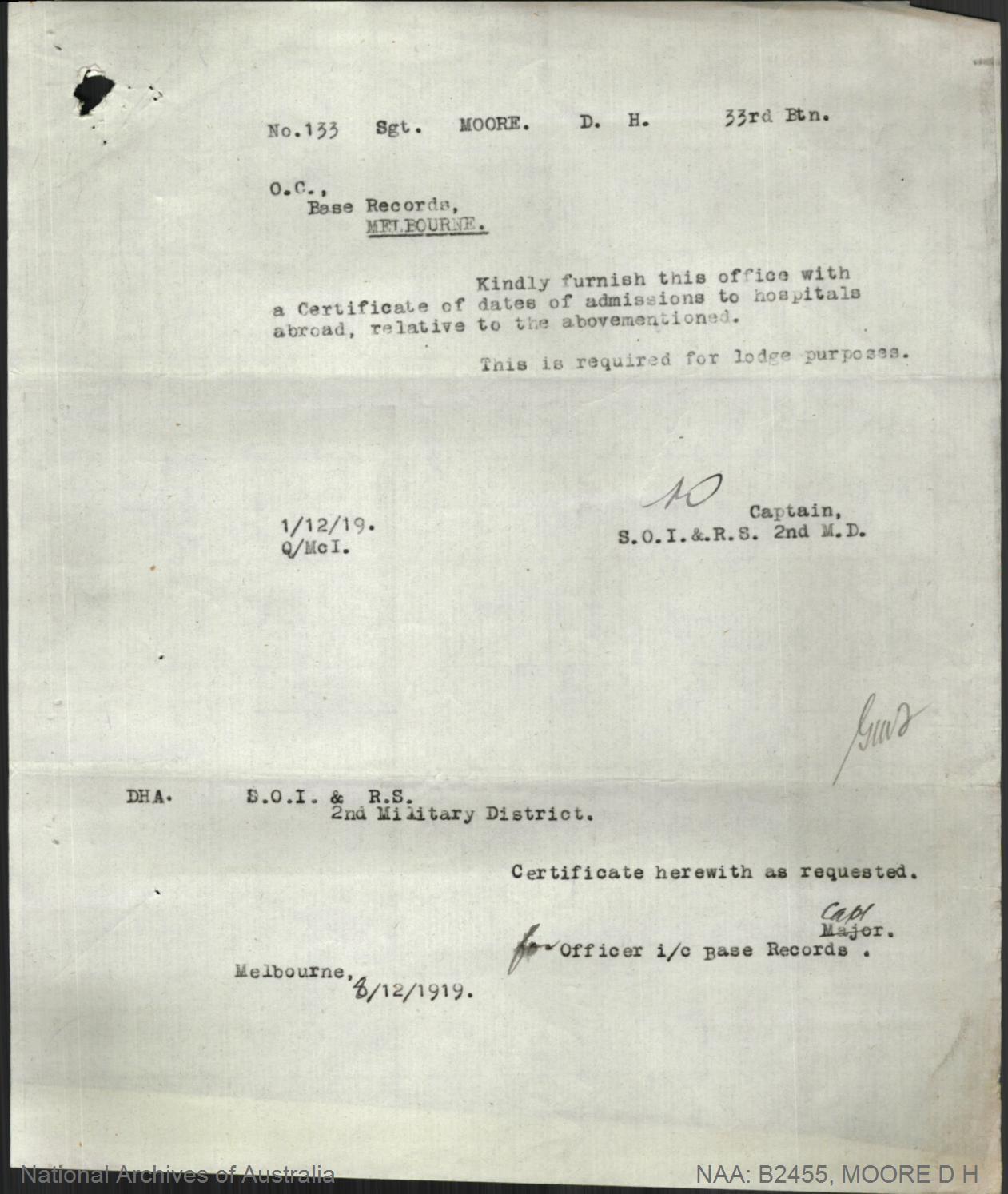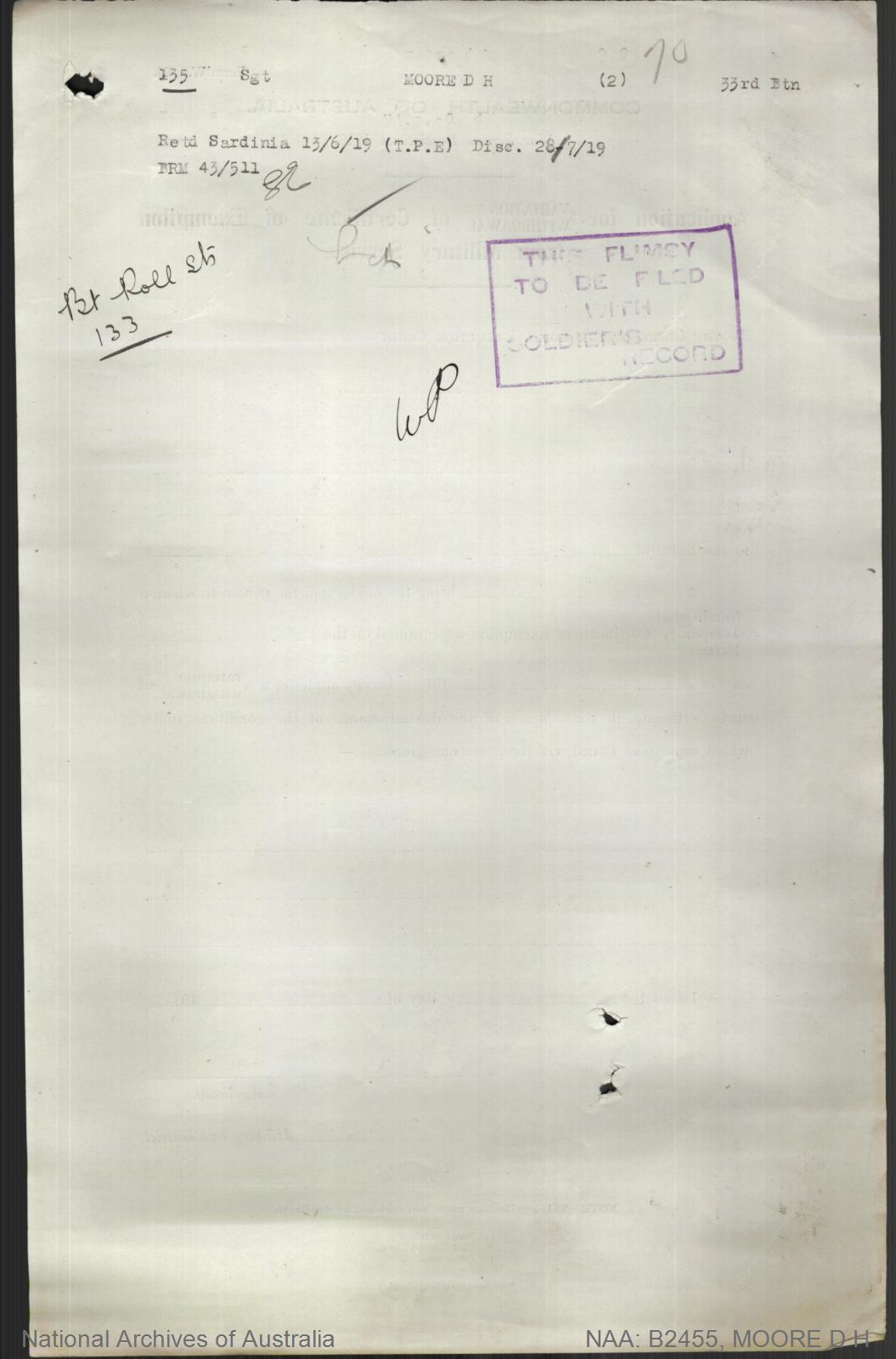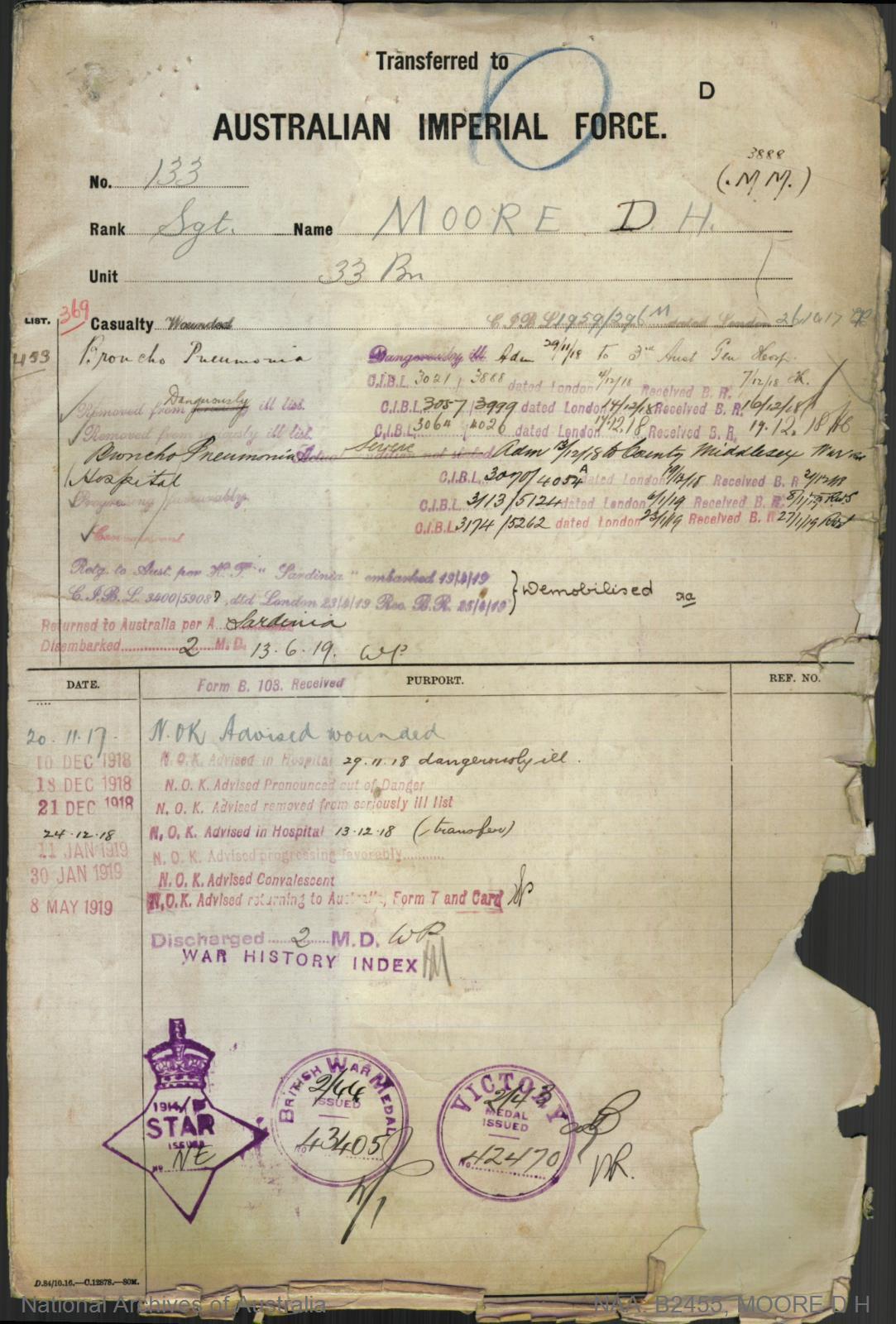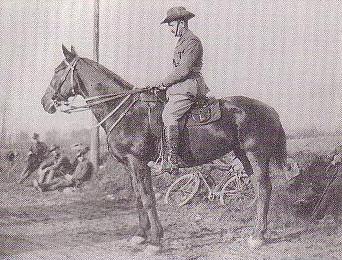
33rd BATTALION A.I.F.
Lieutenant Colonel: Leslie James MORSHEAD. C.M.G. D.S.O.
Born: 18th September 1889. Ballarat, Victoria.
Married: 17th November 1921. Melbourne, Victoria.
Wife: Myrtle Catherine Hay Morshead. nee: Woodside. (1898-19..)
Died: 26th September 1959. Sydney, New South Wales, Australia. Death Cert:19205/1959.
Father: William Morshead.
Mother: Mary Eliza Morshead. nee:.
INFORMATIONLieutenant Colonel Morshead was the Commanding Officer of the 33rd Battalion after he was transferred to the Battalion on the 10th of February 1916. Leslie served with the 13th Infantry and 49th Infantry prior to his enlistment with the AIF. Morshead served at Gallipoili and commanded a platoon of the 2nd Battalion during the landing at Gallipoli on the 25th of April 1915. He fought at Lone Pine and whilst commanding his Company was Wounded in Action.

H.M.A.T. 'Marathon' A.74,
2nd July, 1916.
To Lieut.-Col. L. J. Morshead, Oflicer Commanding, 33rd Battalion, A.I.F.
Sir, — I ask you to accept this flag as a 'memento' of our long cruise together, a distance of over 15,000 miles, a record transport voyage. Not only as a 'memento of a record' do I ask your acceptance of this, but as symbolizing the daily increasing, and unbroken good feeling which has existed throughout our ten weeks of 'shipmatehood,' not only between you and me personally, but between every member of my crew, and with out exception, everyone of the officers and troops under your command. This flag is to us all that is emblematic of the Great Empire which you and ourselves serve in our varying spheres, and I know that in your keeping it will remain as always, inviolate. The super-imposing of the regimental number is to me a guarantee of this. We are soon to part, and my chances of seeing much more of you all, will be, in the next few days, curtailed, but before you go I will ask you to convey to all under your command my appreciation in the working of this ship. That you may have the best of luck, and return safely to your own great country, and to those you hold dear, is the sincere wish of us all. For the officers, engineer-officers, and crew of the transport. 'Marathon'
I sign.
W. M. JERMYN,
Master.
Moree Gwydir Examiner and General Advertiser (NSW : 1901 - 1940) Friday 15 September 1916.
Captain W. M. Jermyn
H.M.A.T. 'Marathon.'
My dear Captain,
On behalf of the officers, non-commissioned officers, and men under my command, I have to heartily thank you for your compliment in presenting us with the transport flag. It will be our constant endeavor to prove ourselves worthy of its keeping. To us it is a very high privilege to fight under the flag, standing, as it does, for justice, righteousness, chivalry and honor. I take this occasion to express to you the very real thanks of all on board for the many kindnesses and courtesies, and the marked thoughtfulness always shown by yourself, your officers and crew. Throughout our long voyage perfect harmony has prevailed. The fact that I have not had occasion to make a single complaint speaks for itself. All are, indeed,exceedingly grateful. We shall always look back on our ten weeks on the 'Marathon' with the greatest of pleasure, and with the kindliest recollections of her worthy Captain. All ranks join in wishing you, your officers, your engineer-officers, and your crew the very best of good fortune.
I am, yours very truly,
L. J. MORSHEAD,
Lieut.-Colonel, Commanding 33rd Battalion, A.I.F.
10th August 1917.
Informant; Private: 1487 George MILLER I believe that the word came through to the Battalion from Germany they Captain: Charles Henry LINKLATER (33rd Battalion C Company) is a prisoner. Lieutenant Colonel: Leslie James MORSHEAD would confirm this. He was captured in June at Messines while taking a strong point.
3rd Southern General Hospital. Cowley, Oxford.
Home address; Easter Breich Farm, West Calder, Scotland.
4th September 1917.
Informant; Corporal: 1647 Ernest Albert Fraser 9th Light Trench Mortar Battery. Refer to Lieutenant Colonel: Leslie James MORSHEAD Officer Commanding 33rd Battalion who is still in France and who received word that Captain: Charles Henry LINKLATER was wounded and that he was a Prisoner of War in Germany.
3rd Australian Auxiliary Hospital, DARTFORD, England.
11th March 1919
Informant; Lieutenant Colonel: Leslie James MORSHEAD Commanding Officer 33rd Battalion Headquarters. Captain: Charles John DOIG was in charge of D Company, 33rd Battalion, and on 1-10-1918 sfter crossing the HINDENBERG LINE near BRAY and prior to making and advance on LE CHATELET, he was sitting in a shell hole explaining the proposed operation when a enemy 6" shell fell close by and a fragment struck him in the head. Death was instantaneous. He was buried by Chaplain BURKETT of this Battalion, the C.O. Adjutant, and other Officers attending the funeral. a suitable cross was erected by us. He was buried at WIANCCURT.
A.I.F. Headquarters 13-3-18.
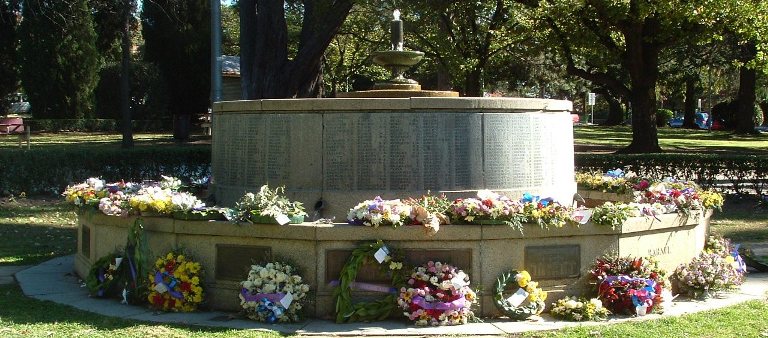
 Armidale War MemorialMORSHEAD, Sir LESLIE JAMES (1889-1959), soldier and businessman, was born on 18 September 1889 at Ballarat East, Victoria, sixth child of William Morshead, a miner from Cornwall, and his South Australian-born wife Mary Eliza, née Rennison. Leslie attended Mount Pleasant State School, belonged to Ballarat's Christ Church Cathedral choir, and captained its football and cricket teams. Having qualified at Melbourne Teachers' College, he taught in the country at Fine View State School, near Jung, and at The Armidale School, New South Wales. In 1914 he moved to Melbourne Church of England Grammar School where he commanded the cadet corps, as he had done at Armidale.
Armidale War MemorialMORSHEAD, Sir LESLIE JAMES (1889-1959), soldier and businessman, was born on 18 September 1889 at Ballarat East, Victoria, sixth child of William Morshead, a miner from Cornwall, and his South Australian-born wife Mary Eliza, née Rennison. Leslie attended Mount Pleasant State School, belonged to Ballarat's Christ Church Cathedral choir, and captained its football and cricket teams. Having qualified at Melbourne Teachers' College, he taught in the country at Fine View State School, near Jung, and at The Armidale School, New South Wales. In 1914 he moved to Melbourne Church of England Grammar School where he commanded the cadet corps, as he had done at Armidale.
On 13 September 1914 Morshead was appointed lieutenant, Australian Imperial Force. Posted to the 2nd Battalion, he served as a captain at the Gallipoli landings on 25 April 1915 and as a major in the bitter fighting at Lone Pine in August. His reputation for calmness and organization brought him promotion to lieutenant colonel and command (April 1916) of the 33rd Battalion, which he raised in Australia and trained there and in England. He made the battalion 'one of the very best' and took it to France in November. As the 33rd was part of the 3rd Division, Morshead developed under the eye of (Sir) John Monash. A successful leader in the battles of Messines (June 1917) and Passchendaele (October) in Belgium, and Villers-Bretonneux (April 1918) and Amiens (August) in France, Morshead was awarded the Distinguished Service Order (1917) and mentioned in dispatches five times; in 1919 he was appointed C.M.G. and to the French Légion d'honneur.
Monash included Morshead in his staff when he took charge of demobilizing the A.I.F. in England, an operation notable for its efficiency. Morshead reached Sydney in December 1919 and his appointment terminated on 15 March 1920. Intending to begin life on the land, he applied for a grant under the soldier-settlement scheme. While he waited, he worked as a jackeroo at Merriwa. After obtaining a large block near Quilpie, Queensland, he soon realized that he had neither the knowledge nor the capital to make a success of it. At Scots Church, Melbourne, on 17 November 1921 he married 23-year-old Myrtle Catherine Hay Woodside, whom he had known since his days at Melbourne Grammar.
Morshead obtained a job in Sydney, working for a committee representing overseas shipping lines, which led in 1924 to a post with the Orient Steam Navigation Co. Ltd. Next year he was sent to England to familiarize himself with the head office. Thereafter he moved between Sydney, Melbourne and Brisbane in positions of growing responsibility, becoming branch manager in Sydney in 1936. His special interest lay in the development of Pacific cruises. In 1937 he again visited England; part of his time there was spent observing British army training. He had been active in the Militia, commanding in turn the 19th and 36th battalions. Promoted colonel (1933) and temporary brigadier (1938), he led the 14th (1933), 15th (1934-36) and 5th (1937-39) infantry brigades.
On 13 October 1939 Morshead was appointed to the A.I.F. and given command of the 18th Brigade which sailed for Britain in May 1940. He spent five months training the 18th and leading it in operations while Britain came under attack by the Luftwaffe and faced the threat of invasion. It was a stimulating preparation for battle. In January 1941 he was appointed C.B.E. Moving to the Middle East, he was promoted major general in February and placed in command of the 9th Division . He faced a grim prospect. There were insufficient weapons and equipment, his men were relatively untrained, and one of his brigades was short of a battalion. As his own gunners were not ready, he was given British artillery. Within three weeks he was ordered to move this improbable collection to Cyrenaica, Libya, to join the weak force under Lieutenant General Sir Philip Neame guarding the desert flank of the Middle East.
Of middle height, trim in build, and dark haired, Morshead was vigorous and resolute. His insistence on discipline and hard work brought him the nickname, 'Ming the Merciless', which in time became 'Ming'. While it was rare for him to remove an officer, he could be hard and unforgiving. He had a capacity for dealing bluntly with senior officers. On one occasion he tackled Neame about the anti-Australian tone of a letter on the behavior of Australian soldiers in Cyrenaica. When he met General Sir Archibald (Earl) Wavell, the commander-in-chief, Morshead spoke frankly about the dangerous position allotted to his leading brigade and suggested moving back to a defensible position east of Benghazi. Wavell ordered Neame to make the change.
During the withdrawal to Tobruk in April 1941, Morshead was the only general officer of Cyrenaica Command to avoid capture. That his division reached Tobruk almost exhausted but still an organized force and eager 'to have a go', was a commendable performance. Initially, he came under the command of Major General (Sir) John Lavarack. Morshead's task was to hold the perimeter defences which he had inspected closely in January. 'There'll be no Dunkirk here', he told his principal officers, 'There is to be no surrender and no retreat'. He also issued instructions that, if German tanks penetrated the perimeter, the infantry should not engage them but deal with enemy infantry following the tanks which would be stopped by his own artillery. These tactics, new to the Germans, led to the failure of their assault on 14 April.
That day Morshead succeeded Lavarack as commander of the fortress at Tobruk. He maintained an aggressive defence, based on ceaseless patrolling and—in the early days—frequent raids, and made it clear to all that 'we should make no-man's land our land'. Whenever the enemy gained ground, he refused to leave it in their hands. His policy sometimes proved costly and was disliked at brigade and unit level.
As the siege dragged on, Morshead agreed with the medical authorities that the physical condition of his men was declining. He supported Lieutenant General Sir Thomas Blamey in his efforts to have the 9th Division and its supporting troops relieved. Morshead's plea for more periodical decorations and mentions in dispatches for the whole garrison was granted. The determination of Blamey and of successive Australian governments eventually brought about the relief of the Australians, beginning in August. After visiting the British gunners and others who were to remain, Morshead unveiled a memorial and left Tobruk on 22 October 1941 in H.M.S. Endeavour.
Morshead and his mixed force of Australian, British, Indian and Polish troops had won an important defensive battle. Not only had they denied the Axis powers the port of Tobruk, but they had also compelled General Erwin Rommel to hold a significant part of his army back from the Egyptian frontier for six months. They had shown that the Nazi juggernaut could be stopped. It was a heartening success in an otherwise gloomy year. Morshead was appointed K.B.E. (1942) as a modest recognition of his achievement, and the Poles awarded him the Virtuti Militari. On Blamey's departure for Australia, Morshead took command of the A.I.F. in the Middle East in March 1942 as a temporary lieutenant general (substantive in September). He continued as commander of the 9th Division, which trained in Palestine and Syria until June when it was ordered to Egypt.
Morshead had to fight for essential equipment and transport, and to resist the penchant of senior British officers for breaking up divisions. In a famous confrontation with General Sir Claude Auchinleck in early July, Morshead flatly refused to give him one of his brigade groups. Only when it was agreed that the entire 9th Division would move to El Alamein under his command would Morshead permit the temporary detachment of a single brigade group. He closely watched how the British prepared to use that brigade in operations and remonstrated with Auchinleck about its lack of artillery protection. On 15 July, when he learned that his 20th Brigade had been moved without any reference to him, Morshead protested vehemently to Auchinleck who agreed to its return.
July 1942 was a testing time for Morshead and his men who in three searing weeks tasted everything from triumph on the 10th to disaster on the 27th when the whole 2nd/28th Battalion was lost. Nevertheless, the spirit of the division was strong, and there was a growing trust between the troops and their commander. Morshead was critical of Auchinleck and his staff, and, like all the infantrymen, had a deep distrust of the armoured regiments and brigades.
Before the battle of El Alamein (23 October-5 November) Morshead told his commanders, 'We must regard ourselves as having been born for this battle'. He argued strongly for the retention of the 10 p.m. zero-hour in the face of a proposed earlier time, understanding the needs of the men in the attacking companies, and the importance of getting their vehicles and gear into position. During the fighting he went forward to see his brigadiers (often twice in a day) and battalion commanders to encourage them and get the 'feel' of the battle. Nor did he neglect the wounded in the field ambulances.
After the initial assault, Morshead's series of attacks northwards threatened to cut off and destroy a German division. This pressure drew upon the 9th Division almost the whole Afrika Korps, thus helping to create a situation favourable to Lieutenant General (Sir) Bernard (Viscount) Montgomery's final thrust. Montgomery visited Morshead on 4 November to congratulate him. Morshead was appointed K.C.B. a few weeks later. Like Monash, Morshead drove 'his troops to the extreme limit of their endurance'. His own practical, undramatic outlook was revealed at his conference after the battle when he urged his commanders not to forget 'to say a good word to the cooks'. To a corps commander's congratulations, he replied: 'Thank you, General. The boys were interested'.
In February 1943 Morshead and the 9th Division came home. Next month he was appointed commander of II Corps. Although this role placed him farther from the battle front than at El Alamein, it did not entirely remove him from operations. At the height of the Japanese counter-attack at Finschhafen, New Guinea, on 17 October, his grasp of the situation caused him to signal urgently for the 26th Brigade to move from Lae to reinforce the 9th Division. After commanding the Second Army in January-July 1944, Morshead took over I Corps. In May 1945, when American planners sought to change the location of the 7th Division's landings at Balikpapan, Borneo, he supported Major General E. J. Milford's choice of beaches. Morshead travelled constantly and regularly visited subordinate headquarters; on 1 July 1945 his Catalina broke up when alighting on rough waters off Balikpapan and all on board had to be rescued.
Morshead's wife shared his burdens in a seemingly endless war. Theirs was a deeply happy marriage in which they sustained each other by their letters through four campaigns. In the field, Morshead played shove-halfpenny for relaxation; he had his own board which always went with him. Arriving in Sydney in September 1945, he reluctantly agreed to chair a military court of inquiry into Major General Gordon Bennett's escape (1942) from Singapore. The court sat in October. Its findings against Bennett led to (Sir) George Ligertwood's appointment as commissioner to investigate the affair. In essence, he reached the same conclusions. Morshead was thrice mentioned in dispatches for his service in World War II and awarded (1948) the American Medal of Freedom with Silver Palm.
The former schoolmaster and lieutenant of cadets was famous, but looking only for the peace of his home and his imminent return to civilian employment. He was to decline offers of military and diplomatic posts, and the governorship of Queensland. Placed on the Reserve of Officers on 1 January 1946, he went back to the Orient Line one day later as its New South Wales manager. In 1948 he became general manager in Australia. Maintaining links with the army, he gave lectures to young officers and belonged to the Australian Battles Nomenclature Committee. There were also the special occasions—Anzac Day, El Alamein dinners and unit reunions—when he was received with acclaim, including the extraordinary 'Ho Ho' cry of the 9th Division which had begun on the Atherton Tableland in 1943.
Morshead was president of the Bank of New South Wales, chairman of David Jones Ltd and of the Bank of New South Wales Savings Bank, and a director of Mutual Life & Citizens' Assurance Co. Ltd and other firms. He was also president of the Boy Scouts' Association of New South Wales and the Big Brother Movement, and a trustee of the Gowrie scholarship trust fund. From 1950 he headed 'The Association', a secret organization prepared to oppose communist attempts at subversion. It was quietly disbanded in 1952. Morshead had had a brief connexion with a similar movement in the mid-1920s. A gifted organizer in war and peace, he was appointed (1957) chairman of a committee which reviewed the group of departments concerned with defence. The Federal government accepted the committee's recommendation that Supply and Defence Production be amalgamated, but dropped the key proposal that Defence absorb Army, Navy and Air.
Golf and membership of the Sydney Cricket Ground gave Morshead respite from the cares of business, but in 1957 he began to show signs of strain. Survived by his wife and daughter, Sir Leslie died of cancer on 26 September 1959 at St Vincent's Hospital, Darlinghurst, and was cremated with Anglican rites. He had been accorded a military funeral and the cortège passed through streets lined with former soldiers of the 9th Division. (Sir) Ivor Hele's portrait of Morshead is held by the Australian War Memorial, Canberra.
Select Bibliography
C. E. W. Bean, The A.I.F. in France, vol 5 (Syd, 1937); D. Dexter, The New Guinea Offensives (Canb, 1961); G. Long, The Final Campaigns (Canb, 1963); B. Maughan, Tobruk and El Alamein (Canb, 1966); D. M. Horner (ed), The Commanders (Syd, 1984); D. Coombes, 'The Greatest Rat': A Biography of Lieutenant General Sir Leslie Morshead.
(Ph.D. thesis, University of Sydney, 1997) Morshead papers (Australian War Memorial)
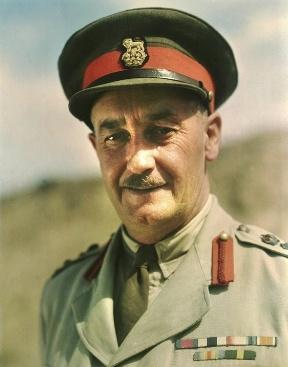
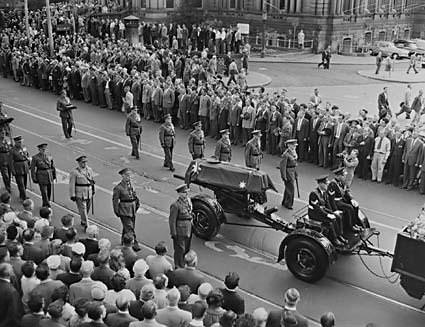 Funeral Procession 1959.Military Records
Funeral Procession 1959.Military Records

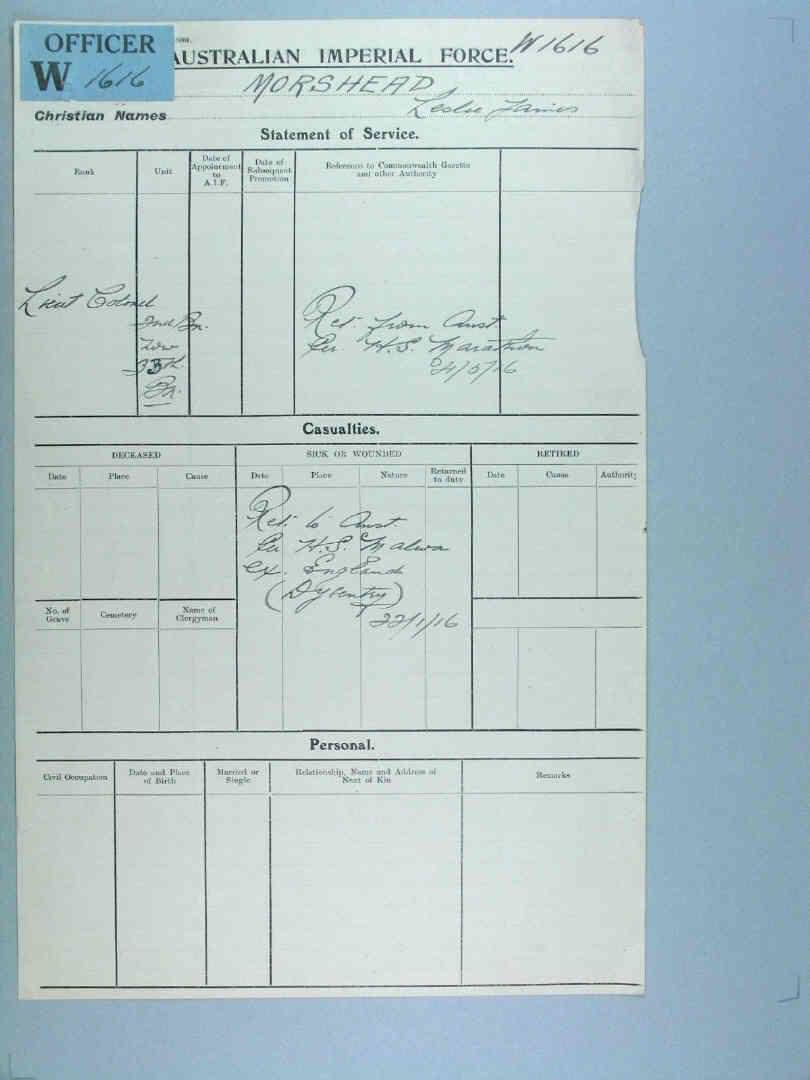
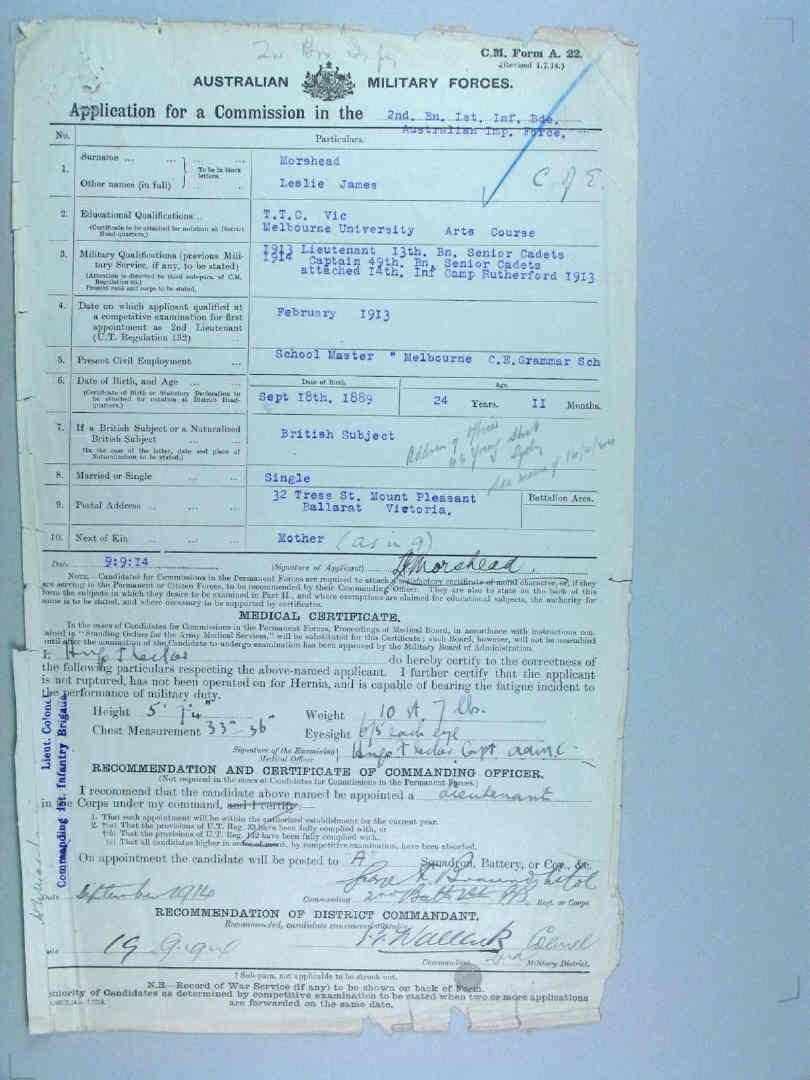
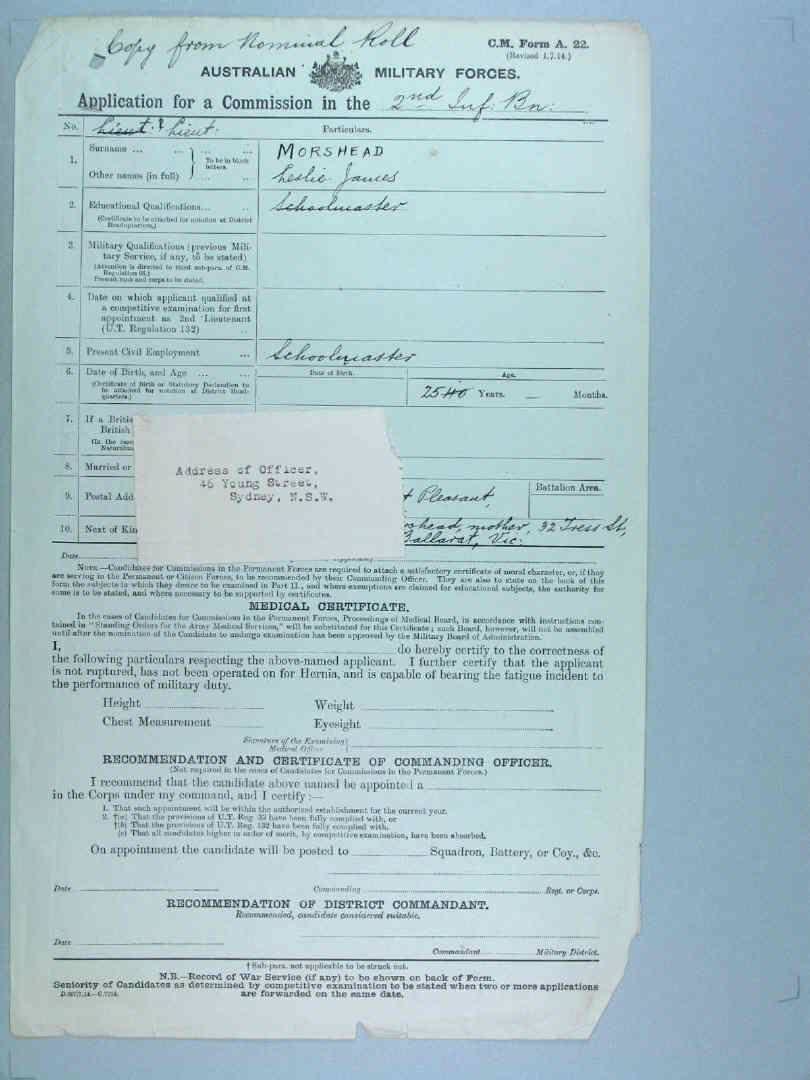

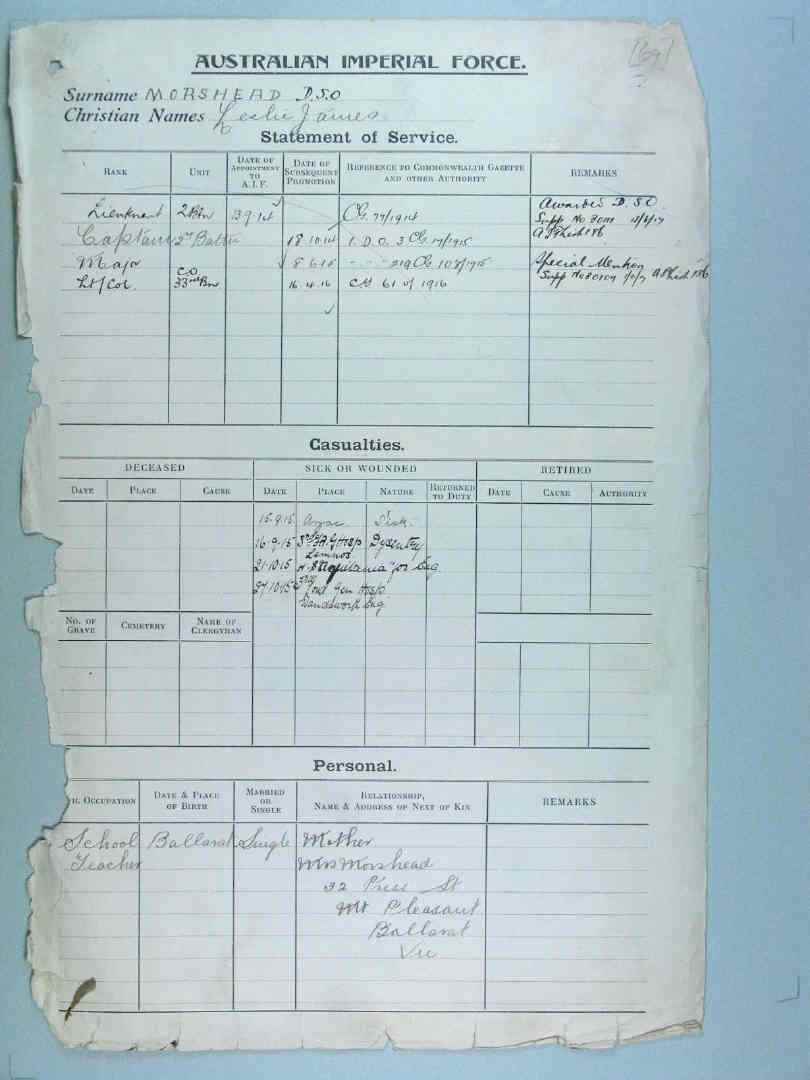
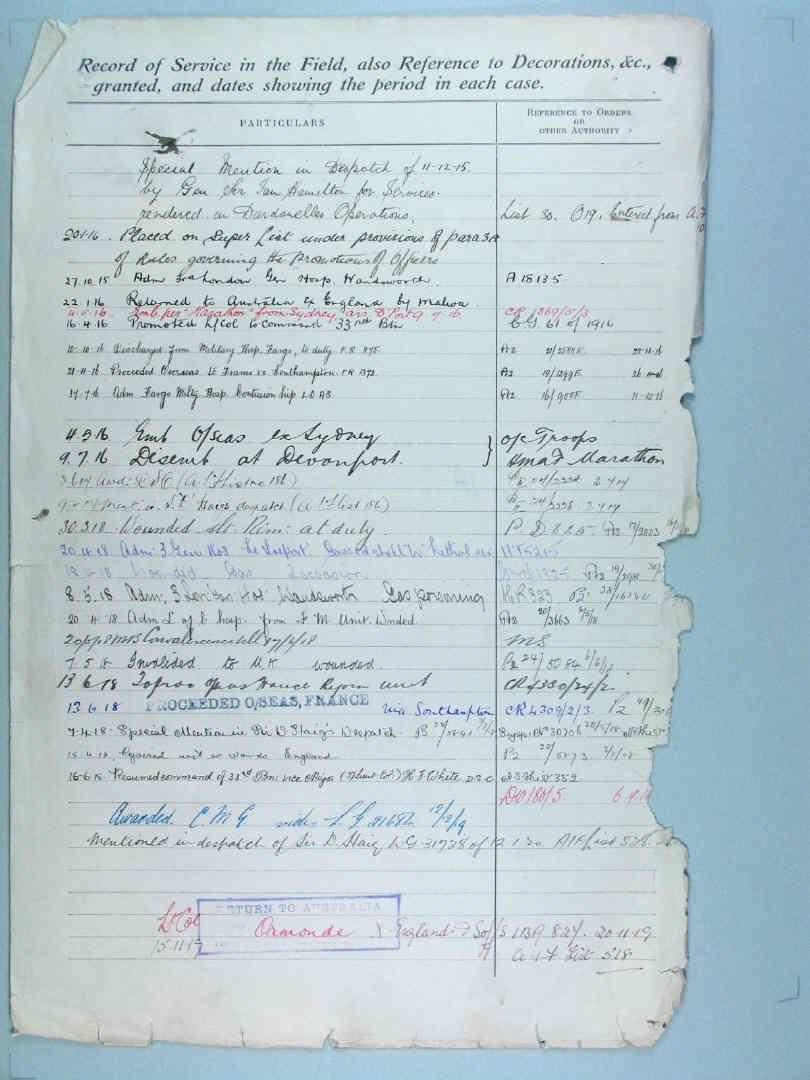
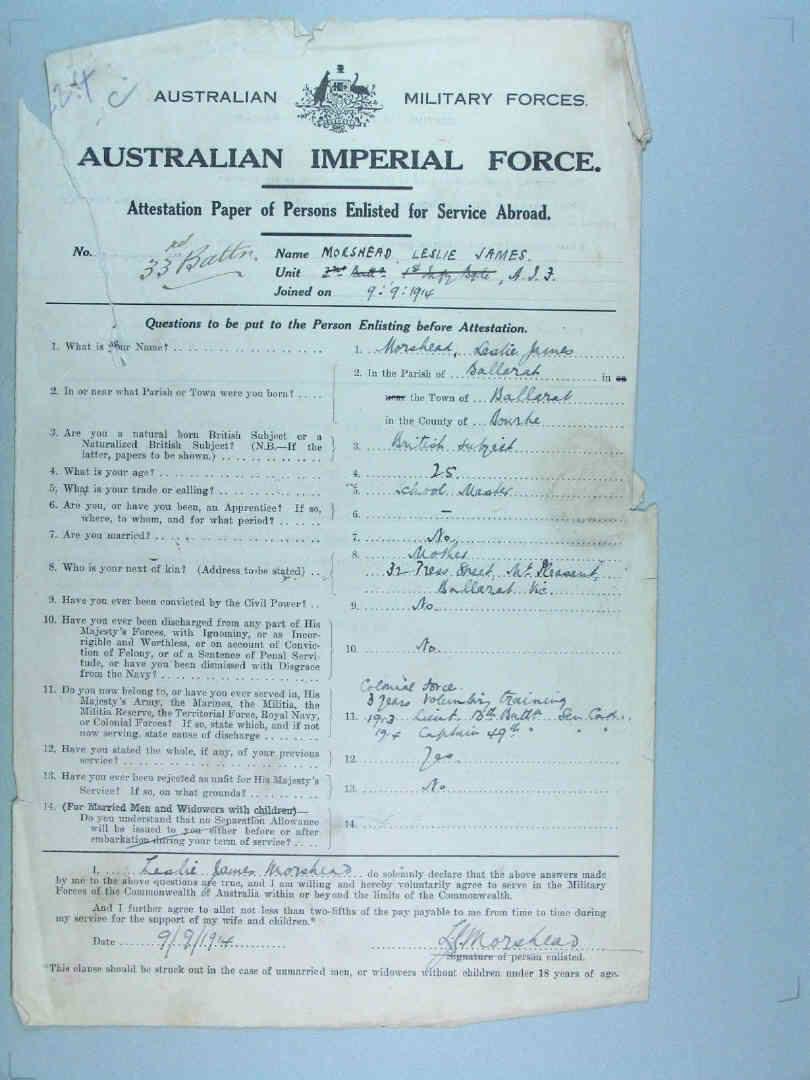
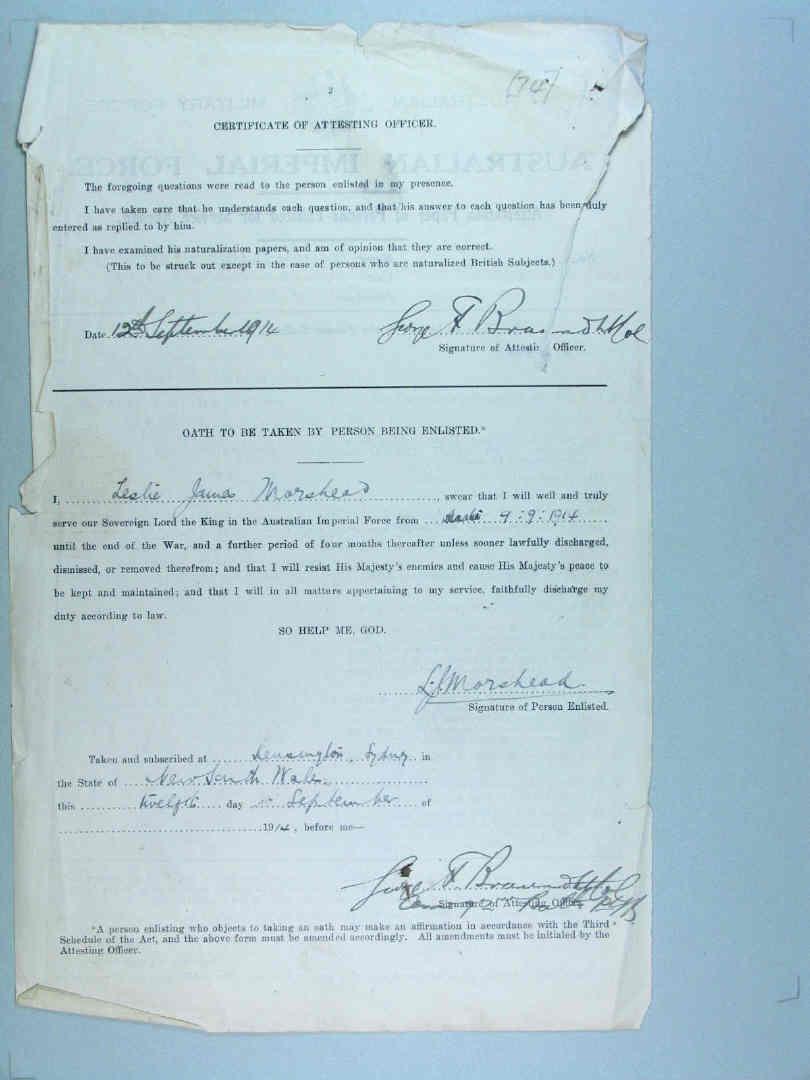
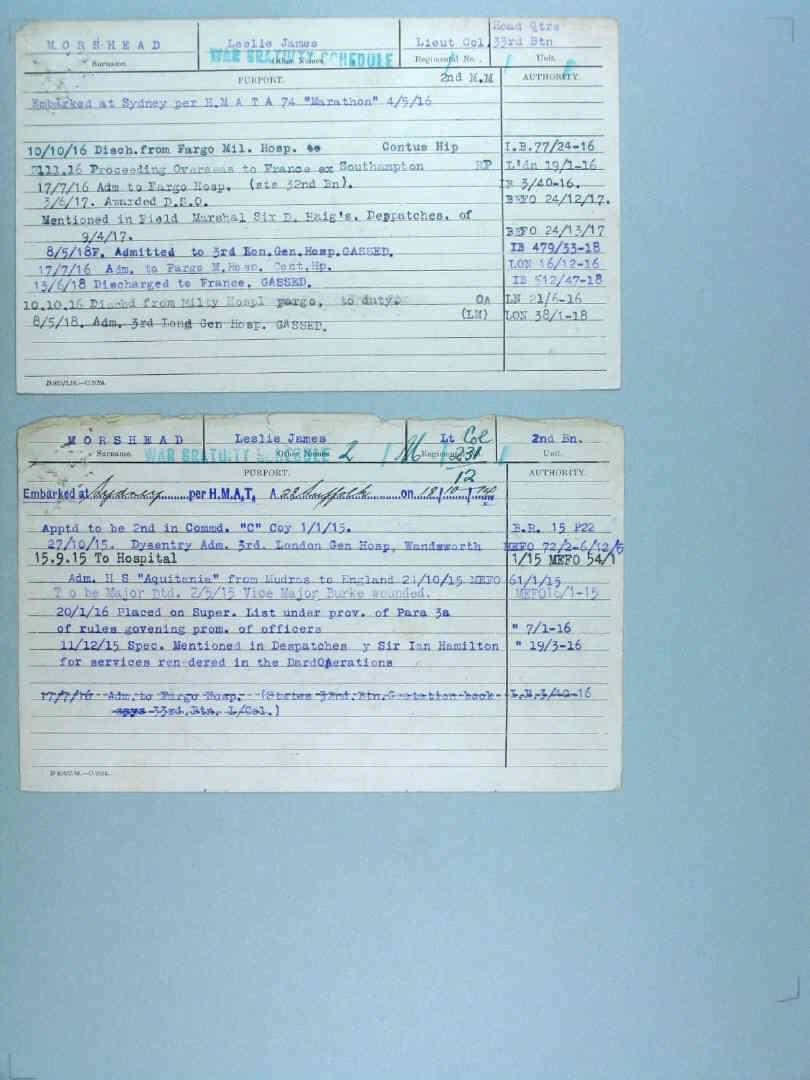
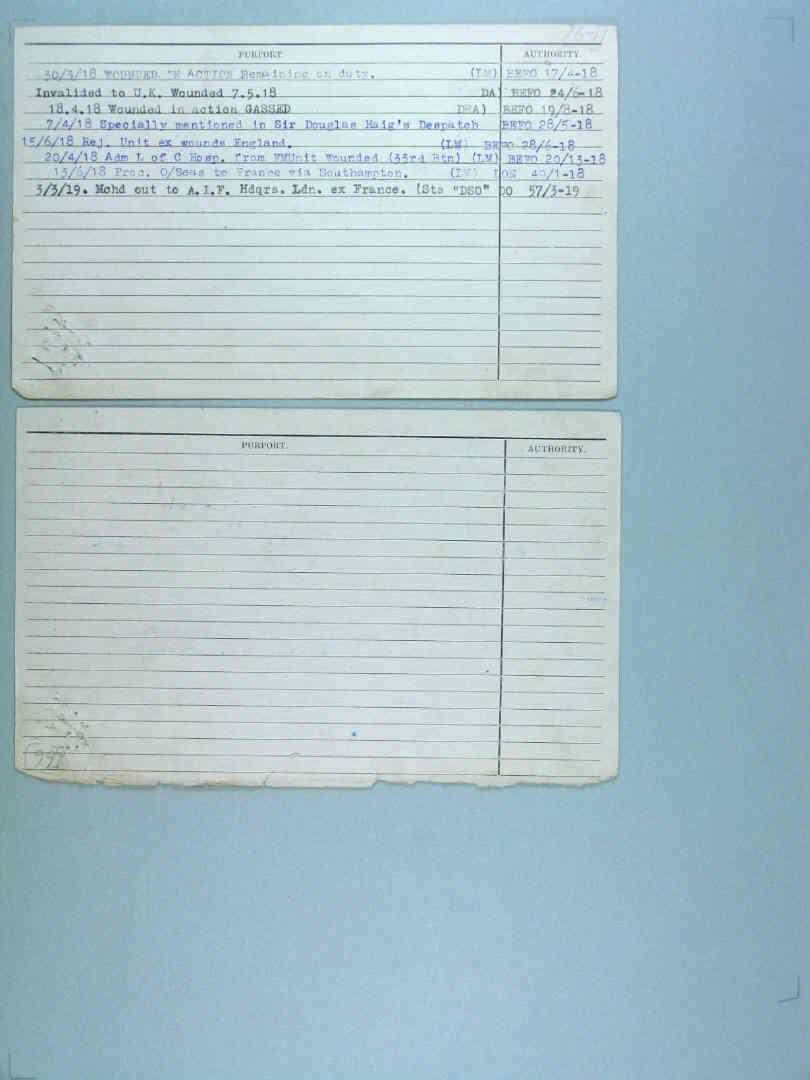



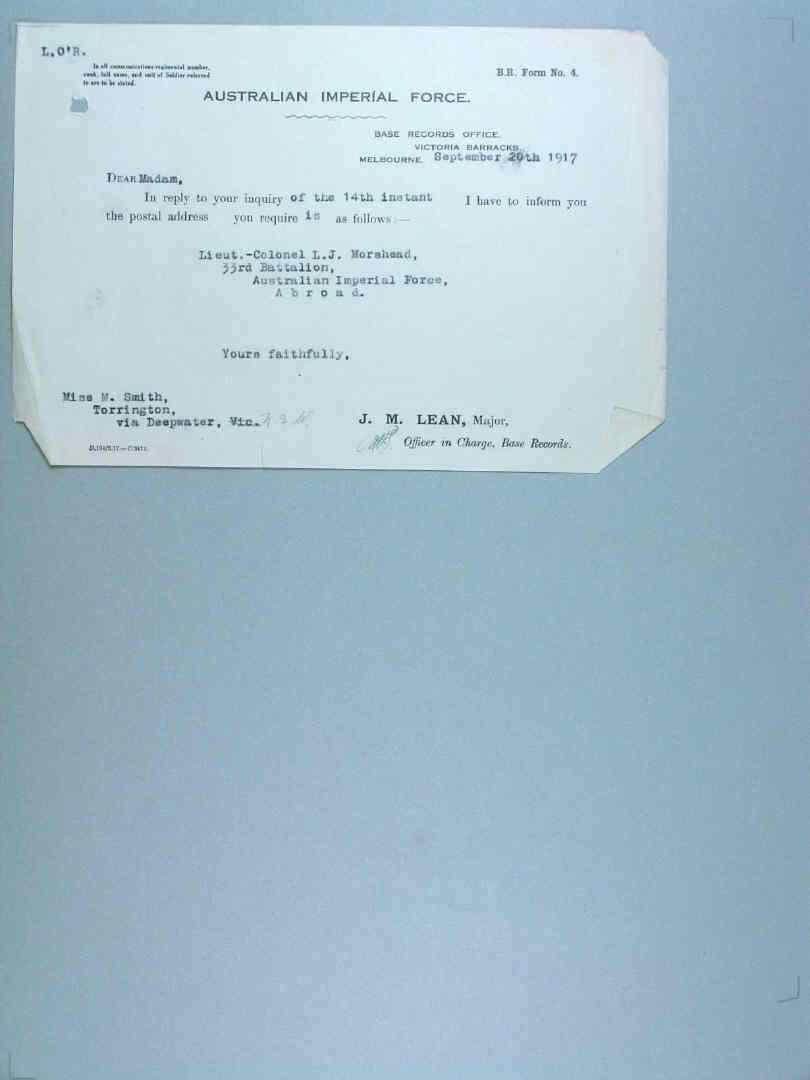
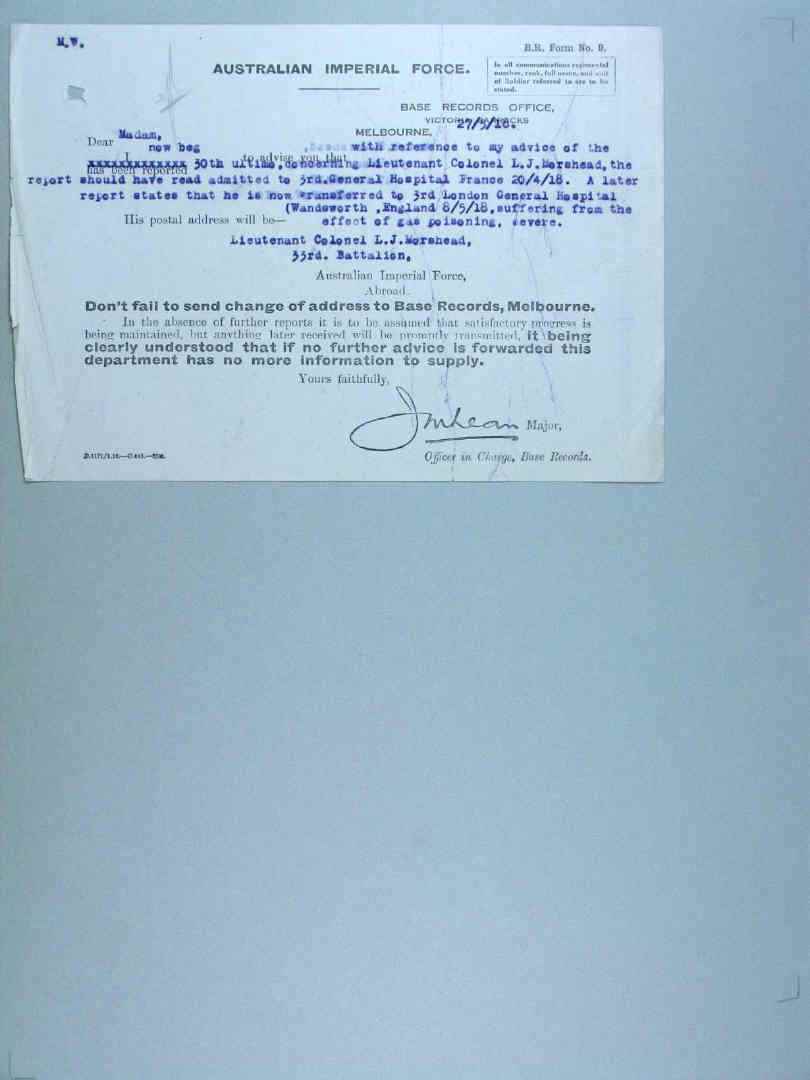
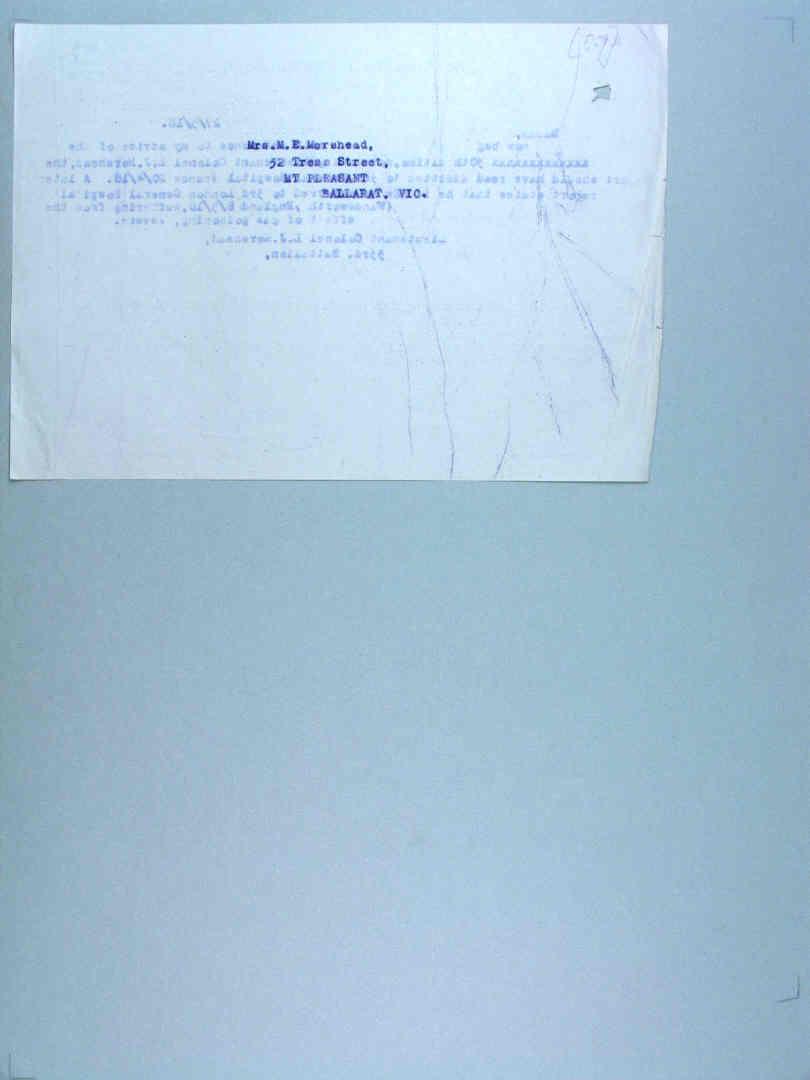
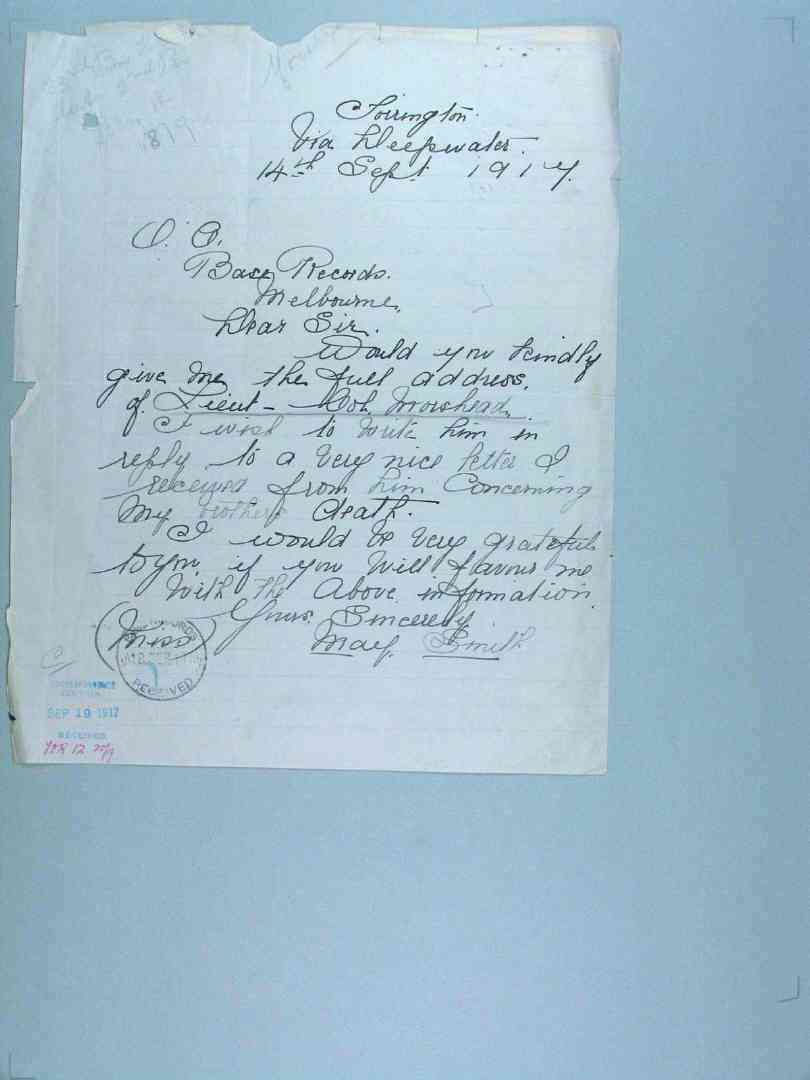

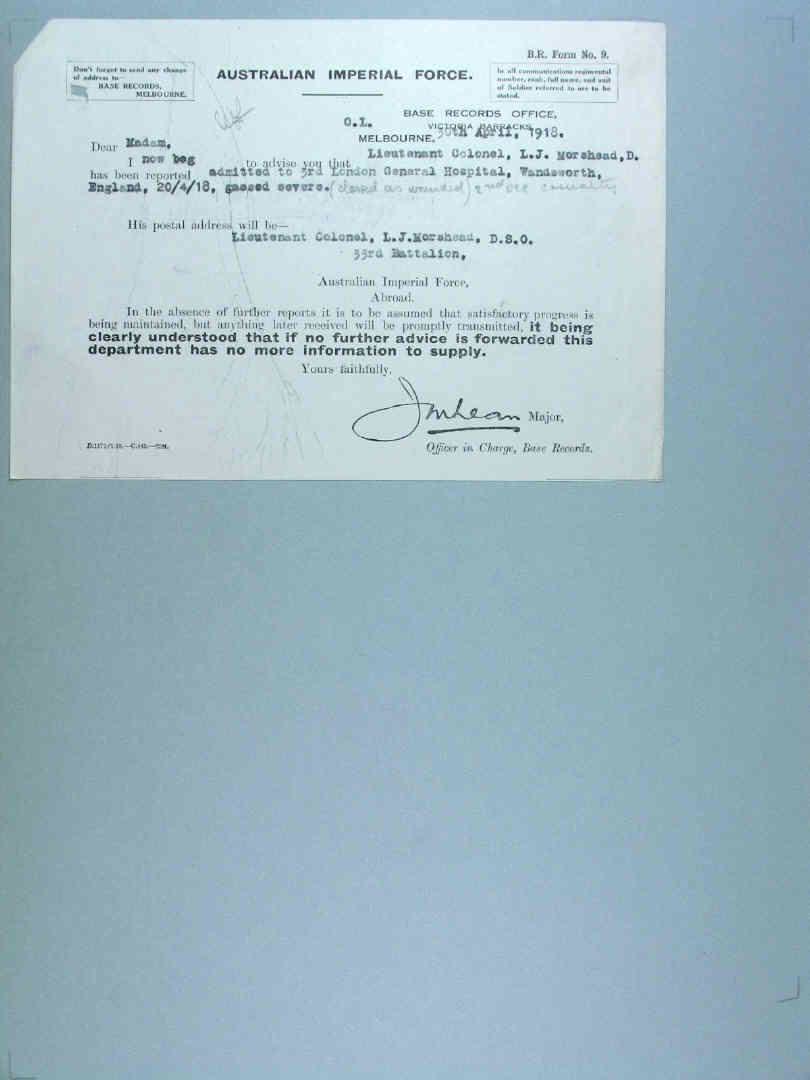
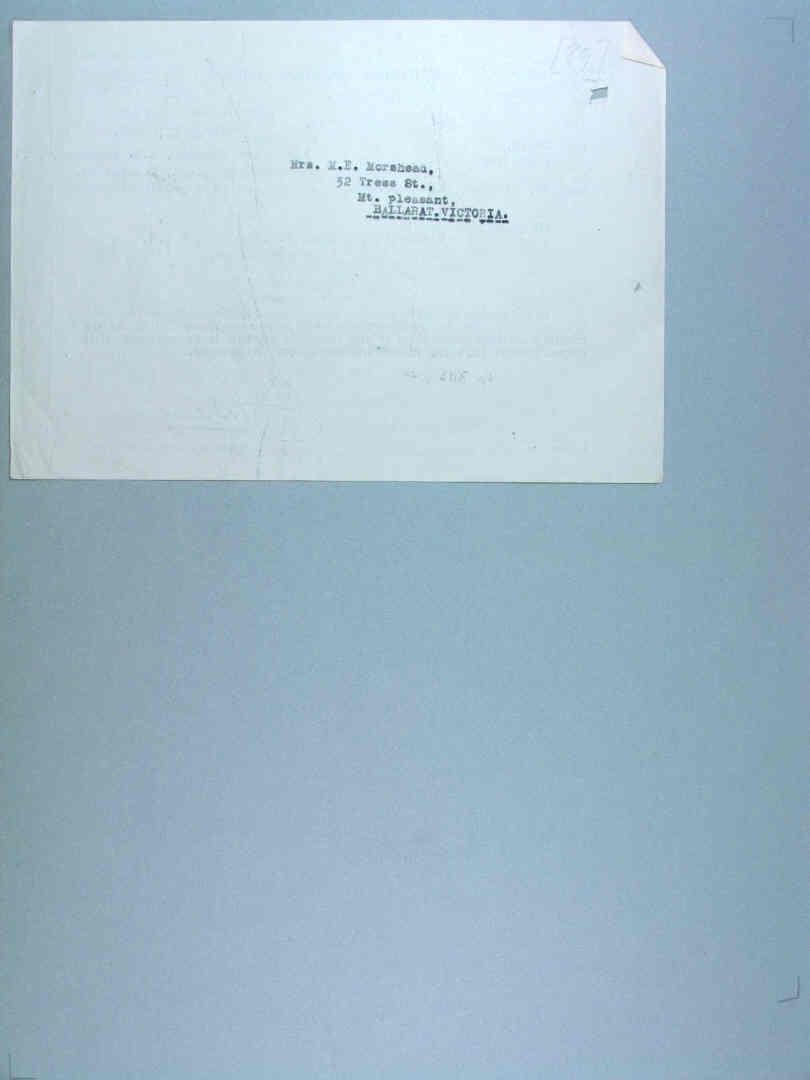
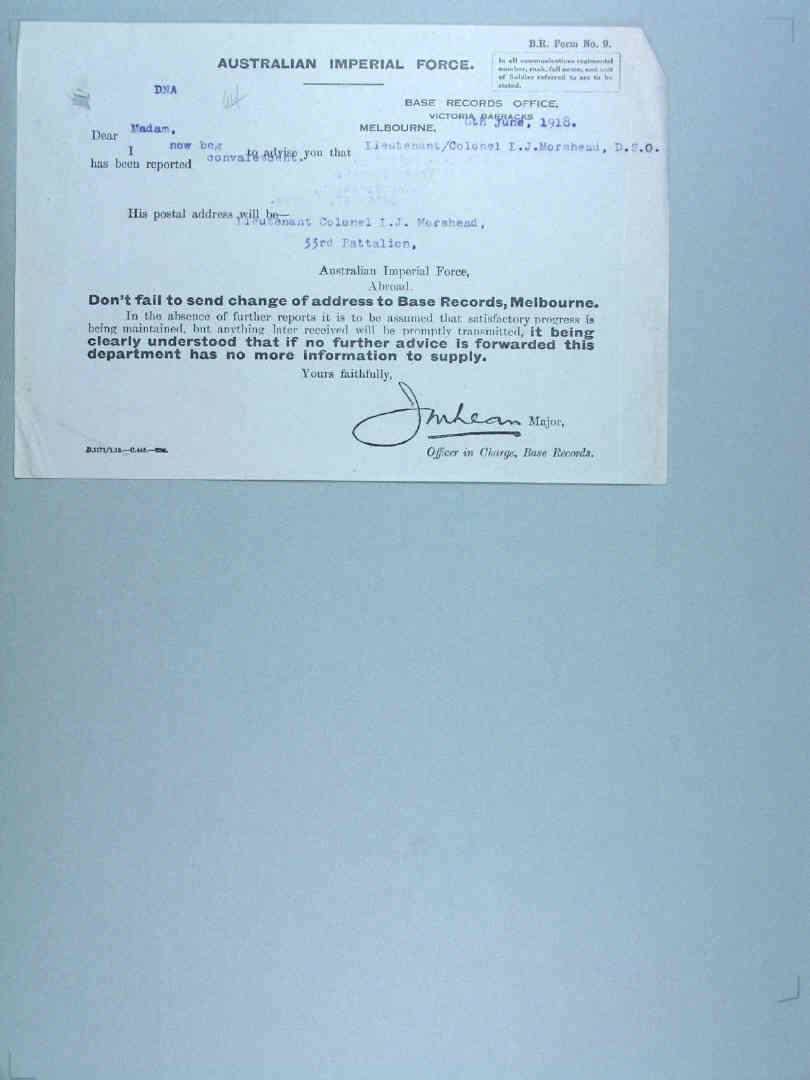
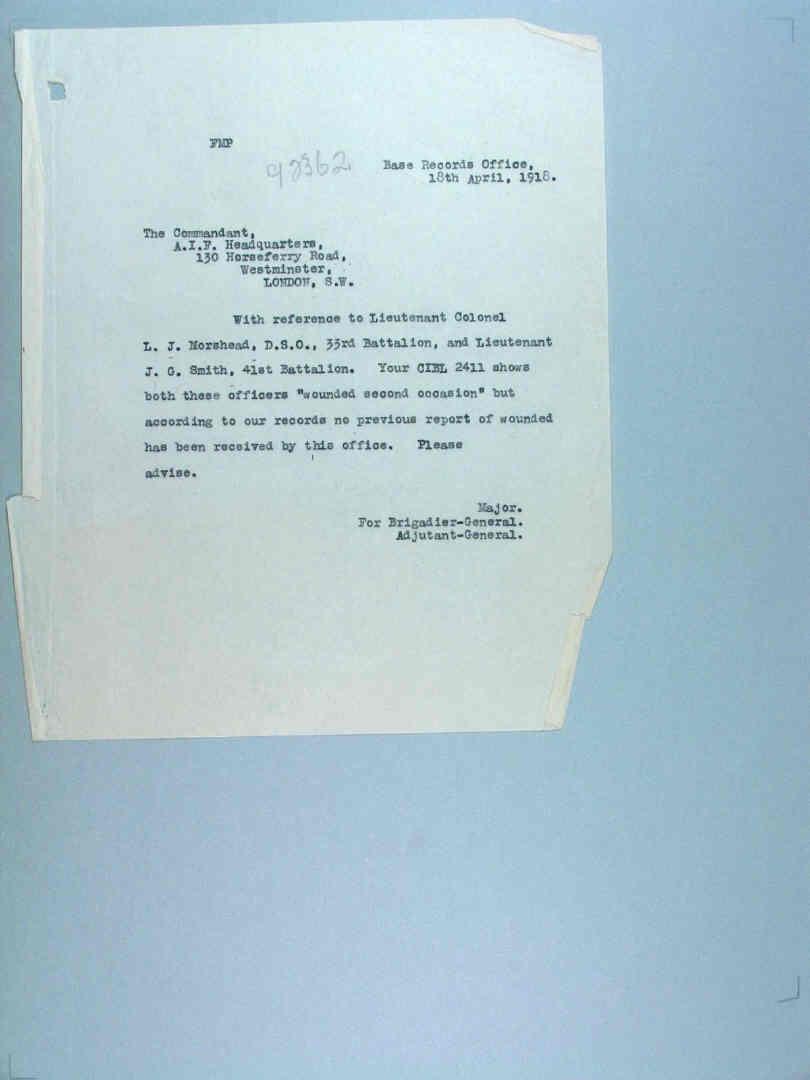
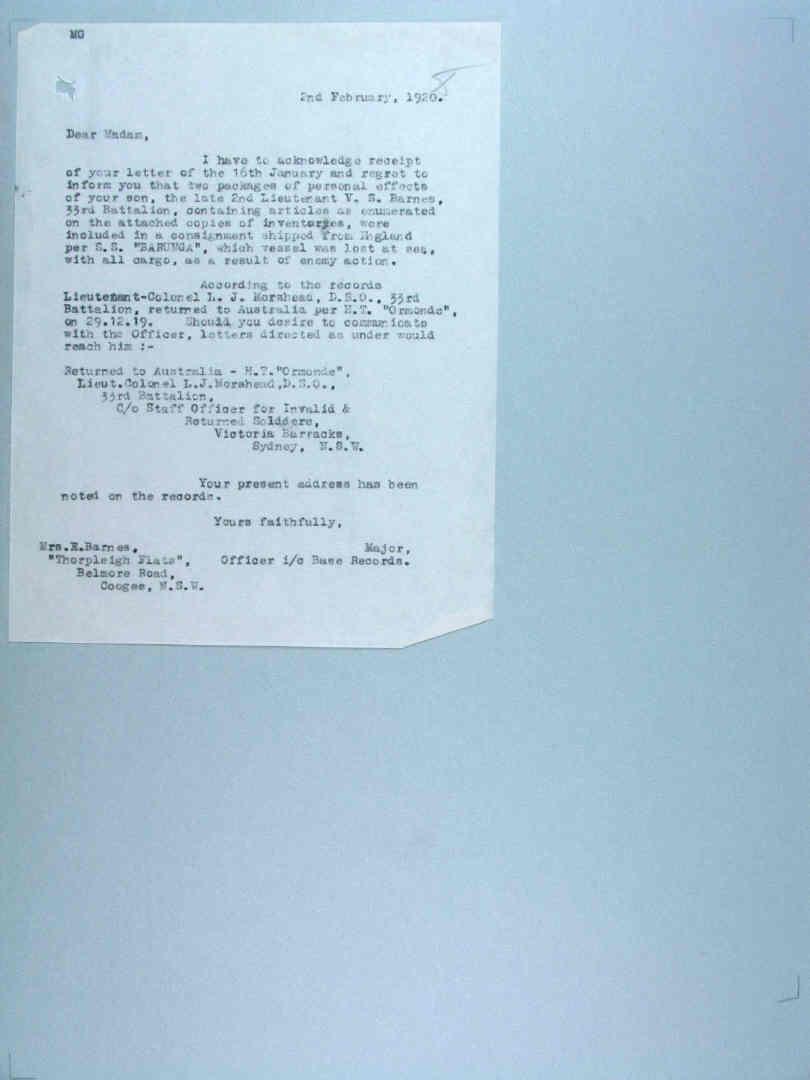
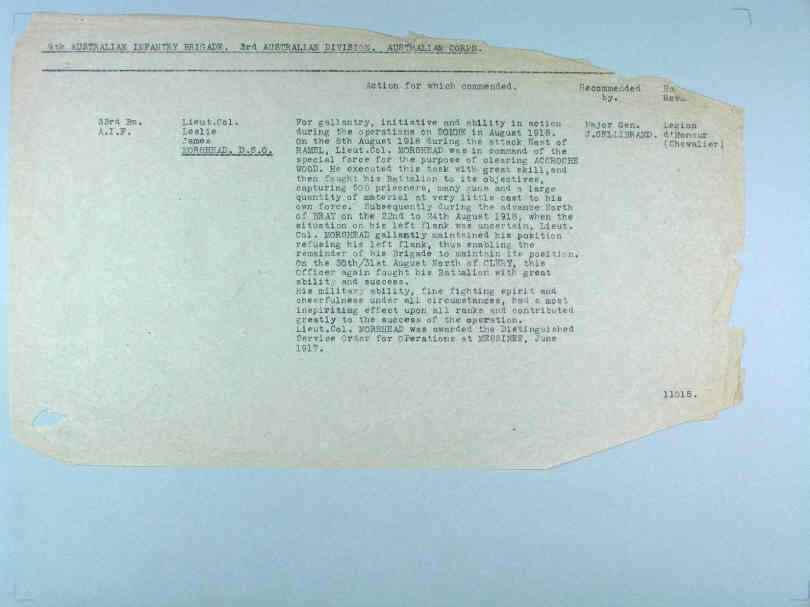
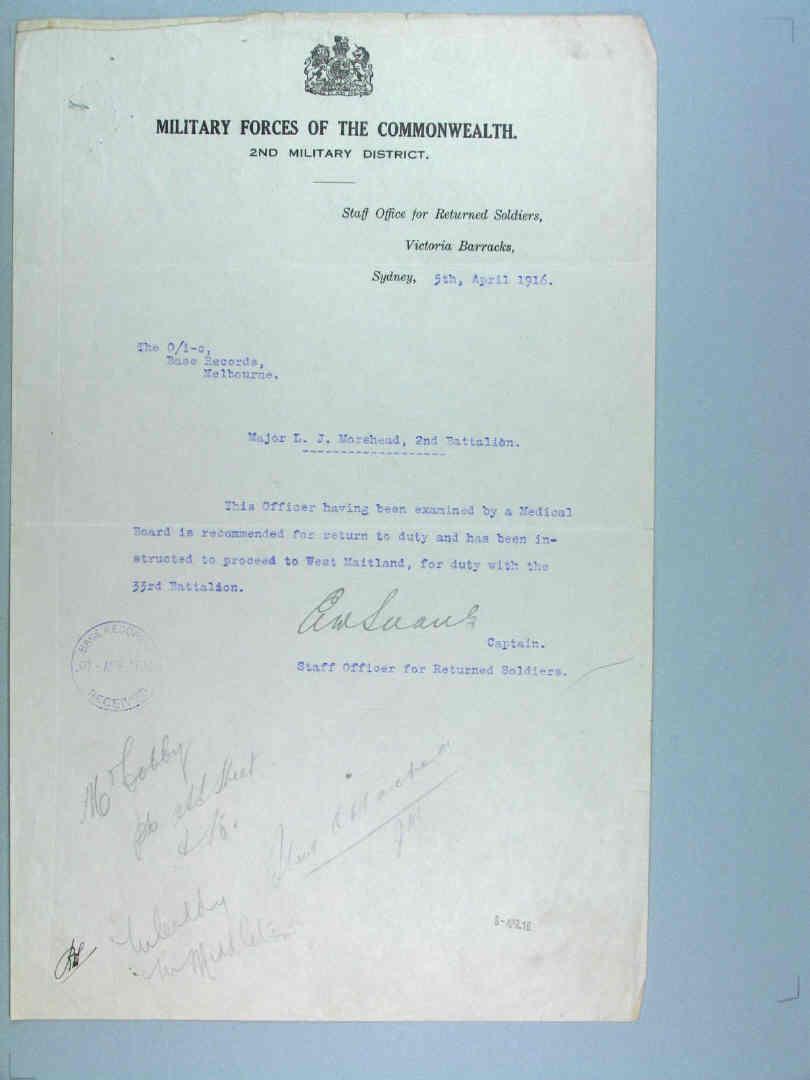
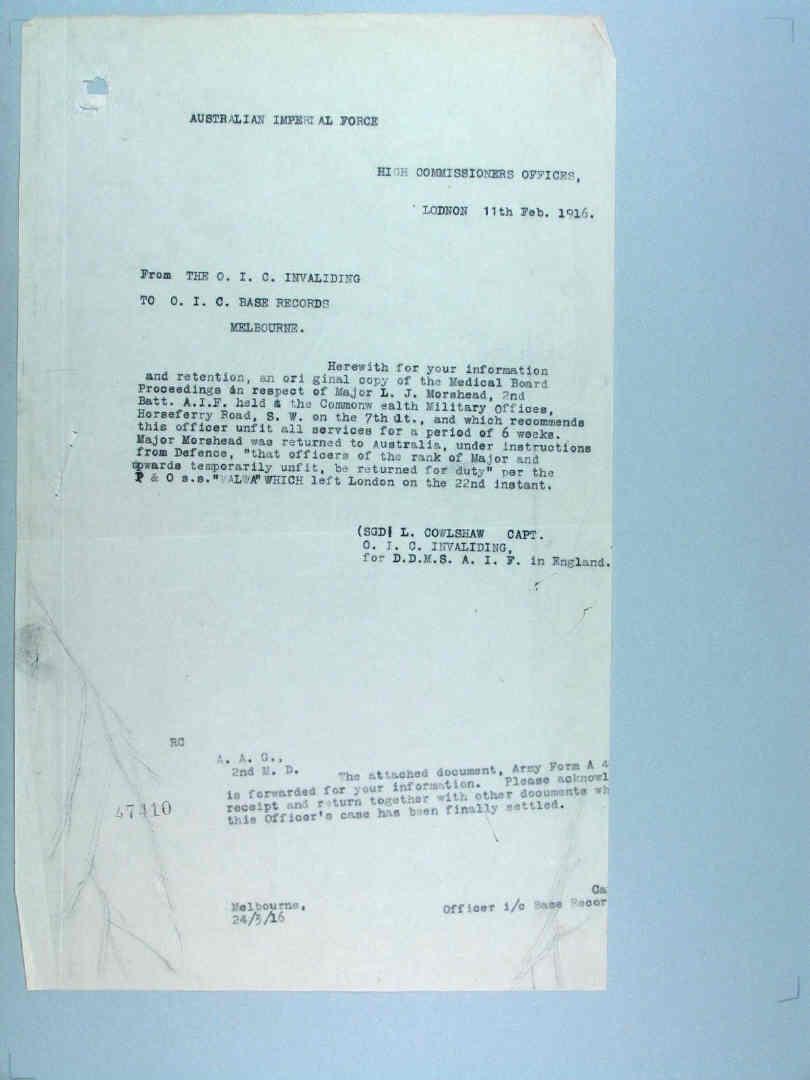

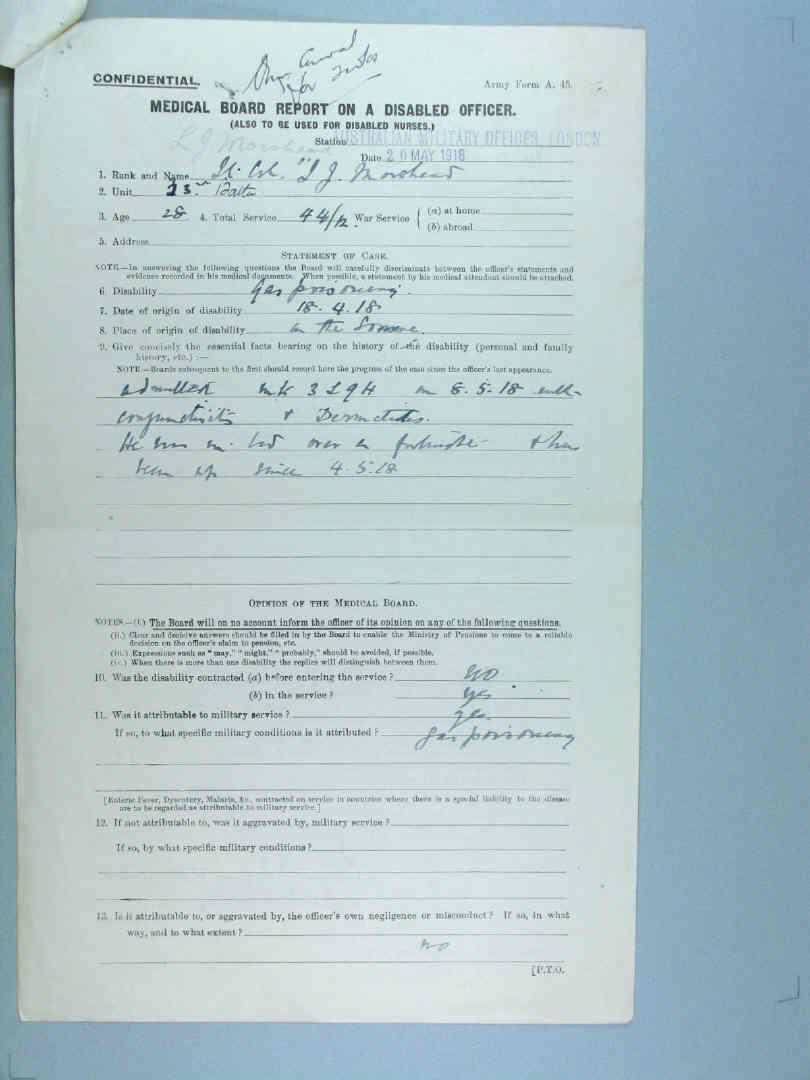
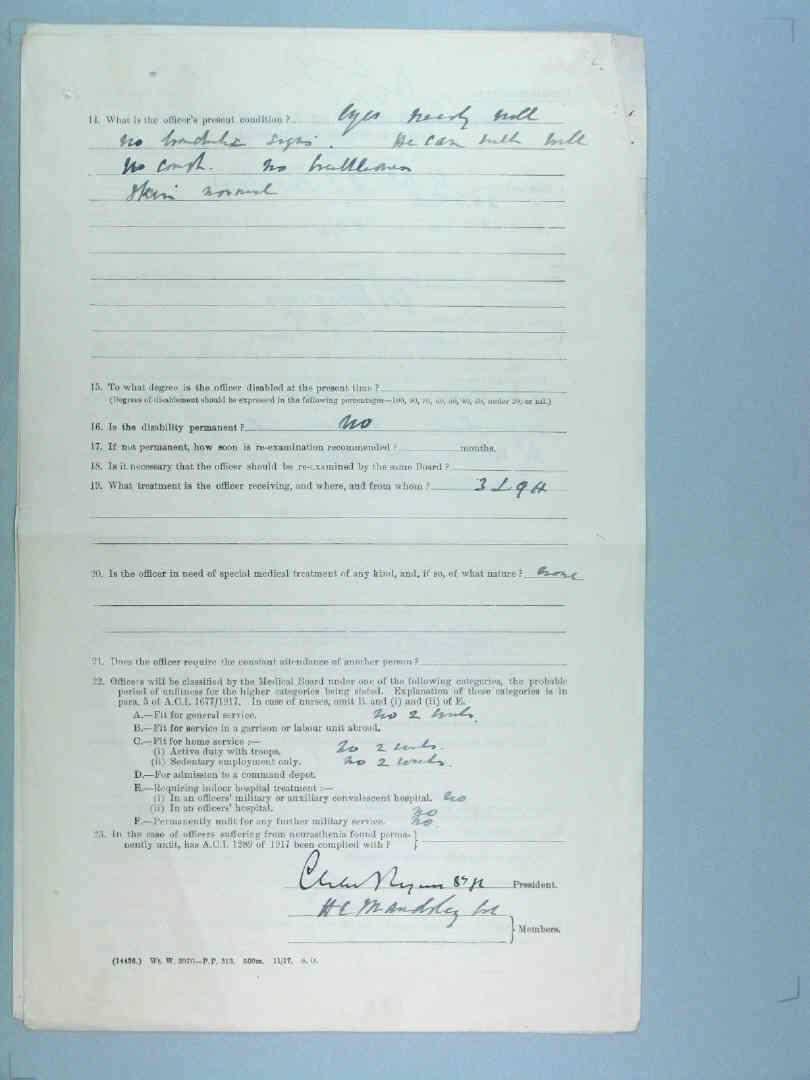
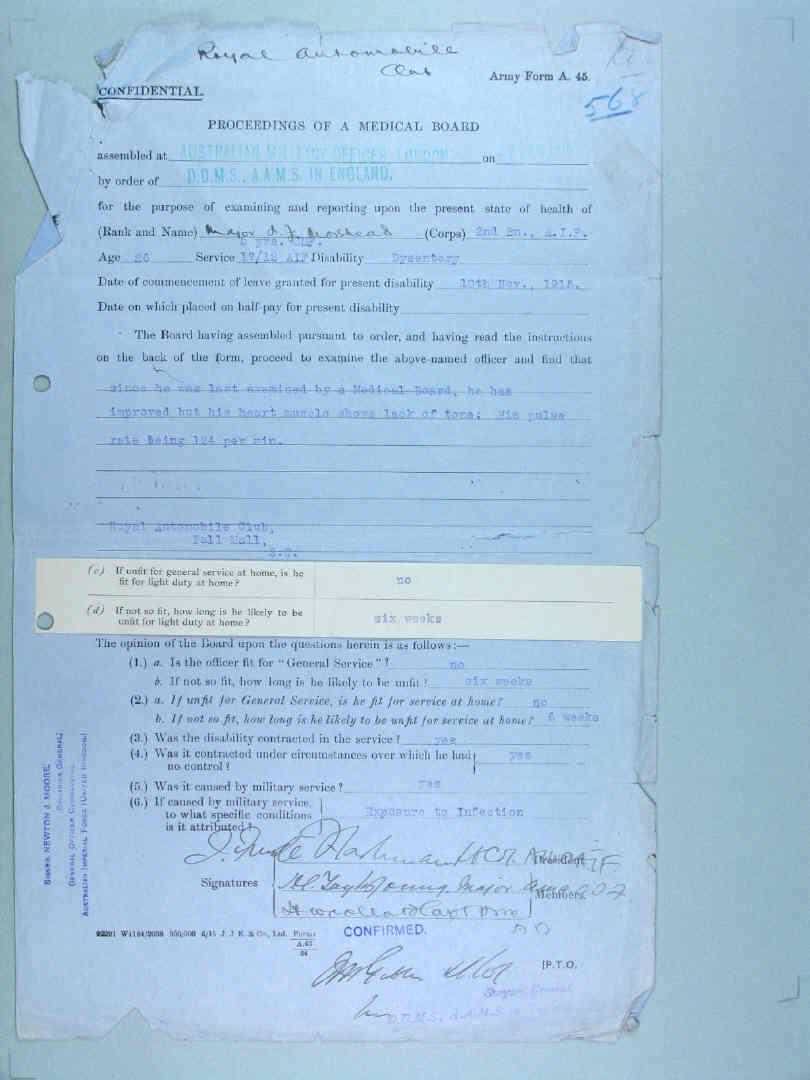
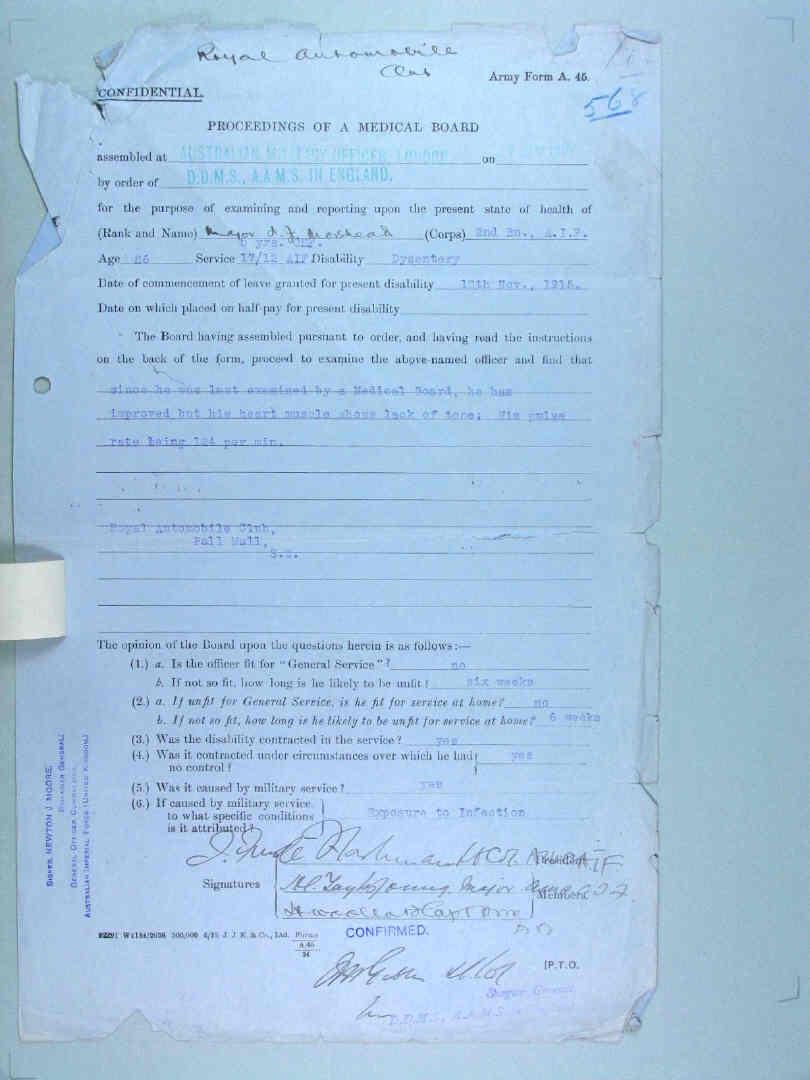


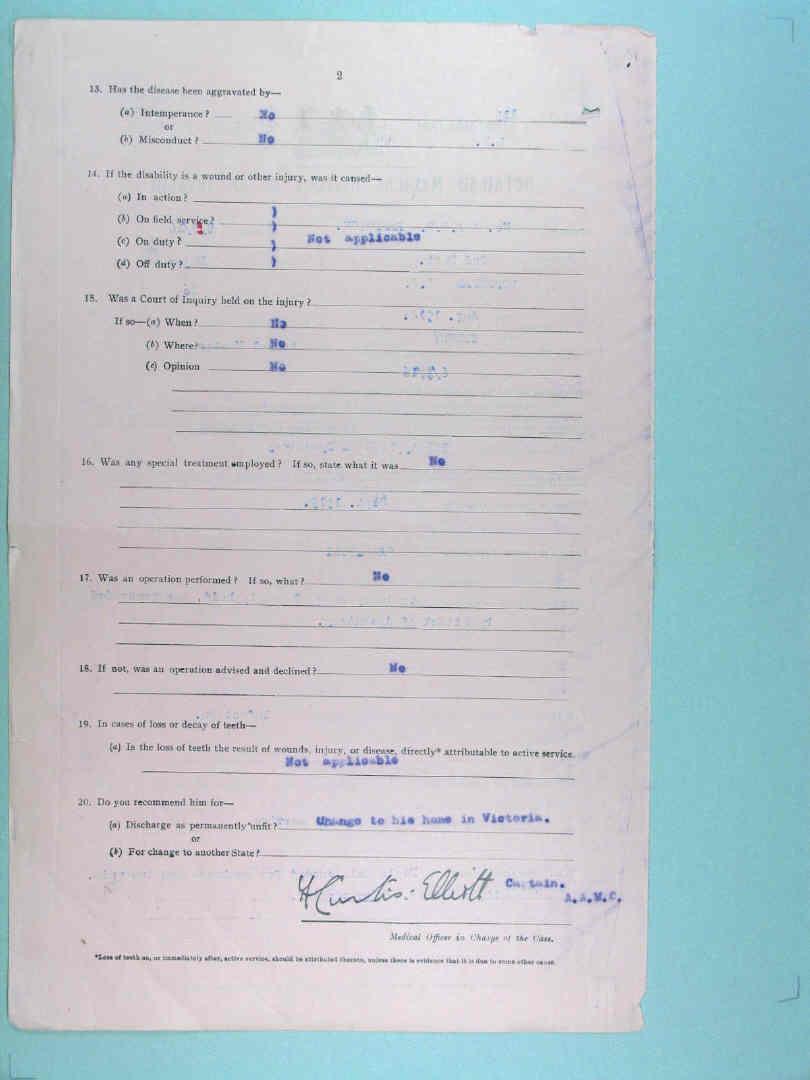
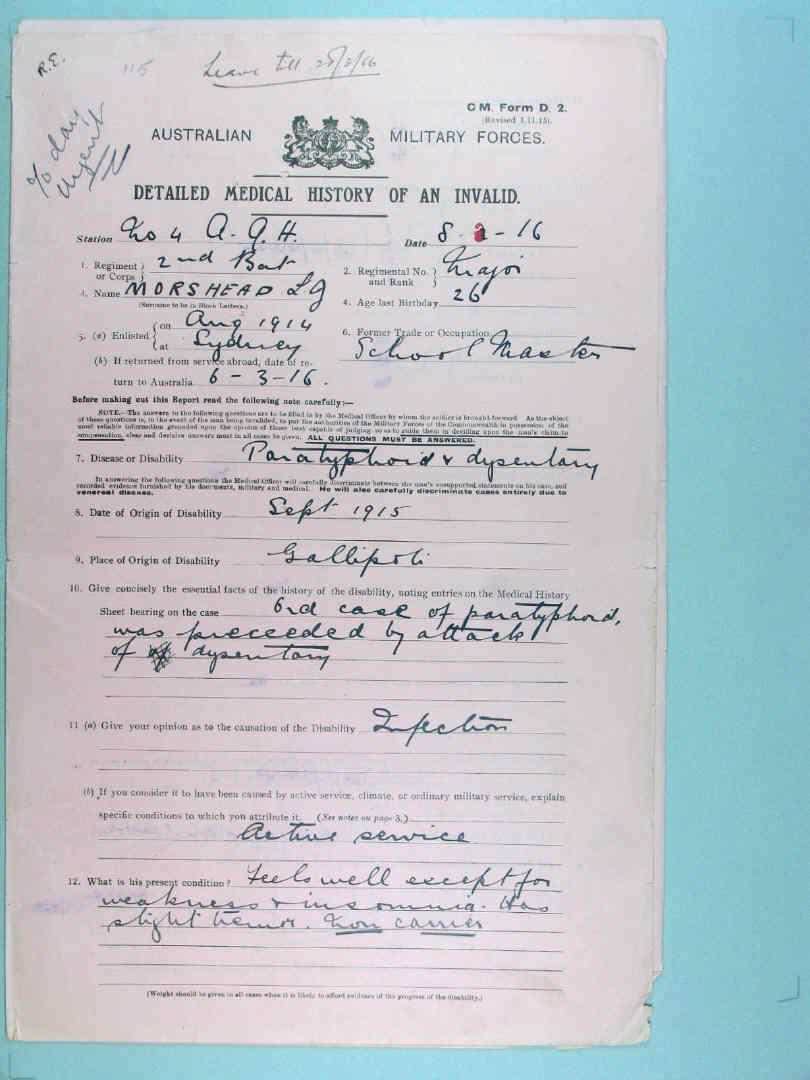
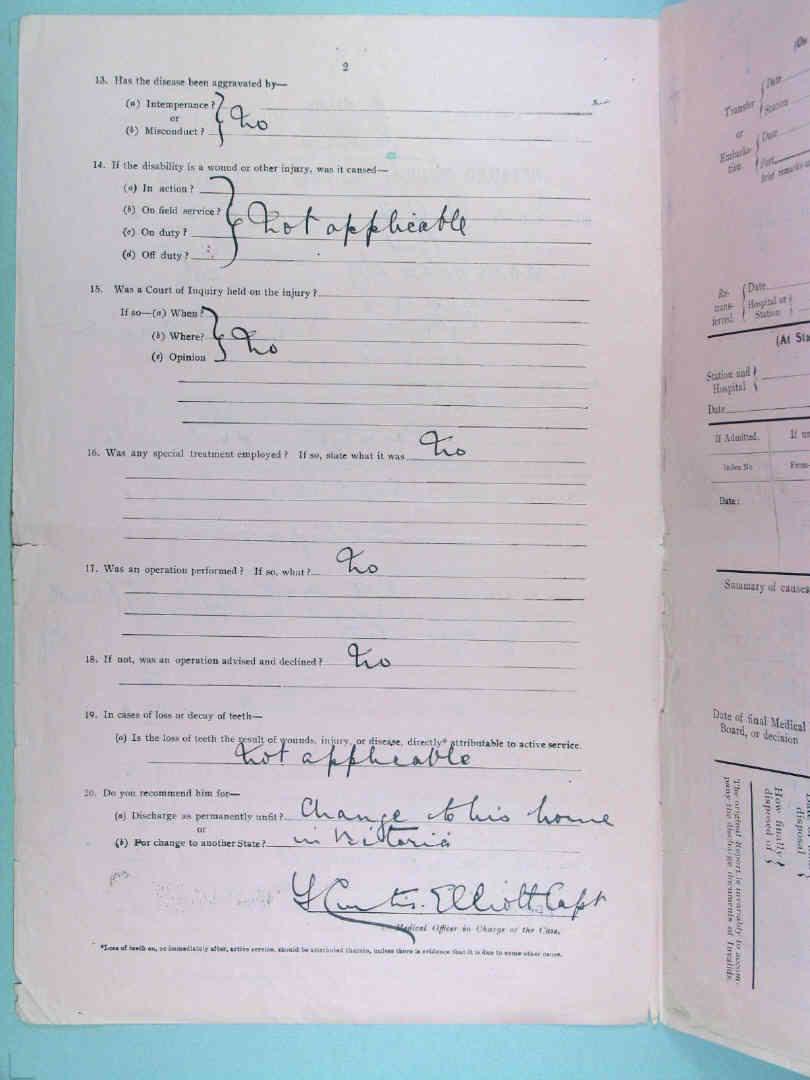
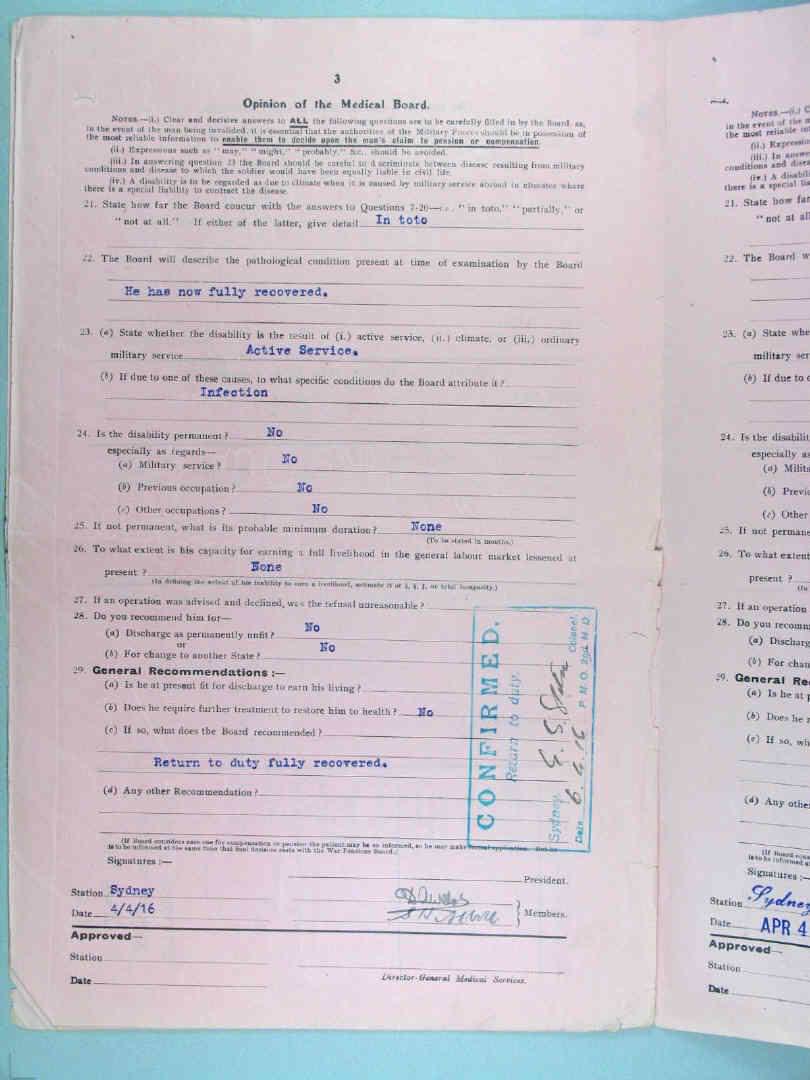
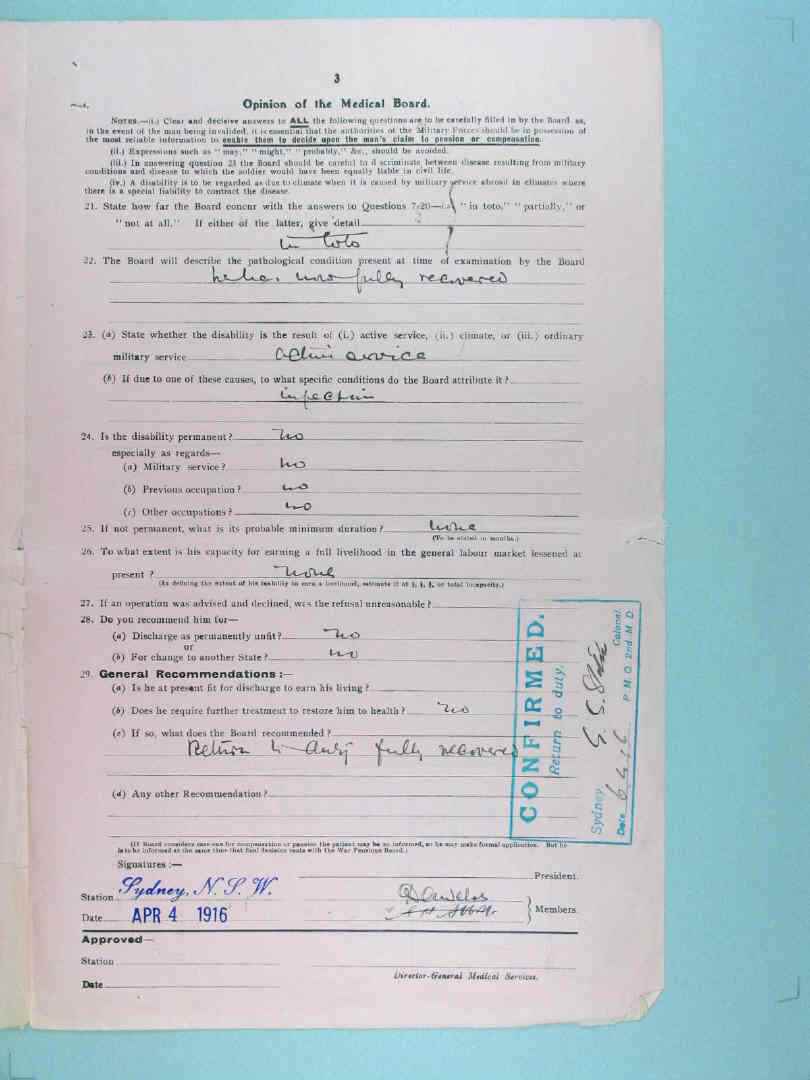

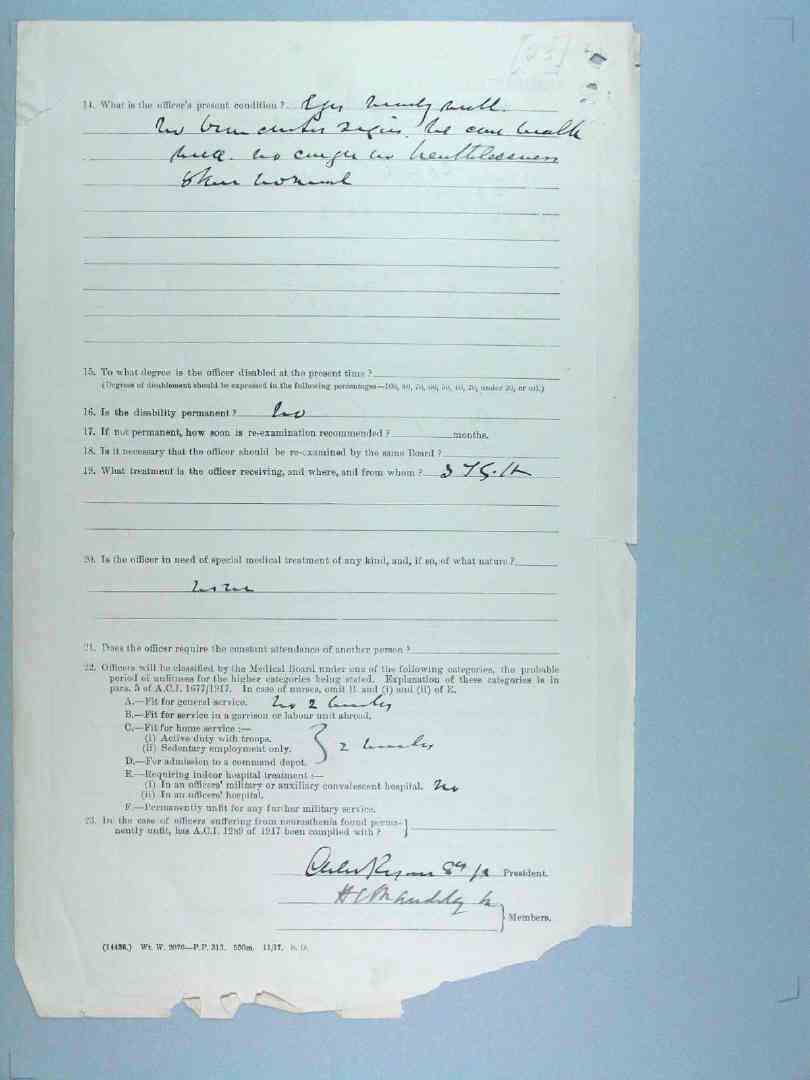
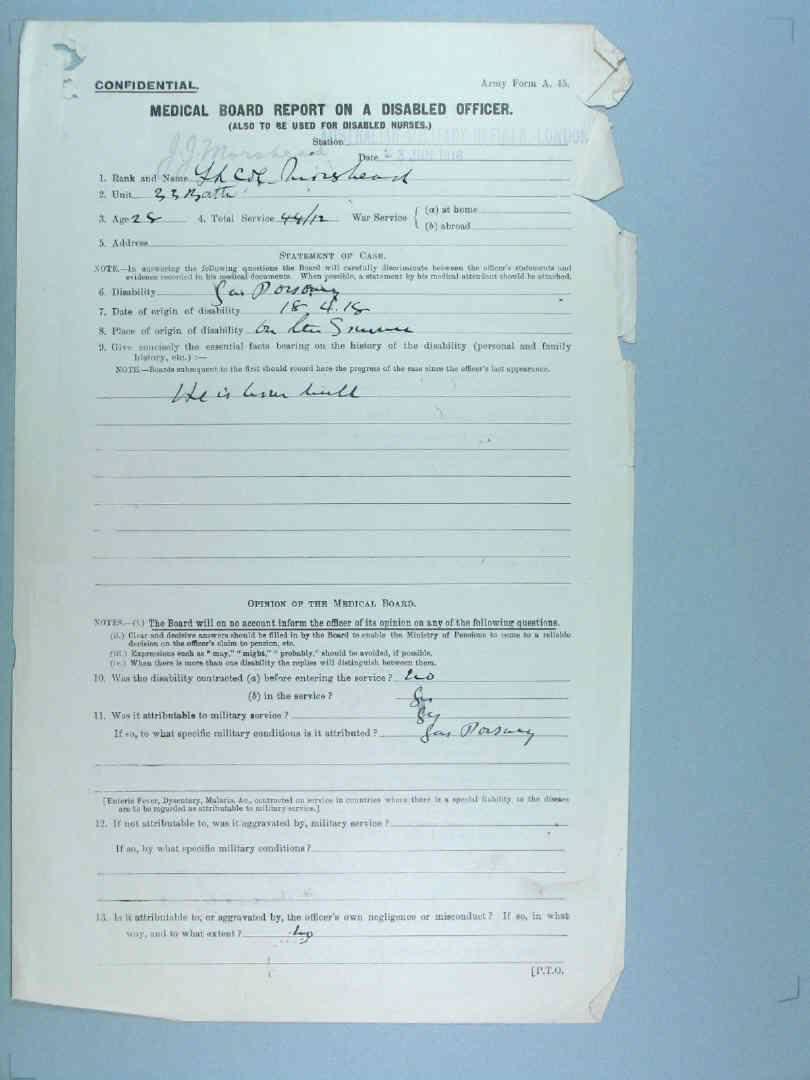
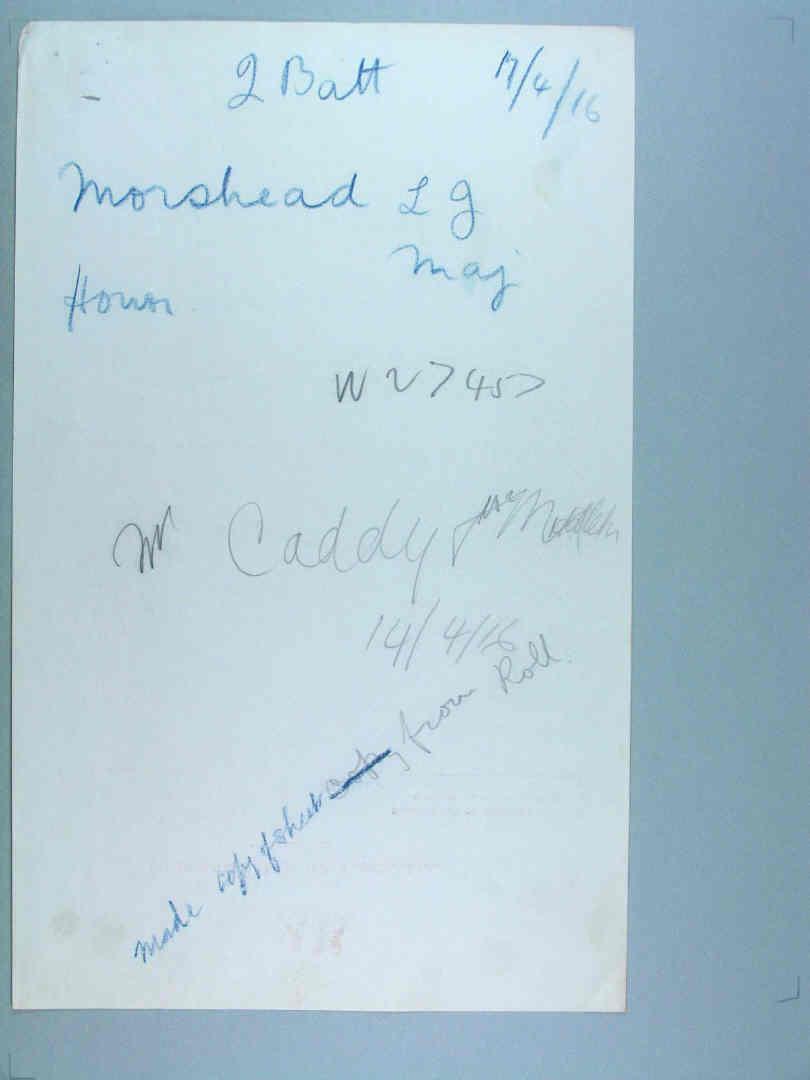

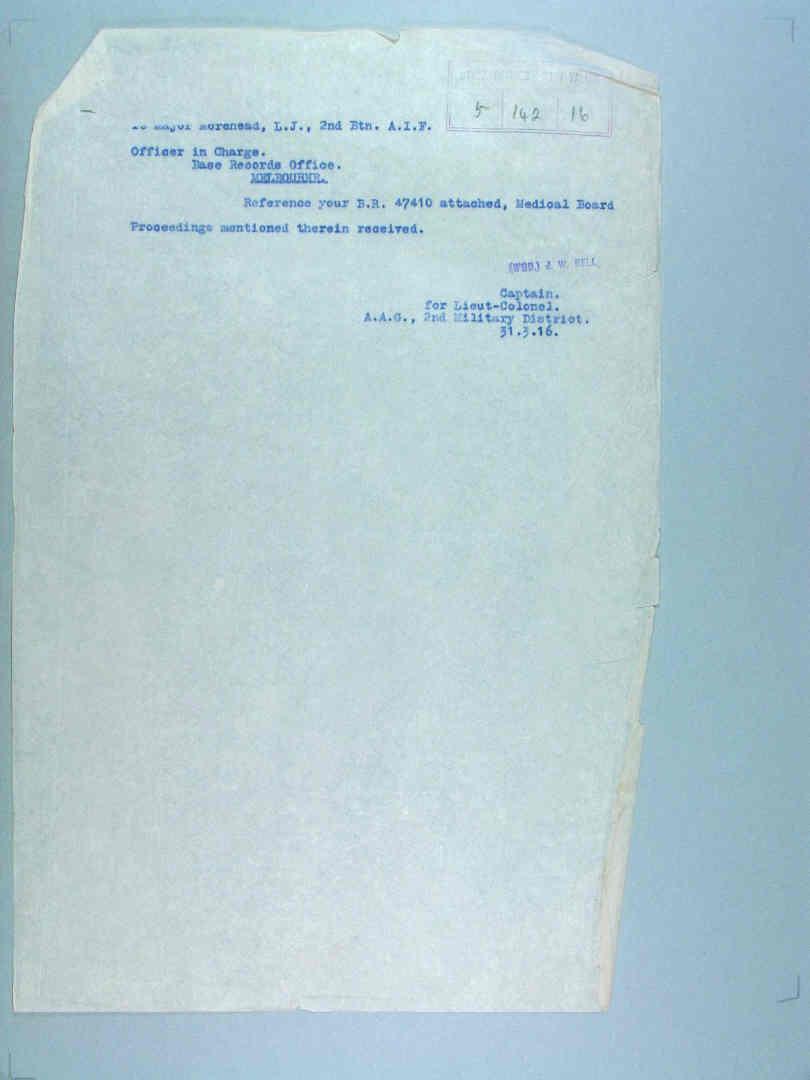
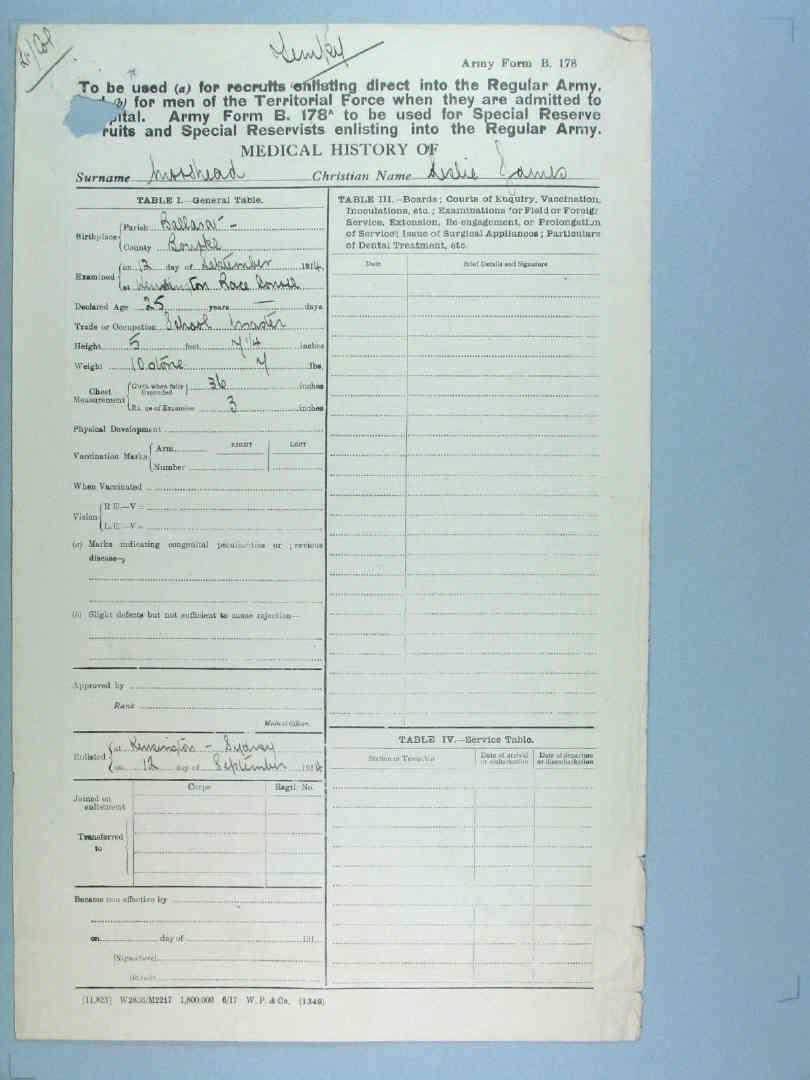

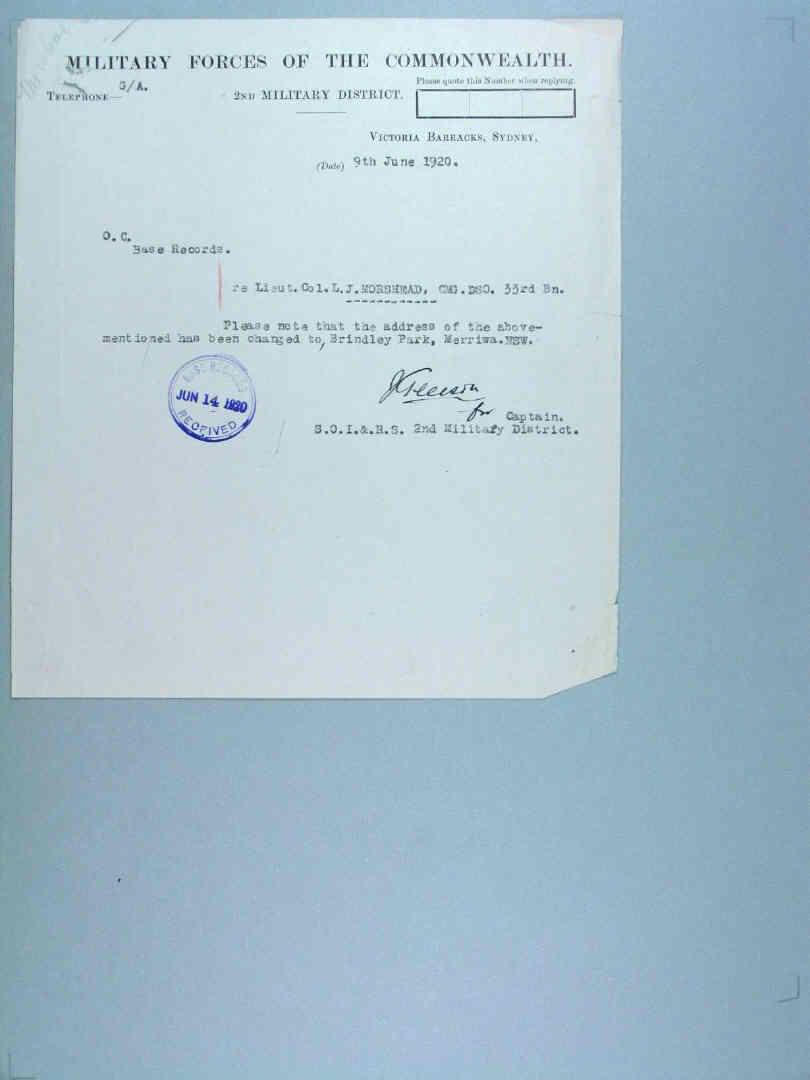





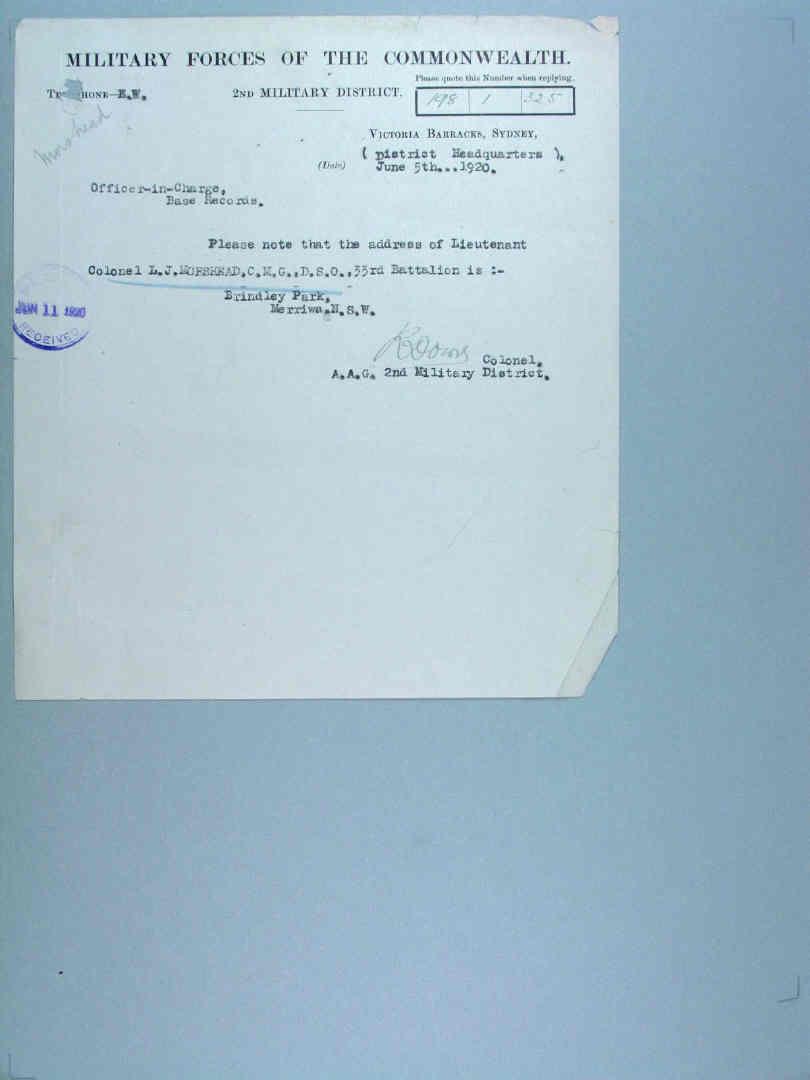
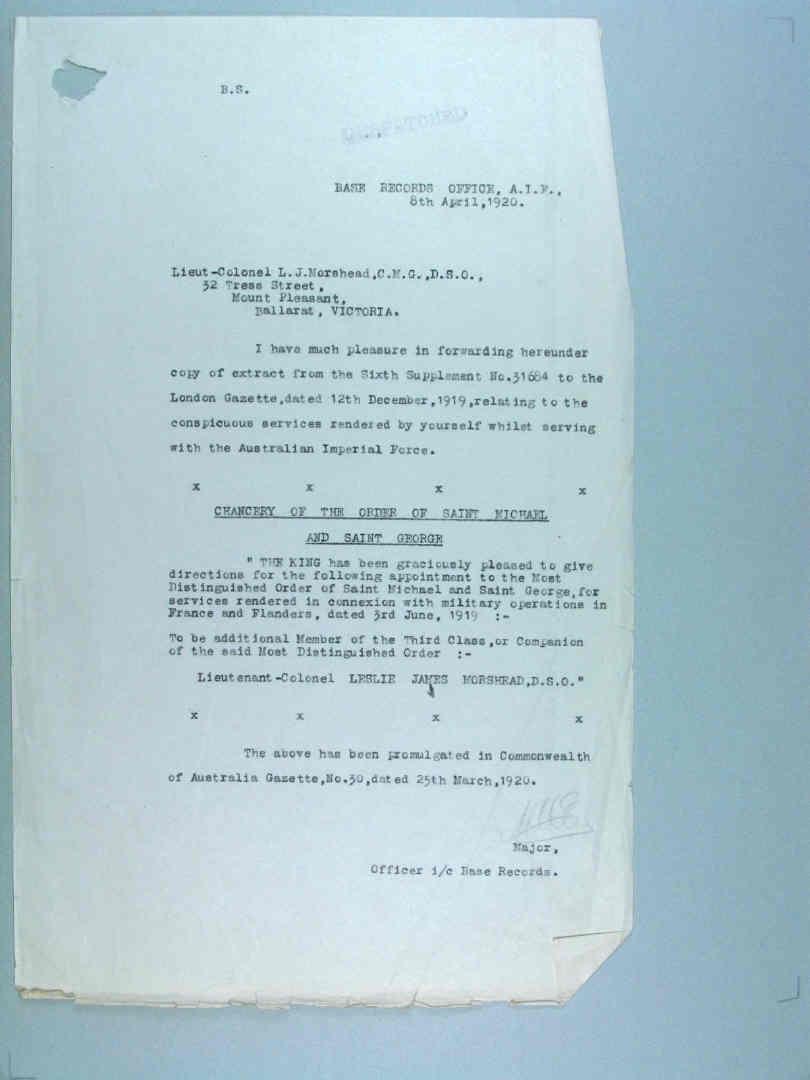

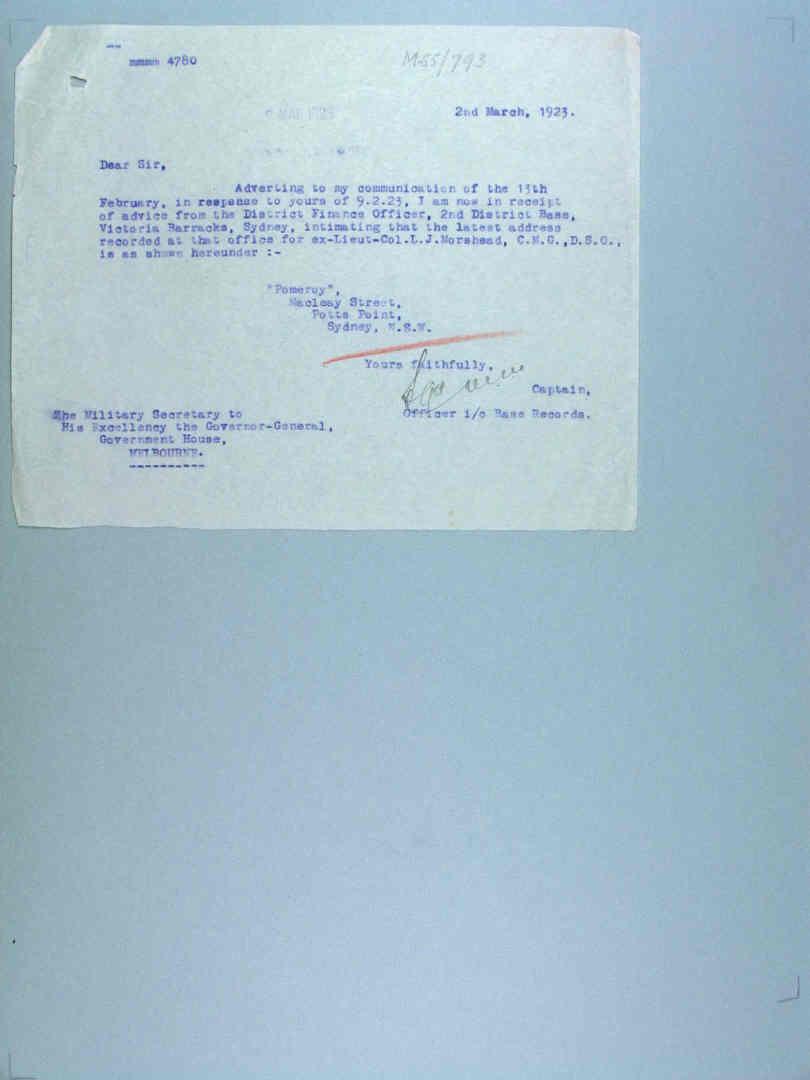
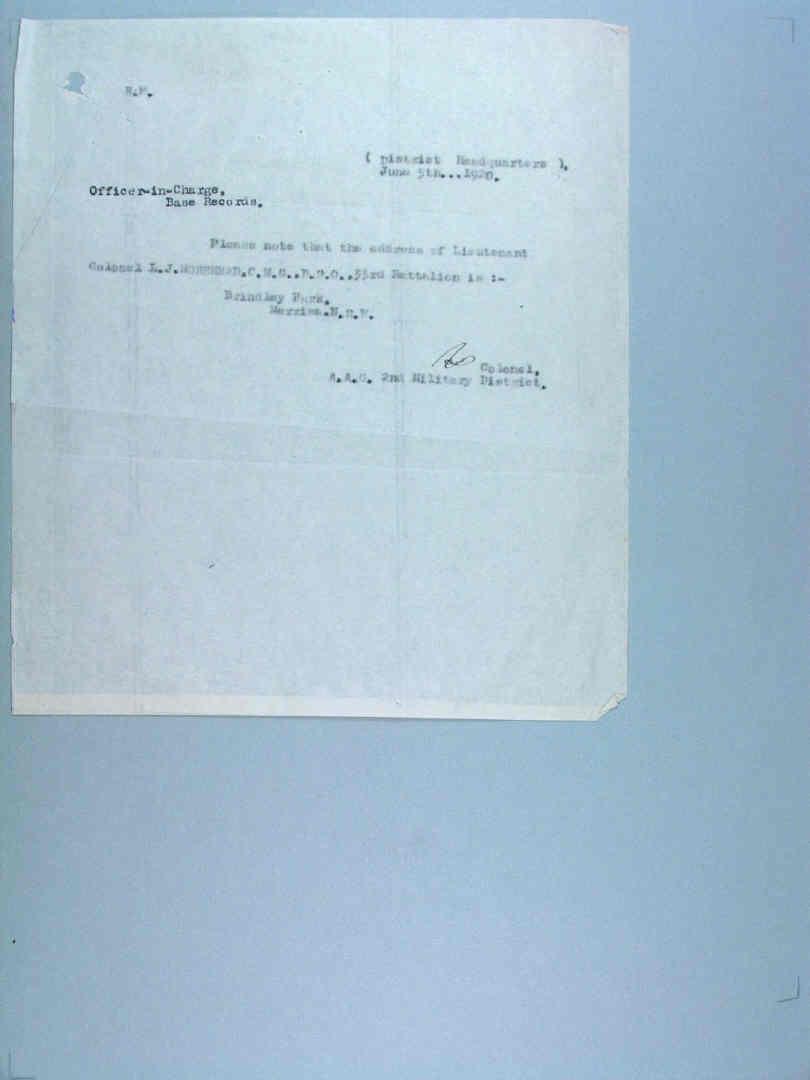
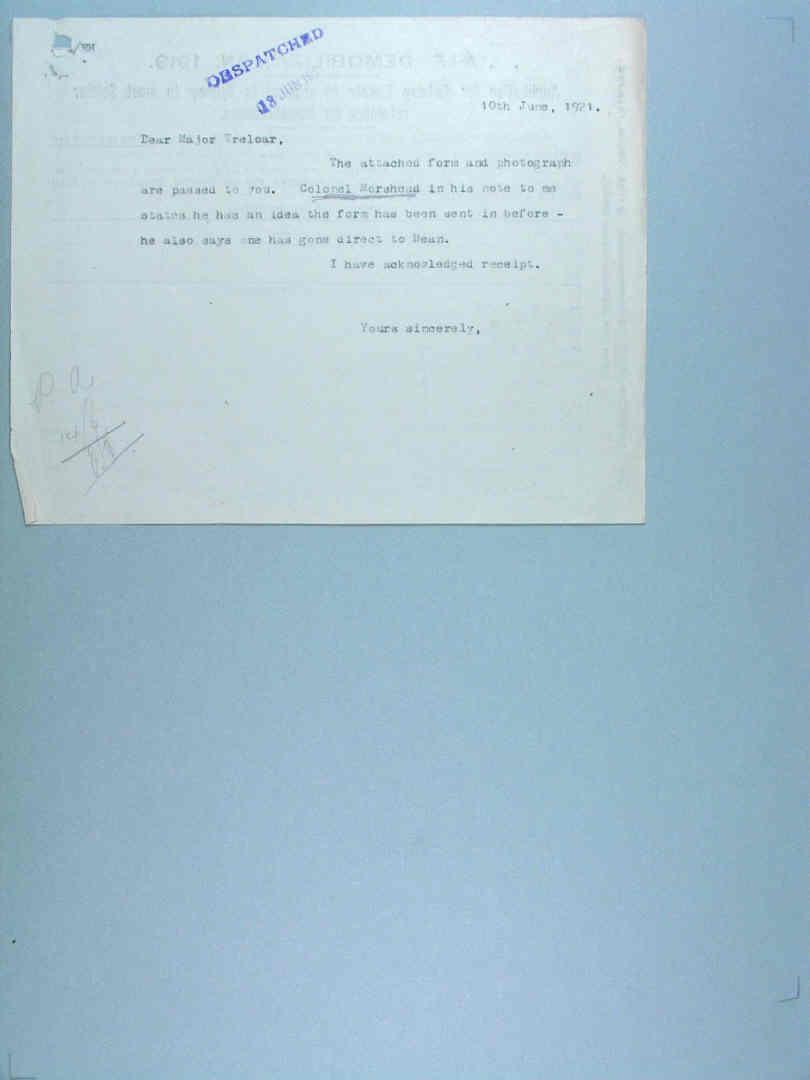


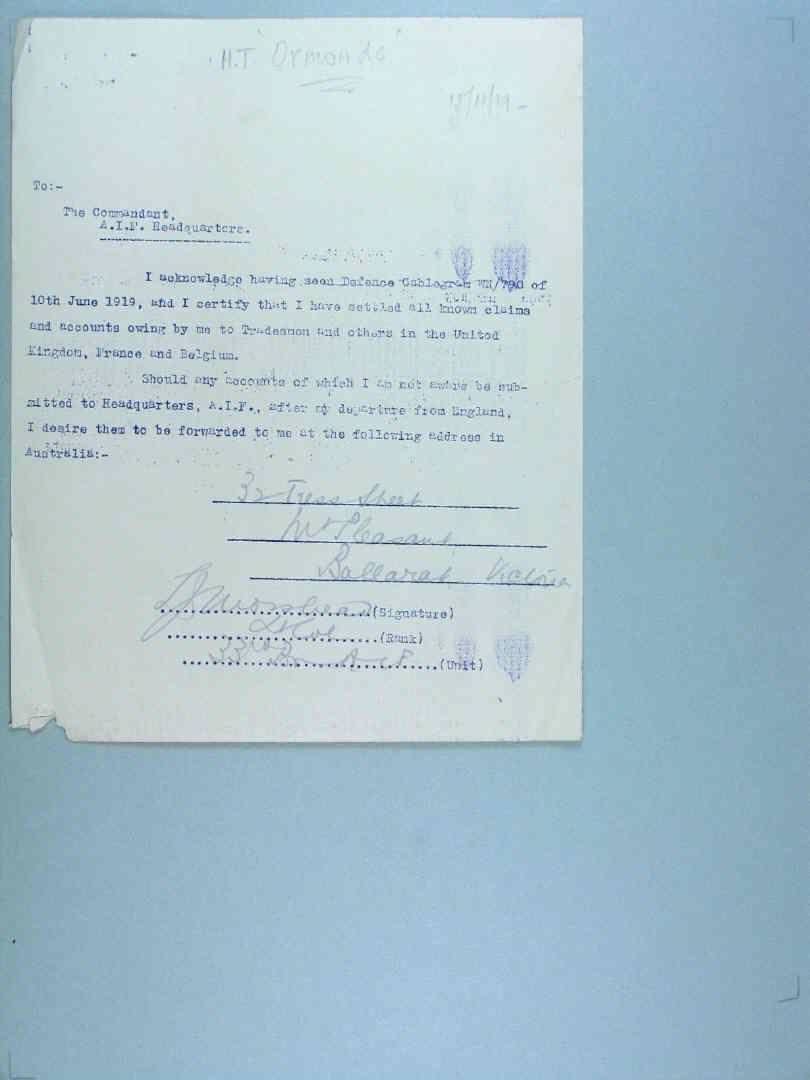
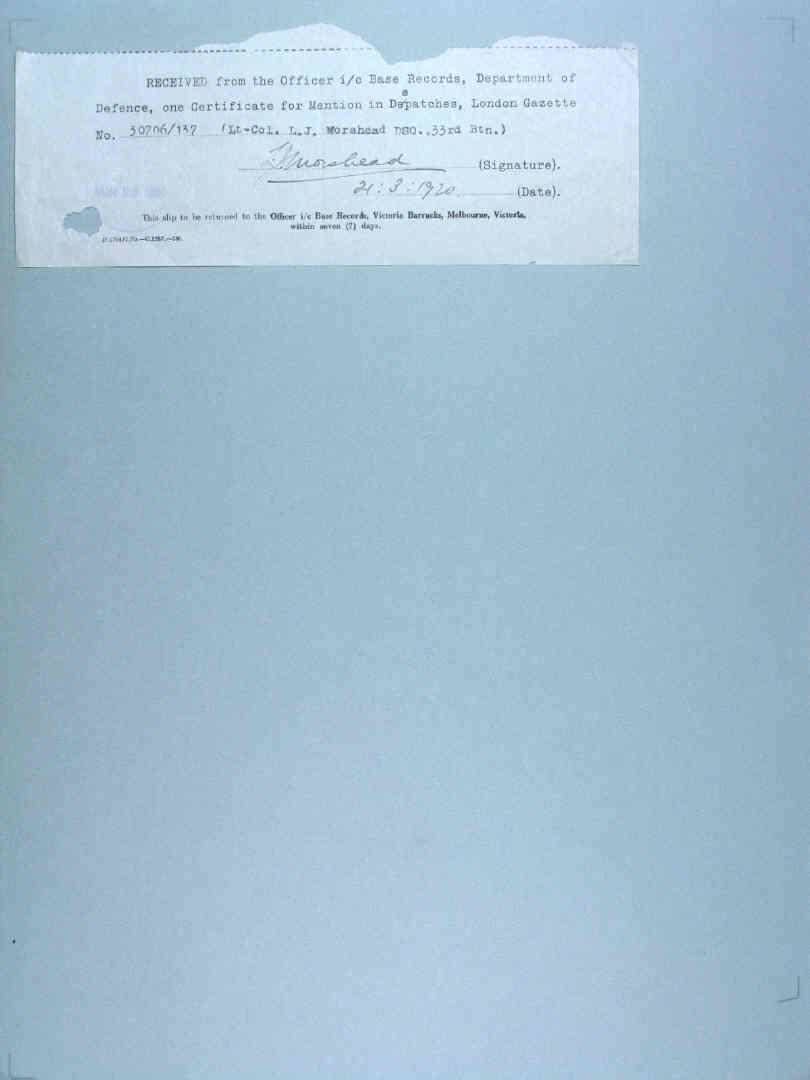
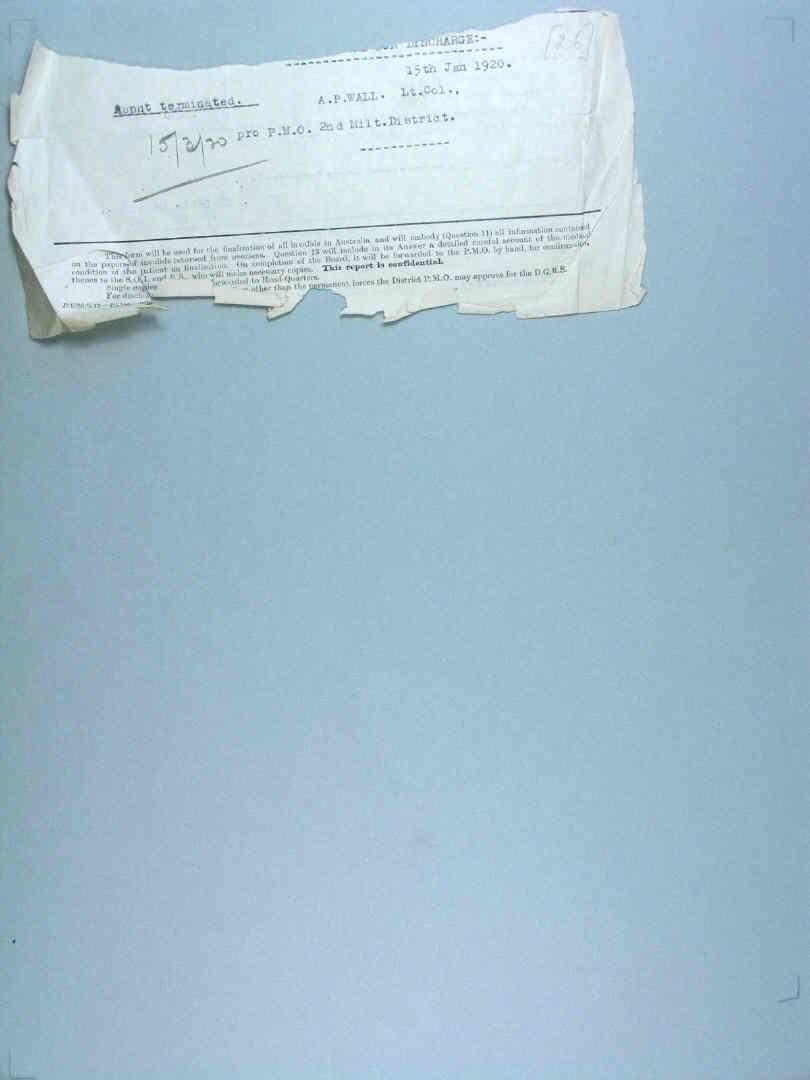
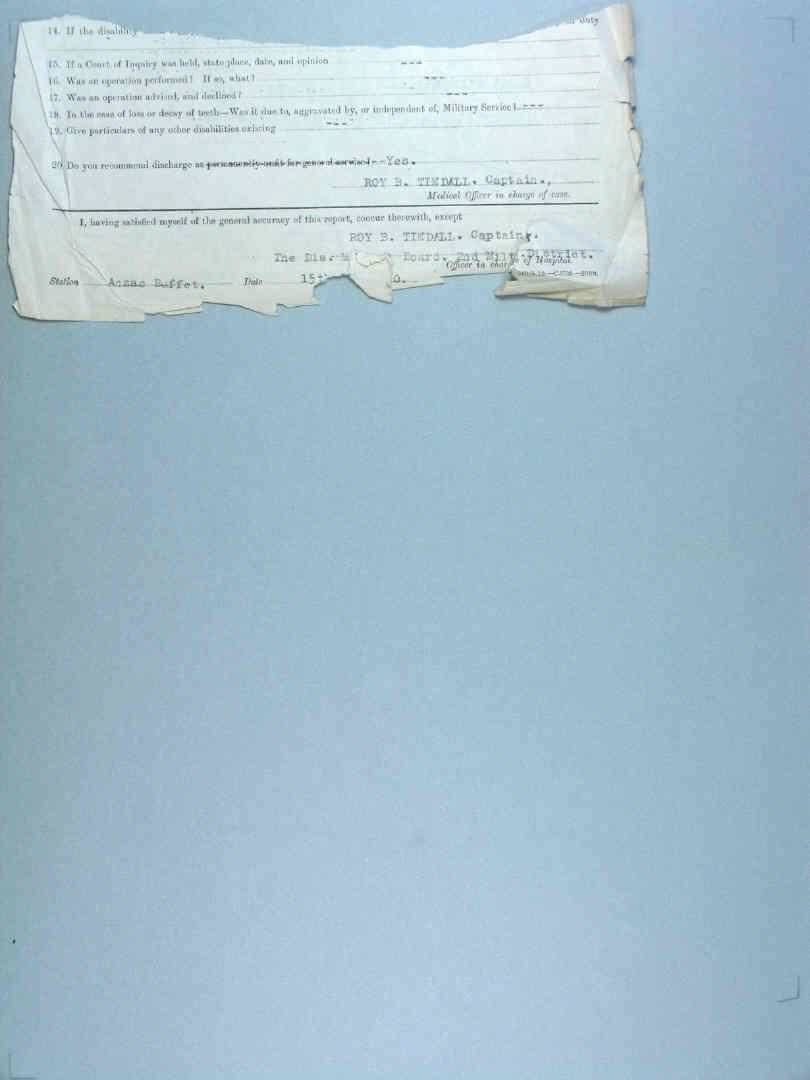
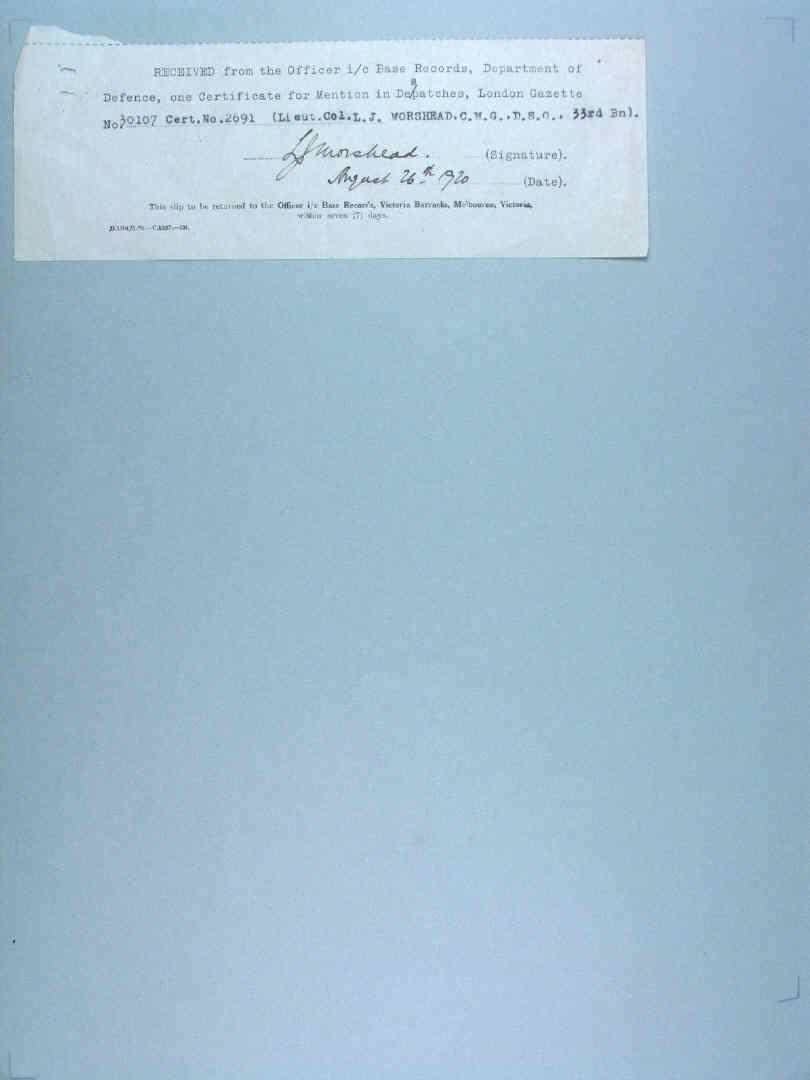
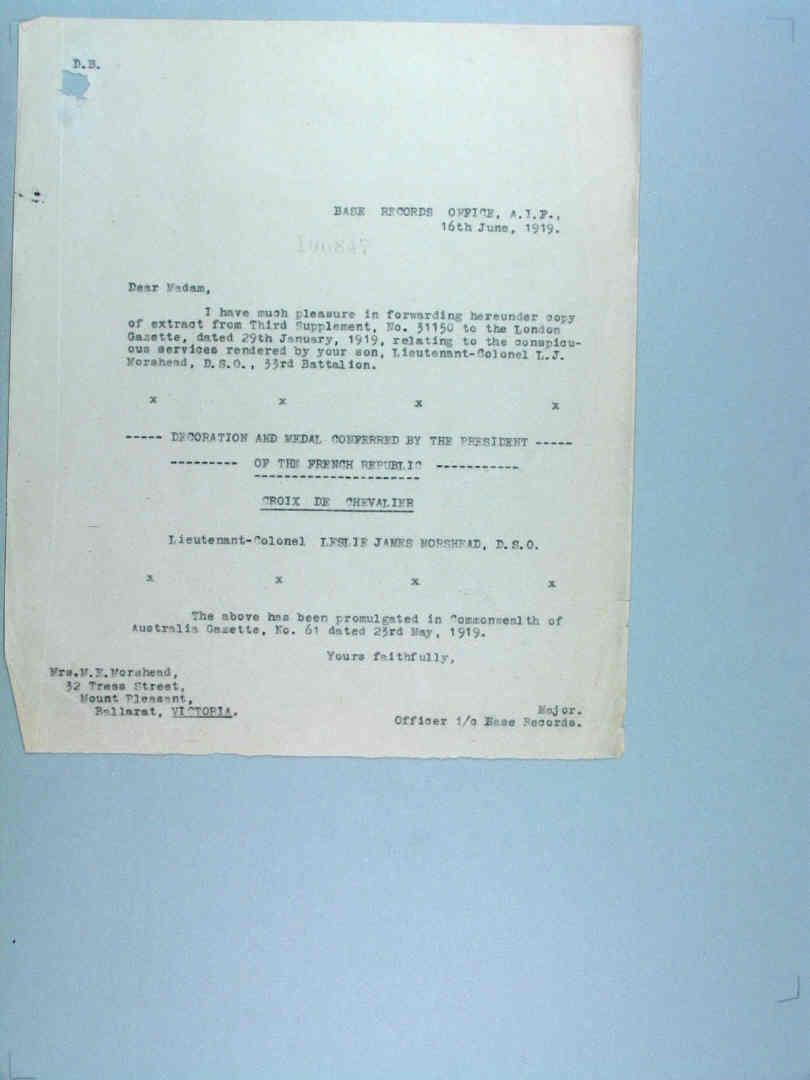
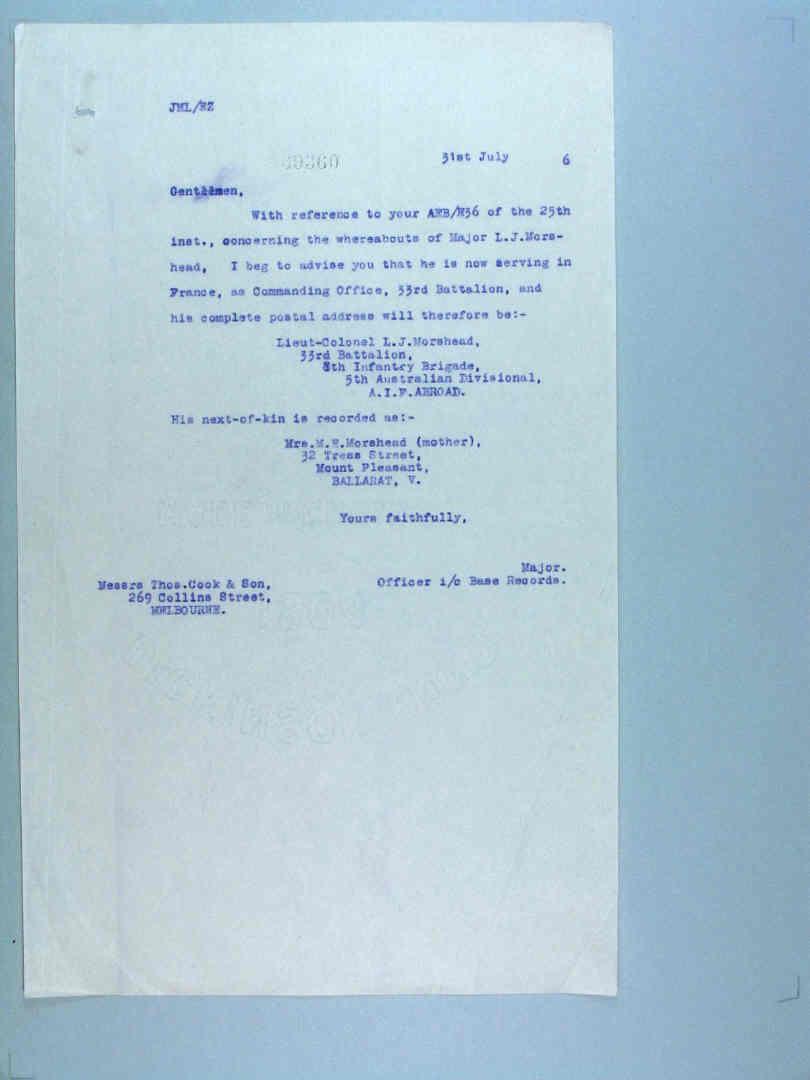
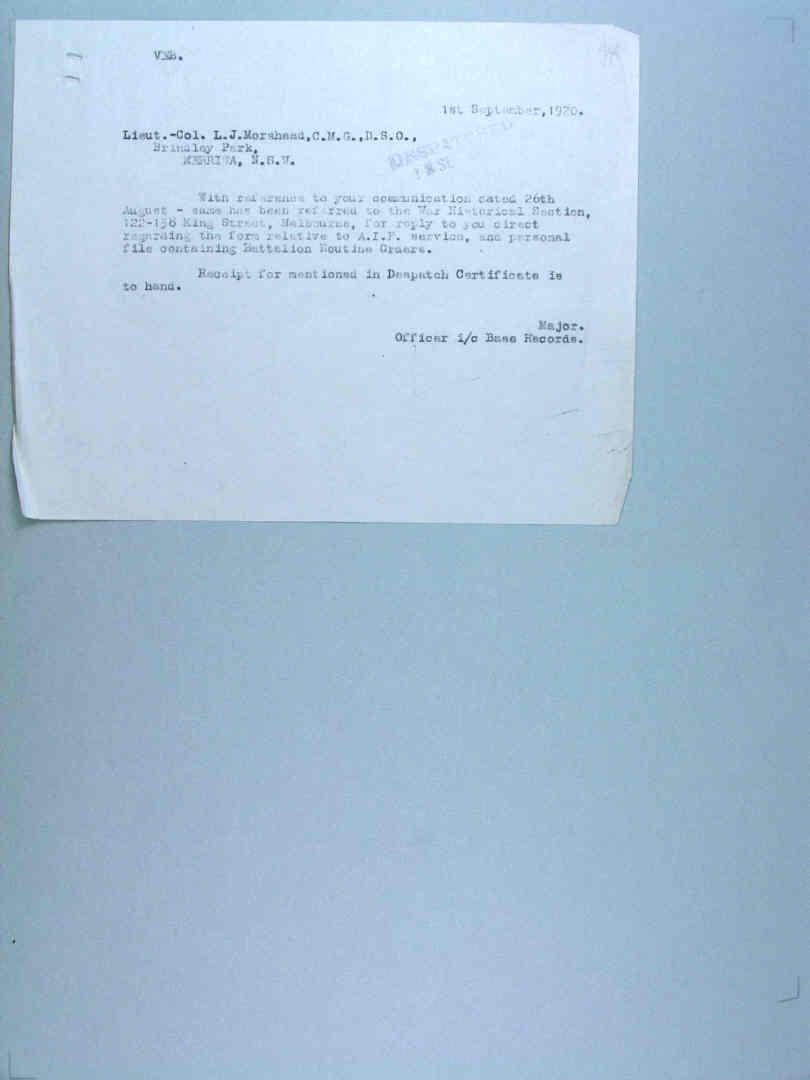

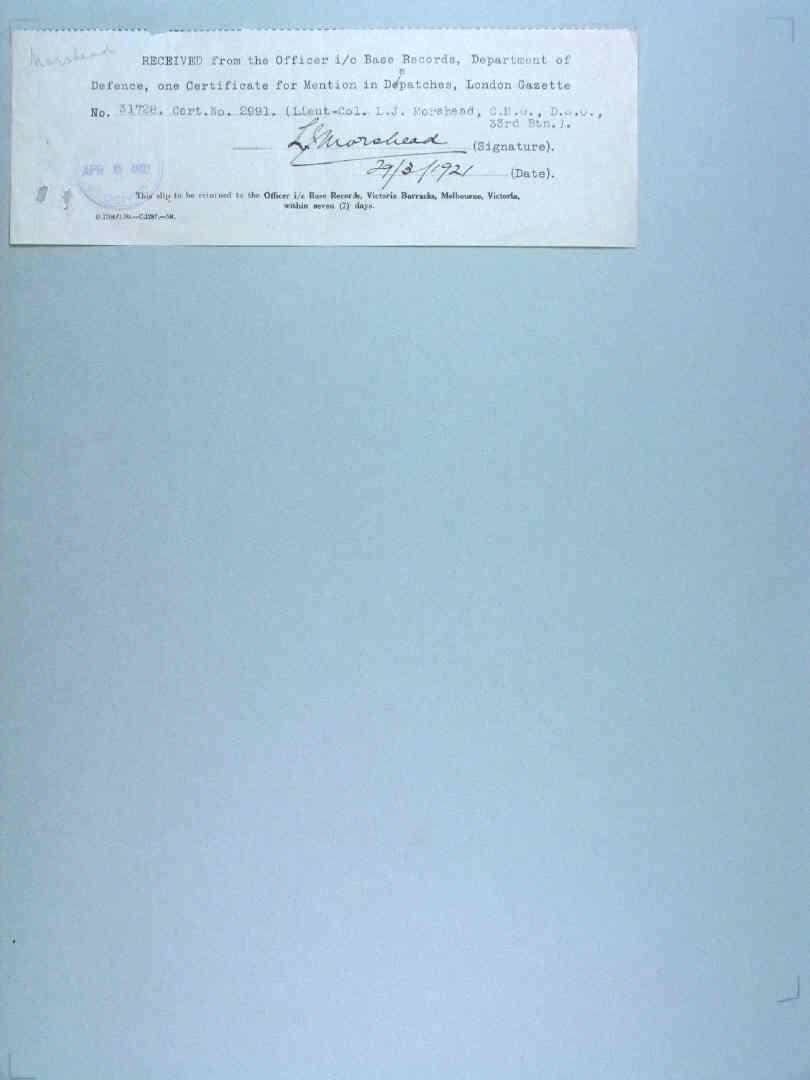
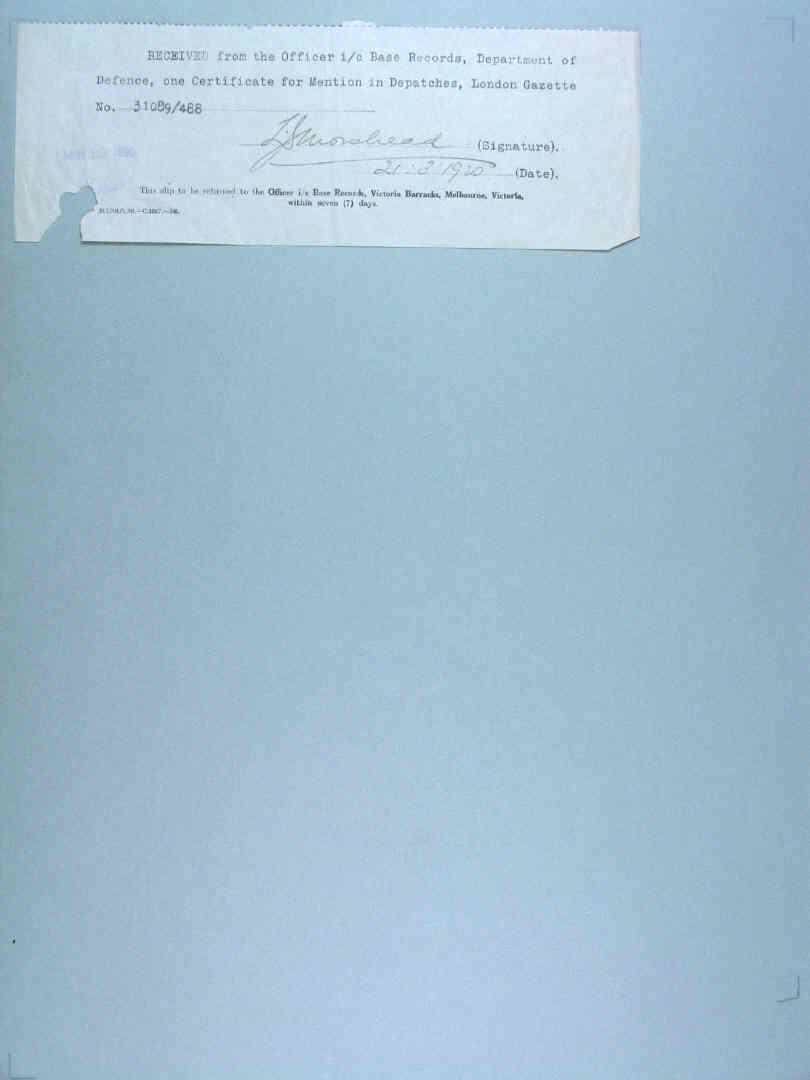
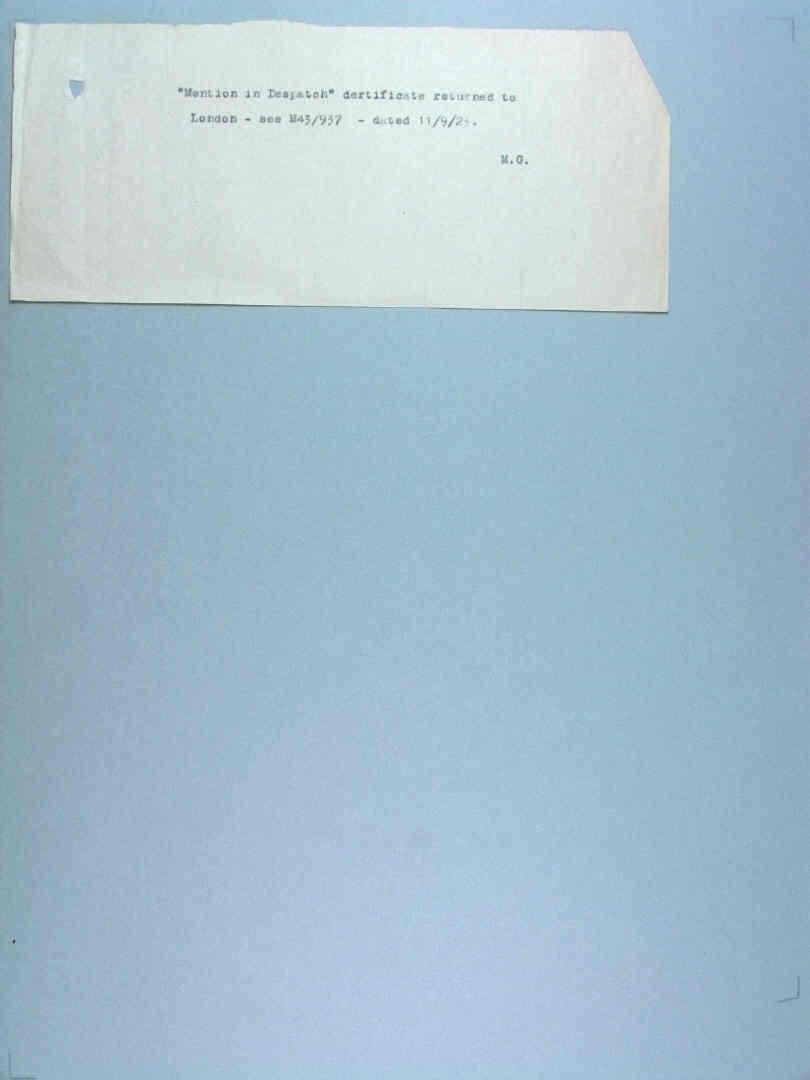
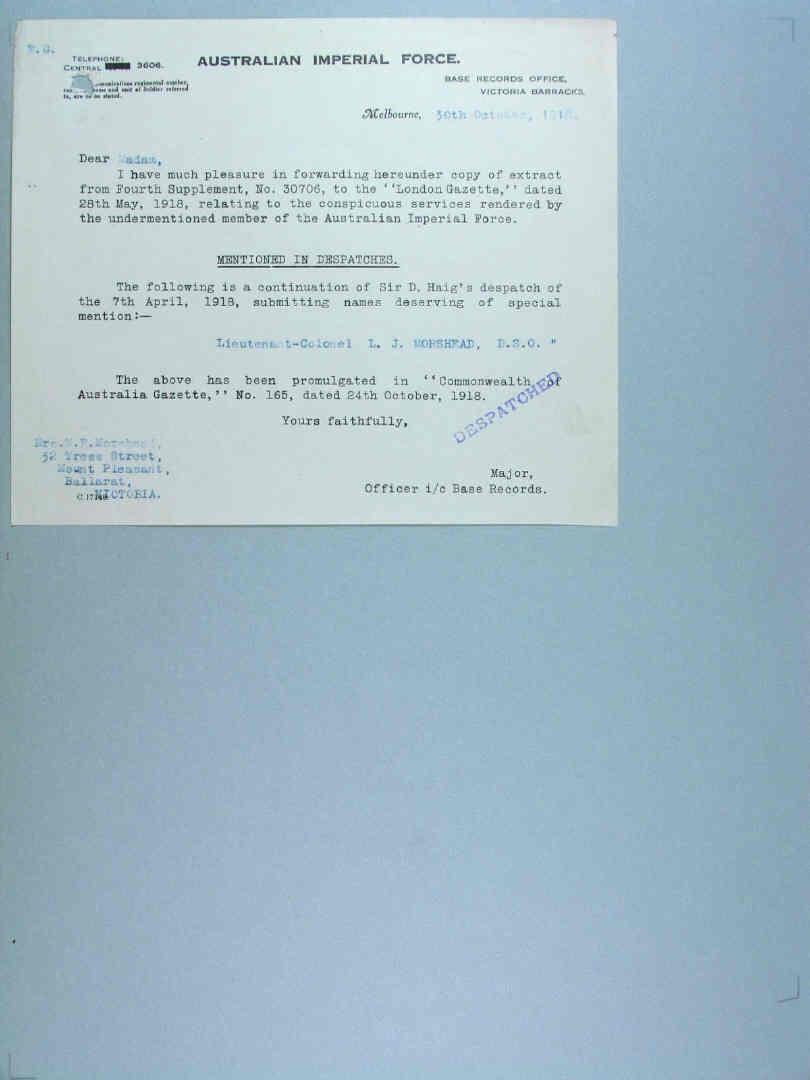
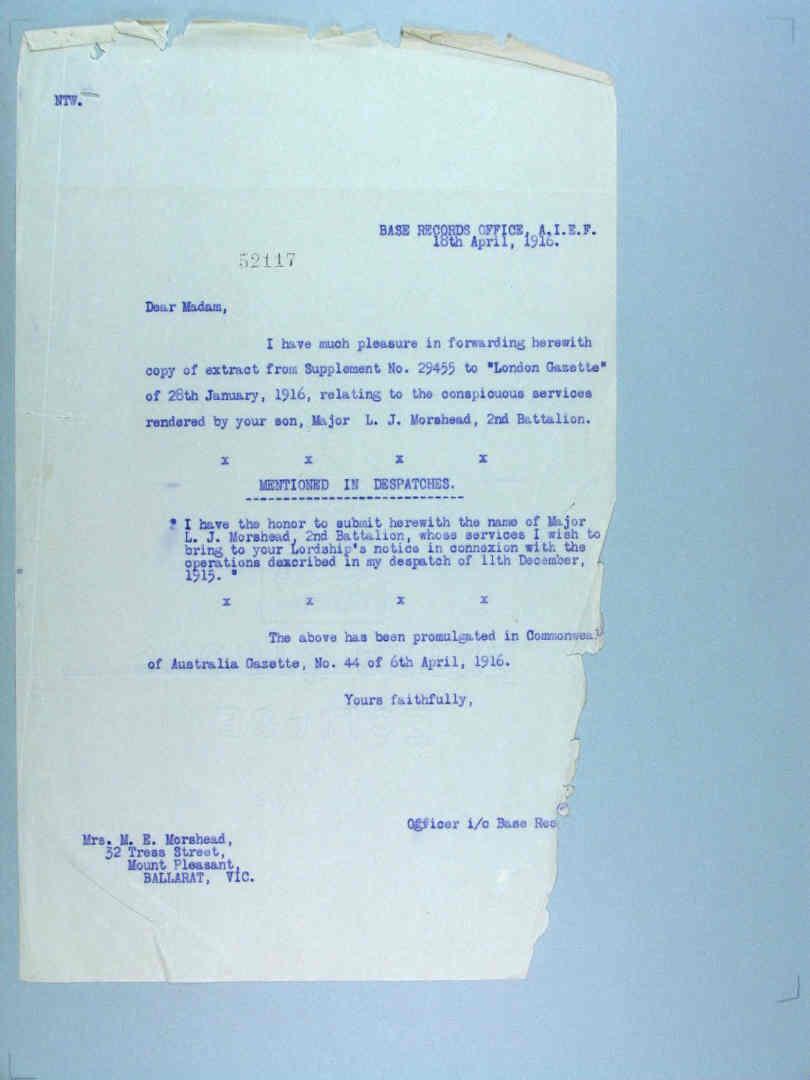
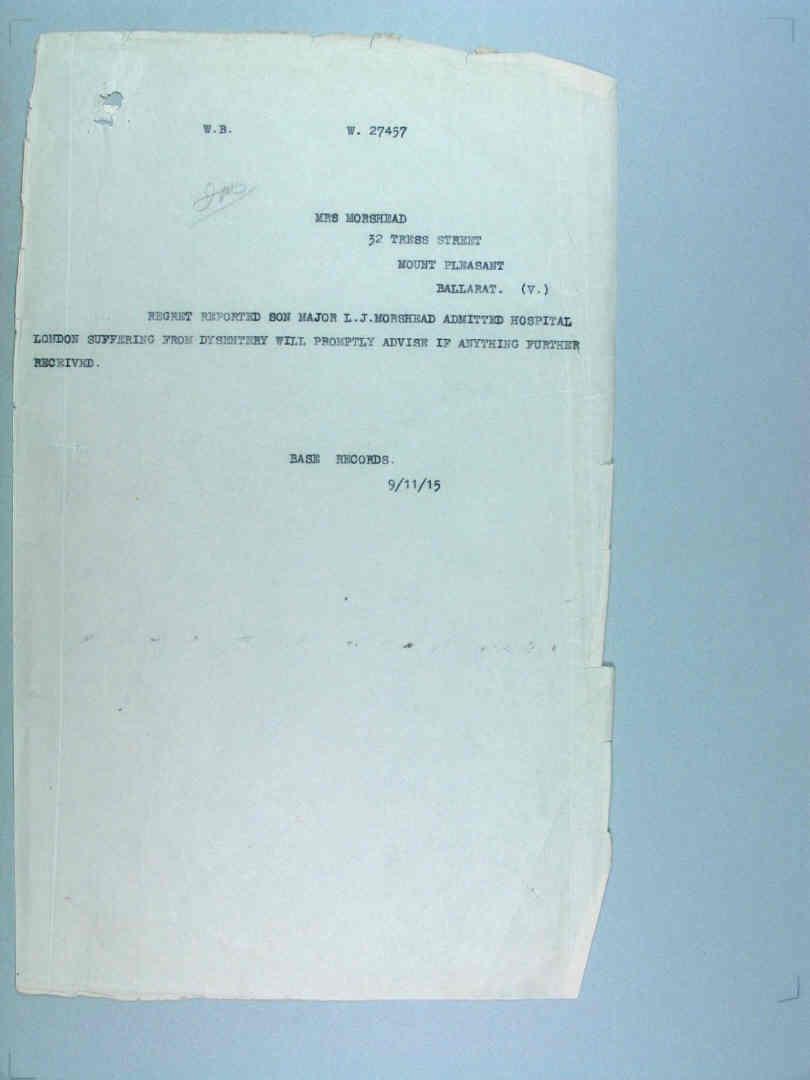

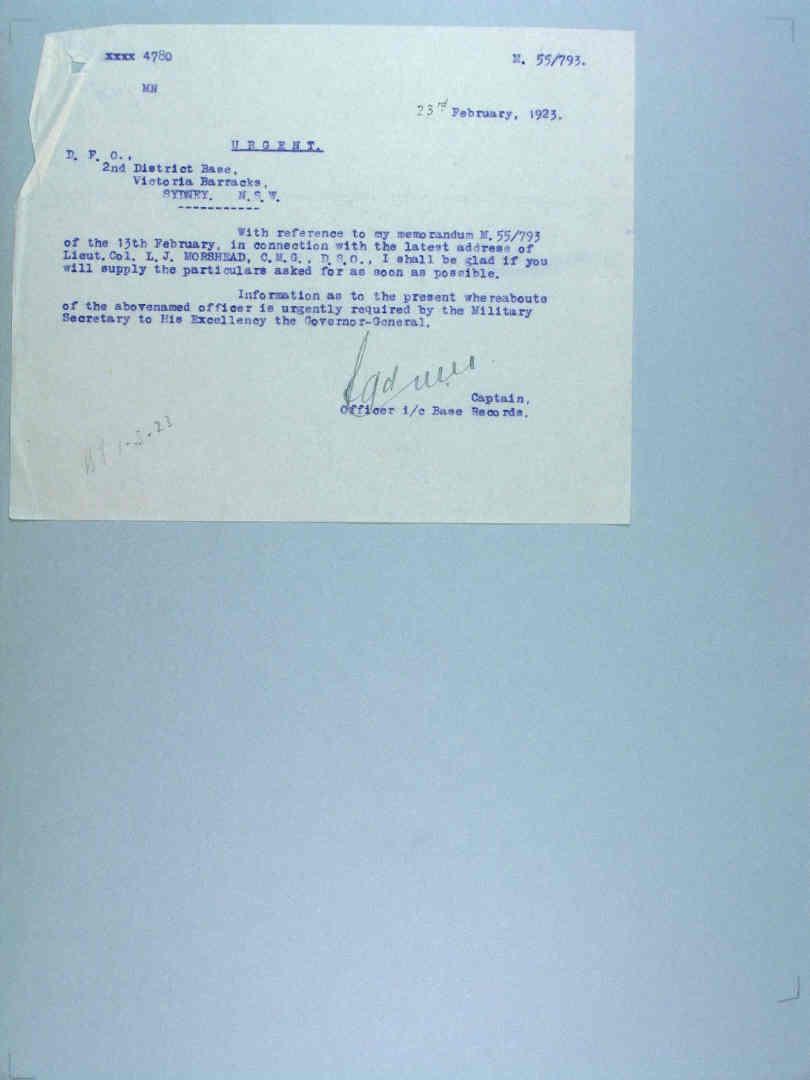


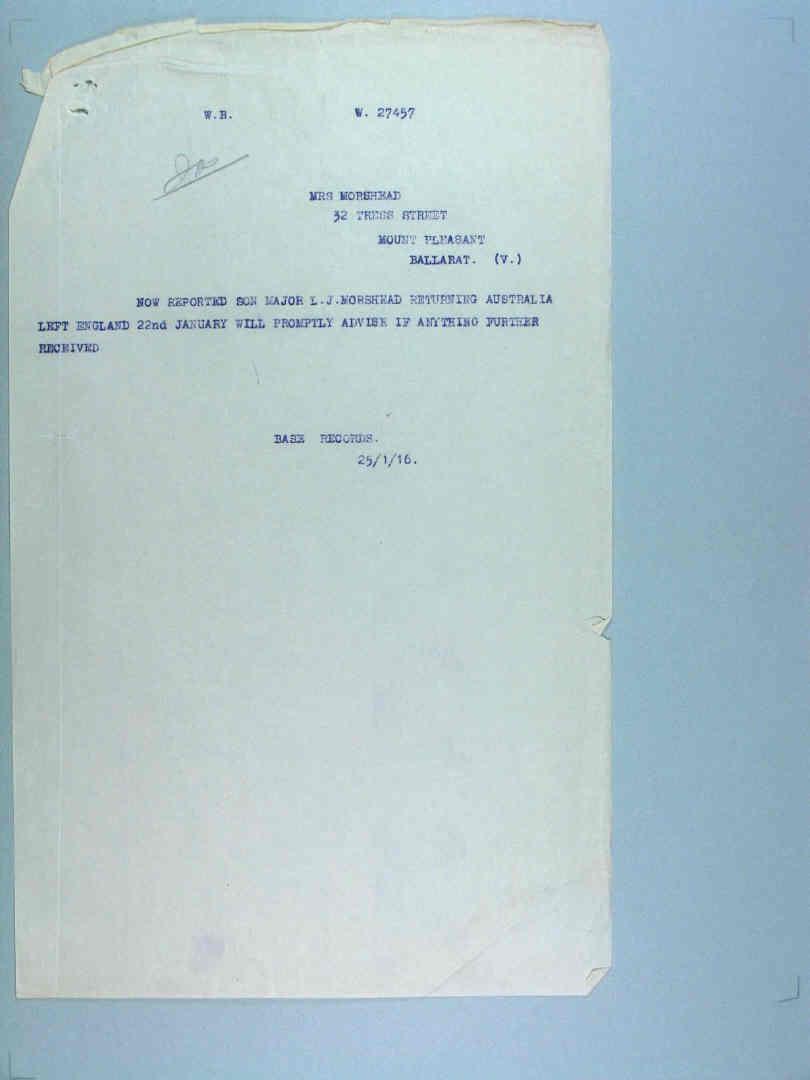
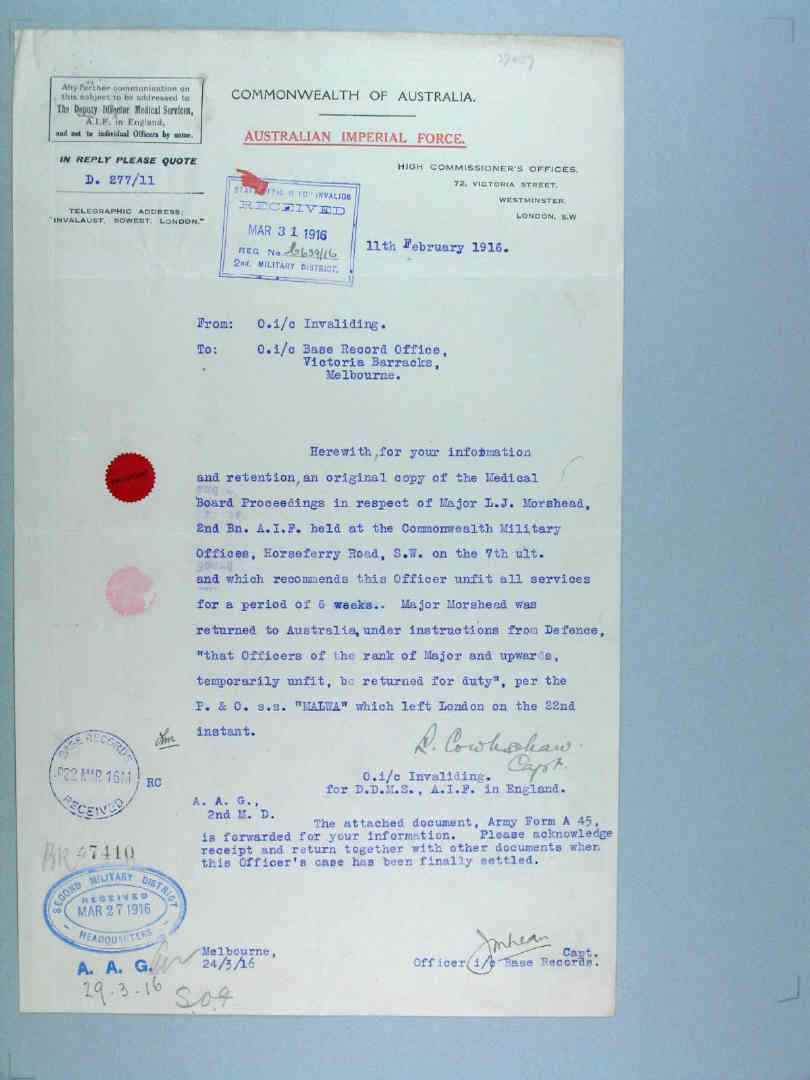
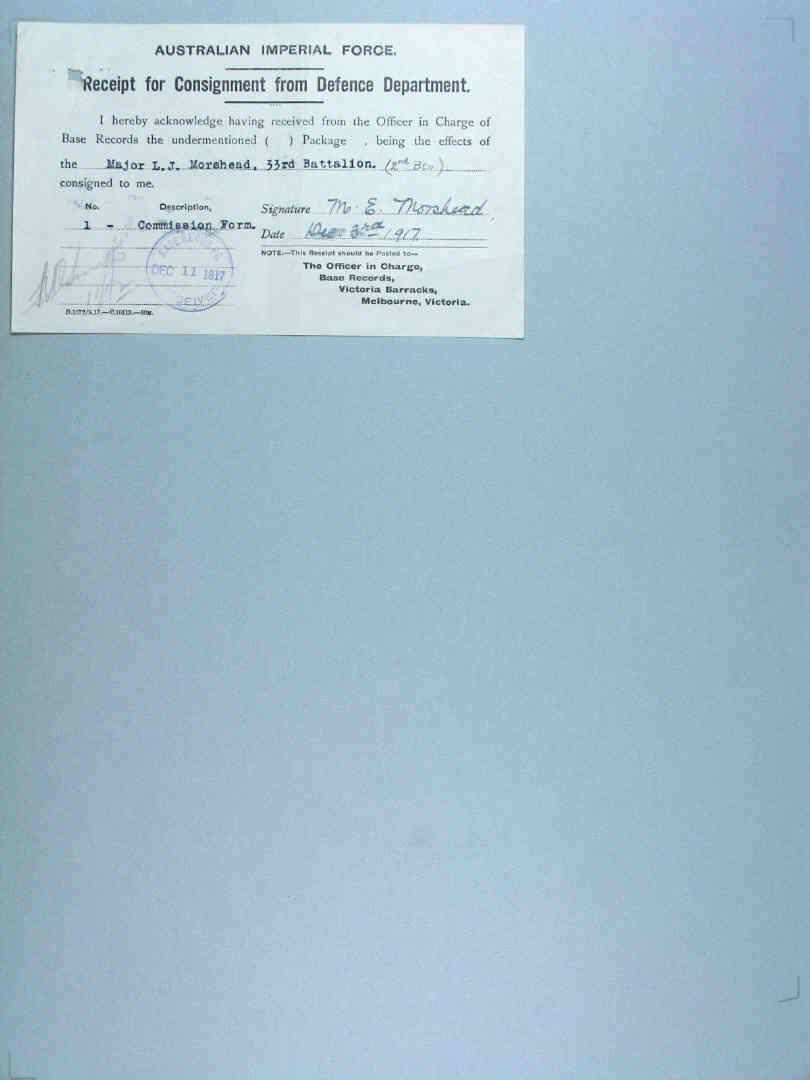
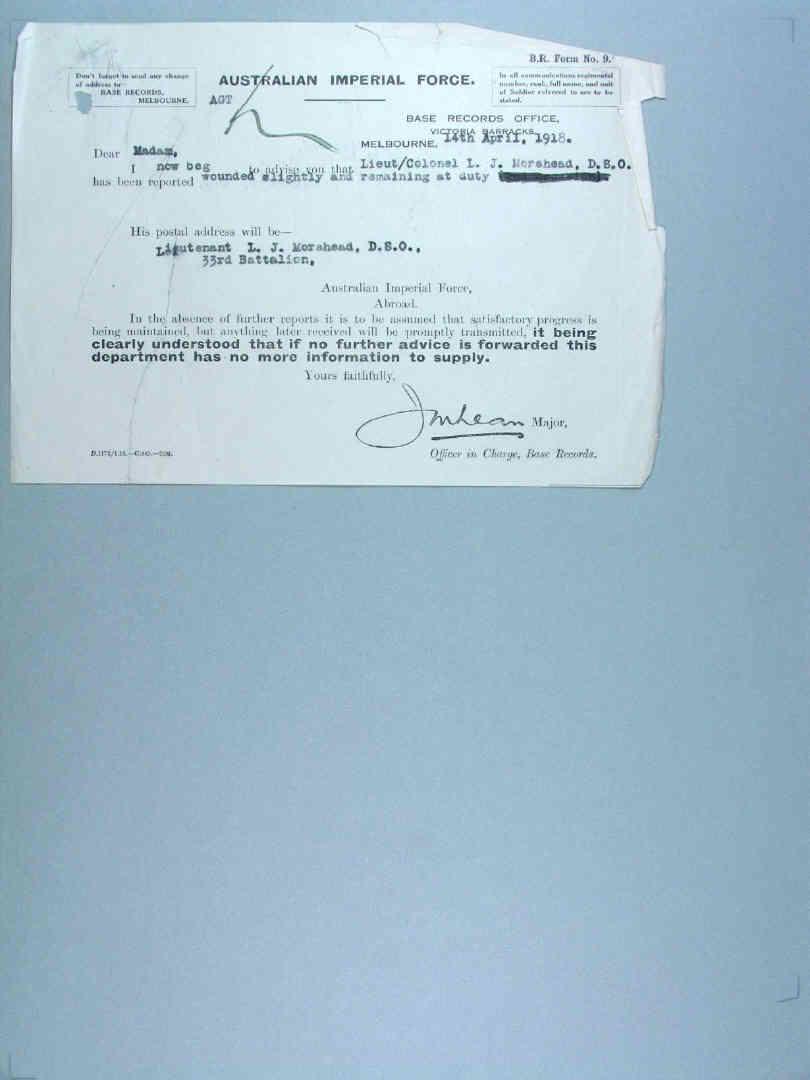
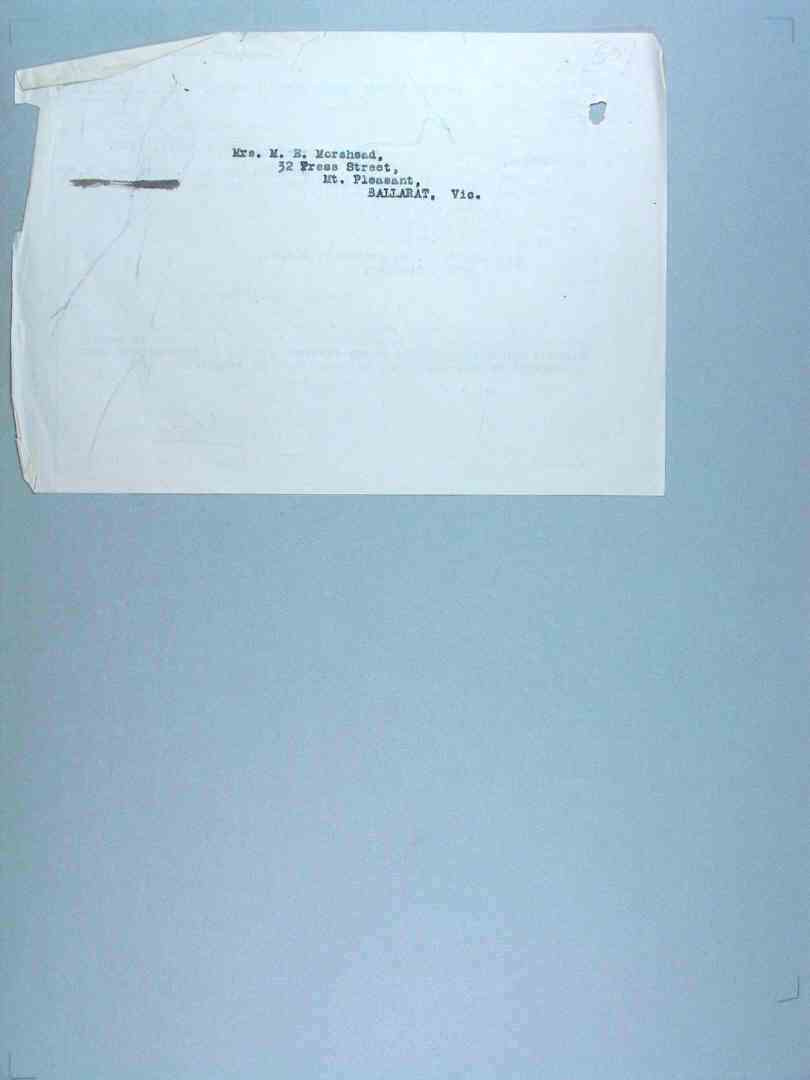
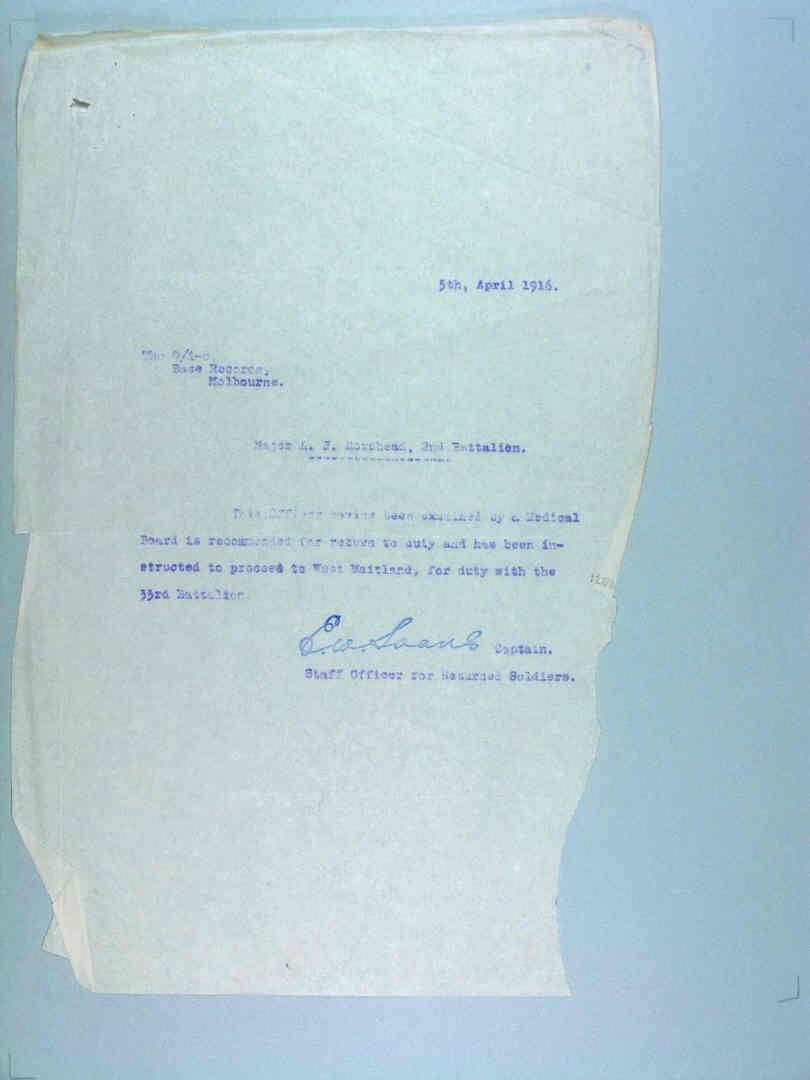
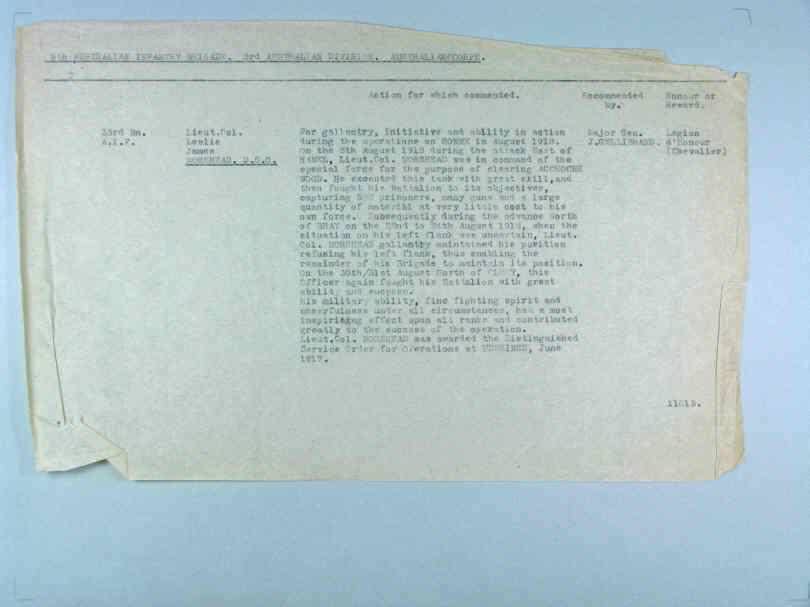
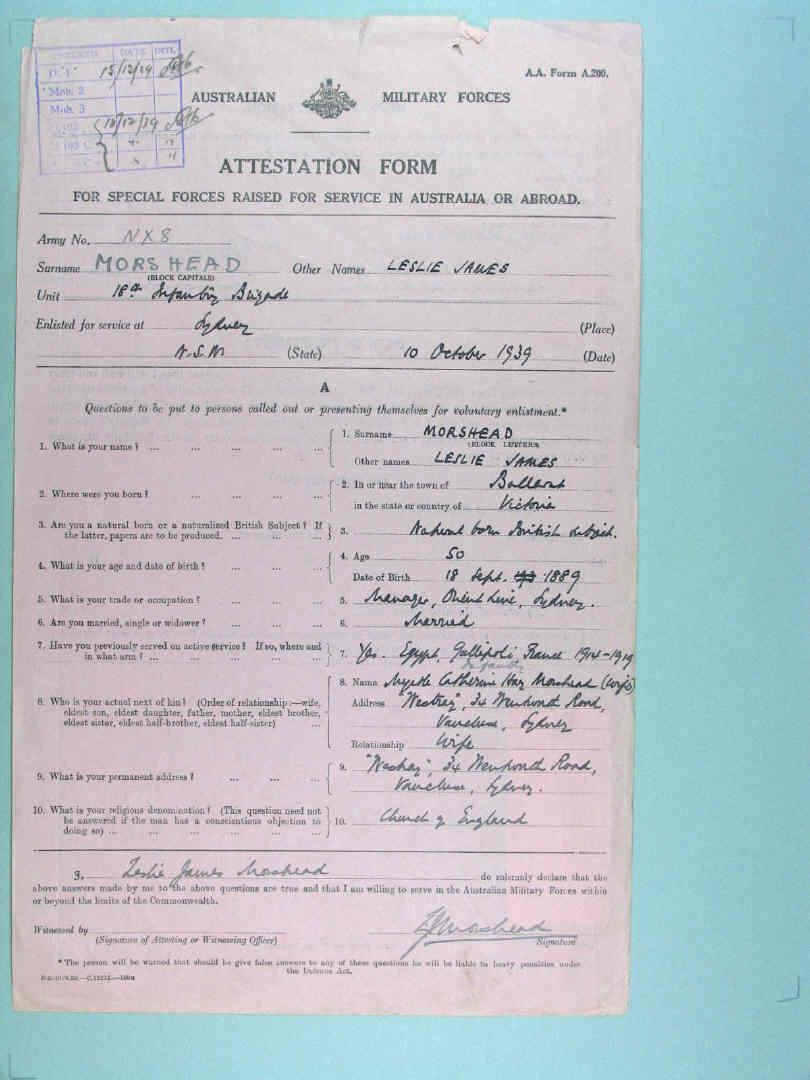

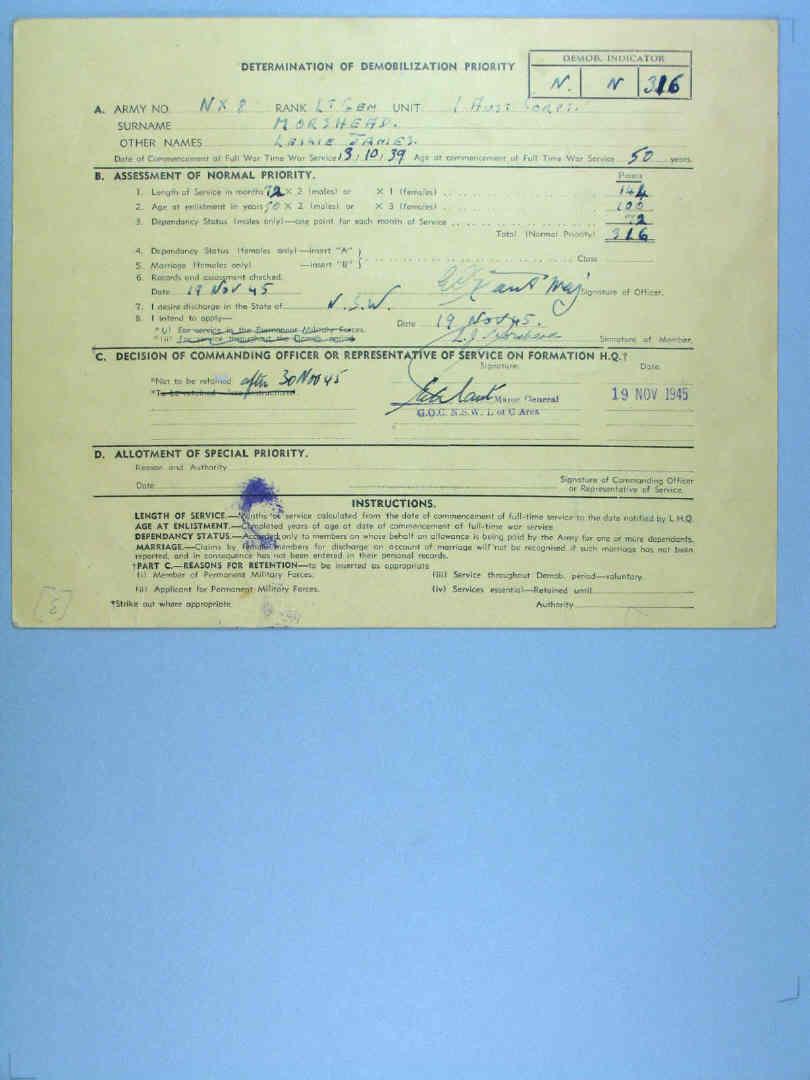
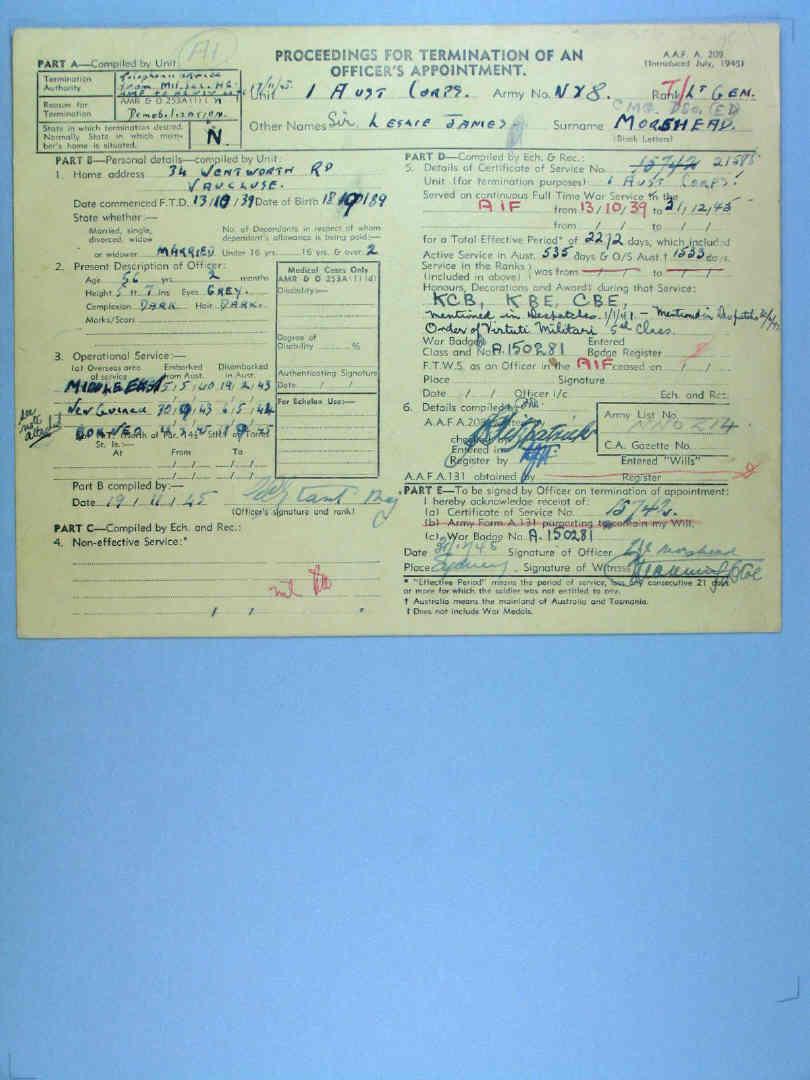
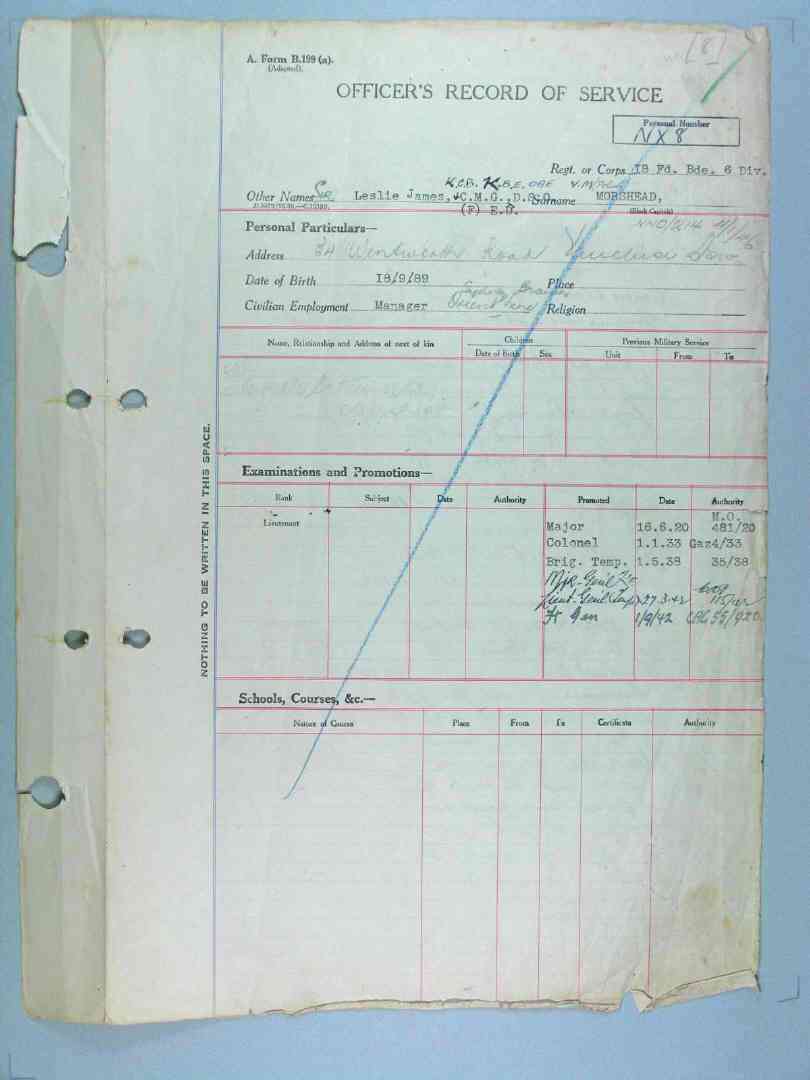
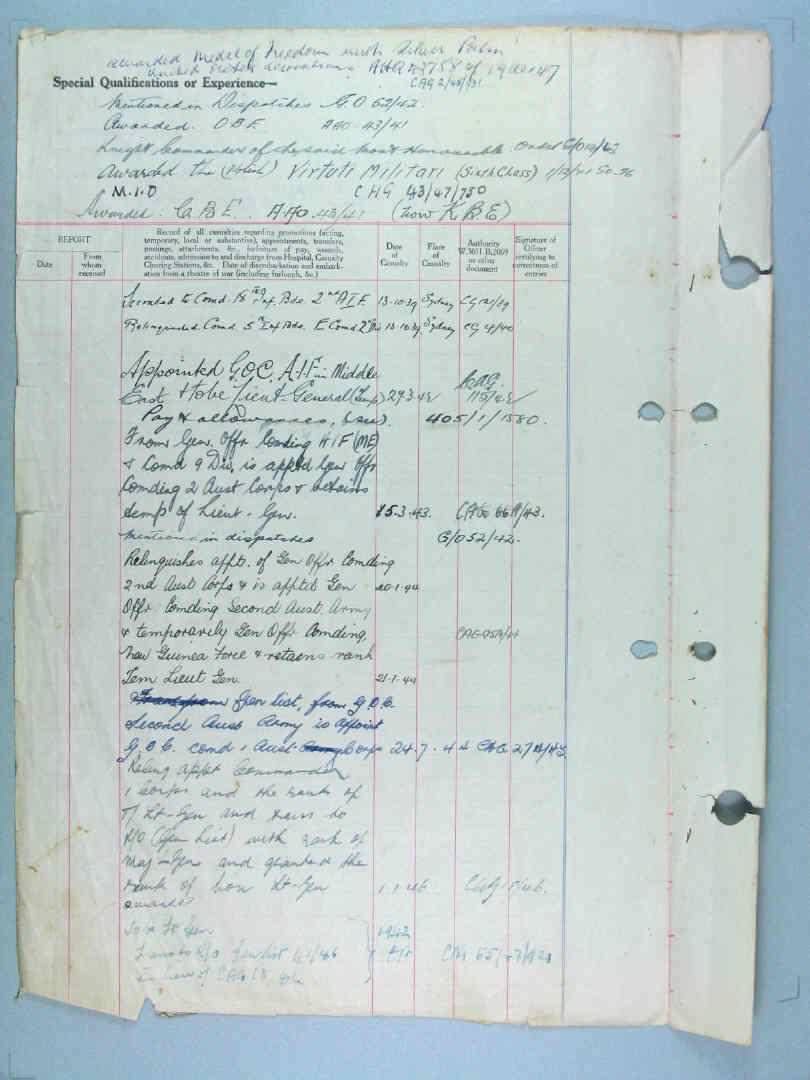
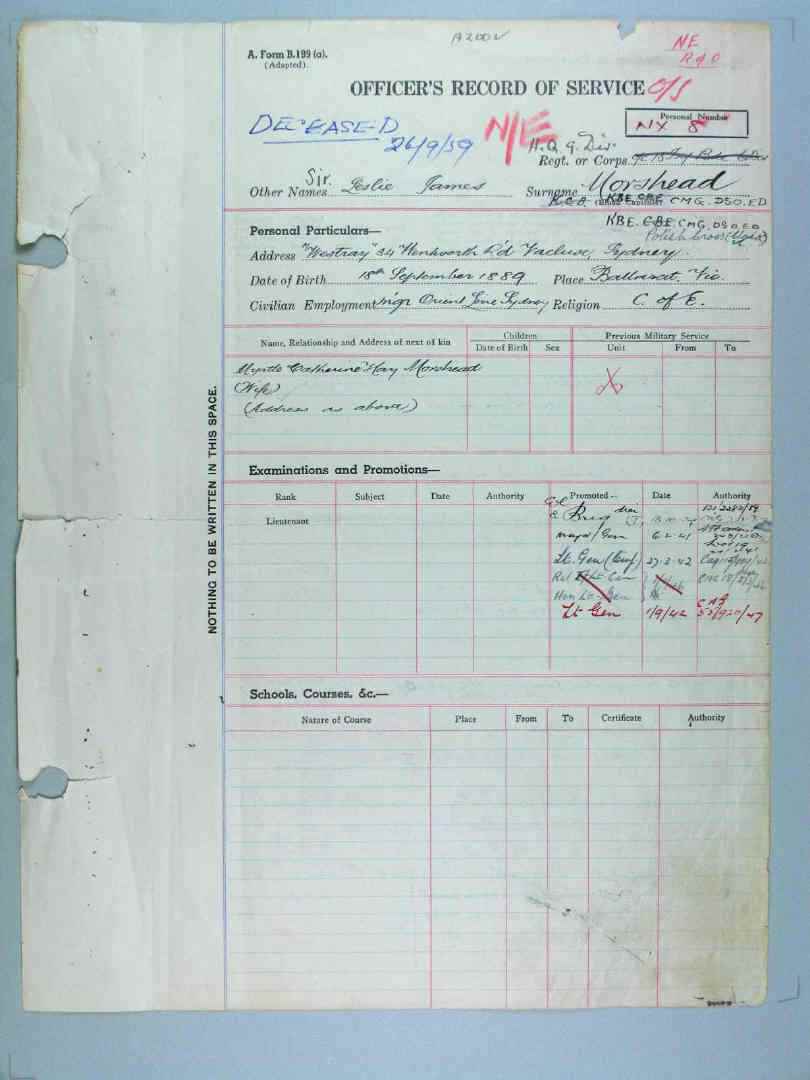
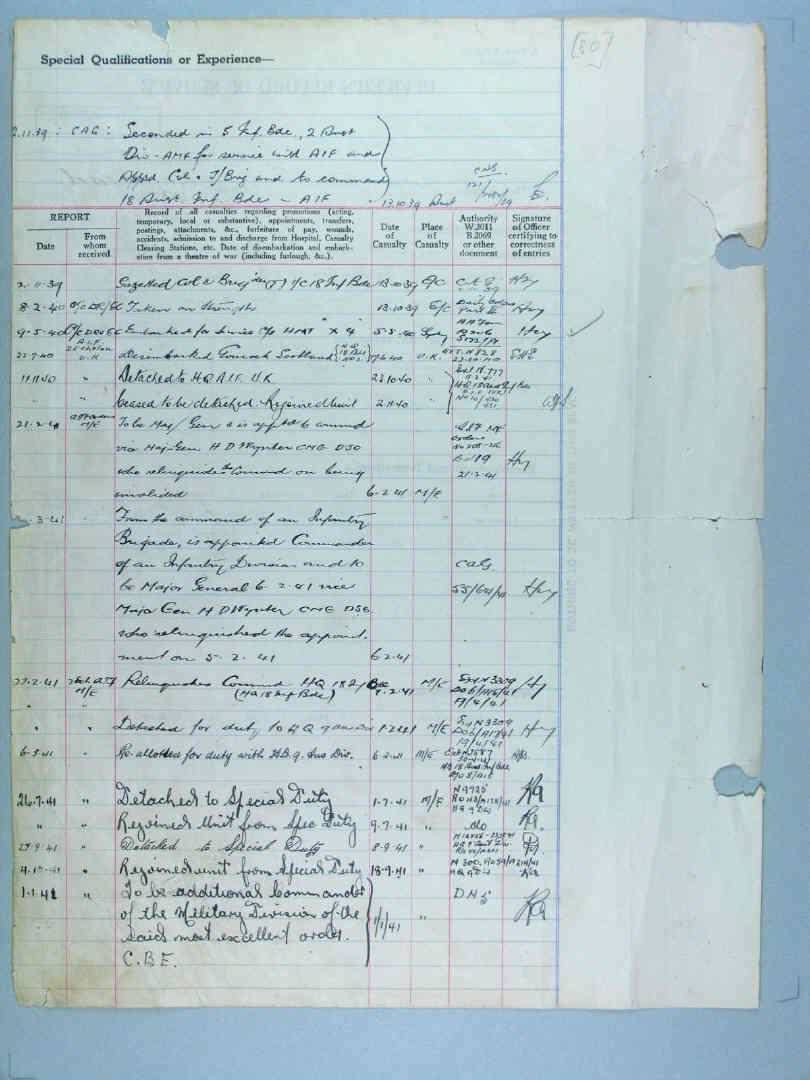
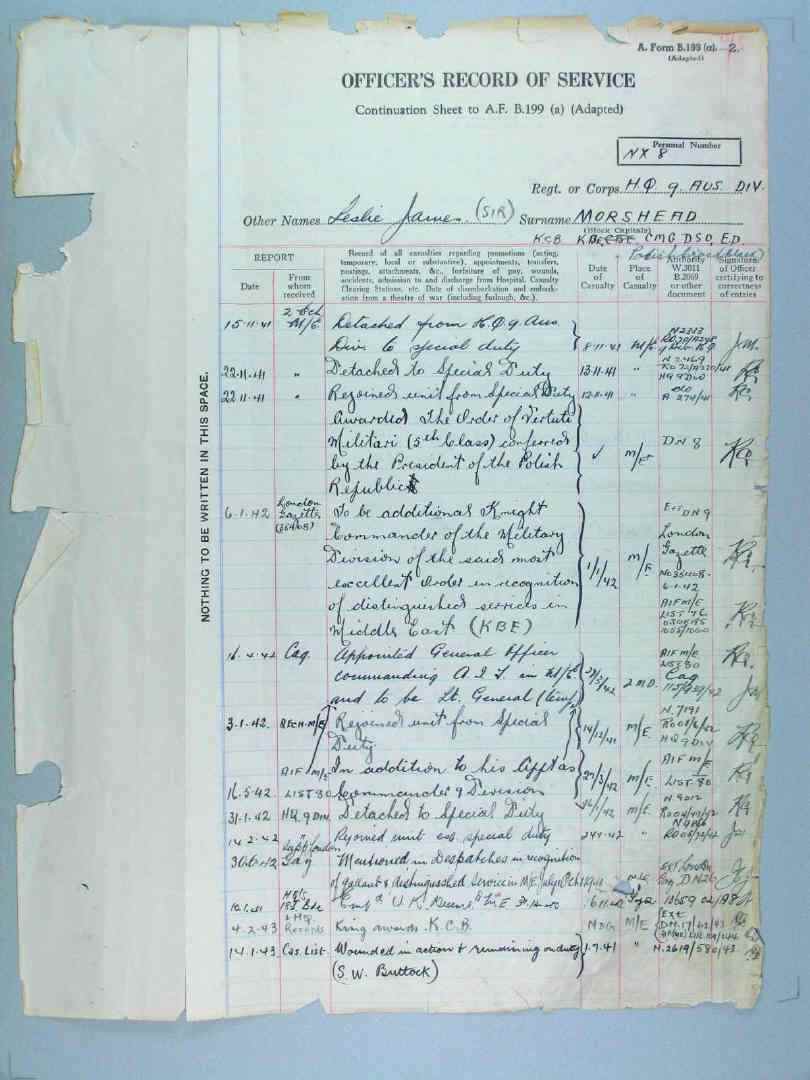
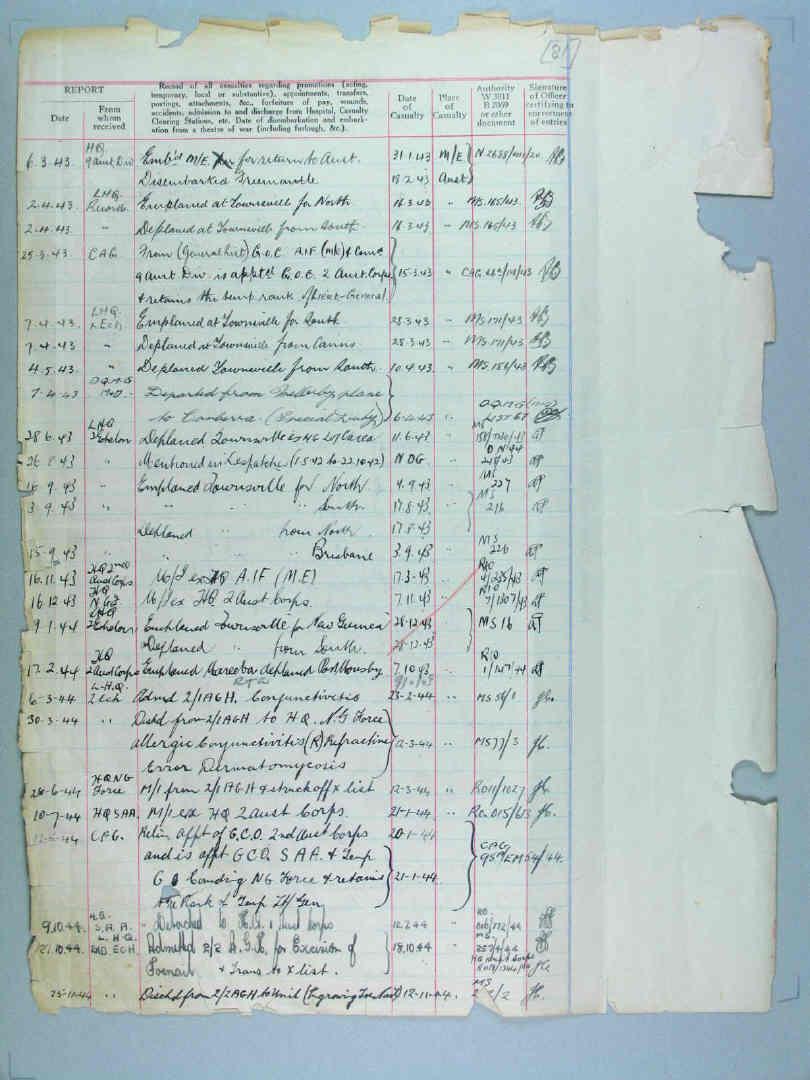
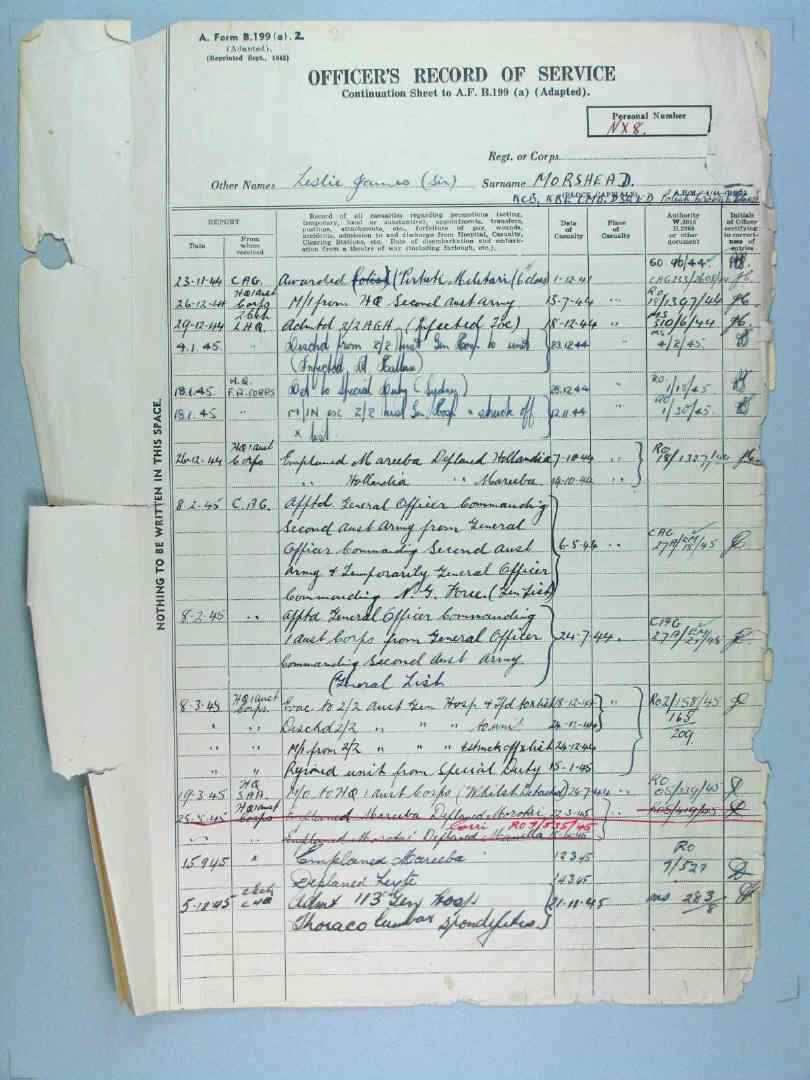

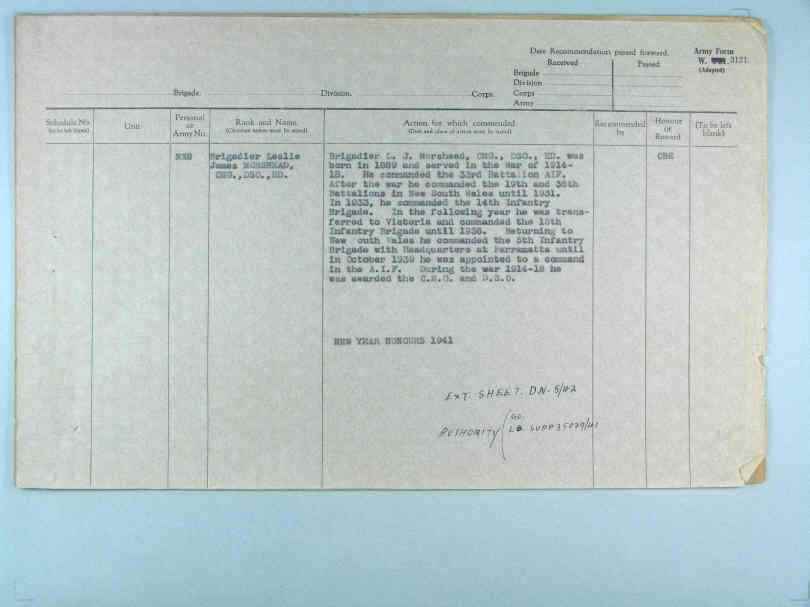
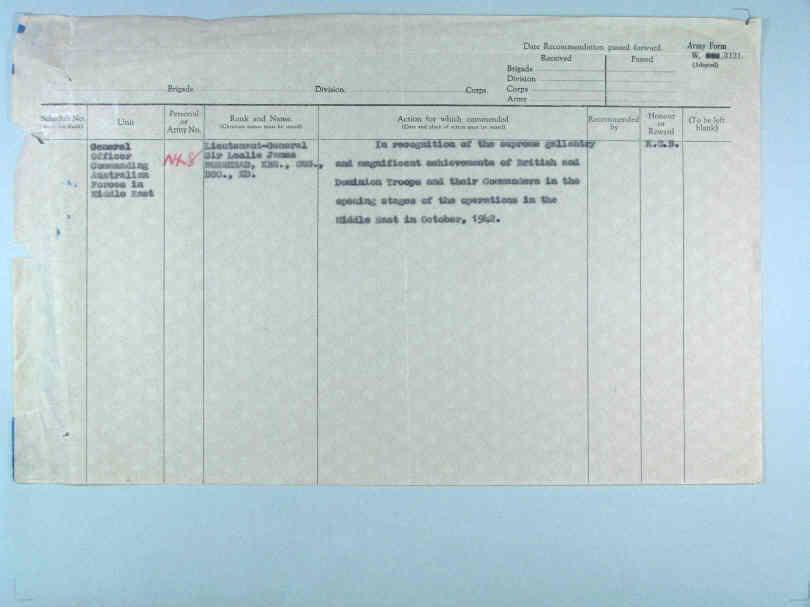
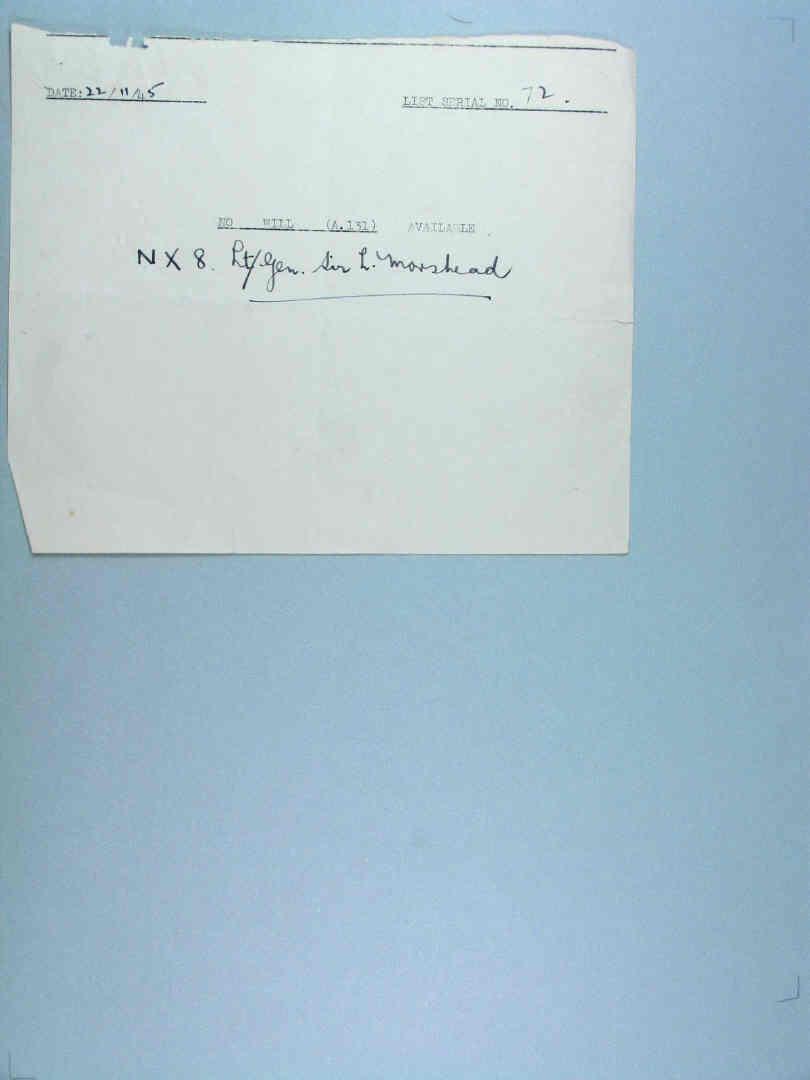


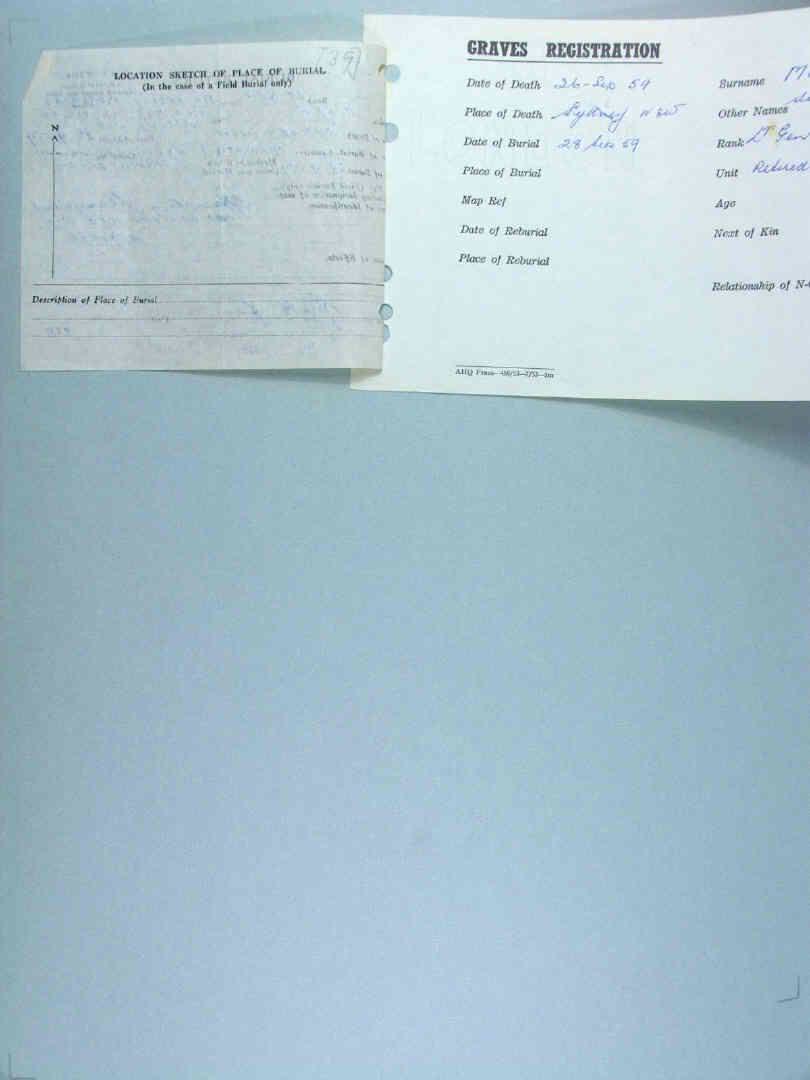
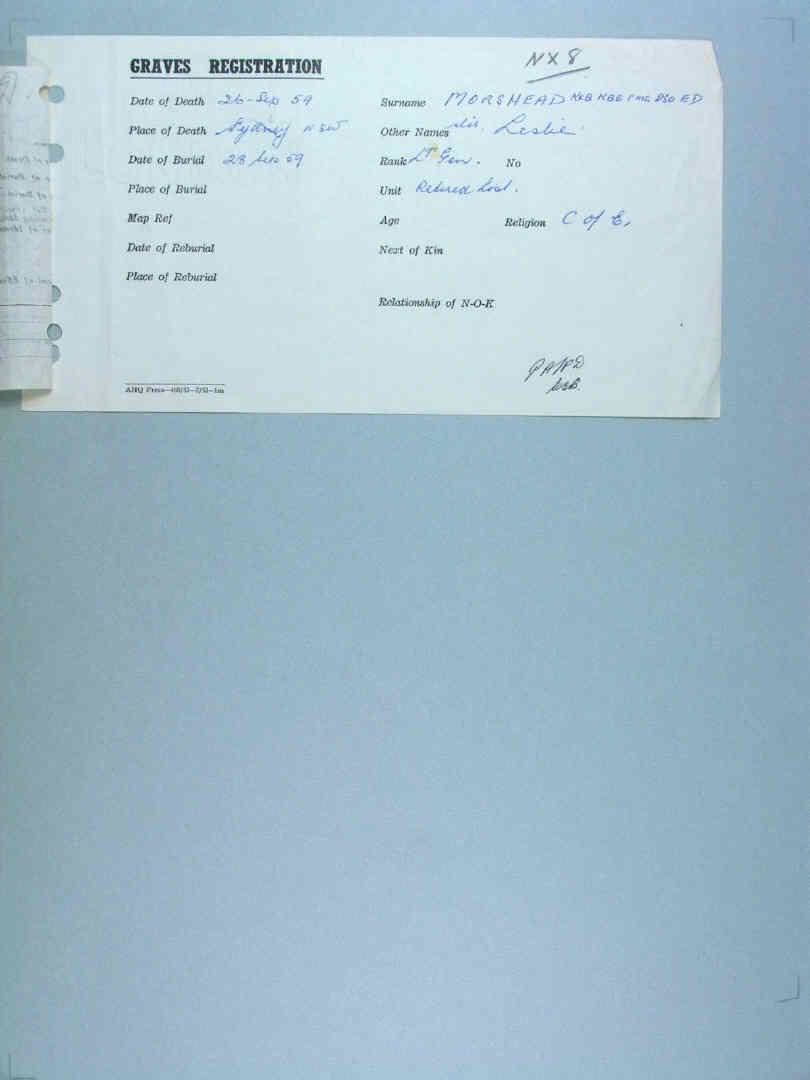
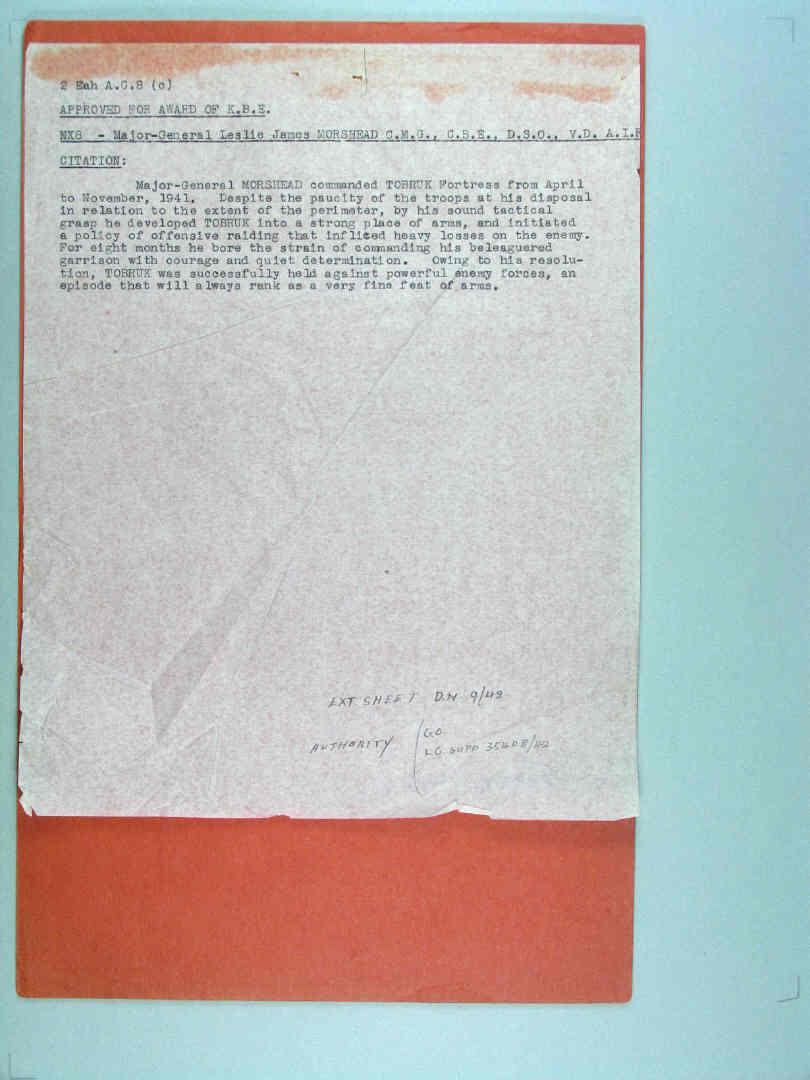
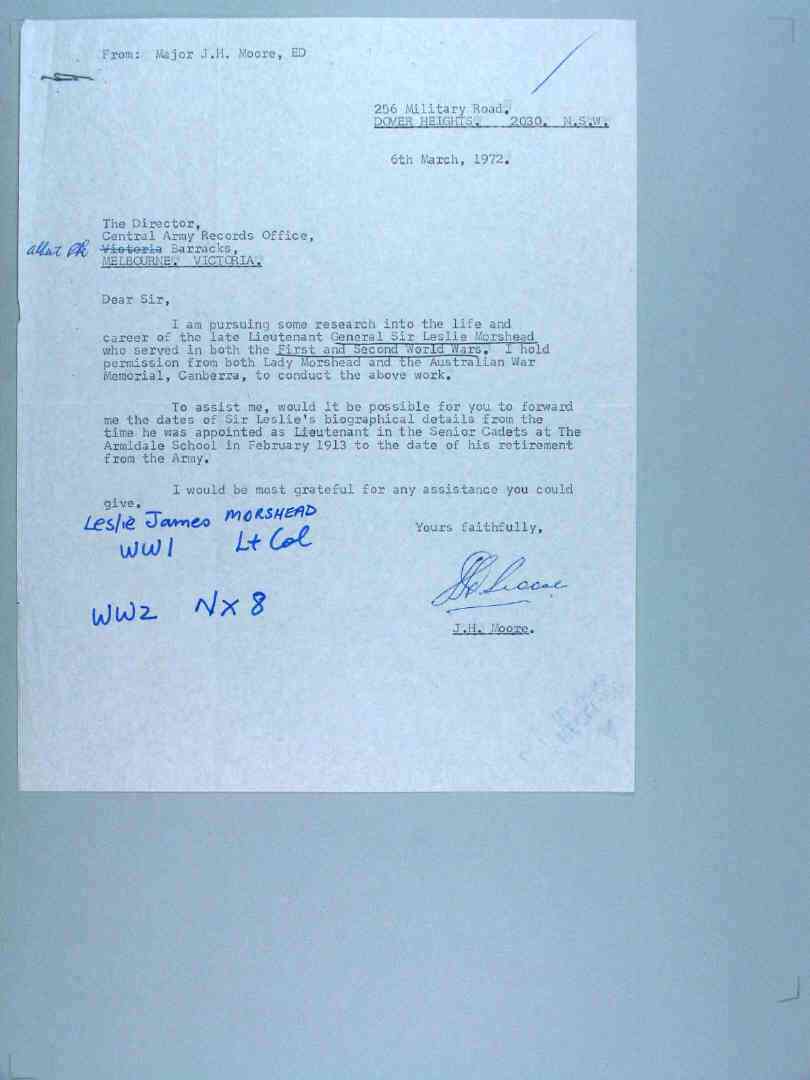
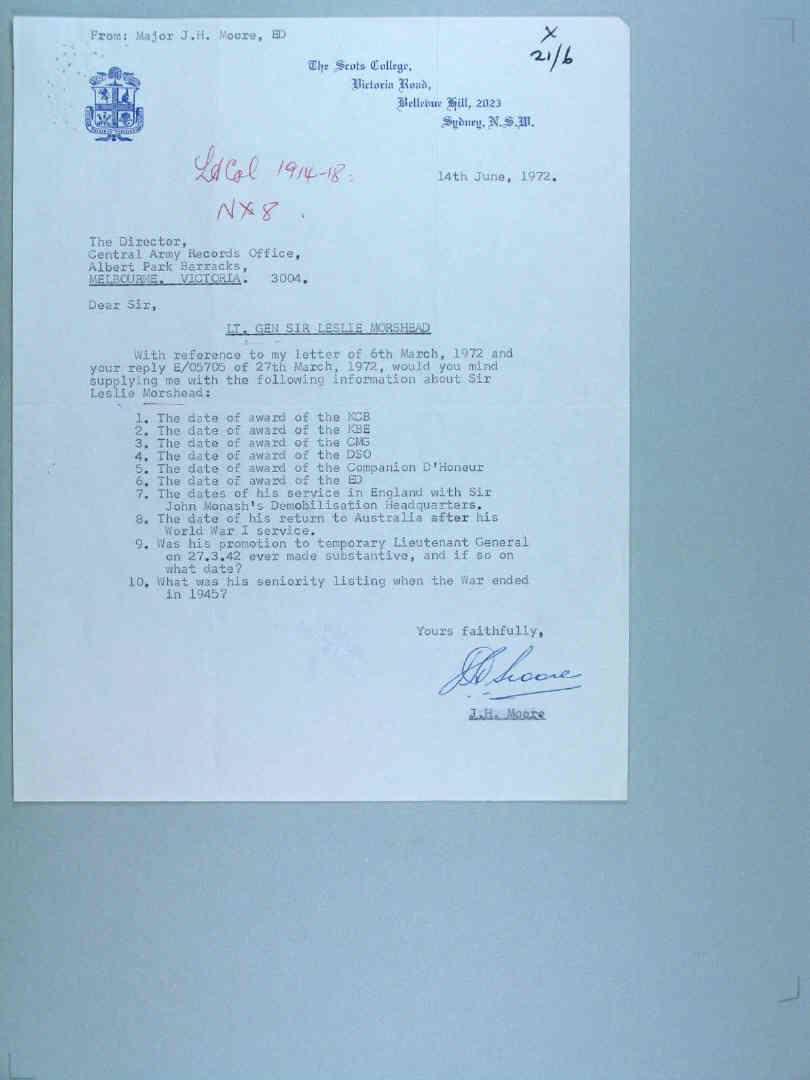
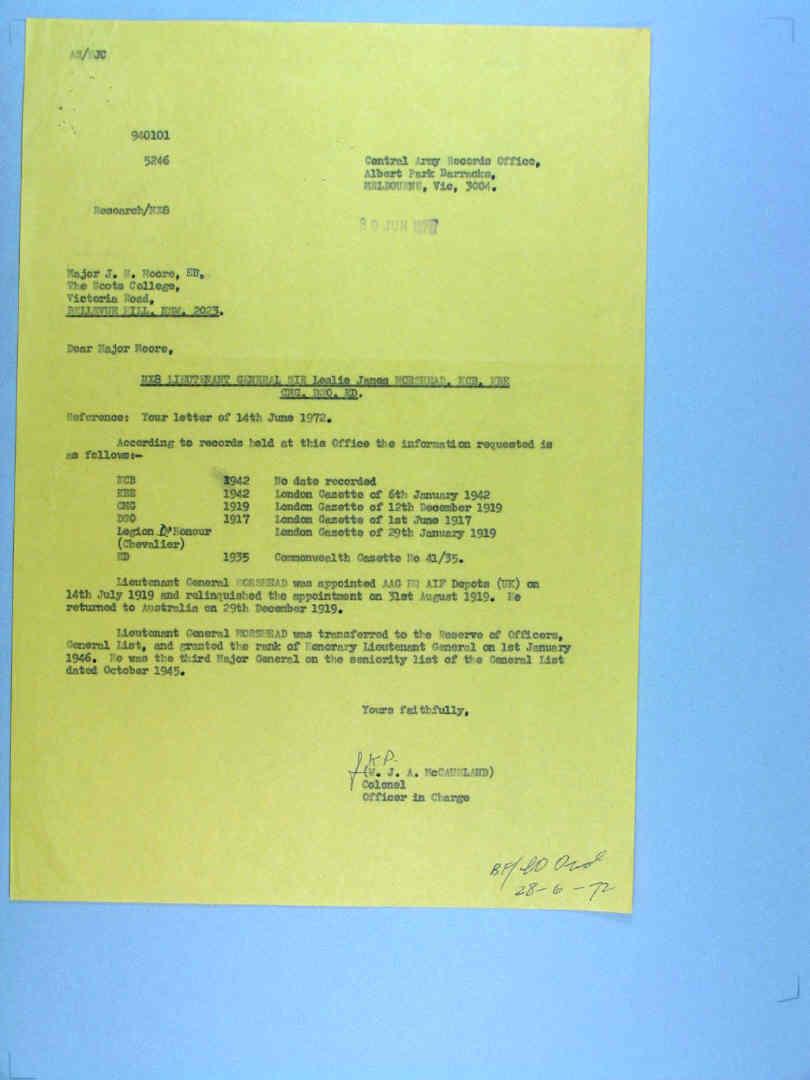
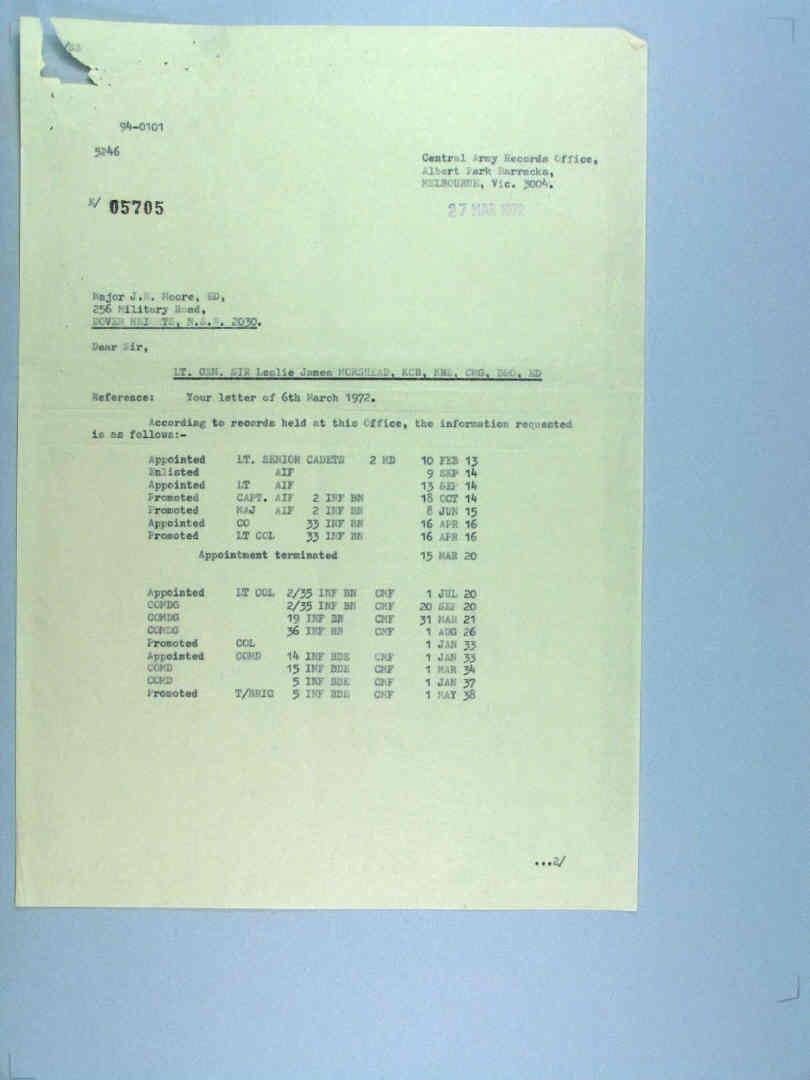
 © Commonwealth of Australia (National Archives of Australia)
© Commonwealth of Australia (National Archives of Australia)
Under Construction: 16/09/2007-10/06/2016.
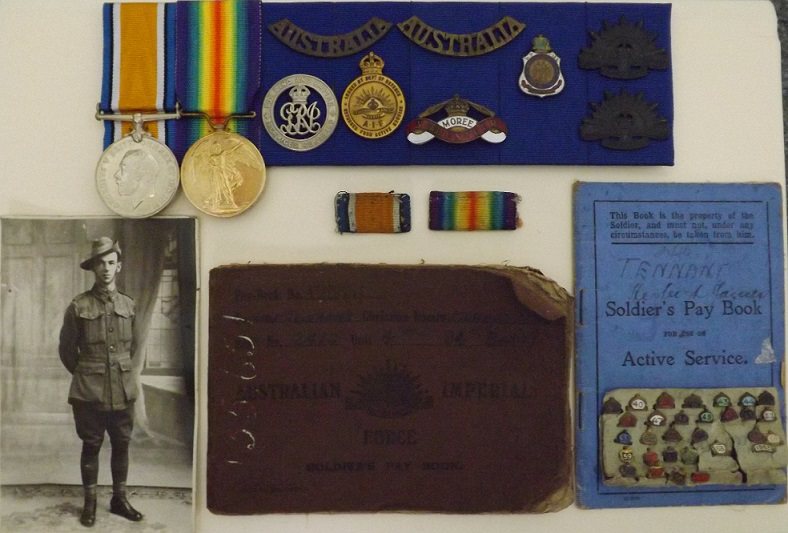
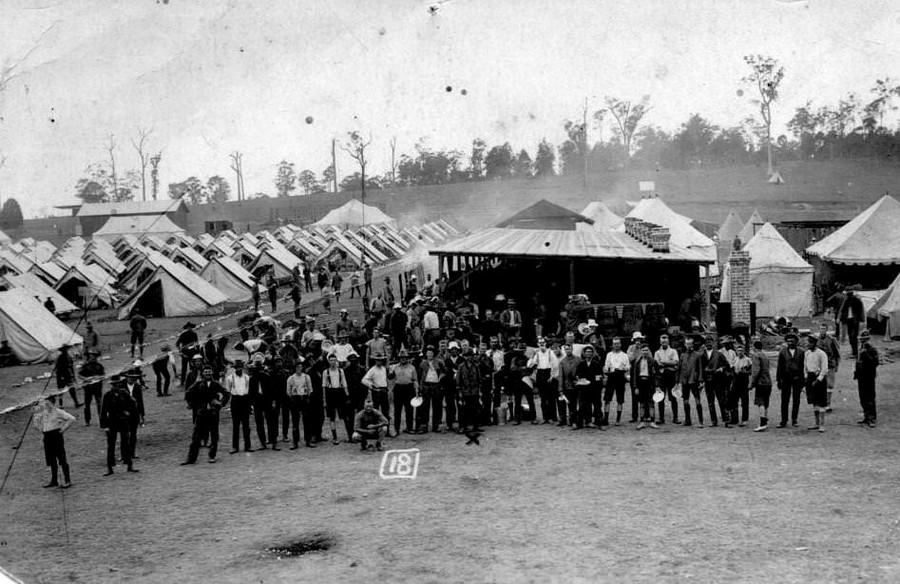
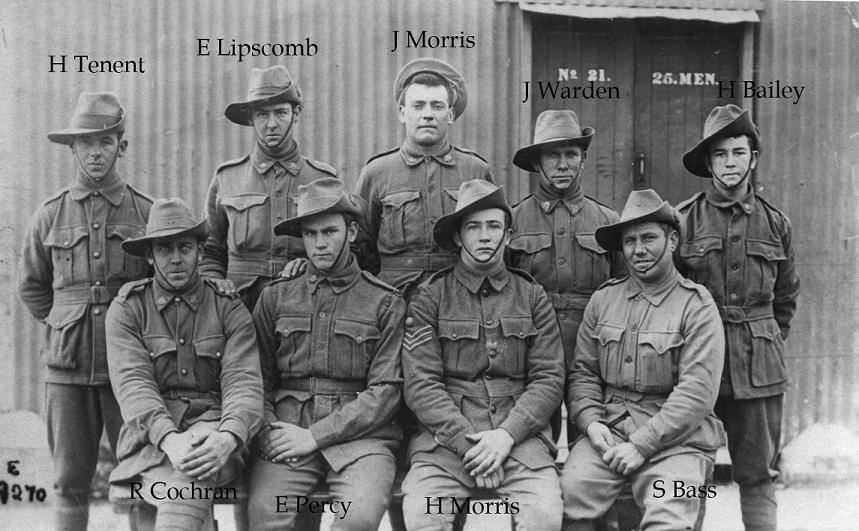
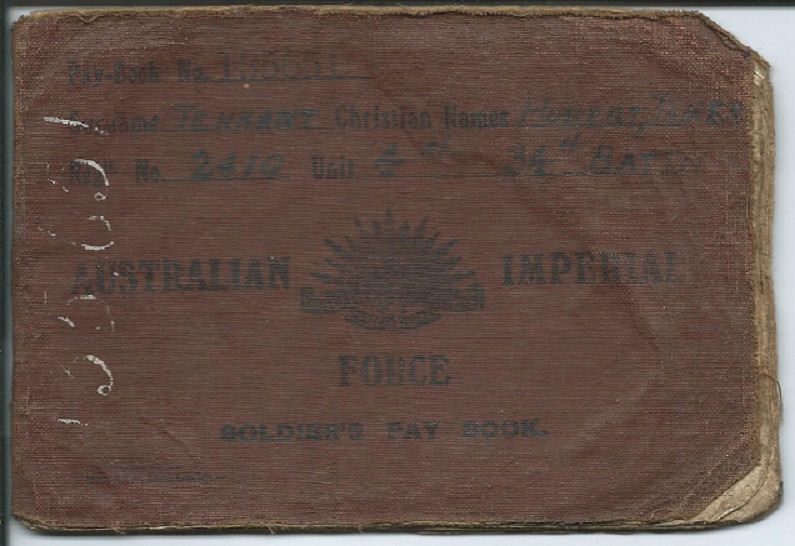

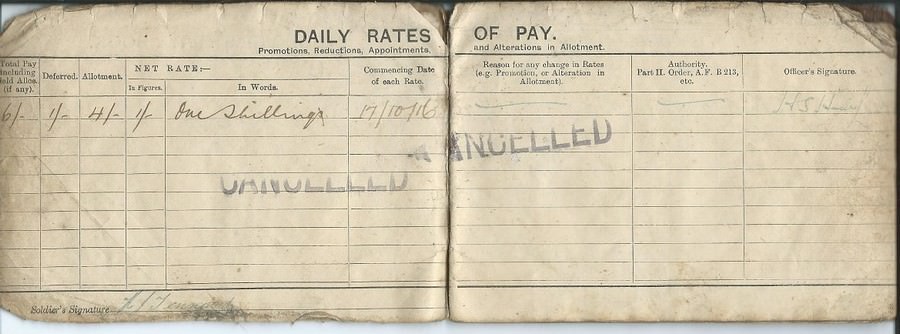
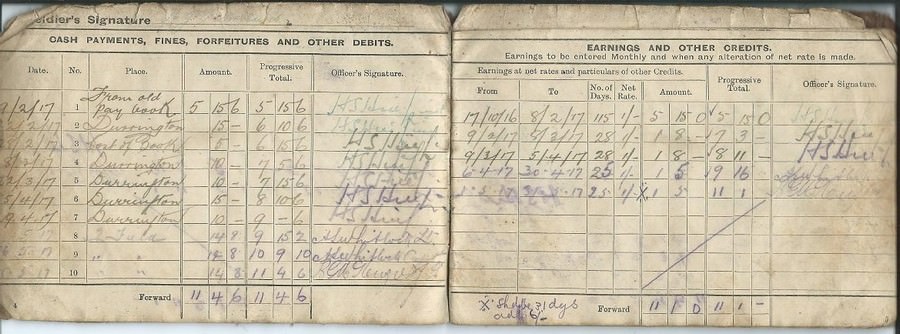
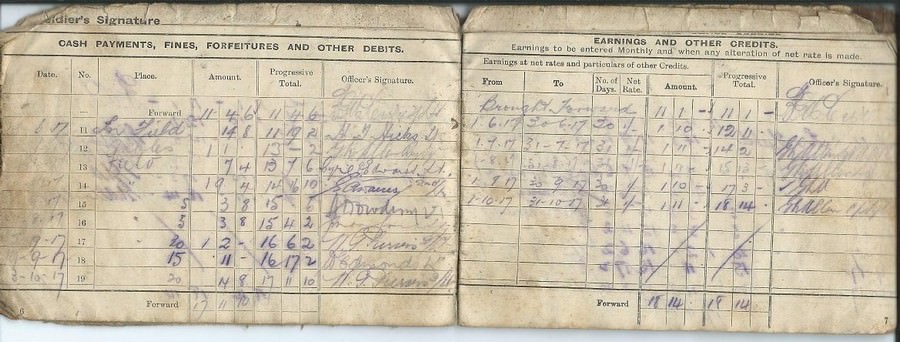
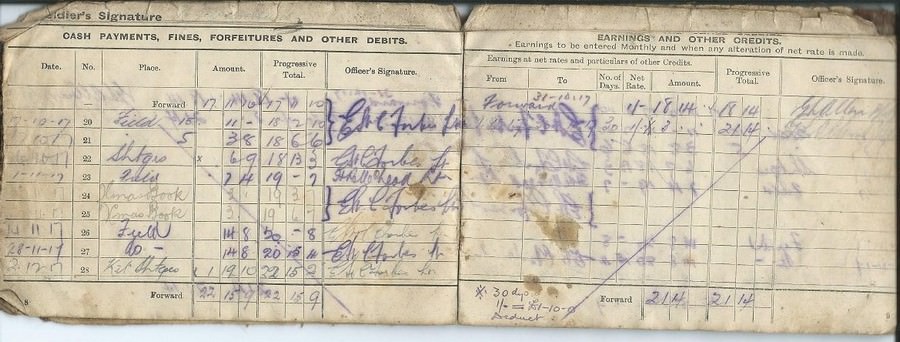
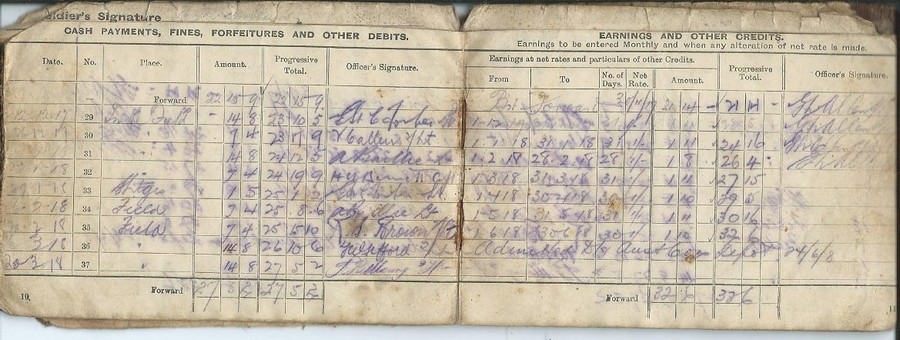
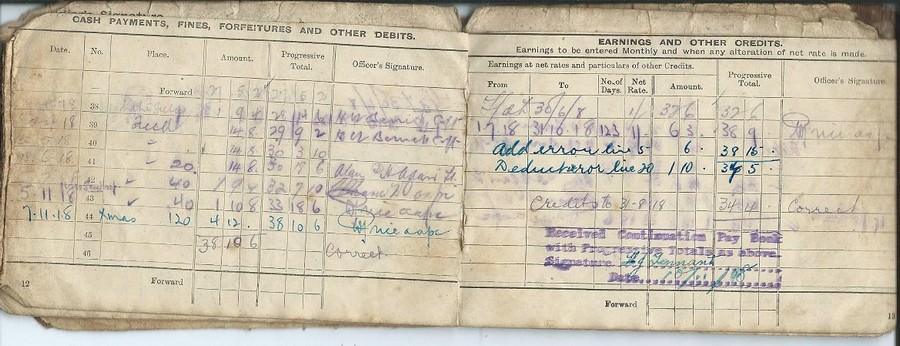
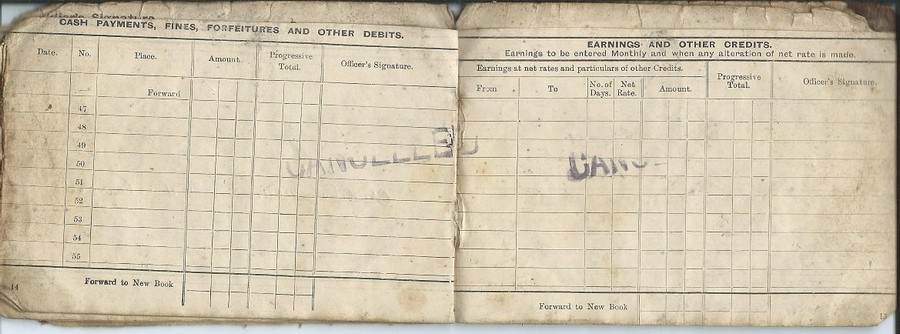
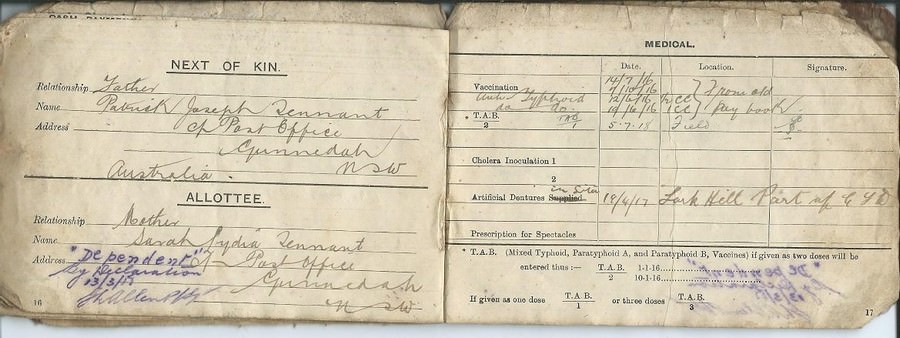
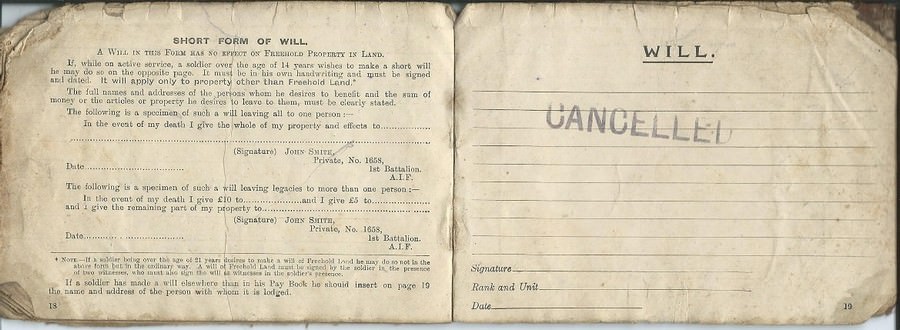

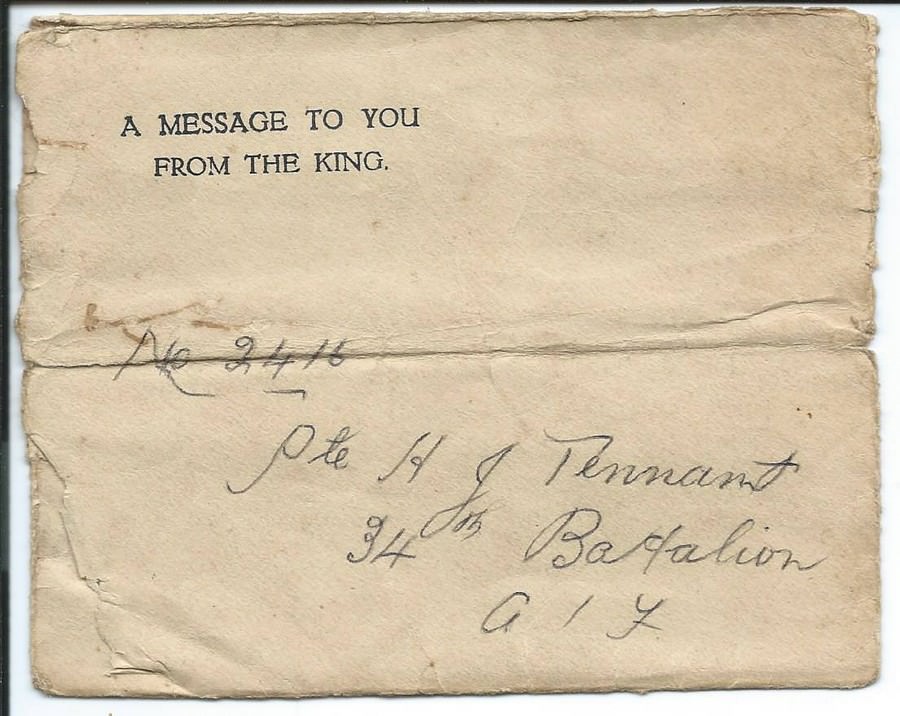

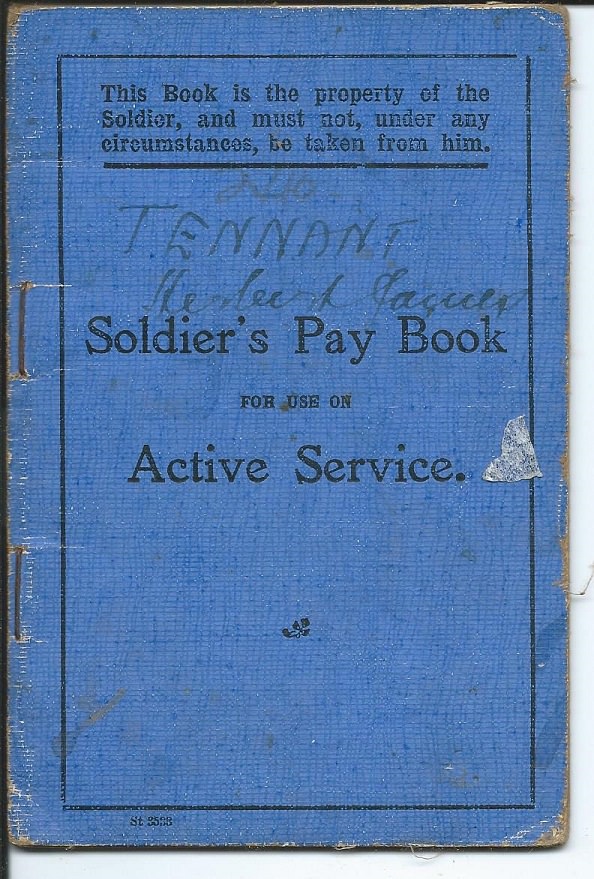


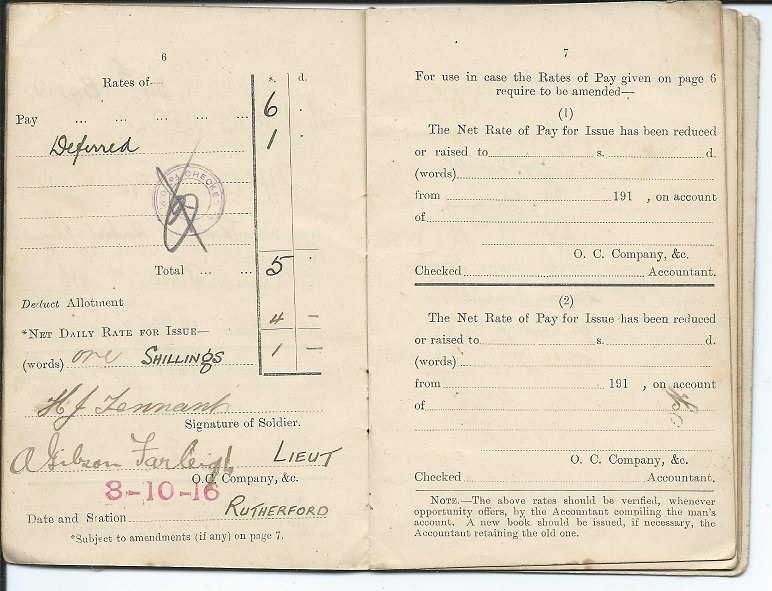
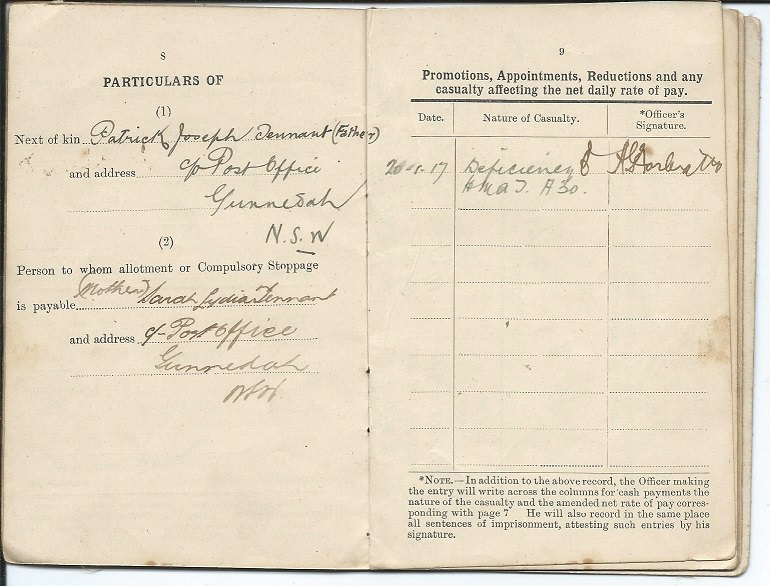
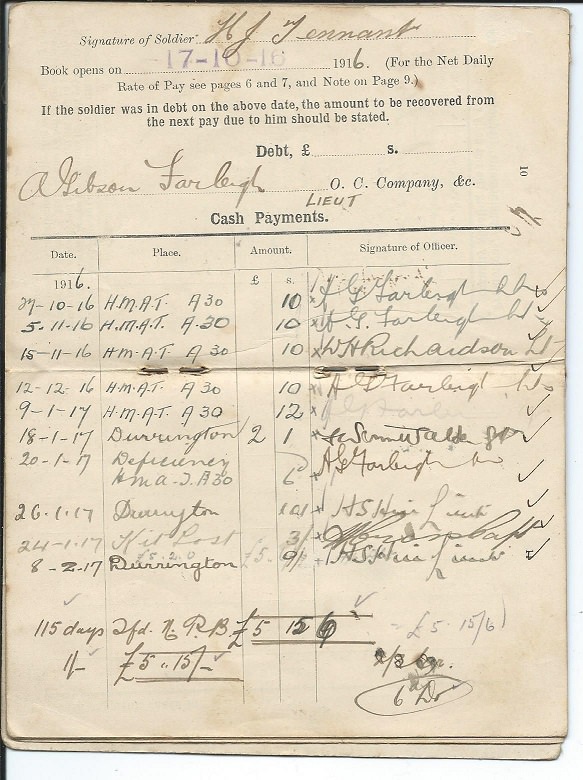
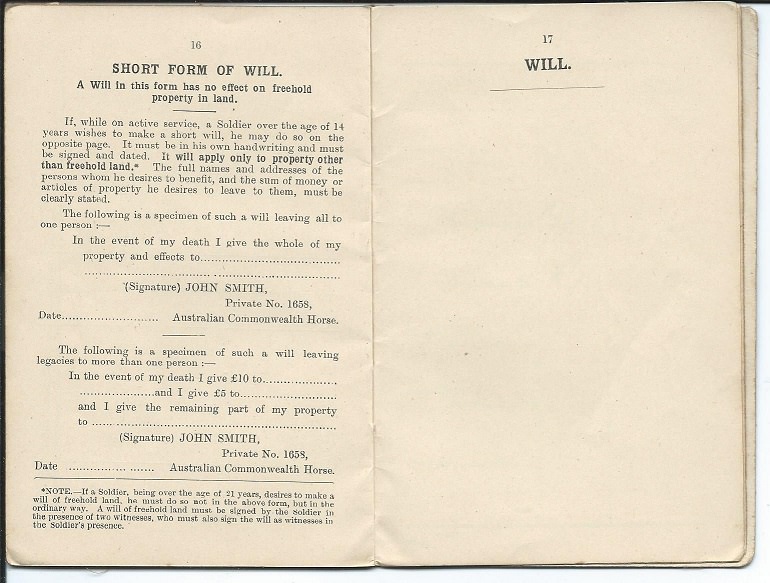
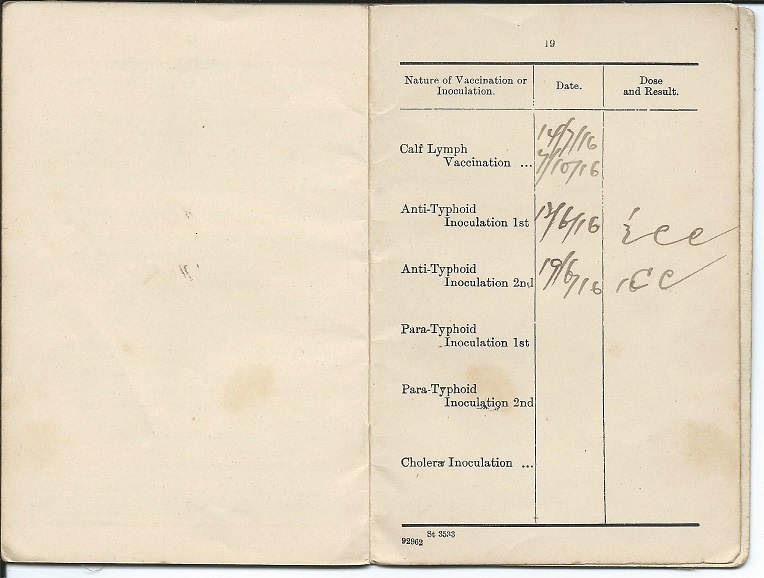
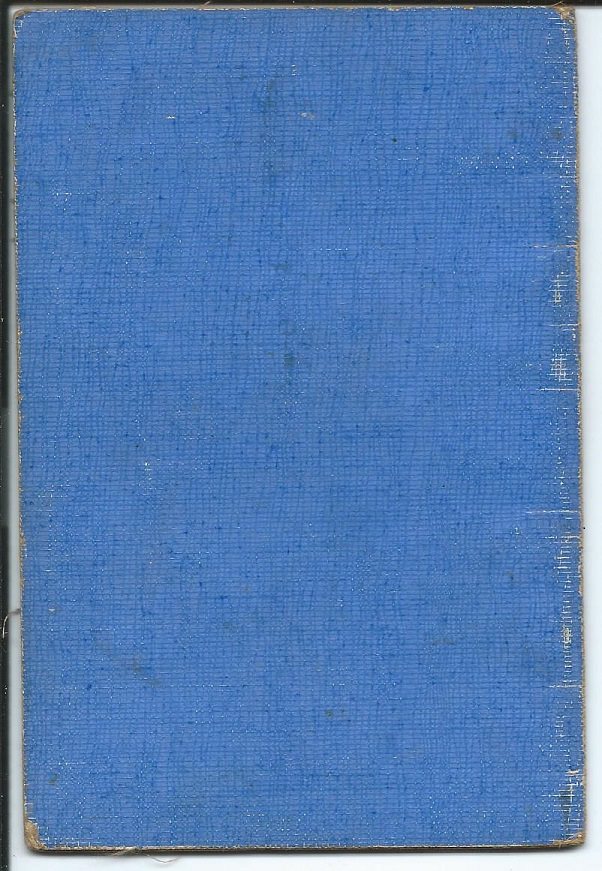
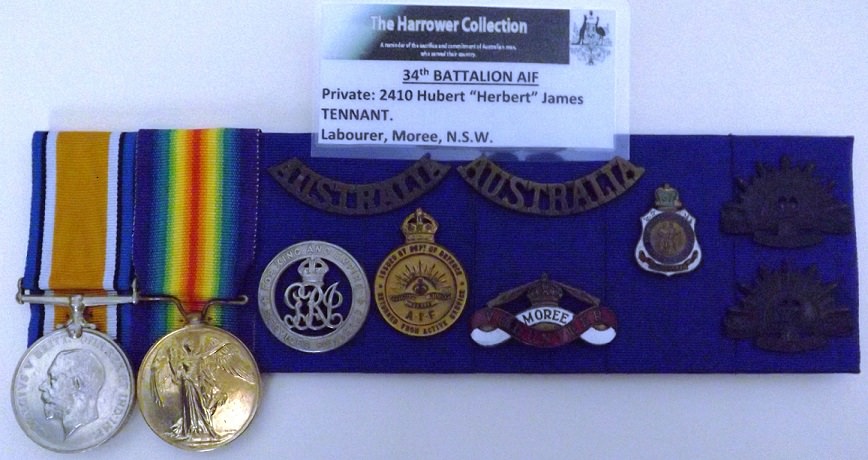 This entire collection was purchased from the lindsay Mears Collection in 2016 and is now in the Harrower Collection.
This entire collection was purchased from the lindsay Mears Collection in 2016 and is now in the Harrower Collection.
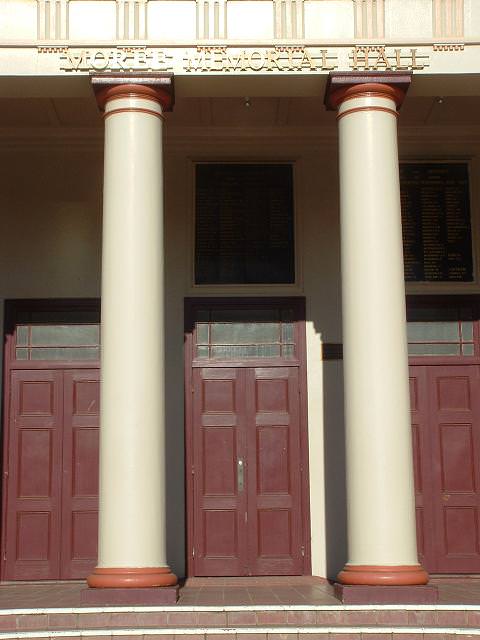
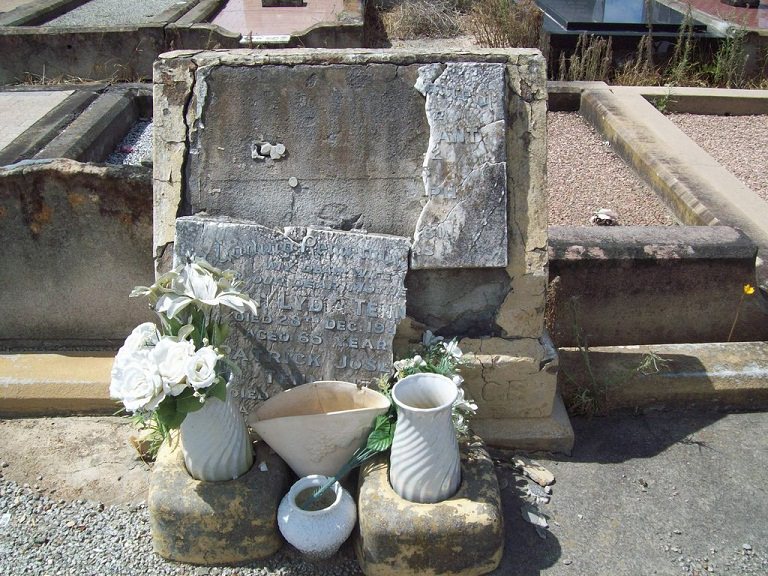 Patrick Joseph Tennant was buried at Sandgate Cemetery on the 13th September 1961, Catholic Section 63, Lot: 88 with his wife Sarah Lydia Tennant who was buried on the 29th December 1942.
Patrick Joseph Tennant was buried at Sandgate Cemetery on the 13th September 1961, Catholic Section 63, Lot: 88 with his wife Sarah Lydia Tennant who was buried on the 29th December 1942.
